
©SeanPavonePhoto/Getty Images
The scent of orange blossom, the swish of a flamenco dress, the glimpse of a white village perched atop a crag: memories of Andalucía linger.

Attractions
Must-see attractions.
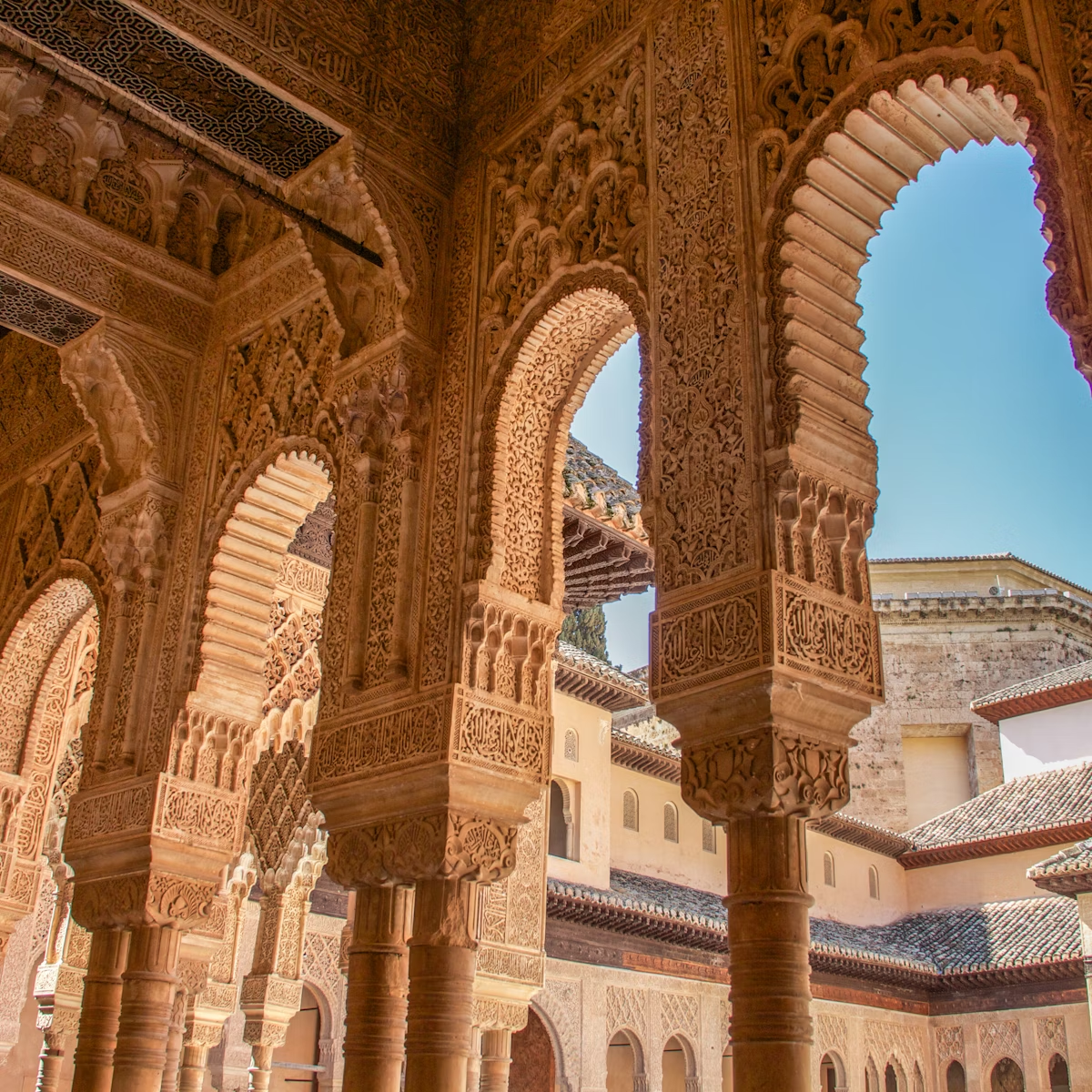
The Alhambra is Granada’s – and Europe’s – love letter to Moorish culture. Set against the brooding Sierra Nevada peaks, this fortified palace started…

Real Alcázar
Catedral & Barrio de Santa Cruz
A magnificent marriage of Christian and Mudéjar architecture, Seville’s royal palace complex is a breathtaking spectacle. The site, which was originally…

It’s impossible to overemphasise the beauty of Córdoba’s great mosque, with its remarkably serene (despite tourist crowds) and spacious interior. One of…

Catedral & Giralda
Seville’s showpiece church is awe-inspiring in its scale and majesty. The world’s largest Gothic cathedral, it was built between 1434 and 1517 over the…
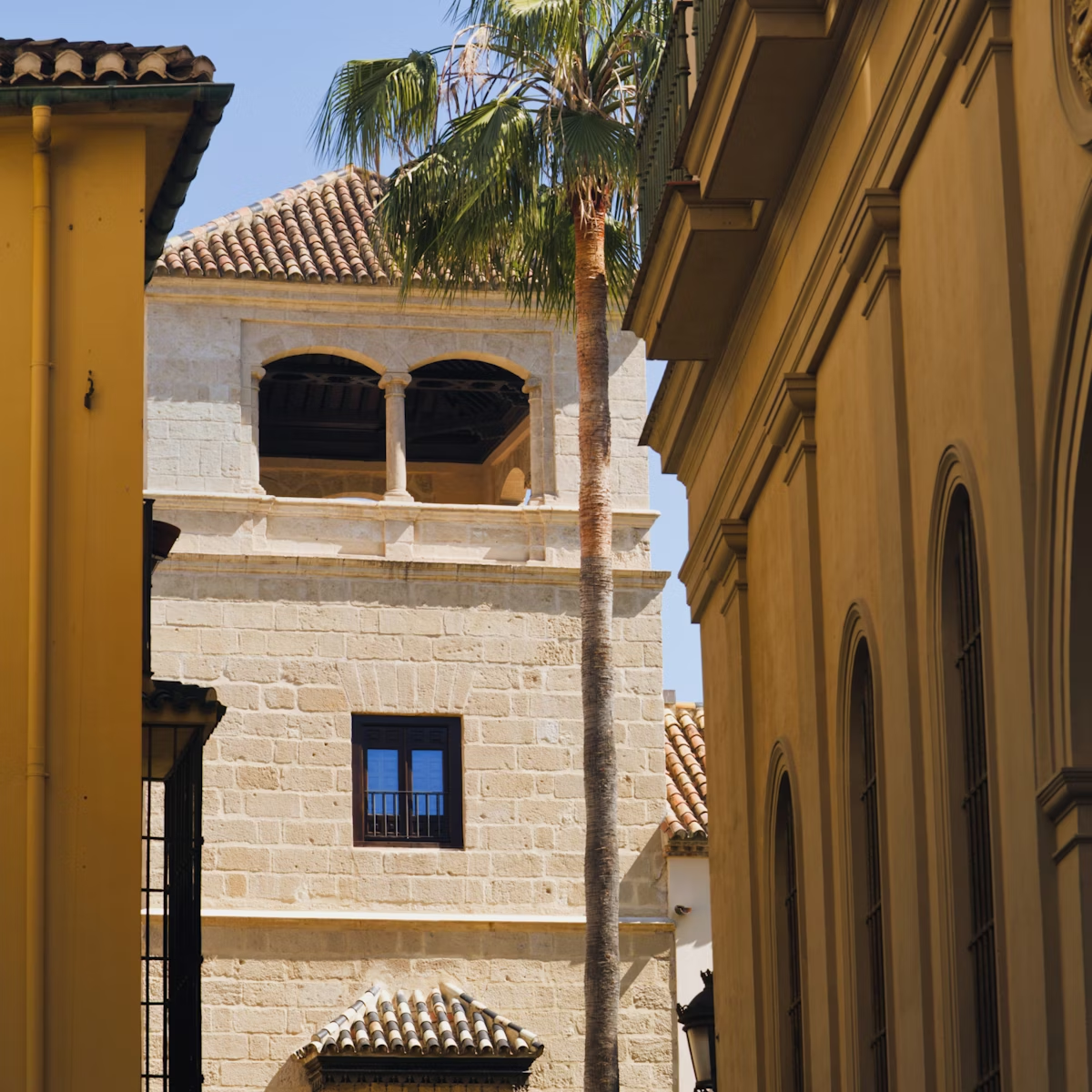
Museo Picasso Málaga
This unmissable museum in the city of Picasso’s birth provides a solid overview of the great master and his work, although, surprisingly, it only came to…

Cueva de Nerja
It’s hard to imagine the surreal world that lies beneath the mountain foothills 4km east of Nerja, and it’s even harder to believe that these vast caverns…

Punta Paloma
One of Andalucía's most fabulous beaches, Punta Paloma, 10km northwest of Tarifa, is famous for its huge blond sand dune. At its far western end, you can…
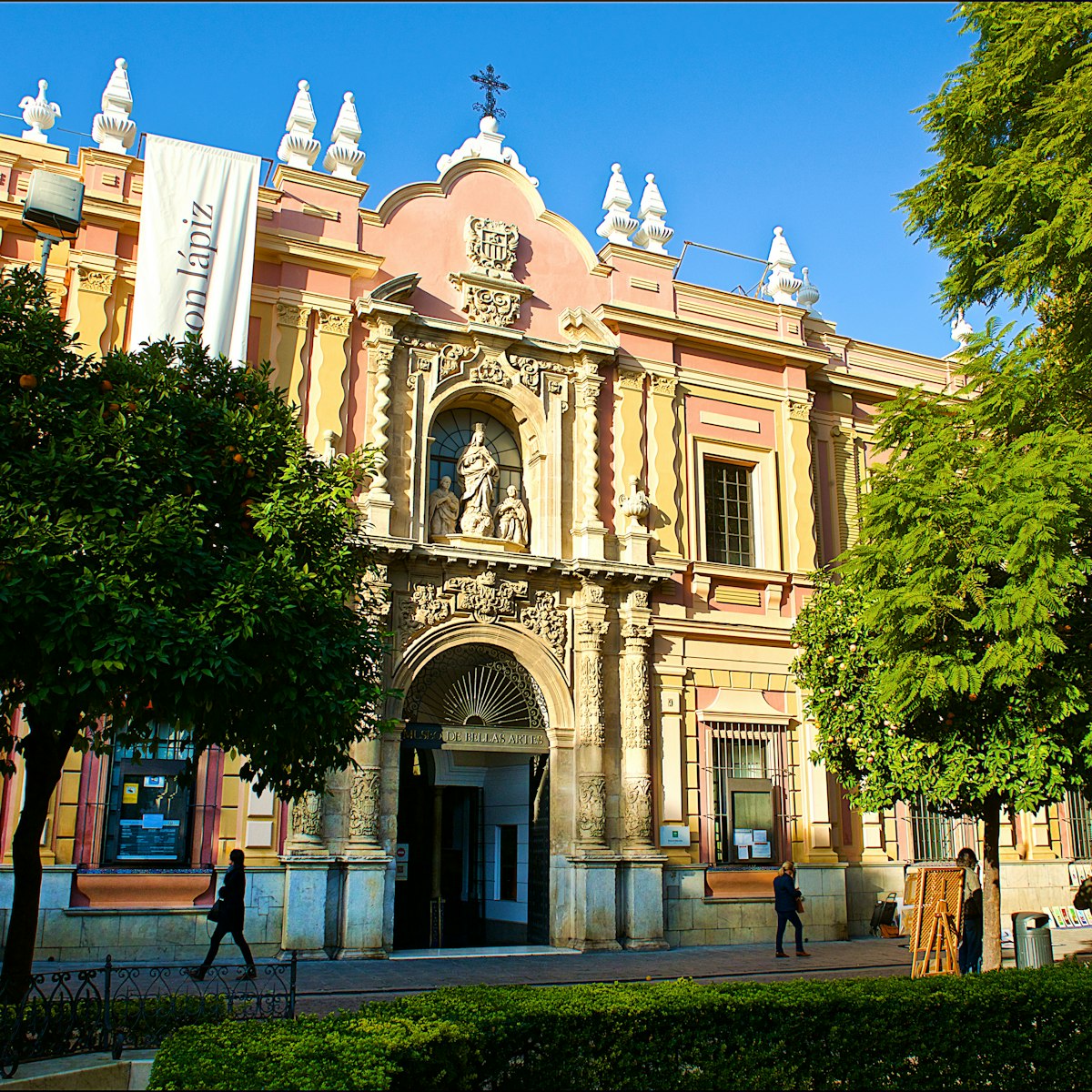
Museo de Bellas Artes
El Centro & El Arenal
Housed in a grand Mannerist palace, the former Convento de la Merced, the Museo de Bellas Artes is one of Spain's premier art museums. Its collection of…
Plan with a local
Experience the real Spain
Let a local expert craft your dream trip.
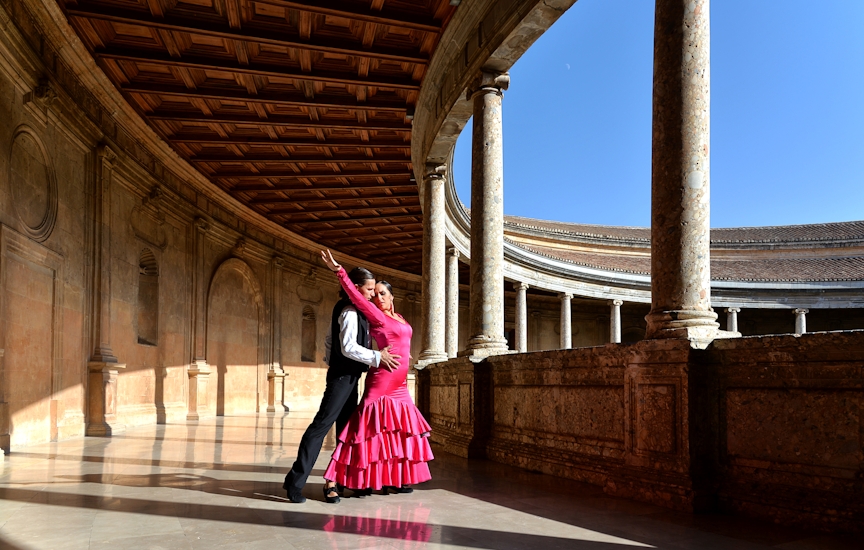
Latest stories from Andalucía
Filter by interest:
- All Interests
- Adventure Travel
- Art & Culture
- Beaches, Coasts & Islands
- Food & Drink

Jul 26, 2022 • 10 min read
Luxury in Seville, a room with a view of the Alhambra in Granada, rustic charm in the countryside and more: these hotels are among Andalucía’s best.

Jun 29, 2021 • 3 min read

Sep 27, 2019 • 6 min read

Sep 23, 2019 • 8 min read

Sep 18, 2019 • 6 min read

Oct 30, 2018 • 5 min read

Oct 29, 2018 • 5 min read

Oct 24, 2018 • 6 min read

Mar 9, 2018 • 2 min read

Dec 22, 2016 • 4 min read
Andalucía and beyond


- http://www.facebook.com/viveandalucia
- http://www.twitter.com/viveandalucia
- http://instagram.com/viveandalucia
- http://www.youtube.com/user/viveandalucia
- Places to visit
- Explore Andalusia
- Plan the trip
- Professional
Our capitals
Much more than cities
Province of Almeria
- Almería y su Entorno
- Alpujarra Almeriense/Río Nacimiento
- Cabo de Gata y Níjar
- Costa de Almería
- Sierra de los Filabres
- Sierra de María/Los Velez
- Valle de Almanzora
Province of Cadiz
- Costa de la Luz (Cádiz)
- Campo de Gibraltar/Los Alcornocales
- Jerez de la Frontera
- Pueblos Blancos/Sierra de Grazalema
Province of Cordoba
- Córdoba y su Entorno
- Córdoba y la Zona del Guadalquivir
- La Campiña (Córdoba)
- Alto Guadiato
- La Subbética
- Los Pedroches
Province of Granada
- Altiplano de Granada
- Costa Tropical y Valle de Lecrín
- Hoya de Guadix y Marquesado
- La Vega y la Campana
- El Poniente Granadino
- Granada y Sierra Nevada
- La Alpujarra
Province of Huelva
- Andévalo y Parque Minero
- Doñana y Entorno
- Sierra de Aracena y Picos de Aroche
- Costa de la Luz (Huelva)
- Huelva y Lugares Colombinos
- Niebla y el Condado
Province of Jaen
- Jaén y Entorno
- Sierra Morena/Sierras de Andújar y Despeñaperros
- Sierra Mágina
Sierras de Cazorla, Segura y las Villas
- Úbeda/Baeza
- Sierra Sur y Campiña de Jaén
Province of Malaga
- Axarquía/Costa del Sol Oriental
- Antequera y Entorno
- Costa del Sol Occidental
- Málaga y Entorno
- Serranía de Ronda/Valle del Genal
- Valle del Guadalhorce
Province of Seville
- El Aljarafe
- La Marisma/Bajo Guadalquivir
- La Vega del Guadalquivir
- Sevilla y Entorno
- Sierra Norte
Main attractions
Mezquita de Córdoba
Alcazaba de Málaga
Jaén Cathedral
Cádiz Cathedral
Muelle de las Carabelas
Alcazaba de Almería
Alhambra y Generalife
Andalusia's Natural Treasures
Cerro del Hierro
Duna de Bolonia
Caminito del Rey
Georuta Desierto de Gorafe
La Geoda de Pulpí
Gruta de las Maravillas
Tinto River
Los Alcornocales
Sierra Nevada
Sierras Subbéticas
Torcal de Antequera
Despeñaperros
- Costa del Sol
- Costa de la Luz- Cadiz
- Costa de la Luz-Huelva
- Costa Tropical
- Blue Flag beaches
- Gastronomic Activities
- Michelin Star
Cultural Tourism
- Adapted Golf
- Pitch & Putt
Nature Areas
- Leisure Parks
- Health and Beauty
Places of leisure
Offers and Experiences
Astrotourism - Star Tourism
Tourist Routes
Andalucía a caballo
Meetings and congresses
- Spanish language schools
Cyclotourism
Andalusia made to measure
With the family
Digital and energetic nomad
Andalusia all year round
Summer in Andalusia
Autumn in Andalusia
Christmas in Andalusia
Andalusia in Spring
How to get around in Andalusia
Come by air, by boat or by land
Transport companies in Andalusia
- Practical information
Where to sleep?
Hotel-Apartment
Housing for tourism purposes
Rural House
Country House Lodge
Rural Resort
Campsites and overnight parking
Youth Hostel
Boarding House
Where to eat ?
- Restaurants
Gourmet markets
Things to do
Ideas for your trip
Publications and Brochures
City brochures
Coast leaflets
Area brochure
Specialised brochures
Folletos genéricos
Provincial leaflets
Specialised books
What is NAC?
How does NAC work?
How to create offers in NAC ?
SmartData Andalusia
¿Qué es smartdata?
Fuentes smartdata
Solicitar usuario
Acceso smartdata
Material Audiovisual
Condiciones de uso de la galeria multimedia
Colecciones
- Our capitals . Our capitals . Our capitals . Our capitals . Almería +info Almería +info Almería +info Almería +info Cádiz +info Cádiz +info Cádiz +info Cádiz +info Córdoba +info Córdoba +info Córdoba +info Córdoba +info Granada +info Granada +info Granada +info Granada +info Huelva +info Huelva +info Huelva +info Huelva +info Jaén +info Jaén +info Jaén +info Jaén +info Málaga +info Málaga +info Málaga +info Málaga +info Sevilla +info Sevilla +info Sevilla +info Sevilla +info
- Almería y su Entorno Almería y su Entorno Almería y su Entorno Almería y su Entorno
- Alpujarra Almeriense/Río Nacimiento Alpujarra Almeriense/Río Nacimiento Alpujarra Almeriense/Río Nacimiento Alpujarra Almeriense/Río Nacimiento
- Cabo de Gata y Níjar Cabo de Gata y Níjar Cabo de Gata y Níjar Cabo de Gata y Níjar
- Costa de Almería Costa de Almería Costa de Almería Costa de Almería
- Sierra de los Filabres Sierra de los Filabres Sierra de los Filabres Sierra de los Filabres
- Sierra de María/Los Velez Sierra de María/Los Velez Sierra de María/Los Velez Sierra de María/Los Velez
- Valle de Almanzora Valle de Almanzora Valle de Almanzora Valle de Almanzora
- Costa de la Luz (Cádiz) Costa de la Luz (Cádiz) Costa de la Luz (Cádiz) Costa de la Luz (Cádiz)
- Campo de Gibraltar/Los Alcornocales Campo de Gibraltar/Los Alcornocales Campo de Gibraltar/Los Alcornocales Campo de Gibraltar/Los Alcornocales
- Cádiz Cádiz Cádiz Cádiz
- Jerez de la Frontera Jerez de la Frontera Jerez de la Frontera Jerez de la Frontera
- Pueblos Blancos/Sierra de Grazalema Pueblos Blancos/Sierra de Grazalema Pueblos Blancos/Sierra de Grazalema Pueblos Blancos/Sierra de Grazalema
- Córdoba y su Entorno Córdoba y su Entorno Córdoba y su Entorno Córdoba y su Entorno
- Córdoba y la Zona del Guadalquivir Córdoba y la Zona del Guadalquivir Córdoba y la Zona del Guadalquivir Córdoba y la Zona del Guadalquivir
- La Campiña (Córdoba) La Campiña (Córdoba) La Campiña (Córdoba) La Campiña (Córdoba)
- Alto Guadiato Alto Guadiato Alto Guadiato Alto Guadiato
- La Subbética La Subbética La Subbética La Subbética
- Los Pedroches Los Pedroches Los Pedroches Los Pedroches
- Altiplano de Granada Altiplano de Granada Altiplano de Granada Altiplano de Granada
- Costa Tropical y Valle de Lecrín Costa Tropical y Valle de Lecrín Costa Tropical y Valle de Lecrín Costa Tropical y Valle de Lecrín
- Hoya de Guadix y Marquesado Hoya de Guadix y Marquesado Hoya de Guadix y Marquesado Hoya de Guadix y Marquesado
- La Vega y la Campana La Vega y la Campana La Vega y la Campana La Vega y la Campana
- El Poniente Granadino El Poniente Granadino El Poniente Granadino El Poniente Granadino
- Granada y Sierra Nevada Granada y Sierra Nevada Granada y Sierra Nevada Granada y Sierra Nevada
- La Alpujarra La Alpujarra La Alpujarra La Alpujarra
- Andévalo y Parque Minero Andévalo y Parque Minero Andévalo y Parque Minero Andévalo y Parque Minero
- Doñana y Entorno Doñana y Entorno Doñana y Entorno Doñana y Entorno
- Sierra de Aracena y Picos de Aroche Sierra de Aracena y Picos de Aroche Sierra de Aracena y Picos de Aroche Sierra de Aracena y Picos de Aroche
- Costa de la Luz (Huelva) Costa de la Luz (Huelva) Costa de la Luz (Huelva) Costa de la Luz (Huelva)
- Huelva y Lugares Colombinos Huelva y Lugares Colombinos Huelva y Lugares Colombinos Huelva y Lugares Colombinos
- Niebla y el Condado Niebla y el Condado Niebla y el Condado Niebla y el Condado
- Jaén y Entorno Jaén y Entorno Jaén y Entorno Jaén y Entorno
- Sierra Morena/Sierras de Andújar y Despeñaperros Sierra Morena/Sierras de Andújar y Despeñaperros Sierra Morena/Sierras de Andújar y Despeñaperros Sierra Morena/Sierras de Andújar y Despeñaperros
- Sierra Mágina Sierra Mágina Sierra Mágina Sierra Mágina
- Sierras de Cazorla, Segura y las Villas Sierras de Cazorla, Segura y las Villas Sierras de Cazorla, Segura y las Villas Sierras de Cazorla, Segura y las Villas
- Úbeda/Baeza Úbeda/Baeza Úbeda/Baeza Úbeda/Baeza
- Sierra Sur y Campiña de Jaén Sierra Sur y Campiña de Jaén Sierra Sur y Campiña de Jaén Sierra Sur y Campiña de Jaén
- Axarquía/Costa del Sol Oriental Axarquía/Costa del Sol Oriental Axarquía/Costa del Sol Oriental Axarquía/Costa del Sol Oriental
- Antequera y Entorno Antequera y Entorno Antequera y Entorno Antequera y Entorno
- Costa del Sol Occidental Costa del Sol Occidental Costa del Sol Occidental Costa del Sol Occidental
- Málaga y Entorno Málaga y Entorno Málaga y Entorno Málaga y Entorno
- Serranía de Ronda/Valle del Genal Serranía de Ronda/Valle del Genal Serranía de Ronda/Valle del Genal Serranía de Ronda/Valle del Genal
- Valle del Guadalhorce Valle del Guadalhorce Valle del Guadalhorce Valle del Guadalhorce
- El Aljarafe El Aljarafe El Aljarafe El Aljarafe
- La Marisma/Bajo Guadalquivir La Marisma/Bajo Guadalquivir La Marisma/Bajo Guadalquivir La Marisma/Bajo Guadalquivir
- La Vega del Guadalquivir La Vega del Guadalquivir La Vega del Guadalquivir La Vega del Guadalquivir
- Sevilla y Entorno Sevilla y Entorno Sevilla y Entorno Sevilla y Entorno
- Sierra Norte Sierra Norte Sierra Norte Sierra Norte
- Main attractions . Main attractions . Main attractions . Main attractions . Mezquita de Córdoba +info Mezquita de Córdoba +info Mezquita de Córdoba +info Mezquita de Córdoba +info La Giralda +info La Giralda +info La Giralda +info La Giralda +info Alcazaba de Málaga +info Alcazaba de Málaga +info Alcazaba de Málaga +info Alcazaba de Málaga +info Jaén Cathedral +info Jaén Cathedral +info Jaén Cathedral +info Jaén Cathedral +info Cádiz Cathedral +info Cádiz Cathedral +info Cádiz Cathedral +info Cádiz Cathedral +info Muelle de las Carabelas +info Muelle de las Carabelas +info Muelle de las Carabelas +info Muelle de las Carabelas +info Alcazaba de Almería +info Alcazaba de Almería +info Alcazaba de Almería +info Alcazaba de Almería +info Alhambra y Generalife +info Alhambra y Generalife +info Alhambra y Generalife +info Alhambra y Generalife +info
- Andalusia's Natural Treasures . Andalusia's Natural Treasures . Andalusia's Natural Treasures . Andalusia's Natural Treasures . Cerro del Hierro +info Cerro del Hierro +info Cerro del Hierro +info Cerro del Hierro +info Doñana +info Doñana +info Doñana +info Doñana +info Duna de Bolonia +info Duna de Bolonia +info Duna de Bolonia +info Duna de Bolonia +info Caminito del Rey +info Caminito del Rey +info Caminito del Rey +info Caminito del Rey +info Georuta Desierto de Gorafe +info Georuta Desierto de Gorafe +info Georuta Desierto de Gorafe +info Georuta Desierto de Gorafe +info La Geoda de Pulpí +info La Geoda de Pulpí +info La Geoda de Pulpí +info La Geoda de Pulpí +info Gruta de las Maravillas +info Gruta de las Maravillas +info Gruta de las Maravillas +info Gruta de las Maravillas +info Tinto River +info Tinto River +info Tinto River +info Tinto River +info Los Alcornocales +info Los Alcornocales +info Los Alcornocales +info Los Alcornocales +info Sierra Nevada +info Sierra Nevada +info Sierra Nevada +info Sierra Nevada +info Sierras de Cazorla, Segura y las Villas +info Sierras de Cazorla, Segura y las Villas +info Sierras de Cazorla, Segura y las Villas +info Sierras de Cazorla, Segura y las Villas +info Sierras Subbéticas +info Sierras Subbéticas +info Sierras Subbéticas +info Sierras Subbéticas +info Torcal de Antequera +info Torcal de Antequera +info Torcal de Antequera +info Torcal de Antequera +info Despeñaperros +info Despeñaperros +info Despeñaperros +info Despeñaperros +info
- Costa del Sol Costa del Sol Costa del Sol Costa del Sol
- Costa de la Luz- Cadiz Costa de la Luz- Cadiz Costa de la Luz- Cadiz Costa de la Luz- Cadiz
- Costa de la Luz-Huelva Costa de la Luz-Huelva Costa de la Luz-Huelva Costa de la Luz-Huelva
- Costa Tropical Costa Tropical Costa Tropical Costa Tropical
- Blue Flag beaches Blue Flag beaches Blue Flag beaches Blue Flag beaches
- Gastronomic Activities Gastronomic Activities Gastronomic Activities Gastronomic Activities
- Michelin Star Michelin Star Michelin Star Michelin Star
- Recipes Recipes Recipes Recipes
- Adapted Golf Adapted Golf Adapted Golf Adapted Golf
- Pitch & Putt Pitch & Putt Pitch & Putt Pitch & Putt
- Live . Live . Live . Live . Offers and Experiences +info Offers and Experiences +info Offers and Experiences +info Offers and Experiences +info - +info - +info - +info - +info Astrotourism - Star Tourism +info Astrotourism - Star Tourism +info Astrotourism - Star Tourism +info Astrotourism - Star Tourism +info Tourist Routes +info Tourist Routes +info Tourist Routes +info Tourist Routes +info Andalucía a caballo +info Andalucía a caballo +info Andalucía a caballo +info Andalucía a caballo +info Meetings and congresses +info Meetings and congresses +info Meetings and congresses +info Meetings and congresses +info Spanish language schools +info Spanish language schools +info Spanish language schools +info Spanish language schools +info Cyclotourism +info Cyclotourism +info Cyclotourism +info Cyclotourism +info
- Andalusia made to measure . Andalusia made to measure . Andalusia made to measure . Andalusia made to measure . With the family +info With the family +info With the family +info With the family +info - +info - +info - +info - +info Digital and energetic nomad +info Digital and energetic nomad +info Digital and energetic nomad +info Digital and energetic nomad +info
- Andalusia all year round . Andalusia all year round . Andalusia all year round . Andalusia all year round . Summer in Andalusia +info Summer in Andalusia +info Summer in Andalusia +info Summer in Andalusia +info Autumn in Andalusia +info Autumn in Andalusia +info Autumn in Andalusia +info Autumn in Andalusia +info Christmas in Andalusia +info Christmas in Andalusia +info Christmas in Andalusia +info Christmas in Andalusia +info Holy week +info Holy week +info Holy week +info Holy week +info Andalusia in Spring +info Andalusia in Spring +info Andalusia in Spring +info Andalusia in Spring +info
- How to get around in Andalusia +info . How to get around in Andalusia +info . How to get around in Andalusia +info . How to get around in Andalusia +info . Come by air, by boat or by land +info Come by air, by boat or by land +info Come by air, by boat or by land +info Come by air, by boat or by land +info Transport companies in Andalusia +info Transport companies in Andalusia +info Transport companies in Andalusia +info Transport companies in Andalusia +info Practical information +info Practical information +info Practical information +info Practical information +info
- Where to sleep? +info . Where to sleep? +info . Where to sleep? +info . Where to sleep? +info . Hotel +info Hotel +info Hotel +info Hotel +info Hotel-Apartment +info Hotel-Apartment +info Hotel-Apartment +info Hotel-Apartment +info Apartment +info Apartment +info Apartment +info Apartment +info Housing for tourism purposes +info Housing for tourism purposes +info Housing for tourism purposes +info Housing for tourism purposes +info Rural House +info Rural House +info Rural House +info Rural House +info Country House Lodge +info Country House Lodge +info Country House Lodge +info Country House Lodge +info Rural Resort +info Rural Resort +info Rural Resort +info Rural Resort +info Campsites and overnight parking +info Campsites and overnight parking +info Campsites and overnight parking +info Campsites and overnight parking +info Youth Hostel +info Youth Hostel +info Youth Hostel +info Youth Hostel +info Hostel +info Hostel +info Hostel +info Hostel +info Boarding House +info Boarding House +info Boarding House +info Boarding House +info
- Where to eat ? +info . Where to eat ? +info . Where to eat ? +info . Where to eat ? +info . Restaurants +info Restaurants +info Restaurants +info Restaurants +info Gourmet markets +info Gourmet markets +info Gourmet markets +info Gourmet markets +info
- Things to do . Things to do . Things to do . Things to do . Offers and Experiences +info Offers and Experiences +info Offers and Experiences +info Offers and Experiences +info Events +info Events +info Events +info Events +info Ideas for your trip +info Ideas for your trip +info Ideas for your trip +info Ideas for your trip +info News +info News +info News +info News +info
- Publications and Brochures +info . Publications and Brochures +info . Publications and Brochures +info . Publications and Brochures +info . City brochures +info City brochures +info City brochures +info City brochures +info Coast leaflets +info Coast leaflets +info Coast leaflets +info Coast leaflets +info Area brochure +info Area brochure +info Area brochure +info Area brochure +info Specialised brochures +info Specialised brochures +info Specialised brochures +info Specialised brochures +info Folletos genéricos +info Folletos genéricos +info Folletos genéricos +info Folletos genéricos +info Provincial leaflets +info Provincial leaflets +info Provincial leaflets +info Provincial leaflets +info Specialised books +info Specialised books +info Specialised books +info Specialised books +info
- NAC +info . NAC +info . NAC +info . NAC +info . What is NAC? +info What is NAC? +info What is NAC? +info What is NAC? +info How does NAC work? +info How does NAC work? +info How does NAC work? +info How does NAC work? +info How to create offers in NAC ? +info How to create offers in NAC ? +info How to create offers in NAC ? +info How to create offers in NAC ? +info Who we are +info Who we are +info Who we are +info Who we are +info
- SmartData Andalusia +info . SmartData Andalusia +info . SmartData Andalusia +info . SmartData Andalusia +info . ¿Qué es smartdata? +info ¿Qué es smartdata? +info ¿Qué es smartdata? href="https://smartdata.andalucia.org/que-es-smartdata/" style="margin-left: 10px;" target="_blank">+info ¿Qué es smartdata? +info Fuentes smartdata +info Fuentes smartdata +info Fuentes smartdata href="https://smartdata.andalucia.org/fuentes-smartdata/" style="margin-left: 10px;" target="_blank">+info Fuentes smartdata +info Solicitar usuario +info Solicitar usuario +info Solicitar usuario href="https://smartdata.andalucia.org/solicitar-usuario/" style="margin-left: 10px;" target="_blank">+info Solicitar usuario +info Acceso smartdata +info Acceso smartdata +info Acceso smartdata href="https://smartdata.andalucia.org/acceso-smartdata/" style="margin-left: 10px;" target="_blank">+info Acceso smartdata +info
- Material Audiovisual +info . Material Audiovisual +info . Material Audiovisual +info . Material Audiovisual +info . Condiciones de uso de la galeria multimedia +info Condiciones de uso de la galeria multimedia +info Condiciones de uso de la galeria multimedia href="https://media.andalucia.org/galeria/terminos" style="margin-left: 10px;" target="_blank">+info Condiciones de uso de la galeria multimedia +info Lo último +info Lo último +info Lo último href="https://media.andalucia.org/galeria/search" style="margin-left: 10px;" target="_blank">+info Lo último +info Colecciones +info Colecciones +info Colecciones href="https://media.andalucia.org/galeria/collections" style="margin-left: 10px;" target="_blank">+info Colecciones +info
- - +info - +info - +info - +info
Your browser does not support playing videos
PLAN YOUR TRAVEL
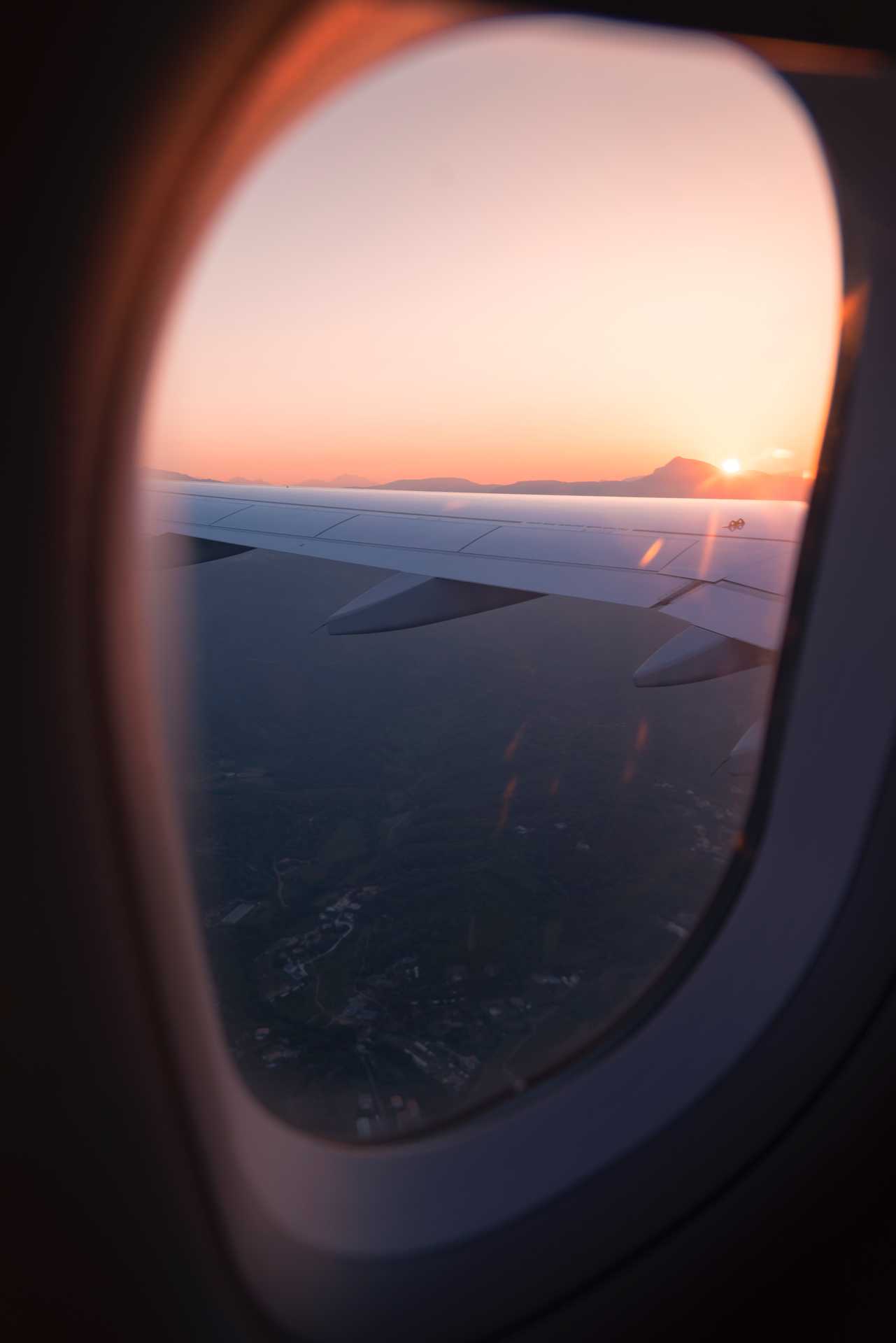
Andalucía is located south of the Iberian Peninsula. Access to Andalusia can be done by plane, by boat, by train or by road.
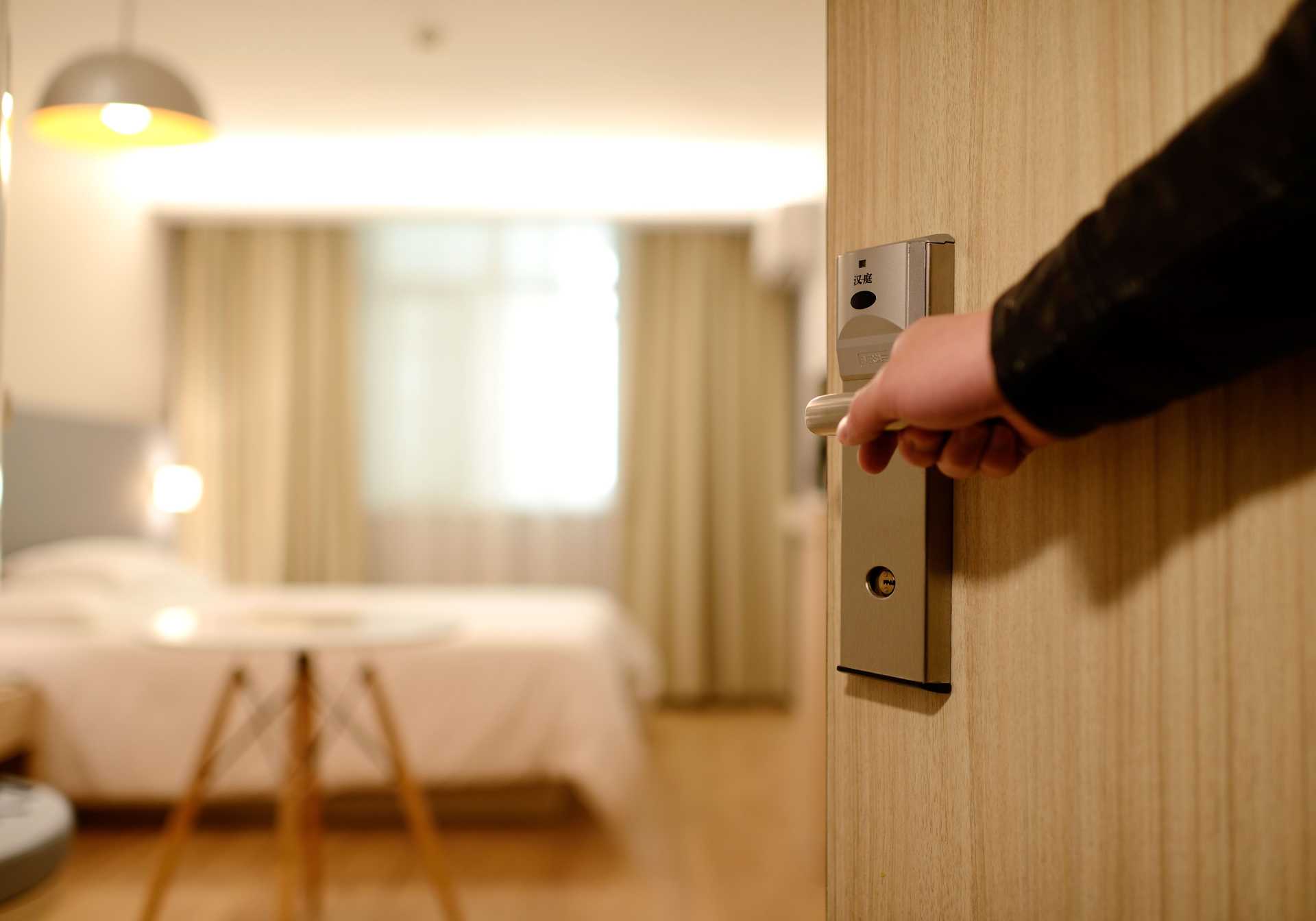
Where to sleep
The accommodations of Andalucía satisfy the most demanding traveler, from a different environment to the most classic style. The are many options to choose from.

What to eat
The Andalusian gastronomy is as wide and varied as its territory. Enjoy a whole repertoire of dishes and products whose excellence is celebrated all over the world.
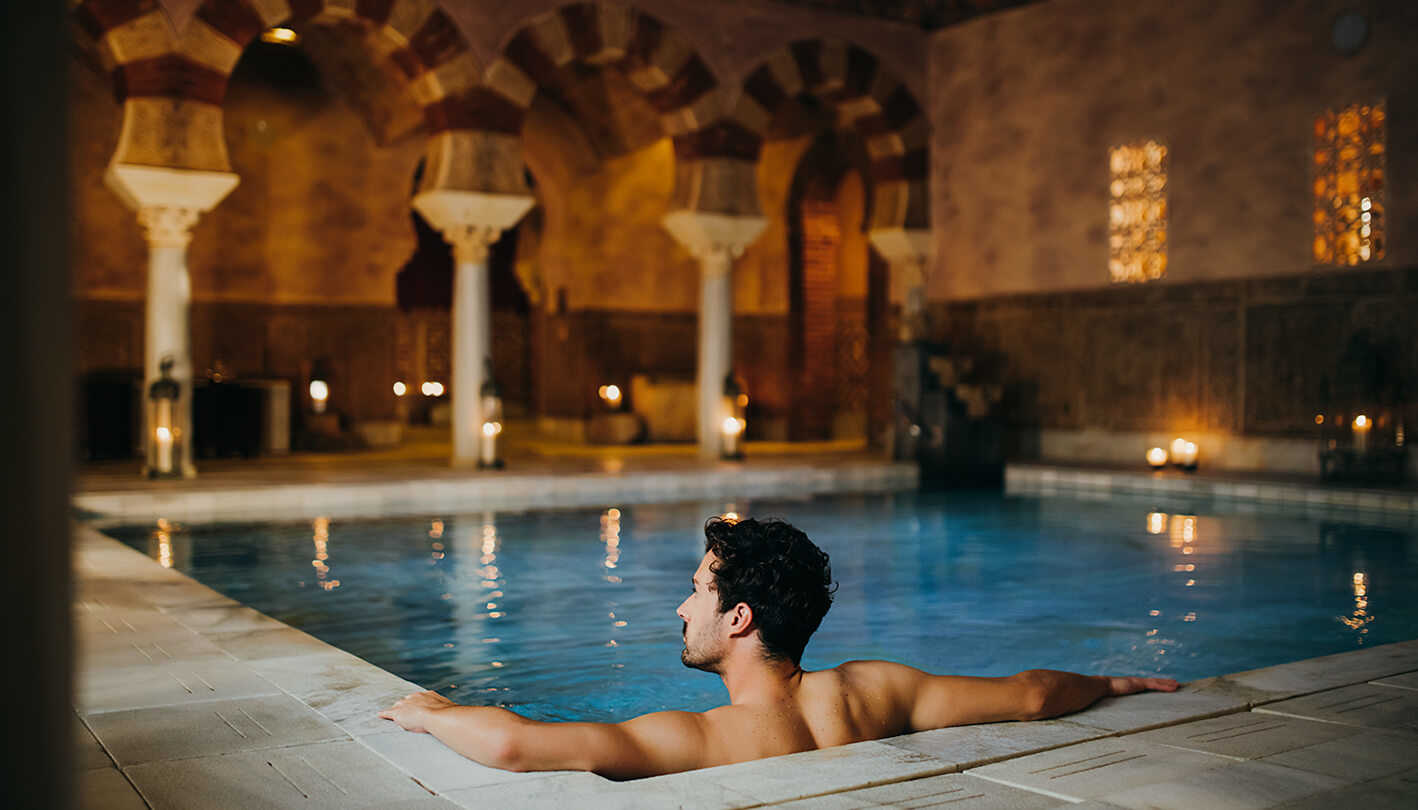
Learn about the possibilities offered by this region of the south of the Iberian Peninsula come to the time of year you come.
June 19 - PREMIERE OF THE DOCUMENTARY
A story around the figure of 10 photographers, discovering their place in Andalusia in image form.
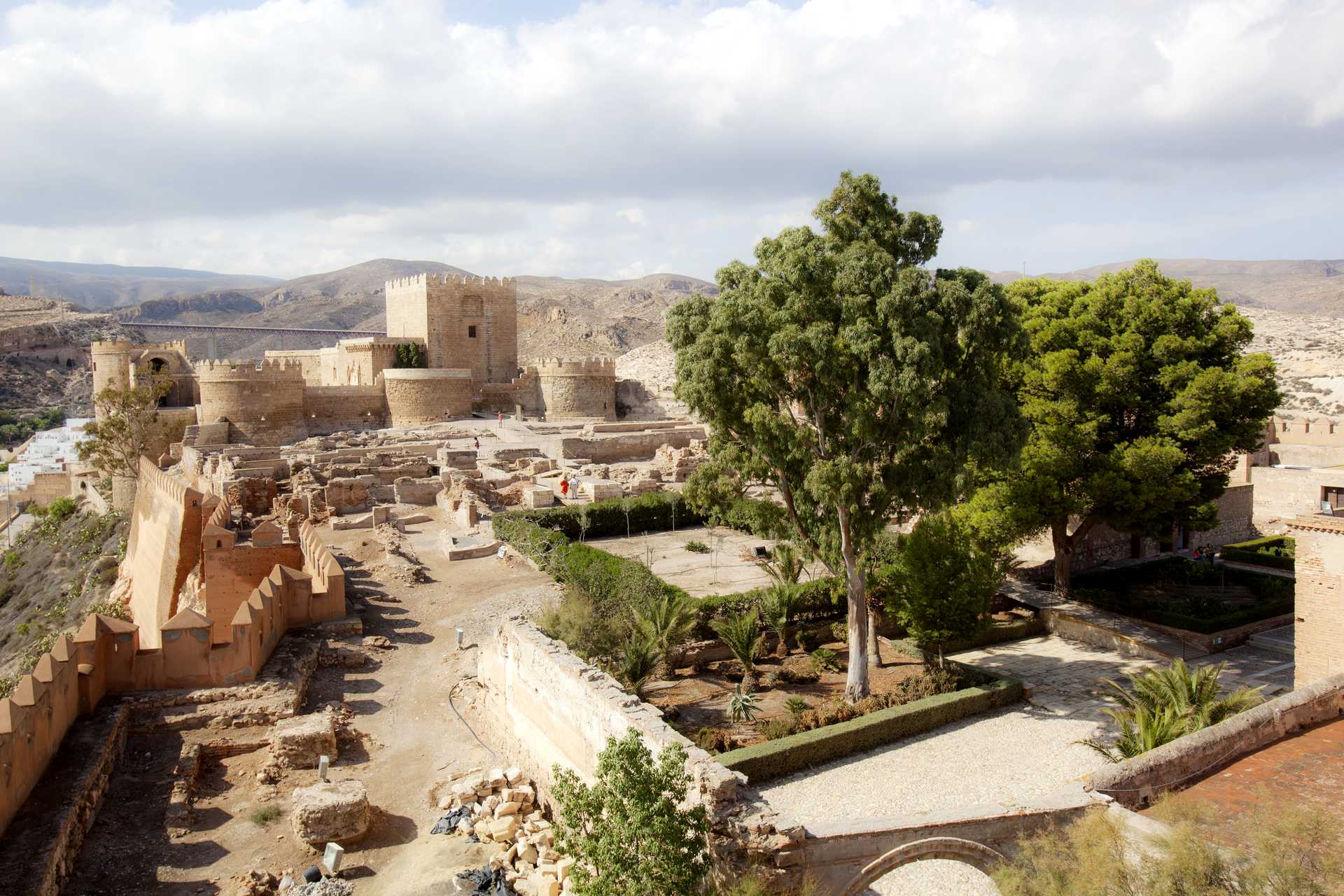
Book your tourist experience
See more offers.

Book Now and Experience Paradise: Unforgettable Rural Experience!
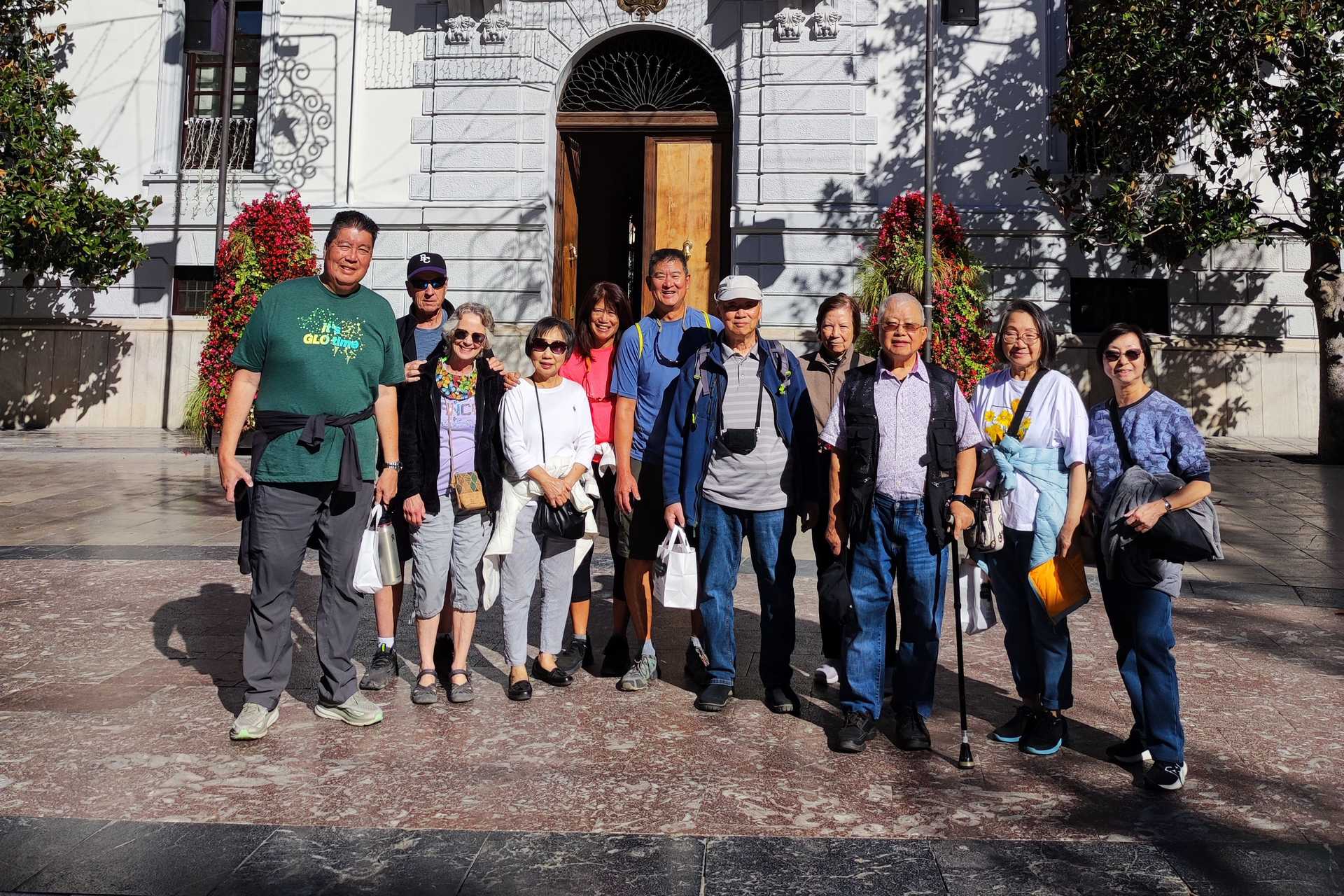
Alhambra Private Tour with Nasrid Palaces and Generalife Gardens

Spanish Express

Bautismo de buceo para dos personas en La Herradura
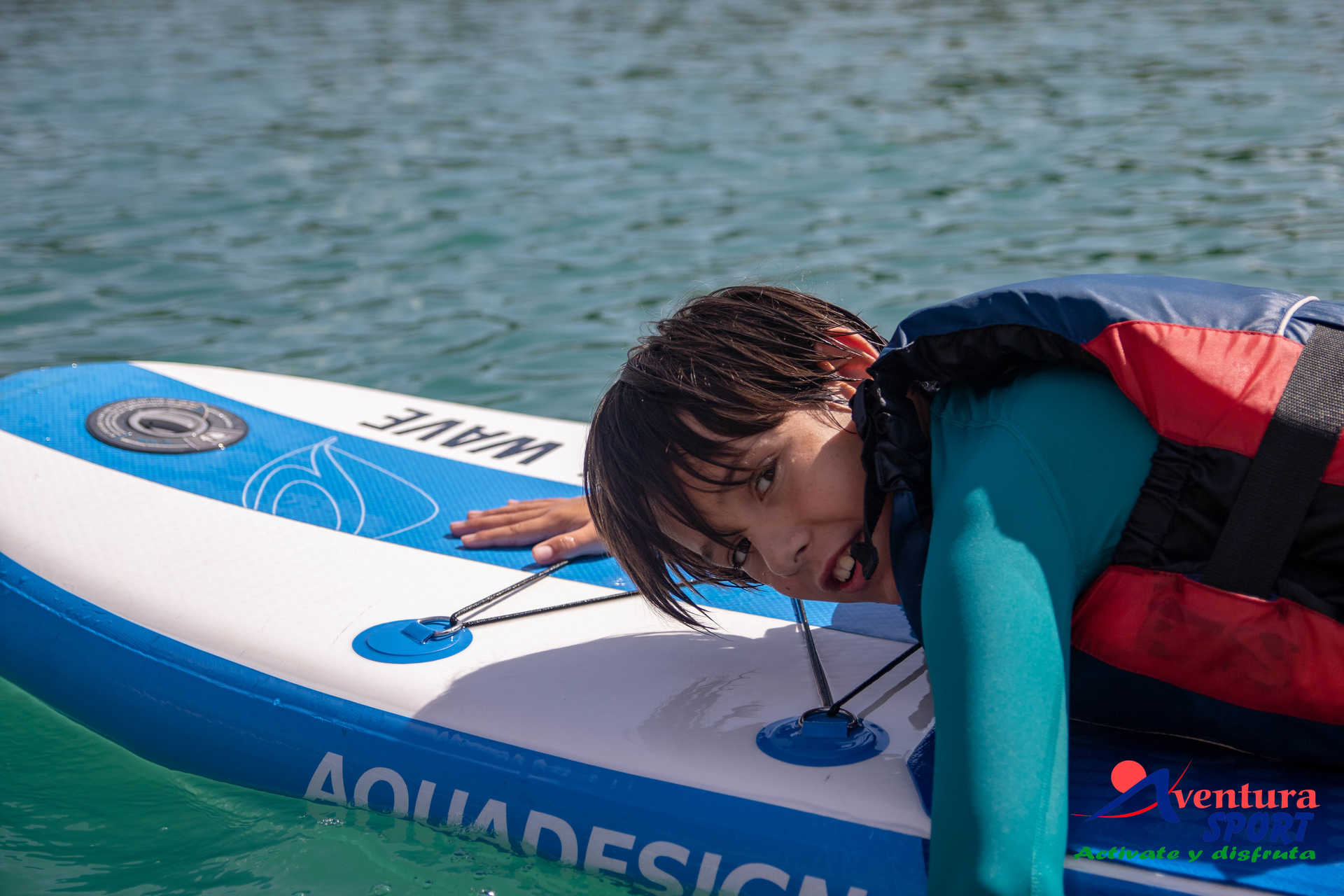
Paddleboarding in Sierras de Cazorla
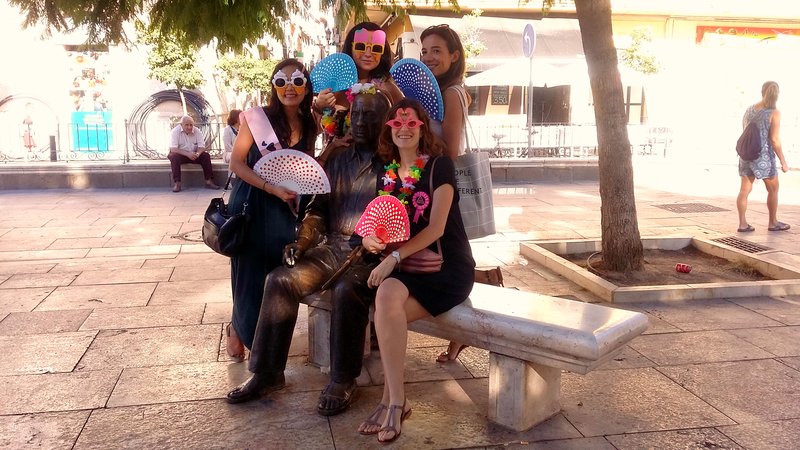
Team Building / Mice Treasure Hunt Activity Málaga
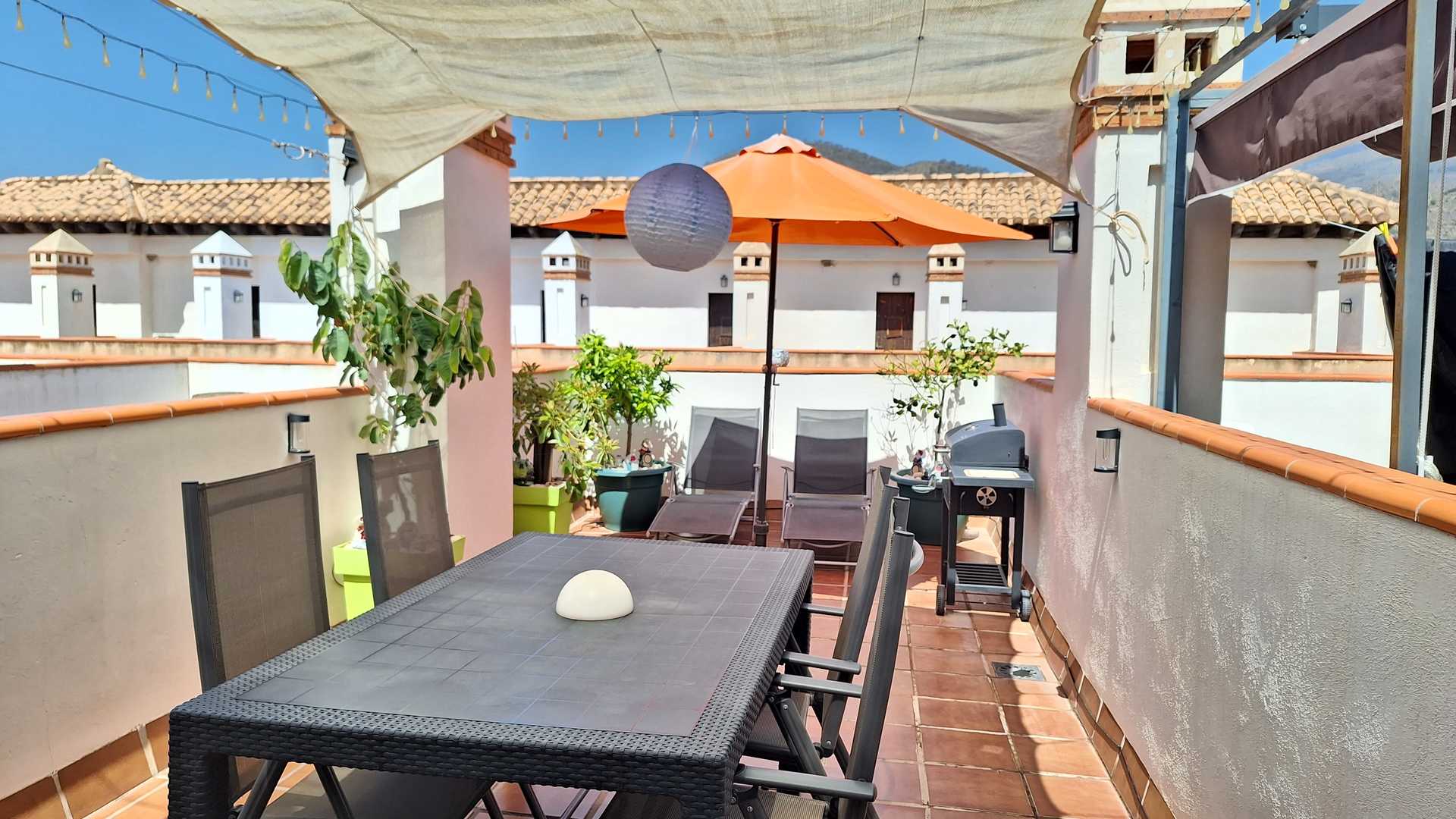
Promoción Junio 20%
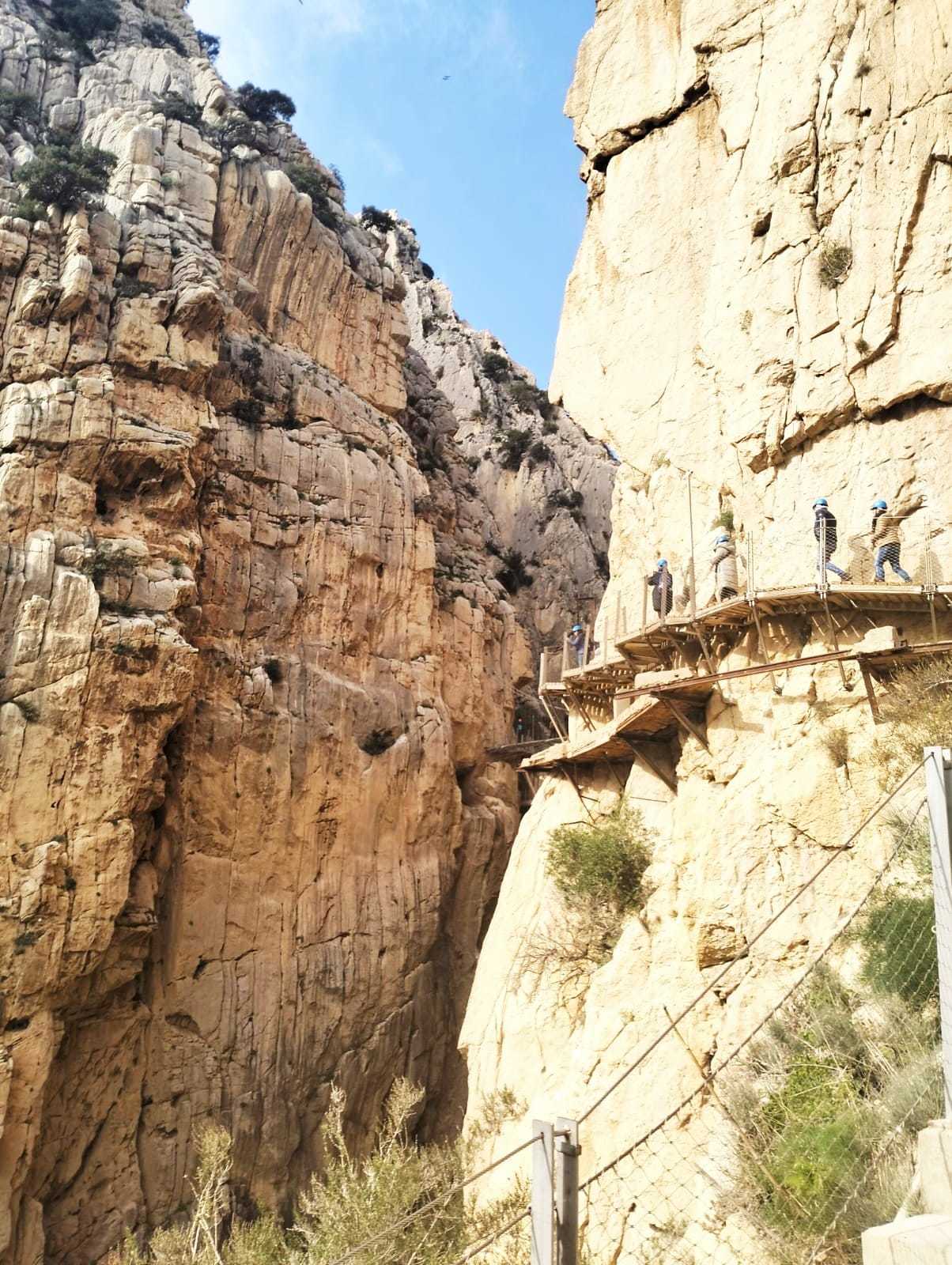
Caminito del Rey desde Sevilla
Don't miss....

Festival de la Guitarra de Córdoba

Festival Internacional de Música y Danza de Granada

Fiestas Colombinas
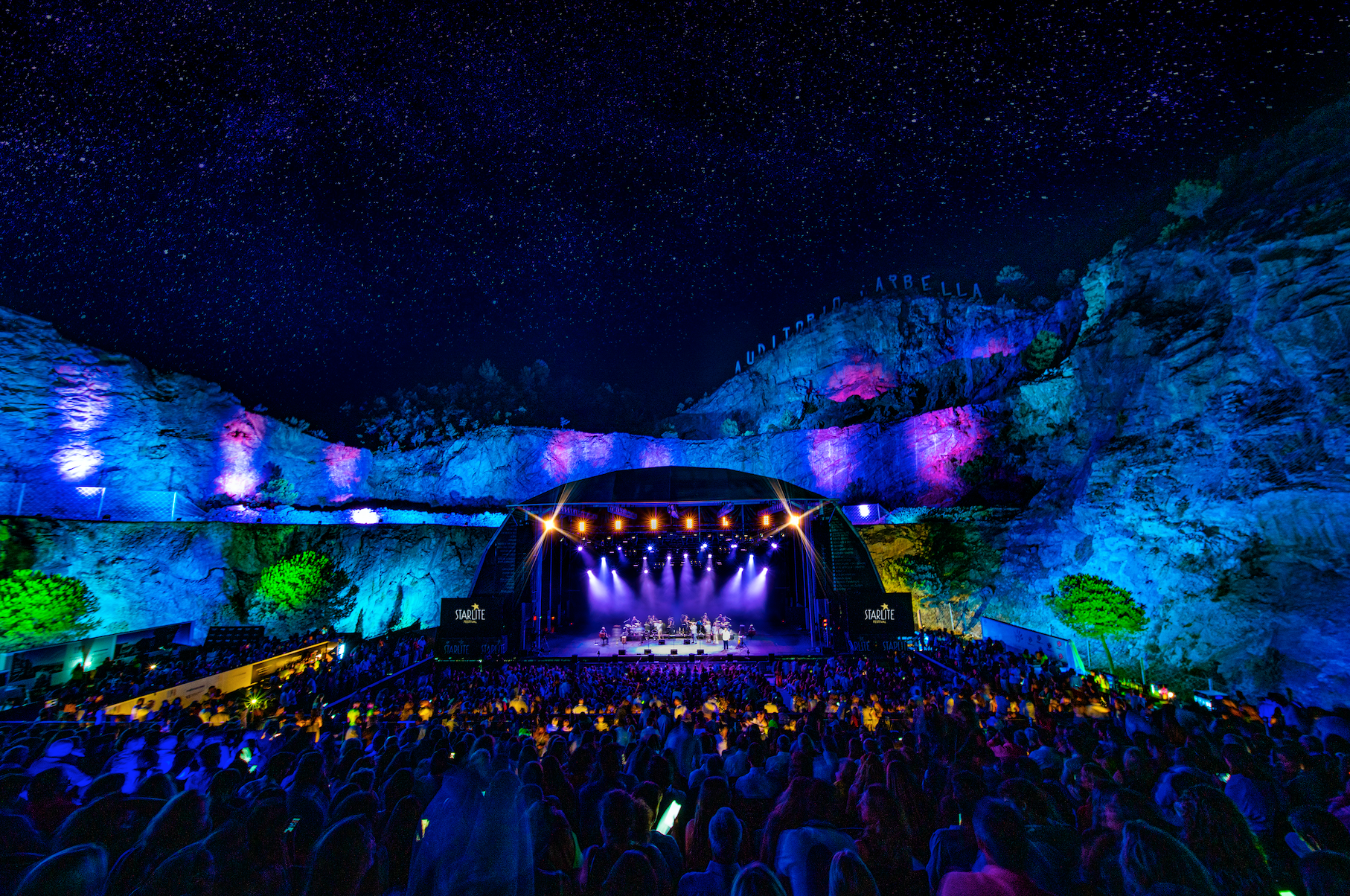
Starlite Occident

Torneo Internacional de Polo
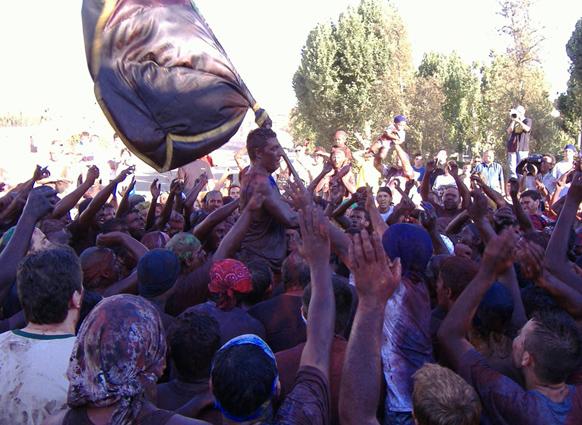
Fiesta del Cascamorras

Cascamorras Festival

Sanlúcar de Barrameda horse races.

Bienal de Flamenco de Sevilla
Proposals to enjoy andalusia.

Festivals and terraces? Music and beers? Yes: summer is here!
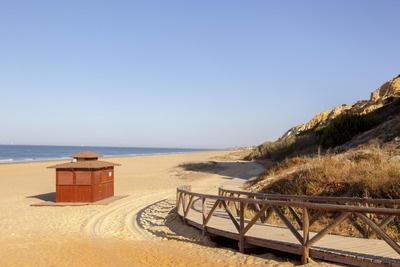
The longest beaches in Andalusia to enjoy a quiet summer

A journey on board the Al Andalus train
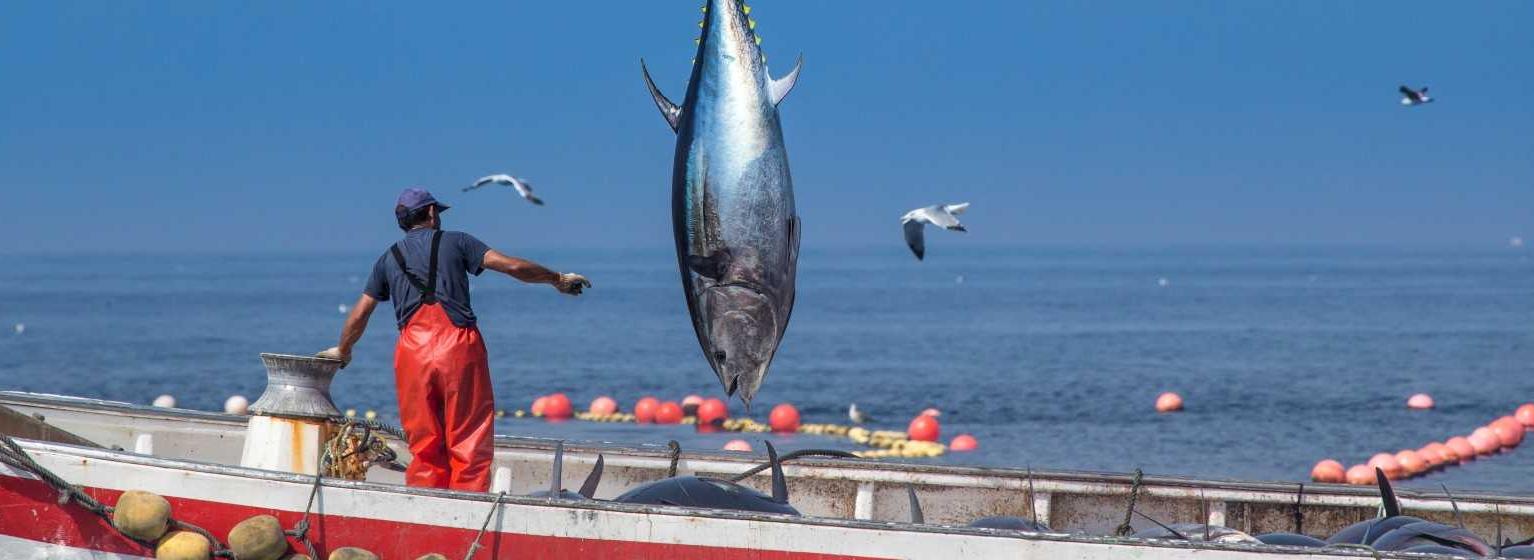
Bluefin tuna, the taste of Cadiz in springtime

Easter week in Andalusia
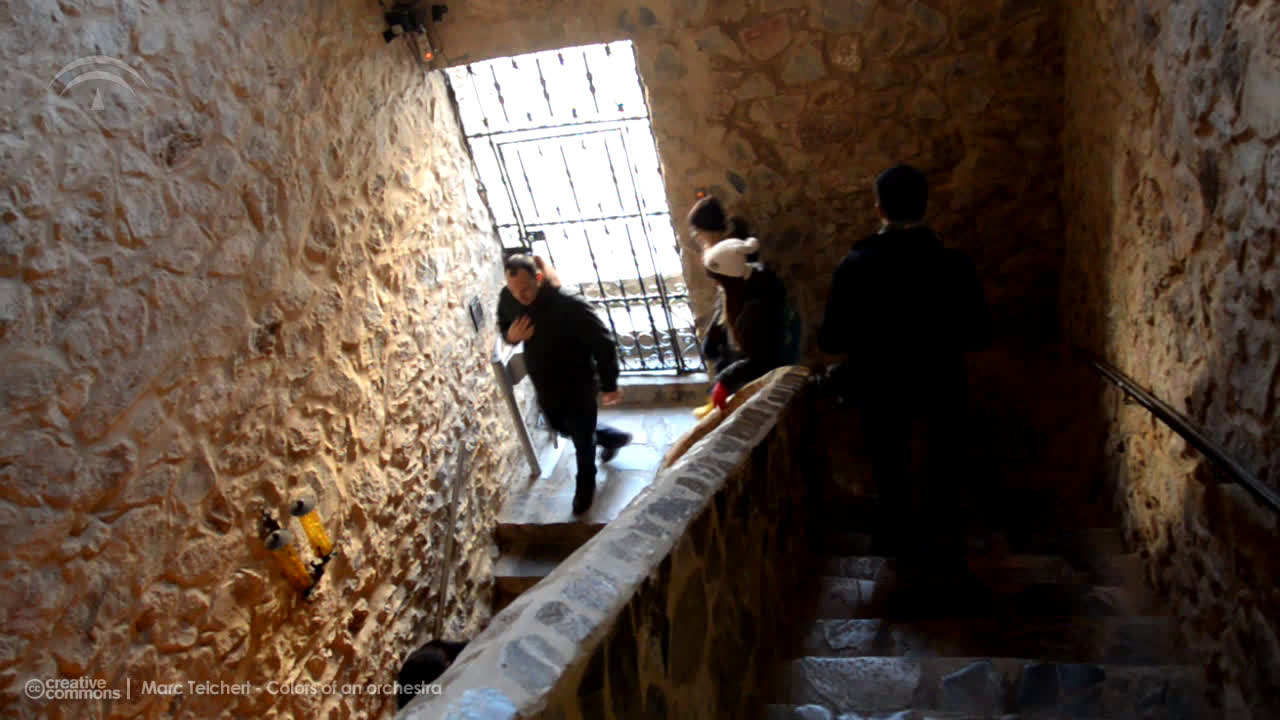
La gruta de las maravillas grotto, an underground treasure
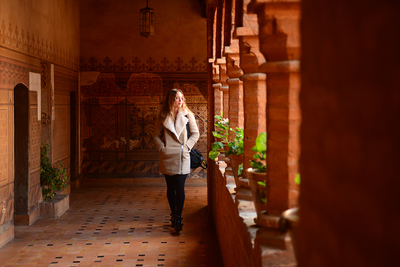
5 reasons that will make you discover Lugares Colombinos in Huelva
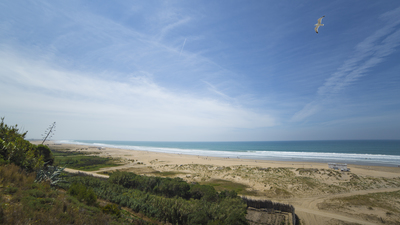
Surf destinations in Cadiz where you'll enjoy good vibes
For professionals.

Statistics and Market Research

Manage your tourist resource

EXPLORE ANDALUSIA
- Discover Andalusia
- The best sun in the world
- 100% Natural
- Andalusia flavor
PLACES TO VISIT
- Almería
- Cádiz
- Córdoba
- Jaén
- Málaga
EXPERIENCES
- Active turism
- Conferences and Congresses
- Touristic Routes
TRAVEL PLAN
- Accommodations
- Guided Activities Companies
- Tour Operators and Travel Agencies

- United Kingdom
- Curated Stays
- Wine Travel
- About Isabelle
- Work with Us
The Perfect Andalucia Itinerary for 7, 10, or 14 Days
- Isabelle Hoyne
- May 20, 2024
** Disclosure: some of the links on this site are affiliate links and should you make a purchase through these, I may receive a small commission at no extra cost to you. Thank you for your support!**
Pulling together the perfect southern Spain itinerary can be testing – I remember feeling overwhelmed when first sitting down to plan my trip to Andalucia – and you might be feeling this way too. This is a long one, but stick with me and by the end, you’ll know how to craft the perfect Andalucia itinerary!
I close my eyes and I am back there – flashes of orange blossoms, dusty, white towns that teeter on the precipice of yawning gorges, the solitary echo of footsteps on ochre-hued streets at siesta time.
I taste the salty tang of Manchego cheese as it hits my tongue and squint my eyes in the bleached light of the midday sun, as I am once again immersed in the kaleidoscope of experiences that make up a road trip in Andalucia .
Andalucia is famous for its shoreline – along its fringes are the beaches of the Costa del Sol, firm-favourite of many a package holiday fan.
Its gateway is the port city of Malaga, but to step inside the interior of this region is to discover its beating, cultural heart and the very best of Southern Spain.
Our route first took us from the coast to the sweeping arches of the Puente Nuevo at Ronda, and on then to cosmopolitan Seville , capital city of Andalusia.
From here we journeyed our way further through southern Spain to gawp at La Mezquita in Cordoba before finishing at the foot of the Sierra Nevada mountains, racking up our step count at Granada’s Alhambra .
Since initially writing this Andalucia itinerary guide, I’ve spent a number of months living in the marvellous metropolis that is Seville. I’ve fallen even further under Andalusia’s charms and hope to help you do the same through this comprehensive guide.
I understand that time constraints may be different for all readers of this post, and so below, I have outlined a variety of proposed itineraries depending on number of days you have available.
Further on in the post, I lay out my recommendations for each destination mentioned. Happy planning!
Essential links for booking your Andalucia trip
Search for and book flights via Skyscanner Book your car rental via Rentalcars Make sure to book in advance: ☆ Make sure to book tickets to the Alhambra well in advance, that include entry to the Nasrid Palaces as visitor numbers are limited daily. To get the most from your visit, book a small group guided tour or alternatively, a private tour . ☆ The Seville Super Combi Pass offers a discounted bundle price for access to the Alcazar, Cathedral & Giralda Some memorable experiences in Andalucia ☆ Arabian Baths Experience at Granada’s Hammam Al Ándalus ☆ VIP early-access Alcazar of Seville tour (** editor’s choice **) ☆ Tastes, Tapas & Traditions of Seville Food Tour (great for foodies – I took this tour & loved it!) ☆ 4-WD Sierra Nevada Safari Tour (Granada) ☆ White Villages from Ronda – Wine & Tapas by E-Bike Recommended hotels : Hotel Catalonia Reina Victoria (Ronda hotel with spectacular views) // Soho Boutique Hotel (luxe for less, Seville) // Villa Oniria (boutique beauty I stayed in, Granada) // H10 Palacio Colomera (reasonably priced Cordoba luxury hotel with pool) Best Andalucia vacation rentals : take a look at the most popular apartments & houses
Table of Contents Hide
Why history, culture and gastronomy lovers should visit andalucia, when should i go to andalucia, what is the best way to get around andalucia, how many days do i need in andalucia, andalucia itinerary 7 days, andalucia itinerary 10 days, andalucia itinerary 2 weeks, andalucia by train itinerary, ronda & the white villages, related reading for granada & andalucia, like this post pin for later.
Andalusia’s history is a long one.
For millennia these lands have attracted a diverse range of people. From early, pre-Christian metalworkers to the Phoenicians, the Romans to the Moors, Andalusia finally found itself in the hands of the Catholic monarchs, Ferdinand and Isabella, when it then became the nucleus of Spanish trade with the New World in the 16th century.
Responsible also for the Reconquista , they made it their business to either convert to Christianity or expel from Spain its Muslim and Jewish occupants.
Each ruling dynasty left its mark on the region. Possibly the most unique and lasting legacy is that of the Moors – in fact, flamenco, one of Andalusia’s most distinct cultural outputs, finds its origins in Arabic roots.
Arabic influence on Andalusian architecture is also extremely distinct in this region, presenting a magical hybrid of Moorish and Spanish qualities (called ‘ Mudejar ’) that won’t be seen anywhere else in the world.
The perfect destination for those looking to immerse themselves in local culture, be wowed by architectural diversity and uniqueness and spend a good deal of time in tapas bars swilling local wine, an Andalucia road trip needs to make its way onto every traveller’s southern Spain itinerary .
Planning your Andalucia road trip
Before embarking on our Andalusia road trip , it took a little bit of head scratching and quite a bit of research in order to answer all questions and decide on a route and itinerary for the trip.
Where should I base myself in Andalucia and how much time did I need? Is it safe to self drive in Spain? Is it possible to get around Andalucia by train? You will likely have the same questions, so let me answer these for you below!
As with a lot of destinations, the shoulder months of April/May and September/October make for a great time to visit Andalucia, with average daily temperatures of anywhere between 20-30 degrees celsius (68-86 Fahrenheit).
I’ve visited Seville during May/June and temperatures sat at around 27/28 degrees celsius each day.
I would highly recommend that you avoid visiting at the peak of summer, particularly July and August, as the temperatures in places such as Seville can soar to a blistering 40 degrees celsius (104 fahrenheit) or more.
Bear in mind that the temperatures will vary from place to place – Seville, for example, will be milder than Ronda and Granada.
I spent a week in Andalucia across the New Year period and found it to be an excellent time to visit.
Conditions ranged from ‘short-sleeve weather’ in Seville, to ‘wear a coat weather’ in Granada, but there was sunshine everywhere we went and minimal rain (especially compared to home- Ireland! ) which makes Andalucia a very attractive winter sun destination in Europe.
I looked into buses, trains and hiring a car in Andalucia as a means of completing our southern Spain itinerary. We opted in the end to hire a car. My reasons for this:
Getting around Andalucia by train
Train routes in Andalucia are good, with fast AVE trains linking Malaga, Seville and Cordoba.
They don’t, however, work out very well when trying to incorporate Ronda and any of the White Villages into your itinerary and you have a little less flexibility if you want to venture off the beaten path outside of Andalucia’s larger urban centres.
Price wise too, when I looked at the cost of train tickets for two travellers and compared to hiring a car, there was little in the difference. Weighing it up, it was worth the flexibility of having a car at our disposal for our particular itinerary.
If it makes sense for your itinerary, though, train is still a solid option and you can check times and book tickets here .
Getting around Andalucia by bus
Travelling around Andalucia by bus is also an option, but not one I opted for. Like the train, you’re tied to bus schedules and bus station drop off/pick up routes.
Personally, too, I just prefer to travel by car (or train), but if you would prefer to travel by bus then you can search for and book your tickets here.
Hiring a car for an Andalusia road trip
If you have decided that hiring a car is a good move for you too, then wonderful – let your Southern Spain road trip begin!
I suggest hiring something that’s not too much on the large side and that is comfortable enough for the longer stretches but small enough to navigate the often minimal spaces of narrow, cobbled city centre streets and car parks.
I always use rentalcars.com when hiring a car abroad. I like them for the following reasons:
- You can compare all car rental companies in a given destination. They also have superior filtering options too, so you really can drill down to what you’re looking for – even to the deposit amount and payment type.
- All the info you need for your relevant booking can subsequently be found in their convenient app – no print outs necessary.
- You can often amend/cancel your booking with no additional charges.
Driving in Andalucia during your itinerary for southern Spain- what you need to know
If you’ve ascertained that renting a car is the best way for you to get around Andalucia for your southern Spain itinerary, what else do you need to know?
Road conditions in Andalucia : the conditions of the roads in Andalucia are very good. Much of the road between main cities is motorway and when not, single lanes are wide and easy to navigate.
Driving distances and time : one thing I loved about our itinerary for Southern Spain was that there was never too much driving between locations.
As a rough guide, here is a summary of the time we spent transferring between cities (departing from and arriving to city centre locations in each):
- Malaga Airport to Ronda: 1 hr 15 mins
- Ronda to Seville: 1 hr 45 mins
- Seville to Cordoba: 1 hr 40 mins
- Cordoba to Granada: 2 hrs 15 mins
- Granada to Malaga Airport: 1 hr 25 mins
Provided that you leave at a sensible time and aim to arrive at your next stop in the same vein (i.e. not during the middle of rush hour traffic), the times provided by Google Maps between destinations are accurate and can be relied upon.
Parking is often not included in hotel rates, and is usually available at a nearby secure, underground car park.
Rather than source your own car parking (which might end up being far from your accommodation on the outskirts of town), I’d recommend taking the hit on this for peace of mind while driving a rental car in an unknown city.
It usually costs around €25-30 per day.
Is driving in Andalucia easy?
Driving in Andalucia really doesn’t pose too many problems. The roads we encountered were all high quality and we ran into no logistical issues when using Google Maps – once we followed the route provided we ended up where we needed to be.
Cities will be busy – Seville is a little tricky, as you first need to navigate larger intersections as you make your way towards the centre and then narrow streets once you go further in. Granada was much the same, although on a lesser scale.
We got caught out driving into the centre of Cordoba – there is a local access only zone that is controlled by electronic bollards so if your accommodation is in the old centre, arrange entry into the area in advance with your accommodation.
All in all though, a fairly straightforward driving experience as things go.
How long is a piece of string?! The charms of this region are plentiful and far reaching. To really cover a good chunk of the region of Andalucia as opposed to a city or two, then you need at least one week in Andalucia for it to be worth your while.
You want to allow for at least 2-3 days per stop (with a couple of exceptions requiring less time), so keep that in mind when crafting your Andalusia itinerary .
Personally, I spent a week in Andalucia and would have loved to extend my time there by another few days if I could.
I’ve included my 7 day Andalucia itinerary below, along with how I recommend organising your time should you have 10 days to spend in Andalucia. I’ve also included a 14 day Southern Spain itinerary as well.
- Ronda (2 nights)
- Seville (2 nights)
- Cordoba (1 night)
- Granada (2 nights)
A 7 day Andalucia itinerary allows you to get a real flavour of the region.
You will find yourself on the road at least every second day or so of the trip, but as I’ve mentioned above, journey times between destinations in Andalucia aren’t too long, so this won’t be too arduous.
If you use the itinerary above in the given order (assuming most will be flying into/out of Malaga airport – so this is your starting point), you will be able to fit in many highlights of the region.
Each of the cities above are key points of interest in Andalusia and they are all also unique to each other, allowing you to uncover much of Andalucia in 7 days .
- Ronda & the White Villages (3 nights)
- Seville (3 nights)
- Malaga (1 night)
10 days in Andalucia will allow you to take some more time to explore the region a little more slowly. Rather than add in additional destinations, I’ve instead expanded on the 7 day itinerary to allow you a better immersion in those places I feel warrant more time.
I’ve given an additional day in Ronda so you can explore the unique White Villages in the area.
Seville too gets an extra night – I’ve stayed in Seville for a week before and didn’t run out of things to do, so the 10 day Andalucia itinerary above allows a little more time to uncover the delights of my favourite Spanish city.
Finally, I’ve ended this 10 day Andalucia itinerary in Malaga.
Instead of making your way straight to the airport, take a day to explore Malaga as a variation for this itinerary for southern Spain – perhaps visit an art gallery, admire the orange trees in Plaza de los Naranjos, or take a well earned dip in the Mediterranean Sea!
- Granada (3 nights)
- Nerja (3 nights)
Your two week Andalucia itinerary builds on the 10 day route. Key changes include an additional night in Granada to allow for a day to visit the Sierra Nevada mountains (for skiing in winter or beautiful hikes in summer) and 3 nights in Nerja to slow down, grab a sun lounger and relax on the beach.
Yes, while having 14 days in Andalucia potentially means that you can cram in more destinations and stops, I know from experience that trying to cram in more does not usually result in a superior trip – the opposite.
In fact – so slow down, immerse yourself in each of your stops and don’t come back from your trip more exhausted than when you left for it!
Trust me, Andalucia is a region that needs to be explored slowly, as much of this journey is about the experience in itself.
While it wouldn’t be my recommended way to do it, as I prefer the flexibility of having a car, I understand that this might not be practical for everyone. It is definitely possible to undertake the above itineraries by train, with a little tweaking.
Book your train tickets in advance here , especially if you are travelling during peak times.
You will be able to complete the loop of Malaga-Seville-Cordoba-Granada-Nerja-Malaga by train – the only thing you would miss out on would be overnighting in Ronda.
I really, really, would recommend visiting Ronda if you can (it’s very different to all of the cities), so there is a way to circumnavigate this conundrum by allocating your night in Ronda as an additional night in Seville and undertaking a guided day trip to Ronda and the White Villages from Seville.
Building your Southern Spain itinerary – places to visit
So now that we’ve covered off where you should go, what is there to see in each of these places?
In this next section, I’m going to touch on some recommendations for each of the destinations that I mentioned on the 7, 10 and 14 day Andalucia itineraries above.
I’m not going to provide you with one of those “on day 1, go to this place at 9am, followed by the next place at 11.15am” style itineraries – this is a holiday, not a military operation and Andalusia is a place that encourages you to relax!
I think it’s far more enjoyable to have a ‘menu’ of things to do in a place to have at your fingertips, depending on how you feel at the time. Decide on a couple of ‘must-sees’ in advance, book your tickets, and then fit the rest in around those booked activities.
While known for being the birthplace of modern day bullfighting, Ronda is even more iconic due to its unique situation, perched atop what seems to be the almost bottomless El Tajo gorge, across which the giant arches of the Puente Nuevo stretch, joining the old Moorish town with the ‘new’ town.
What to see & do in Ronda
Ronda is such a picturesque and inspiring location that merely walking around it was nearly enough to keep me going! However, below are some highlights and ideas of things to see and do in Ronda.
Get acquainted with Ronda
If you’d like to get your bearings and understand the history of the place, which is very interesting, then take a walking tour on your first day. For a history lesson that’s a little more quirky, drop into the Bandit Museum , Spain’s only museum that is dedicated to bandits and highwaymen.
Visit the Municipal Museum that is housed in Ronda’s Mondragón Palace , with moorish courtyards, stunning gardens and awe-inspiring views.
Located in the old Arabic quarter of San Miguel, pop in to visit the Arabic Baths , which were built in the 13th century and are the best preserved in Spain.
Take in the views & the famous El Tajo Gorge
Examine the star of the show in Ronda, the Puente Nuevo from all angles and at different times of the day to really get a deep sense of appreciation for the feat of engineering that it is.
Hike down the gorge from the Plaza Maria Auxiliadora in town to view the Puente Nuevo from below – just don’t think about the fact that you have to walk back up it afterwards!
Make sure to take some air too at Ronda’s Alameda de Tajo , an elegant outdoor square that leads out towards sweeping views of the El Tajo gorge.
We went for an early morning run along here, and it definitely knocked the cobwebs off!
Get familiar with the surrounding countryside
Visit some more of the famous White Villages , or Pueblos Blancos. Suggestions include Zahara de la Sierra, Setenil de las Bodegas and Grazalema.
Alternatively, you foodies out there might enjoy this alternative White Villages experience – where you take to the countryside on e-bikes and sample wine and cheese as you go!
If you’re a bit of an adrenaline junkie, want to take in the beautiful scenery and don’t mind getting a bit dirty, then the dramatic surroundings of the El Tajo gorge are the perfect location to do a gorge buggy tour .
Ronda bull ring
While a controversial topic and not a sport that I personally support, Ronda is famous for its bullfighting, making the Plaza dos Toros (or bullring) one of its most popular attractions.
Where to stay in Ronda
Hotel catalonia reina victoria.
Upon pulling back the curtains and throwing open the doors of our balcony, I knew that I had chosen the right spot to stay in Ronda!
Offering absolutely insane views from the balconies of its rooms, the Hotel Catalonia Reina Victoria is a Victorian style hotel that has undergone modern refurbishment.
Complete with indoor and outdoor swimming pools, a spa and those exceptional views to boot, you really can’t go wrong with this one.
Catalonia Ronda
I agonised between this hotel and Catalonia Reina Victoria. The Catalonia Ronda is located right in the heart of town, just across from the bull ring (Hotel Catalonia Reina Victoria is 500m walk from the centre).
Boasting a rooftop pool with views into the bull ring and on towards El Tajo gorge, this is one for those who want to be slap bang in the middle of the action and are looking for a hotel in Ronda town centre.
Ah, Sevilla. This delightful, stylish, historical city is hands down my favourite in Spain and needs to find itself on every Spain travel plan. Whether it’s cultural sights, architecture, cuisine or shopping (or a healthy dose of all four) that you seek, this city really has got it all.
I’ve written all about what to do in Seville in my Seville guide , but here’s a synopsis.
RELATED READING | The Best Airbnb Seville Spain [2024] – 22 Luxury Airbnb in Seville
What to see & do in Seville
EDITOR’S NOTE | TakeWalks , our small-group cultural tour company of choice, have recently launched a range of tours in Seville.
These include an excellent food tour that I’ve taken, and a Seville in a Day Tour with VIP Alcazar Access . I’d highly recommend that you check them out.
Alcázar of Seville
First things first, get yourself to my favourite landmark in Seville, the Alcázar of Seville . Still in use as the King of Spain’s Seville residence, this amazing palace boasts incredible Mudejar architecture and extensive gardens. It was also featured as Dorne in Game of Thrones.
It’s super popular and also sells out early in the day, so book your skip the line tickets here . Once you see the queue that forms as the day progresses, you’ll be happy you’ve bought yours in advance, trust me!
There’s also quite a lot to take in at the Alcazar, so if you’d love to know more about it and haven’t done your reading in advance, then consider taking this small group tour, which has received over 500 5 star reviews from past guests.
If you’re looking for something really special, then consider the TakeWalks VIP early-access tour .
Seville Cathedral & Giralda
Beside the Alcazar, you will find the incredible Seville Cathedral, (which is the 3rd largest church in the whole world !), along with its iconic Giralda, which towers beautifully above the rooftops of Seville.
Again, queues get crazy long, so book a skip the line ticket in advance. When you’re done exploring the cathedral, make sure to climb La Giralda , which is the cathedral’s bell tower, for beautiful views over the city.
TOP TIP | If you plan on visiting both Seville Cathedral and the Royal Alcazar, it can work out better for you to purchase a Seville Super Combi Pass . This includes skip-the-line entrance to both these attractions, plus a hop-on/hop-off bus around Seville.
You can also download audio guides for both the Cathedral and the Alcazar. Alternatively, you can book a guided tour that incorporates both the Alcazar and the Cathedral. With them located so closely together, it makes sense to visit them on the same day.
I’ve rounded up the best Seville Cathedral tours in this post – check it out!
Rooftop cocktails
All that touring is thirsty work! For those seeking a more glam viewpoint of Seville Cathedral and La Giralda, head to the rooftop bar of the EME Cathedral Hotel for cocktails. I’d highly recommend visiting at sunset.
Plaza de España & Maria Luisa Park
Another emblematic location in Seville is the expansive, fountain and tile filled Plaza de España . Try go early in the morning if you can to have more of the space to yourself, as it fills up quite quickly throughout the day.
Make sure to visit and take a stroll in the adjoining Maria Luisa Park during your time in Seville.
Explore the neighbourhoods
You could while away hours wandering the cobbled streets of Sevilla, but when you are in town, do make sure to wander through the Santa Cruz , the old Jewish quarter in the historic area around the Cathedral.
Cross the river, too, and explore some of the craft workshops of the Triana area.
Seville is the home of flamenco dancing, so it is a fitting location in which to attend a flamenco show.
This Flamenco show features 15 of Seville’s best flamenco dancers at Seville’s famous Tablao El Arenal, with a choice of three packages – show with drink, show with tapas, or show with dinner. Alternatively, you could consider TakeWalks Tapas Crawl & Flamenco experience .
Metropol Parasol
Finally, Seville is home to the very modern Metropol Parasol installation – evening time makes a great time to view this as the sun sets over Seville. If you visit early in the day, make sure to head underneath to the interior – where you’ll find an authentic food market in full swing.
Where to stay in Seville
Casa romana hotel boutique.
I had a hard time trying to find somewhere that was reasonably priced over the New Year period in Seville, that would also pass muster and my rather picky hotel standards.
Luckily, I happened upon this charming, 4 star boutique hotel after oodles of hours spent searching.
Rooms are set around a delightful outdoor courtyard (like a Roman villa) that features a lovely, trickling water feature. There is also a rooftop terrace with a hot tub.
The street it is located on is quiet, and its position in the Old Town meant we were 15 minutes away from everything.
Hotel Alfonso XIII
If you want to splash out on a spectacular luxury hotel in Seville, then look no further than the emblematic Hotel Alfonso XIII.
Situated right beside Seville’s Royal Alcazar, the architecture and design of the hotel borrows heavily from its Mudejar-themed neighbour.
Comes with everything that you would expect a hotel of this ilk to offer.
Soho Boutique Villa
Those looking for something a little bit more affordable, but nonetheless luxe, will find that Soho Boutique Villa ticks all their boxes.
This stylish, 3 star boutique hotel features trendy rooms, an outdoor swimming pool and is located too in the old town area of Seville.
Click here to discover a curated list of Seville holiday apartments
We arrived in Cordoba just as the sun was setting, casting a soft golden haze on the walls of the city as we made our approach from the river. Cordoba is special. For many years preceding the Reconquista, Jews, Muslims and Christains lived peacefully side-by-side.
An important Roman city too, Cordoba is a melting pot of all these cultures. Famous also for its patios, this is a rather gorgeous and extremely atmospheric city that should not be left off any Andalucia travel itinerary.
What to see & do in Cordoba
Visit the Mosque-Cathedral
Cordoba’s Mosque-Cathedral, or ‘ La Mezquita ’ should be the first port of call when visiting Cordoba. This incredibly unique structure of a cathedral housed within a mosque is famous for its red and white arches.
If you’d like to learn more about the fascinating history of this astounding structure, this guided tour is extremely well reviewed.
Discover the Jewish Quarter
One area of Cordoba that you need to get lost in is the Jewish quarter, or La Judería. It forms the Old Town of Cordoba and is where you will find most of the city’s main sites.
A quick stop, but well worth popping into is the Cordoba Synagogue , which is the only existing synagogue in Andalucia.
The Jewish Quarter is extremely interesting, so if you’d like to learn more, then it might be worth considering a combined Mosque-Cathedral and Jewish Quarter walking tour. This one is extremely well reviewed, and finishes with a tapa and a drink.
Alcázar de los Reyes Cristianos
Another must-see in Cordoba is the Alcázar de los Reyes Cristianos . Having served as the residence of the Catholic kings, inside it features tranquil, Moorish patios and gardens. Climb the ramparts for views across Cordoba city.
You can book a skip the line ticket and guided tour here . You will also be able to see into the Royal Stables of Cordoba from the ramparts of the Alcazar. This is where the famous breed of Andalusian horses was created. You can visit the stables and also attend a show.
Sample local dishes
Make sure to try Salmorejo , which is the local speciality of cold tomato soup made with bread, garlic, olive oil and vinegar and then topped with egg and ham. It might sound a little weird, but a friend of mine who lived in Cordoba encouraged me to try it and I can confirm that it is delicious!
Get acquainted with downtown Cordoba & its patios
Make sure to stop off and see some of Cordoba’s Patios! These colourful, flower-filled courtyards are dotted around the city.
Take a stroll through the Plaza de la Corredera . Nearby, you will also be able to observe, towering over the street, the columns of the Roman Temple of Cordoba .
Finally, cross the Guadalquivir River via the Roman Bridge for magnificent views back towards the old town of Seville. This bridge has been standing since before the birth of Christ!
Where to stay in Cordoba
Eurostars conquistador.
This 4 star hotel in Cordoba is where I stayed during my visit and it was absolutely perfect for one night.
Located on the opposite side of the street from the Mezquita, I could see the Mezquita’s beautiful Arabic arches illuminated at all times of the day right from my bed, which was really quite special.
At its centre is a beautiful courtyard, which was a lovely spot to grab a drink in.
Hospes Palacio del Bailio
If you are staying a little longer in Cordoba, or are looking for a luxury hotel in Cordoba, then I would opt for Hospes Palacio del Bailio.
This 5 star hotel with swimming pool is located in a 16th century former palace, with interiors that incorporate a stylish blend of both old and new. It is located in the old town and is only 1 km away from the Mezquita.
H10 Palacio Colomera
This snazzy Cordoba 4 star hotel features an outdoor plunge pool, perfect for those hotter days.
Located in the newer part of town close to the Roman Temple, it is still only 1km away from the Mezquita and the old historic area of Cordoba.
Granada sits at the foot of the magnificent Sierra Nevada mountain range and is home to the Alhambra, Spain’s most popular tourist attraction.
As the former capital of Moorish Andalucia, Granada’s Alhambra really is something that needs to be seen to be believed and its presence alone in Granada justifies a visit to the city.
Related reading for Granada |
- How to Spend One Day in Granada
- 2 Days in Granada: Itinerary & Tips
- Visiting the Alhambra from Seville (as a day trip)
- How many days in Granada do you need?
- Visiting the Alhambra: Complete Guide
Where to stay in Granada
What to see & do in granada.
Visit the extraordinary Alhambra
This enormous, hill-top fortress is a complex of palaces, gardens and patios – the highlight for me being the Nasrid Palaces.
There is a daily limit on ticket sales, so where you can, I advise booking your tickets months (or at the very least, weeks) in advance if you plan on going at a popular time. Make sure that you book a ticket that includes the Nasrid Palaces , as these are the first to go.
The Alhambra complex is sprawling and its history comprehensive and interesting, so it is a spot where it’s well worth getting a guide.
This small group tour is extremely well reviewed, or if you’re like me and dawdle a lot to take photos and look at things in detail, perhaps opt for a ticket with audio guide instead, so you can move at your own pace.
TOP TIP | If you forget to book your Alhambra tickets, or book your trip a little closer to the date, then it’s highly likely that Alhambra tickets that include the Nasrid Palaces will be sold our.
Scour any tours that have availability for yours dates and know that if all else fails, you have one last ditch attempt.
Each night at midnight, the official Alhambra website re-releases those tickets that have been returned for the following day (or the same day, technically, if it’s after midnight).
Act really fast the second the clock strikes midnight and you may hopefully be able to secure tickets (I did once, but only by the skin of my teeth!).
Discover Granada’s churches
Visit Granada’s Cathedral and Royal Chapel . The final resting place of King Ferdinand and Queen Isabella, I underestimated how interesting I would find the Royal Chapel and it was my favourite attraction in Granada after the Alhambra.
If you want to learn more about this powerful couple and their place of rest, you can book a guided tour . If baroque is your thing, then get yourself to the Basilica of San Juan de Dios .
This incredible 18th century church is swathed in gold features and frescos, and is the most important baroque church in Spain.
Make sure to spend some time exploring the Aladdin’s cave of shops and stalls in the Albaicín district, which is Granada’s former Arabic neighbourhood. Another worthwhile thing to do in Granada is to watch the sunset from one of the mirador.
The most popular one for this is the San Nicolas Mirador , which offers spectacular views of the Alhambra.
For a memorable experience that combines both, this 5* sunset walking tour takes you through both the Albaicín and Sacromonte districts to the San Nicolas Mirador, regaling interesting facts and stories about Granada along the way.
Go shopping
Granada has an absolutely wonderful range of high street fashion stores and make up shops, with multiple Zara stores – it’s safe to say I squished in an adequate amount of retail therapy when I was there!
Head to Calle Reyes Católicos where you will find the majority of these. There are also two El Corte Inglés in Granada.
Immerse yourself in the tradition of flamenco in Granada
The area of Sacromonte is famous for its flamenco dancing, the venues for which are often set in caves. This show takes place in a cave-restaurant, in one of Granada’s most spectacular venues.
Eat some tapas
In Granada, you get a free glass of wine when you order tapas. If you are a foodie, then this small group food tour will introduce you to Granada’s traditional products and dishes (including tapas), along with some hidden treasures.
Visit the baths | Pay a visit to Granada’s famous ancient Arab baths, “ El Bañuelo ”. Unfortunately, these are not in use today, but if you fancy trying to Arabic bath experience for yourself to relax after all that sightseeing, you can book a traditional hammam and massage here !
Get out into the Sierra Nevada mountains | Granada is located in the shadows of the majestic Sierra Nevada mountains.
Your stop in Granada would be the perfect opportunity to break up all of your city visits with some time spent in the clear mountain air. Depending on your interests, here are some ideas to get you started:
- 4WD Sierra Nevada Safari tour
- Sierra Nevada Small Group E-Bike Tour
- Sunset at 2,500m in Sierra Nevada
Villa Oniria
I loved our hotel in Granada! Situated in the city centre, Villa Oniria is an elegant 4 star hotel situated in a 19th century manor house.
Set around a beautiful Andalusian courtyard, it has a plush, yet relaxed atmosphere. The location is great for exploring all the main sights of Granada. There is also a fantastic restaurant located onsite.
Alhambra Palace
If you’re looking for a 5 star hotel in Granada, I would draw your attention to the Alhambra Palace.
It’s probably a toss up for me between here and the Hotel Palacio de Santa Paula (where the entry level rooms may be a tad more modern than those of the Alhambra Palace’s equivalent), but it’s the location outside the walls of the Alhambra and the expansive views of the city that clinch this for me – I’ll take a Junior Suite with city views, please.
Should you find yourself with more than 10 days in Andalucia, I’d recommend adding some beach time to your southern Spain trip itinerary. This will allow you a few days to kick up your feet and relax after all your sightseeing!
I’d recommend considering the white cobbled streets of the former fishing village of Nerja, an area far quieter than the glitzy beach clubs that run from Marbella to Puerto Banus. Conveniently, it’s just a little over an hour’s drive from Granada too.
If the glitz, glamour and beach clubs of Marbella are more your thing however, there’s nothing wrong with that! I’ve written a roundup of the best holiday villas in Marbella, which you can read here .
What to see & do in Nerja
Get some R&R
Relaxation is the aim of the game here, so get your tanning on (safely!) on one of the beaches of Nerja . Some of Nerja’s most beautiful beaches include Playa Carabeillo, Playa El Chorrillo, Playa El Cañuelo and Playa de Alberquillas.
Explore the local area
Take a day trip to nearby Frigiliana , which is 6km away. Think pristine white buildings, cobbled streets and cute alleyways. You can also visit Visit the Nerja Caves , which stretch for almost 5km underground and have been in existence for millions of years.
They are also home to the largest stalagmite in the world. Nearby too, is the Acueducto del Águila , or Eagle Aqueduct, a very eye catching, red and yellow coloured feat of engineering located just outside of Nerja.
Hike some of the local area covering beaches, cliffs and Moorish towers before undertaking a spot of snorkelling. If you’re feeling particularly active, you can walk the Rio Chillar gorge – just prepare to get your feet wet!
Another good hike is Il Cielo – which translates to ‘heaven’ – for breathtaking views of the sea and the expanse of the surrounding countryside.
Where to stay in Nerja
Hotel balcón de europa .
This beachfront hotel in Nerja is built into the Balcón de Europa rock face, and enjoys direct access to Caletilla Beach.
It features an outdoor swimming pool and a restaurant with stunning sea views. Opt for a room with sea views and a balcony to properly enjoy the seafront location.
Boutique holiday rental in Nerja
This nautical themed holiday rental in Nerja features a balcony with sea views, along with a pool and sun loungers.
The house is a mere 200m from the beach and it also takes less than 10 minutes on foot to reach the busy centre and its bars, restaurants and shops.
Known primarily as the gateway to the Costa del Sol when I was growing up, Marbella is in fact a city full of culture and has done a lot to shift this image in recent years.
Yes, there may still exist the dazzling lights of Malaga’s glitzy nightlife, but do remember that this too is the city that gave us Picasso.
Built atop Roman ruins and holding Moorish citadels within its embrace, this impressive city is also worth a stop on a southern Spain travel itinerary.
What to see & do in Malaga
Stroll around the old town, and take in the Plaza de los Naranjos , a beautiful square in the old town centre that is bursting with orange trees.
Visit the Alcazaba of Malaga . Built by the Moors in the 11th to protect against Catholic attackers, its prime position provides magnificent views over the city and coastline. You can book a tour here .
Visit the Roman Theatre . Having only been rediscovered in the 1950’s, the theatre is located right beside the Alcazaba and is free to visit. This walking tour includes both the Roman Theatre and the Alcazaba.
Continue up the hill past the Alcazaba to Gibralfaro Castle . Built to protect the Alcazaba, this is where you will get the best views of Malaga and can even see as far as the Strait of Gibraltar on a clear day.
All about the views here, climb the tower of the whopping Malaga Cathedral for 360 degree views of the city!
Take a trip to the Picasso Birthplace Museum , where – you guessed it – was the place that Pablo Picasso grew up! You can book your tickets in advance here .
Art lovers should also visit the Museo Picasso Málaga , which explores the life and art of the famous painter and includes 200 of his works of art. You can purchase tickets here .
You can also visit one of Europe’s biggest and best botanical gardens, La Concepción should this tickle your fancy.
Enjoy a cocktail on the rooftop bar of the La Terraza de la Alcazaba for incredible views of the city, the Alcazaba and Gibralfaro Castle.
Finally, if you haven’t had enough of eating throughout your Andalusia trip (or want to end your trip with a night of feasting) then I thought that this Malaga evening wine & taps tour looked rather appealing!
Featuring the city’s gourmet highlights, from a classic shop to much loved bars, you’ll taste your way through some of Malaga’s classic foods, from Iberian ham to tapas and wine.
Where to stay in Malaga
Palacio solecio, a small luxury hotel of the world.
A gorgeous, luxury 4 star hotel in the centre of Malaga. The hotel occupies a restored 18th century mansion and is a minute’s walk from Museo Picasso Málaga.
The building and the rooms of this hotel are truly exquisite, featuring an internal courtyard with marble arches and palms.
Hotel Gran Hotel Miramar GL
This luxurious, 5 star hotel in Malaga is situated along the seafront, offering glorious views of the ocean from some of its rooms.
A listed building, these walls have hosted many high profile visitors over the years, including Elizabeth Taylor and Ernest Hemmingway. A truly chic affair, with glorious views onto the waterfront.
- Alhambra Day Trip | Day Trip to Alhambra from Seville: How to Pull off a Flawless Visit
- 2 days in Granada | Granada in 2 days: Ultimate Itinerary & Top Tips
- Alhambra travel guide | Visiting the Alhambra – Ultimate Guide + Insider Alhambra Tips
- One day in Granada | Best of Granada in One Day: Where to Go, Eat & Stay
- Where to stay in Granada | Where to Stay in Granada, Spain [2024] – Top Areas & Accommodation
- How long in Granada? | How Many Days in Granada Do You Really Need?
- Andalucia itinerary | The Perfect Andalucia Itinerary for 7, 10, or 14 Days
Related Topics
- Itineraries
Hi there! I'm Isabelle, aficionado of immersive travel experiences and unique, luxurious hotels. You'll most likely find me camera in hand, or nerding out on research in advance of my next trip. A major foodie, history and scenery lover, nothing makes me happier than soaking in the atmosphere and culture of the destination I'm visiting.
You May Also Like
20 best sri lanka safari hotels across 6 national parks.
- June 13, 2024
- Lisbon & Tagus
Is Sintra Worth Visiting? 12 Pros, 5 Challenges + Top Tips
- March 5, 2024
- French Riviera
Where to Stay on the French Riviera: 11 Best Locations (& Hotels)
- February 29, 2024
Input your search keywords and press Enter.
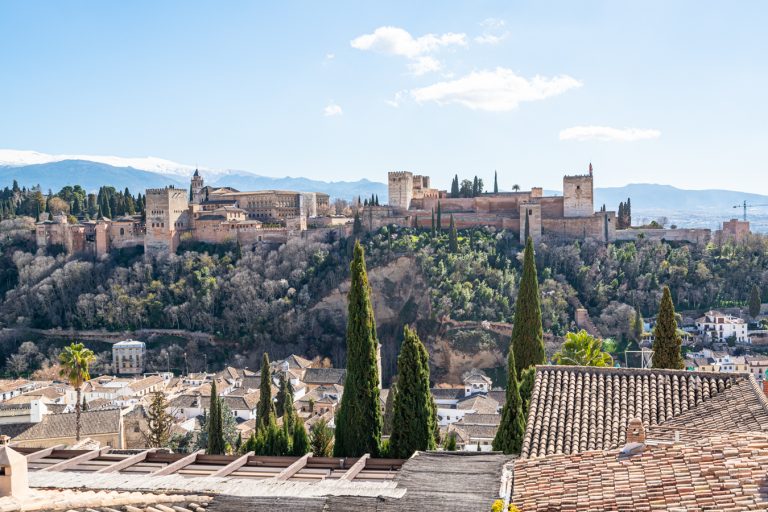
The Ultimate Andalucia Road Trip (Detailed Southern Spain Itinerary!)
Winding streets through whitewashed villages, the clink of tinto verano glasses scraping against tapas plates, sweeping views across gorges, endless sour orange trees, and 700-year-old palaces: these are just a few of the incredible things that you’ll find on an Andalucia road trip.
As Spain’s southernmost region, there are a downright overwhelming number of places to visit in Andalucia, ranging from whitewashed hilltop towns (pueblos blancos) to Mediterranean beaches to snowcapped mountains, and everything in between!
Planning a southern Spain itinerary can be tricky, if for no other reason than that it’s hard to narrow down exactly where to go.
After two long trips spent falling in love with the south of Spain, we’ve put together this road trip itinerary for Andalucia in the hopes that you come away loving it as much as we do (and avoid some mistakes that we learned the hard way).
If you’re ready to soak up the magic of Andalucia, this southern Spain road trip itinerary is for you!
Table of Contents
How We Structured This Southern Spain Itinerary
Renting a car for your andalucia road trip, can this andalucia itinerary work without a car, the ultimate southern spain road trip itinerary, other destinations to add to your andalucia itinerary, the best time to road trip andalucia, what to pack for a road trip in southern spain, andalucia road trip itinerary map.
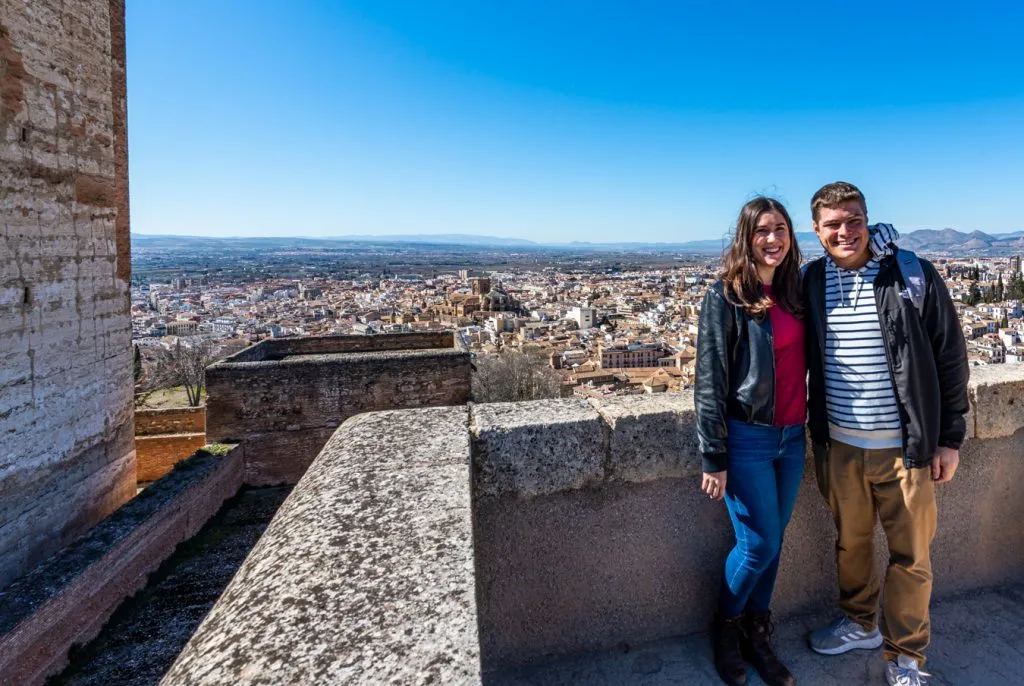
Some links in this post may be affiliate links. If you make a purchase through one of these links, we may earn a small commission at no extra cost to you. Please see our disclosure policy for more detail.
With a region as large and diverse as Andalucia, narrowing down the best places to visit on a 10 day southern Spain road trip is quite the challenge!
We structured this Andalucia road trip as a loop beginning and ending in Seville, home to one of the largest airports in the region.
Since it’s a loop, you can easily reverse this itinerary if you wish, or start in a different city (such as Malaga).
We designed this southern Spain itinerary around visiting whitewashed villages, historic cities, and stunning landscapes.
It’s a fairly fast-paced itinerary in the sense that it packs a lot in and involves visiting many beautiful towns, but to drive this route straight through without traffic would actually take less than 10 hours.
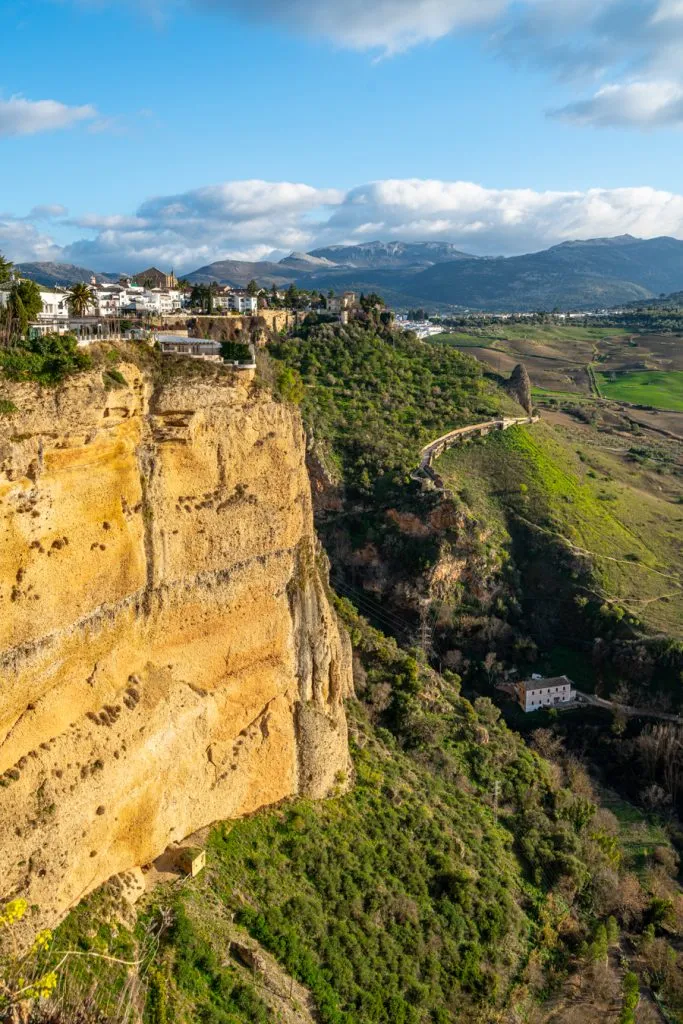
You’ll drive a bit more than that, counting day trips and such, but the bottom line is that it’s a very doable distance in 10 days!
We don’t dedicate much time to the famous Costa del Sol on this travel guide, as this is more of an enjoy-all-the-attractions itinerary rather than a relax-on-the-beach itinerary, but we do include a bit of time to soak up views by the Mediterranean as well.
In addition to the detailed 10 day southern Spain itinerary we’ve outlined here, we’ve also made notes of more incredible places to visit in Andalucia that you can add or swap in, depending on your travel style.
This guide to road tripping Andalucia is quite long, so feel free to use the table of contents above this section to navigate to the most important parts for you if you wish!
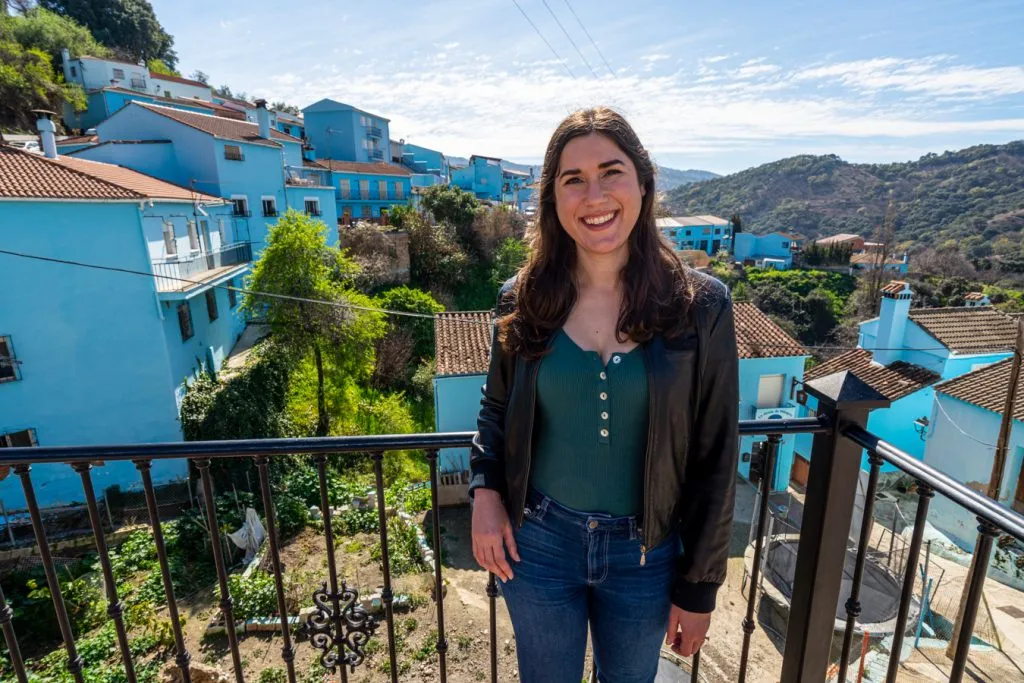
For most people, of course, taking an Andalucia road trip will require renting a car
We recommend renting a small car through Discover Cars , which will allow you to compare the prices and inclusions of multiple companies at the same time and choose the best car for you from there.
For the purposes of this southern Spain itinerary, we recommend picking up a car the morning you leave Seville.
There’s no reason to pick one up for your time in the city, as parking it will be a hassle and you won’t need it for exploring Seville.
Check rates and book your rental car today!
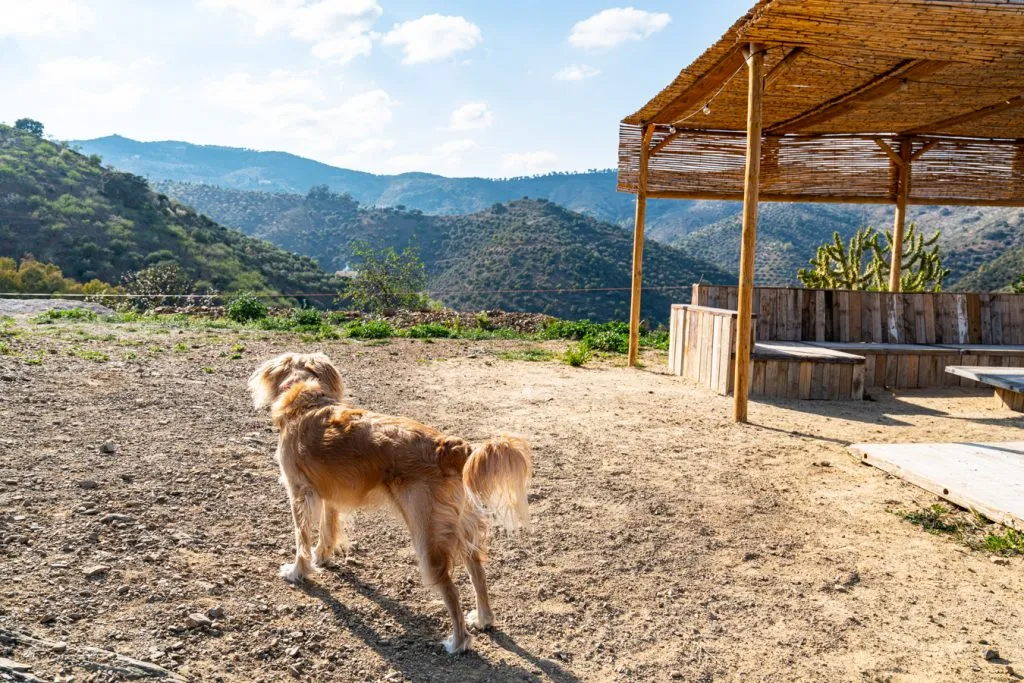
This southern Spain itinerary is specifically designed as a road trip, and we do strongly believe that driving is the best way to visit Andalucia!
From offbeat villages to charming hikes to out-of-the-way beaches, your trip to Andalucia will absolutely be enhanced by having your own set of wheels.
That being said, if you can’t or would rather not drive, you can still cover the vast majority of the sights included on this Andalucia road trip itinerary through a combination of public transportation and guided tours.
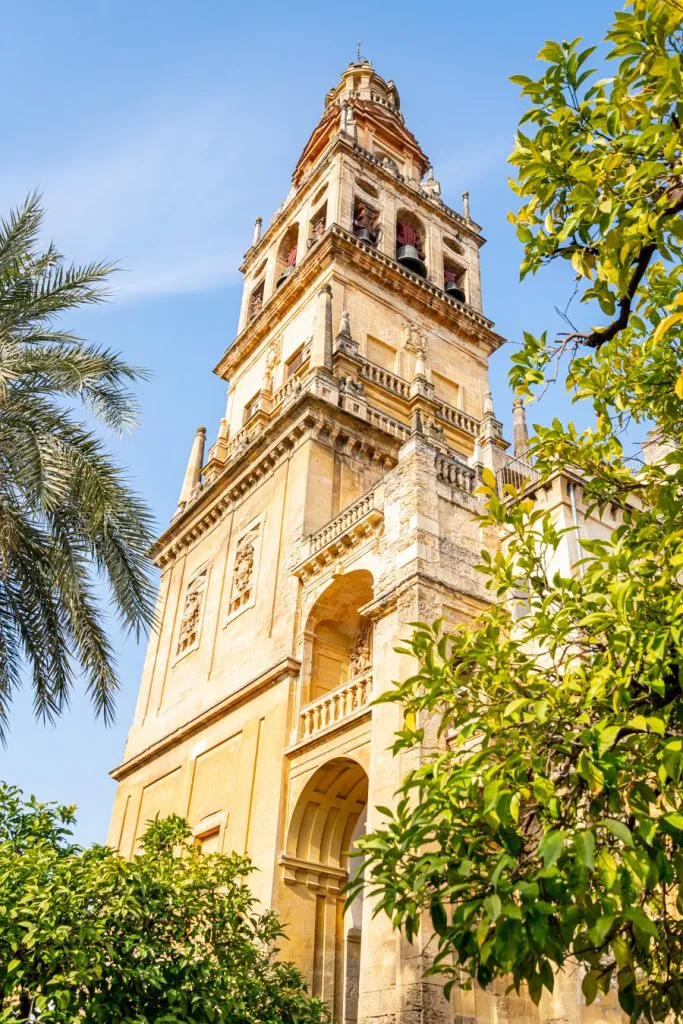
If you’re not planning to drive, we recommend basing yourself in larger cities like Seville, Granada, and Malaga, and taking day trips (independently, guided, or a combination of both) from there.
As much as we love Ronda, we wouldn’t recommend spending more than perhaps one night there without a car.
If you want to structure your itinerary for southern Spain without a car, we highly recommend using Omio to check exact ticket schedules and pricing for trains and buses in Andalucia!
Check schedules and shop train and bus tickets in Andalucia today!
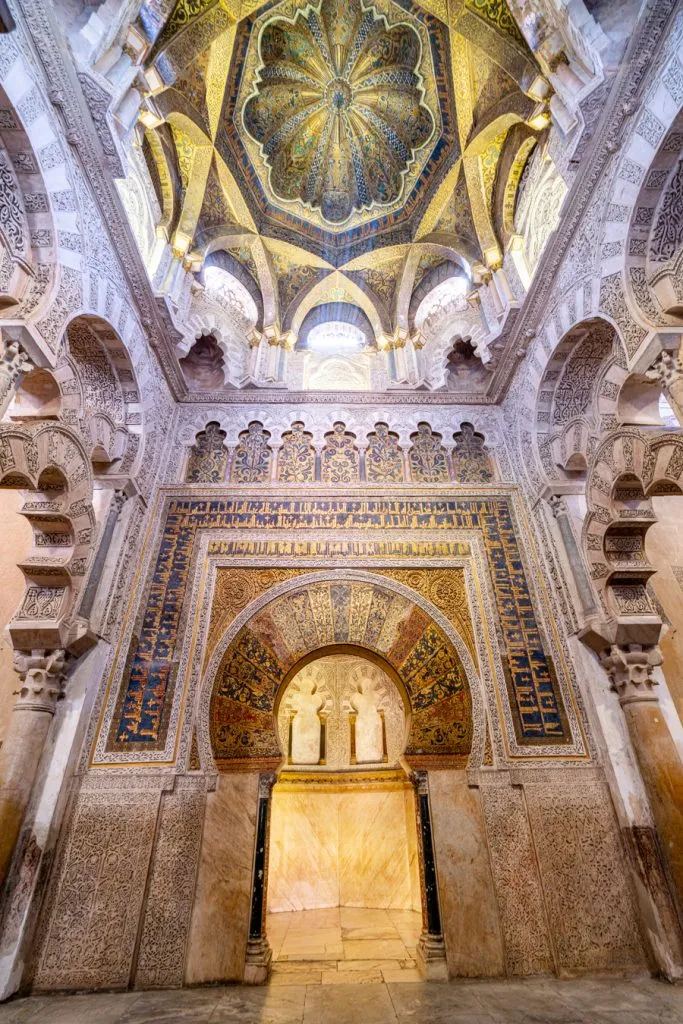
Day 1: Arrive in Seville and start exploring.
Starting your southern Spain travels in Seville means diving right into the heart of Andalucian culture!
Depending on what time your plane lands, kick off your Andalucia vacation with a visit to the Seville Cathedral–once the biggest church in the world–and a climb up its bell tower.
The Giralda (bell tower) not only includes a beautiful view but is part of Andalucian history.
Before the Reconquista (when Christian powers overtook the Moorish kingdom that once ruled this area), this bell tower was the minaret of a mosque on the same site.
When the sun starts to set, head out for tapas and tinto verano (similar to sangria, but less elaborate and beloved by locals).
We don’t recommend picking up your rental car until day 3 of this itinerary–you won’t need it when exploring the heart of Seville.
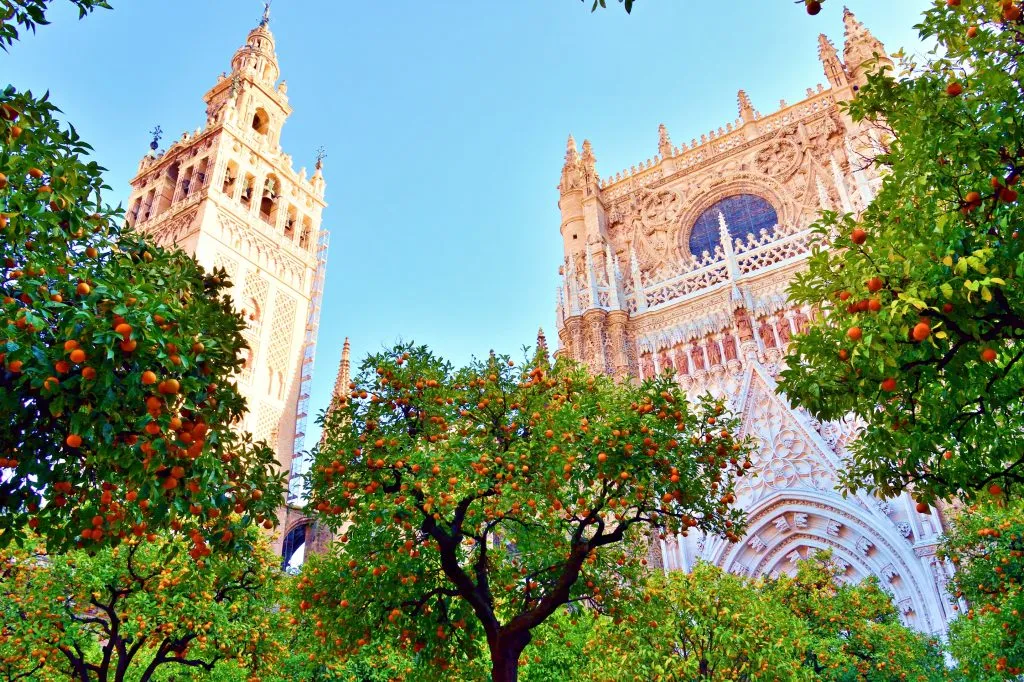
Where to Stay in Seville, Spain
When deciding where to stay in Seville, location is key as ideally, you’ll want to stay within walking distance of Seville’s best attractions.
We had a fantastic experience at Petit Palace Puerta de Triana on our most recent trip to Seville.
The hotel has a fantastic location (central but also quiet–a far from guaranteed combination in Spain), a delicious breakfast, and comfortable rooms.
Looking for something a bit different?
The incredibly popular Hotel Rey Alfonso X is an excellent choice, and their rooftop views are sublime!
If you’d like to stick to more of a budget, Hotel America Sevilla gets wonderful reviews and doesn’t sacrifice too much in terms of location.
Meanwhile, for the height of luxury, you can’t beat the absolutely stunning Hotel Alfonso XIII !
Check rates & book your stay in Seville today!
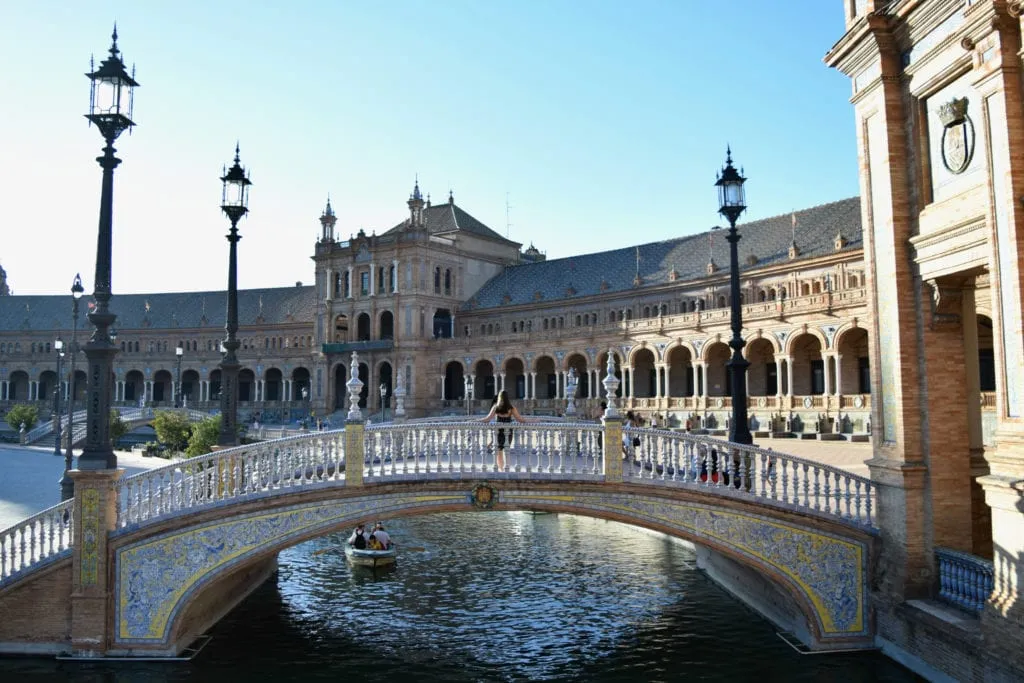
Day 2: Dive into Andalucian culture and history in Seville.
Today, it’s time to explore the rest of the major attractions in Seville!
Be sure to visit the famous Plaza de Espana, wander through the picturesque Barrio Santa Cruz (the former Jewish Quarter), and potentially see a Flamenco show .
Touring the gorgeous Alcazar is also a must: parts of this unique palace were built in the Moorish style, by Islamic craftsmen, for Christian rulers.
The result is a unique and beautiful combination of cultures that brings together several aspects of Andalucian history.
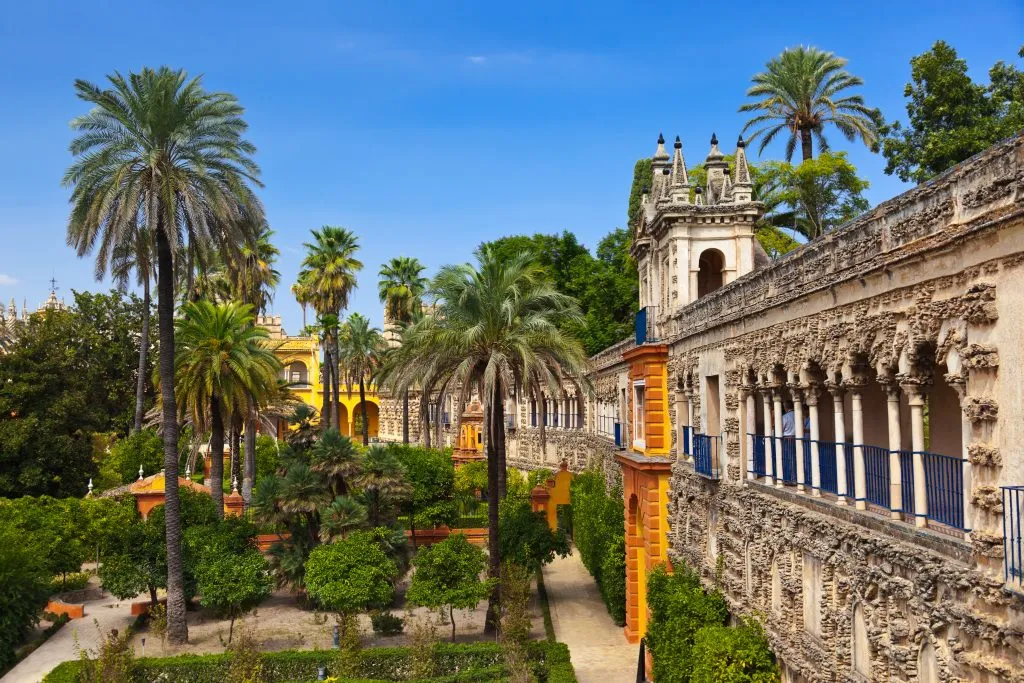
If you’re interested in experiencing more modern architecture in Seville, the famous Metropol Parasol is a fun spot with great views.
For foodies, we highly recommend taking a food tour in Seville on the first full day of your trip: not only is it incredibly fun, but it will help you know exactly what to order during the rest of your southern Spain itinerary!
And, if you’d like to explore the history of bullfighting in Spain, the Plaza de Toros is one of the most famous bullfighting rings in the world and can be toured (for obvious reasons, we do not recommend attending a fight).

Day 3: Explore Cordoba.
Today, pick up your rental car and hit the road to Cordoba!
Lying about 1 hour, 45 minutes northeast of Seville, Cordoba is famous for its incredible Mosque-Cathedral , which is exactly what it sounds like–a cathedral built literally inside a former Moorish mosque.
It’s one of the most unique houses of worship we’ve ever set foot in, and it alone would be worth visiting Cordoba for!
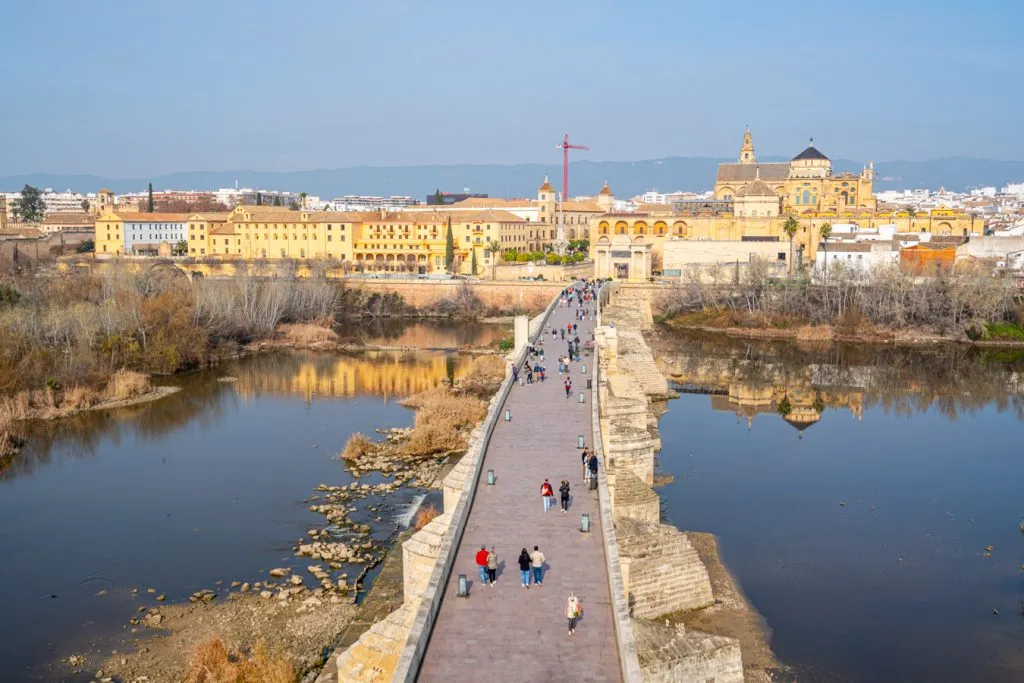
While Cordoba’s history dates back to the Romans (and you can stroll across the aptly named Roman Bridge while there), its Moorish period is responsible for much of the city’s stunning architecture and fame.
Cordoba peaked in the 10th century, when it was, for a brief moment, the biggest and one of the most powerful cities in the world.
In addition to the Mosque-Cathedral, be sure to explore Cordoba’s many flower-filled patios, check out the Alcazar of the Christian Monarchs, and visit the winding streets of the Jewish Quarter during your day in Cordoba.
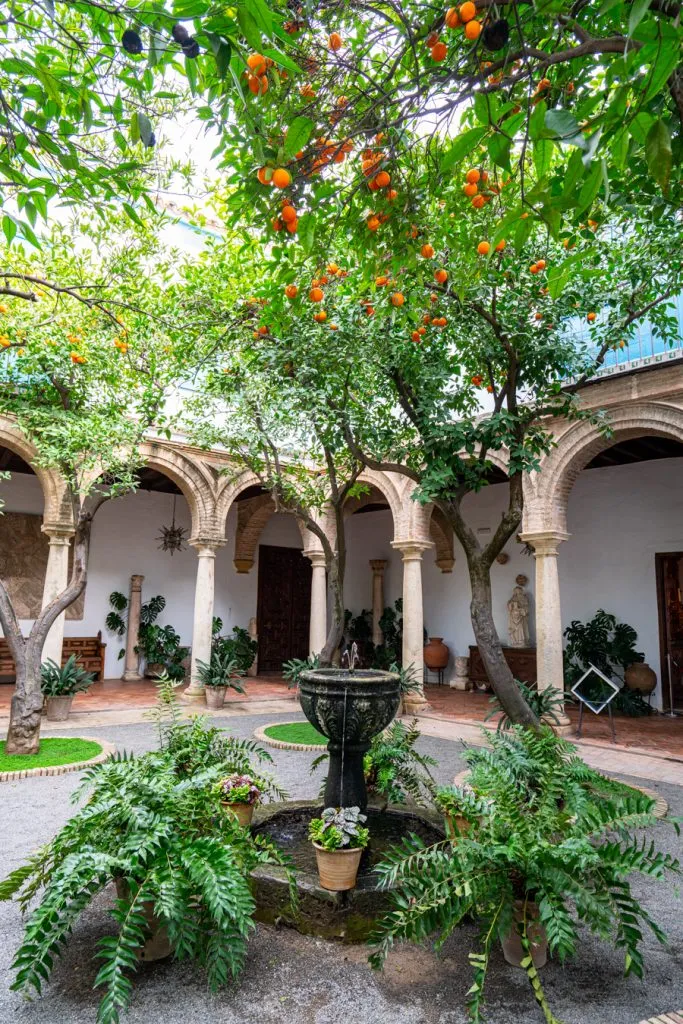
Where to Stay in Cordoba, Spain
We loved our stay at Hesperia Cordoba !
Set just over the river from Cordoba’s historic center and a very short walk from the Roman Bridge, Hesperia Cordoba features spacious rooms, excellent customer service, and a rooftop with one of the best views in the city.
For those traveling Andalucia on a budget, Cordoba Carpe Diem is a great option in the heart of the city.
And, if you’re looking to stay in a hotel so luxurious that it’s practically a museum, the popular Hospes Palacio del Bailio is the clear winner (it even features actual Roman ruins!).
Check rates & book your stay in Cordoba!
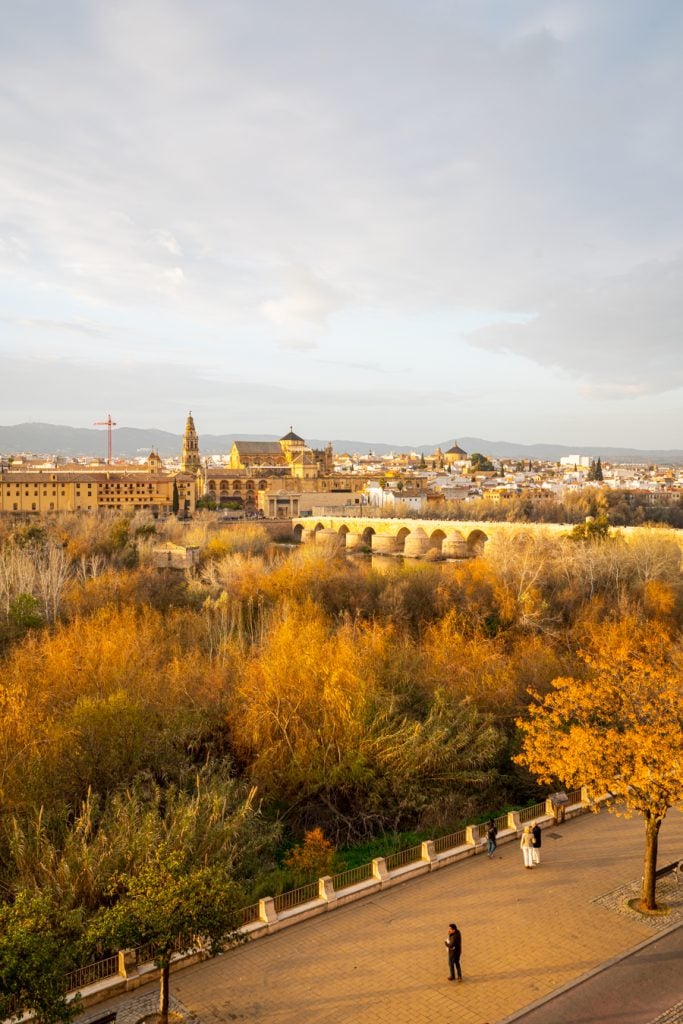
Day 4: Make your way to Granada.
Winding roads, stunning hilltop towns, and olive trees as far as the eye can see: these are the views that you’ll enjoy when driving from Cordoba to Granada on your Andalucia road trip!
If you’d like to add an extra stop or two to your morning, the Medina Azahara (a UNESCO World Heritage recognized archaeological site) and the Castle of Almodovar del Rio (a magnificent castle dating to 760 that was a Game of Thrones filming location) are both excellent options.
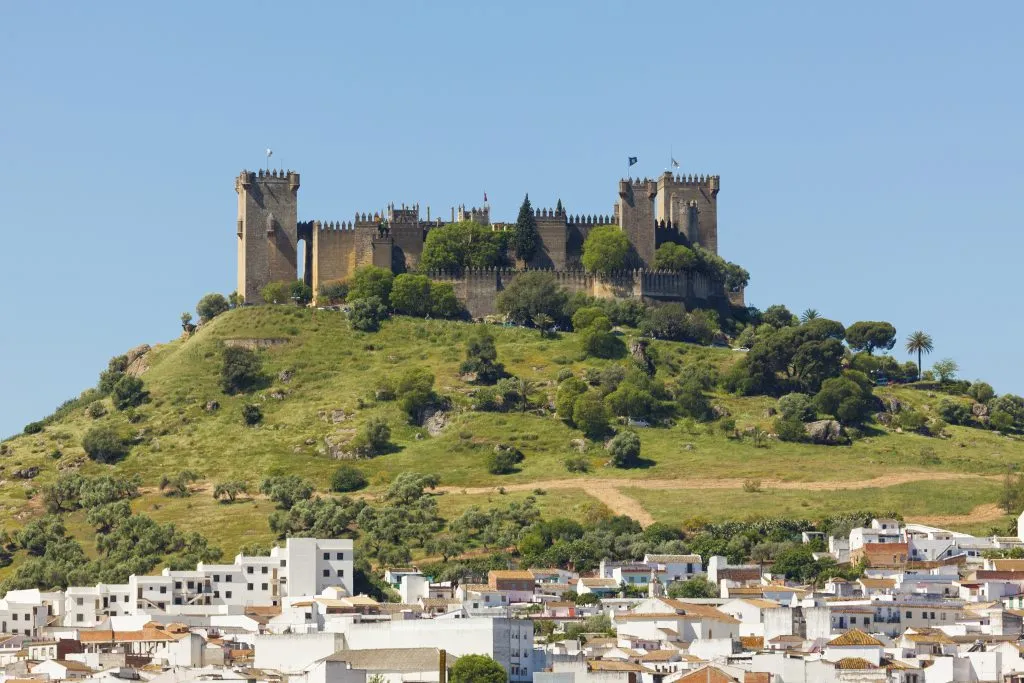
Both places are a bit out of the way, but as the drive between Cordoba and Granada is only about 2.5 hours long, you’ll have plenty of time if you’d like to stop.
Once you get to Granada, settle in and start sightseeing!
Depending on what time you get in, we recommend exploring the picturesque Albayzin (Arab Quarter), climbing up to the Mirador San Nicholas (it’s worth every step!), and enjoying plenty of tapas.
If you have time, consider heading up to Sacromonte to visit the interesting cave museum and to attend an an intimate flamenco show –the neighborhood is famous for them!
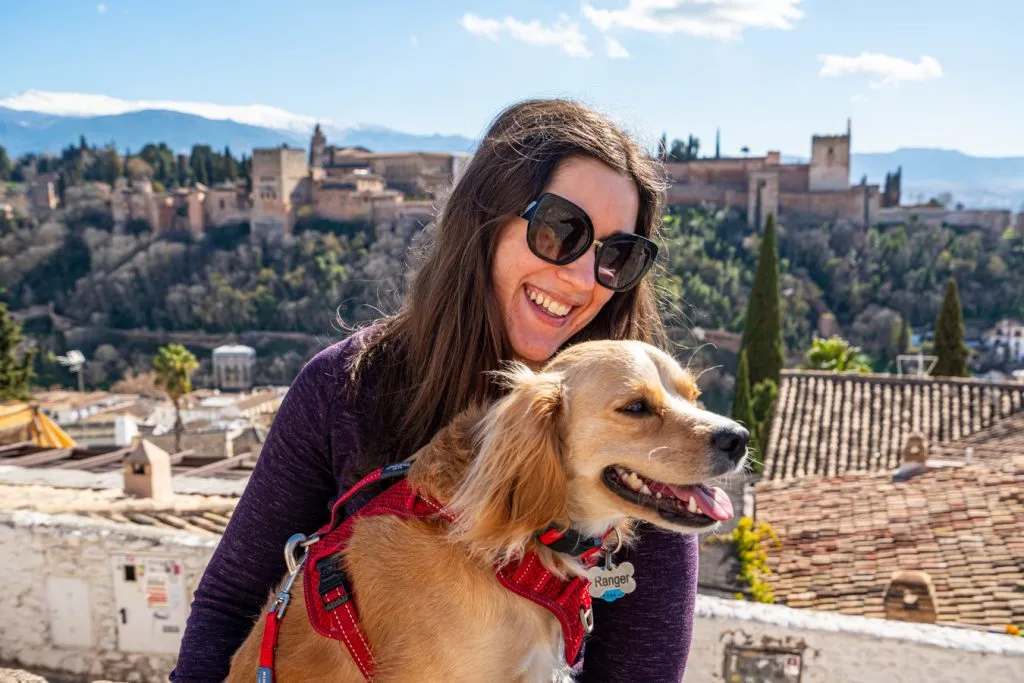
Where to Stay in Granada, Spain
We rented an apartment from Mosaiko Homes in Granada, and could not have had a better experience: the owner was responsive, the apartment fantastic, and the location unbeatable!
Mosaiko Homes is located on a quiet street a short walk from many of Granada’s top sights, offering the combination of a convenient location and a lack of noise at night–two things that can be difficult to find together in Andalucia!
Another excellent option with near-perfect reviews is the incredibly unique Casa de Reyes (that decor!).
For a bit of luxury, the popular Shine Albayzin is not only housed in a 16th-century palace, it overlooks the Alhambra !
Generally speaking, lodging in Granada is much more affordable than in, say, Seville or the resort towns of the Costa del Sol.
If you’re going to splurge on a luxury property during your 10 day southern Spain itinerary, Granada is a fantastic place to do so!
Check rates & book your stay in Granada!
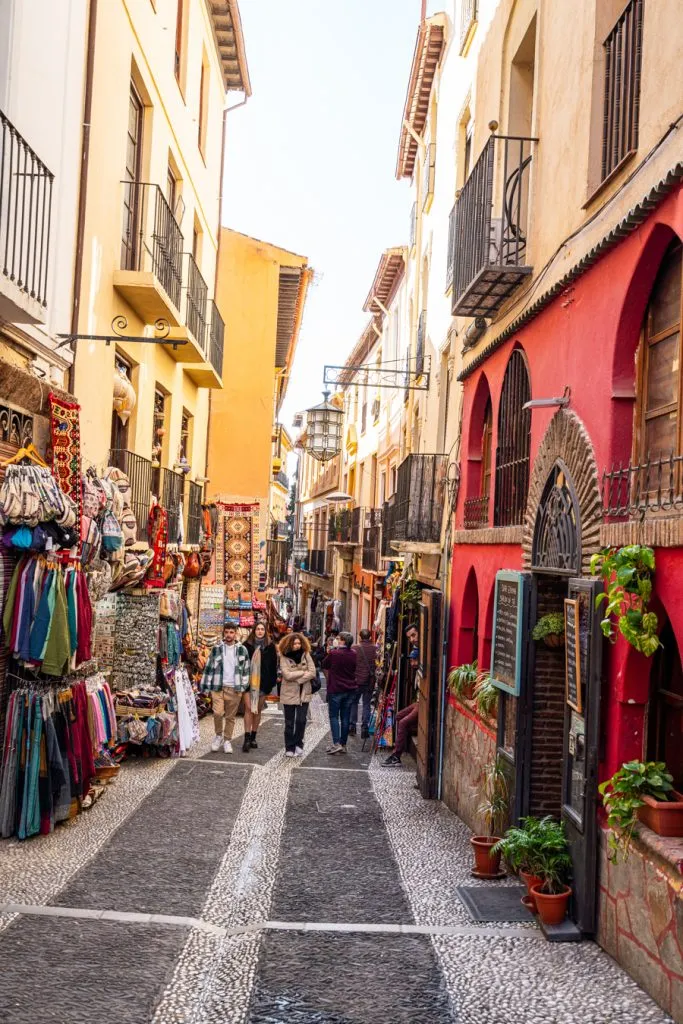
Day 5: Discover the Alhambra and other Granada gems.
On the fifth day of your road trip in Andalucia, it’s time to visit the region’s top attraction: the Alhambra!
While the Alhambra is most famous for its stunning Nasrid Palaces built by the Moors, there is an overwhelming amount of things to see at this iconic fortress.
From Generalife and its gardens (a summer retreat for the Nasrid dynasty) to the Alcazaba (the oldest portion of the fortress, which dates to the 1200s) and beyond, there are many sides to the Alhambra to visit.
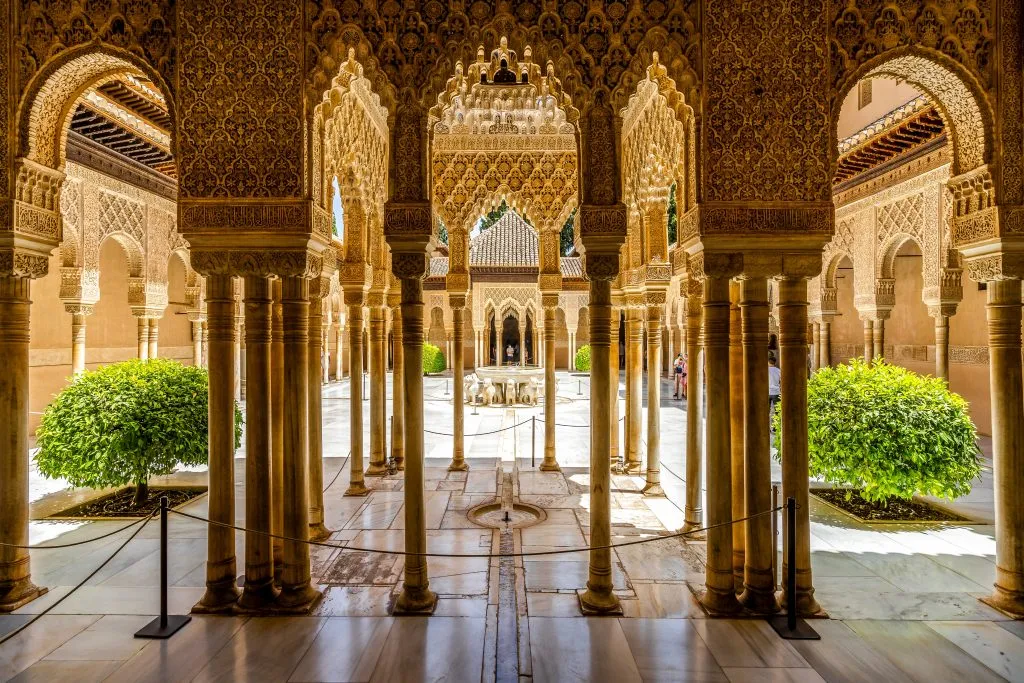
General tickets to the Alhambra are competitive and often sell out far in advance (you can check available dates here ), but luckily, organized tours and skip-the-line tickets (which are only slightly more expensive than general tickets) are very easy to come by.
Deciding whether to take a tour of the Alhambra or simply use an audio guide is a personal choice, and both have pros and cons.
We took this popular tour , and while we got frustrated with how much it dragged in certain places, we loved having the context of a live guide–especially in the Nasrid Palaces.
We also loved not having to manage the tightly controlled timed entry system for the Nasrid Palaces ourselves.
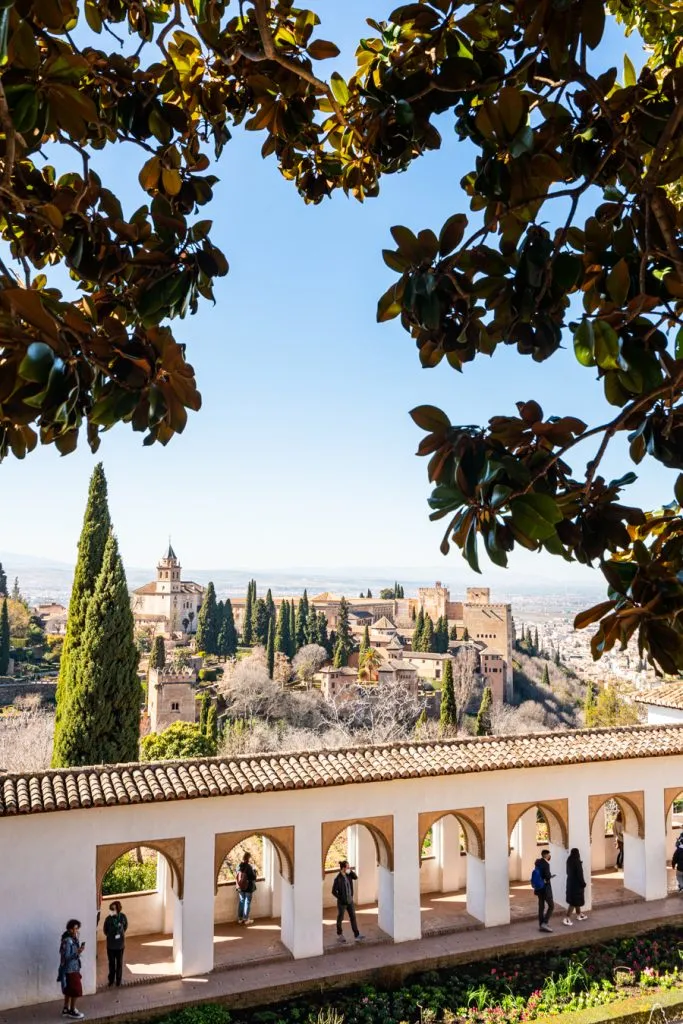
Keep in mind that not all Alhambra tickets include entry to the Nasrid Palaces.
Make sure that your ticket does, though, because they are truly the star of the show!
You will likely be exhausted after visiting the Alhambra, which makes this afternoon the perfect time to visit one of Andalucia’s gorgeous hammams.
Hammam Al Andalus is well-known, gorgeous, and accessible to English speakers. We loved our time there!
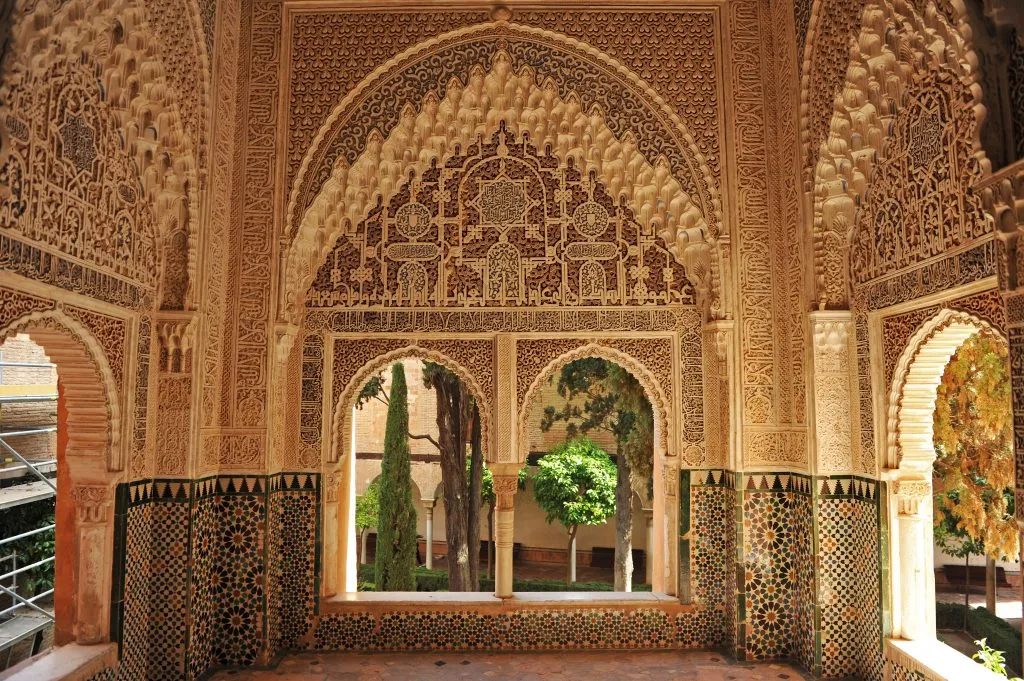
Day 6: Take the scenic route to Malaga (or nearby).
Today, start your morning by enjoying any sightseeing you haven’t had a chance to enjoy in Granada, such as visiting the stunning Granada Cathedral and Royal Crypt.
Depending on what time you get started in the morning and how much time you want to spend on the beach, you can also consider heading 20 minutes outside of Granada to enjoy the popular hanging bridges at Los Cahorros Gorge in Monachil.
From there, it’s time to make your way to the Costa del Sol: no southern Spain itinerary would be complete without soaking up some sun!
We recommend heading toward Malaga via the A-44 to A-7 route–it’s slightly longer than going the A-92 route, but you can’t beat the views driving along the Mediterranean for half the drive!
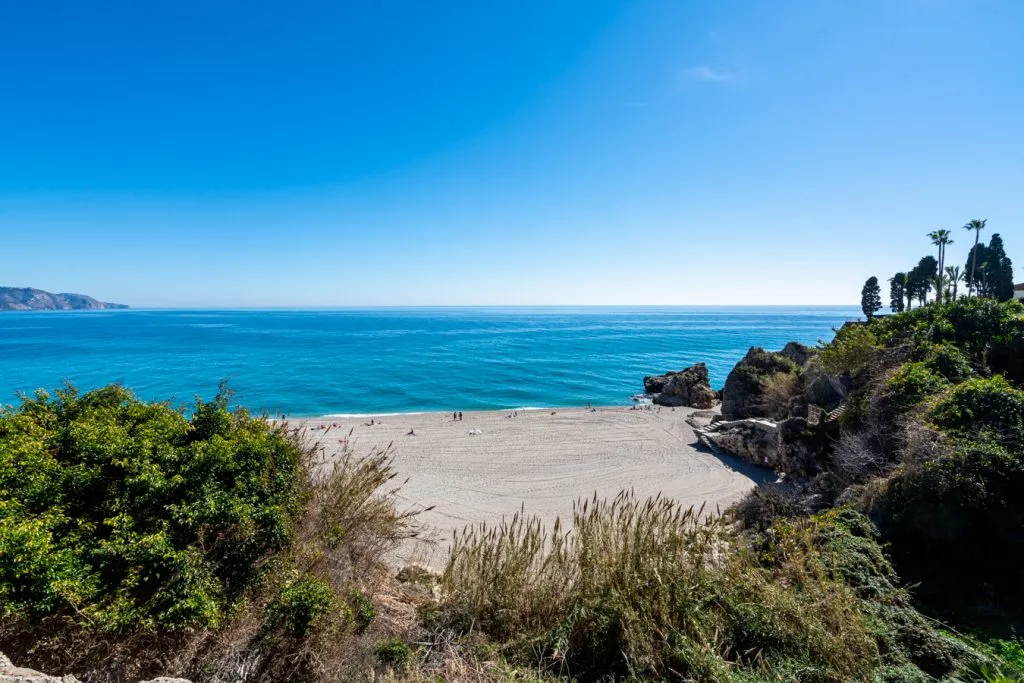
Day 7: Soak up the sun on the Costa del Sol.
There is an endless number of options when it comes to deciding what town to stay in on the Costa del Sol!
Malaga, the biggest city in the region, is perfect for those who want to potentially take an afternoon road trip to a nearby beach but want to dedicate most of their time to culture.
The best things to do in Malaga include visiting the celebrated Picasso Museum, Alcazaba , Roman Theatre, Cathedral, and beyond, which make for a compelling, but not beachy, trip.
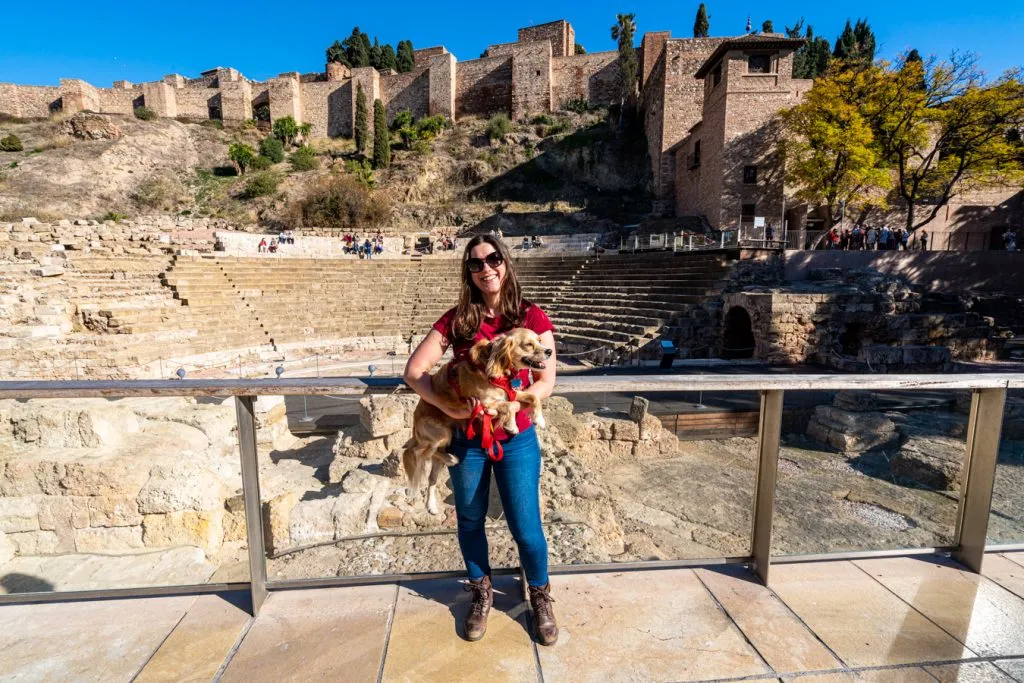
If you’re looking for idyllic beaches, Nerja is the place to go (that’s where the above photo was snapped!).
A beautiful resort town with a promenade?
Estepona might be right for you.
No matter where you end up staying, make sure that you spend at least part of the day admiring views of the Mediterranean with a gelato or glass of tinto verano (or both) in hand.
Since you’re visiting via a Costa del Sol road trip, you can also easily stay in one town and squeeze in a quick afternoon visit to another!
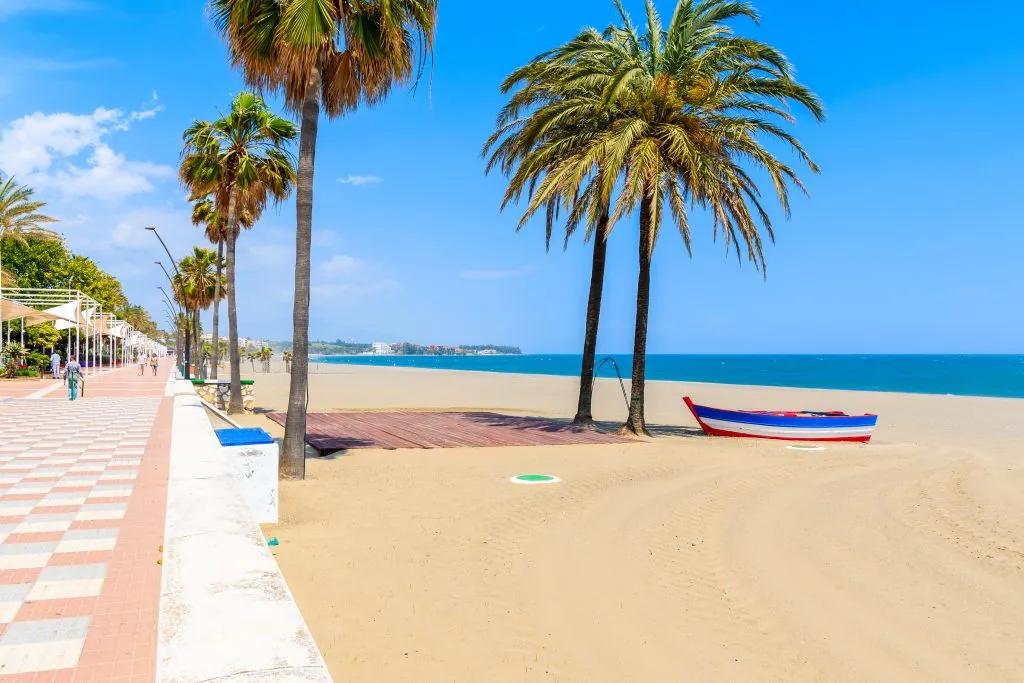
Day 8: Continue your Andalucia road trip and head to Ronda.
Last but certainly not least, say goodbye to the Costa del Sol and head north again to Ronda , one of our absolute favorite places in Spain.
Situated on a ridge, Ronda features sweeping views, a gorge, an 18th-century bridge that is earnestly referred to as the “New Bridge”, ties to the Lost Generation, and idyllic whitewashed streets–and that’s without even leaving the town center.
Much smaller than Seville or Granada, Ronda is nonetheless well worth savoring.
Once you arrive, start by exploring a few of the best things to do in Ronda, such as visiting the Cuenca Gardens, marveling at Puerto Nuevo (and Puerto Viejo and the Arab Bridge, while you’re at it), and visiting the historic Arab Baths (now a museum, though there is also a functioning hammam in Ronda!).
For sunset, there is absolutely no better place to be than admiring the views of Puerto Nuevo and the surrounding landscape from the Alameda del Tejo!
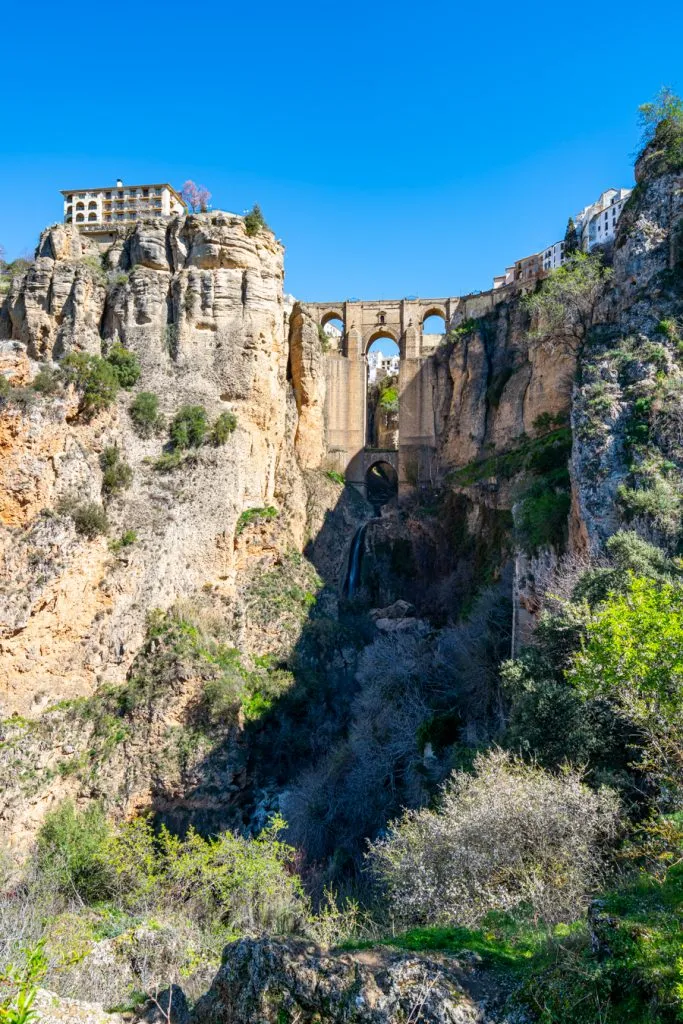
Where to Stay in Ronda, Spain
We can’t rave about our stay at Catalonia Reina Victoria in Ronda enough–it may just be one of our favorite hotels we’ve ever stayed in!
Unbeatable views over the countryside (we upgraded to a terrace room, which was absolutely worth it), excellent customer service, comfortable rooms, easy parking on site, and walking distance to all the best things to do in Ronda–it’s hard to beat that!
The popular Hotel Montelirio , with views of the Puerto Nuevo, is also a great option.
However, as Ronda is the last stop on your Andalucia road trip and finding parking in the city center is fairly simple, you may want to go the complete opposite route and stay in a country hotel just outside of town!
The beautiful and well-reviewed Hotel Cortijo Las Piletas is located a 15-minute drive from Ronda, offers a pool, gorgeous views, and a bit of peace and quiet to end your trip with.
Check rates & book your stay in Ronda today!
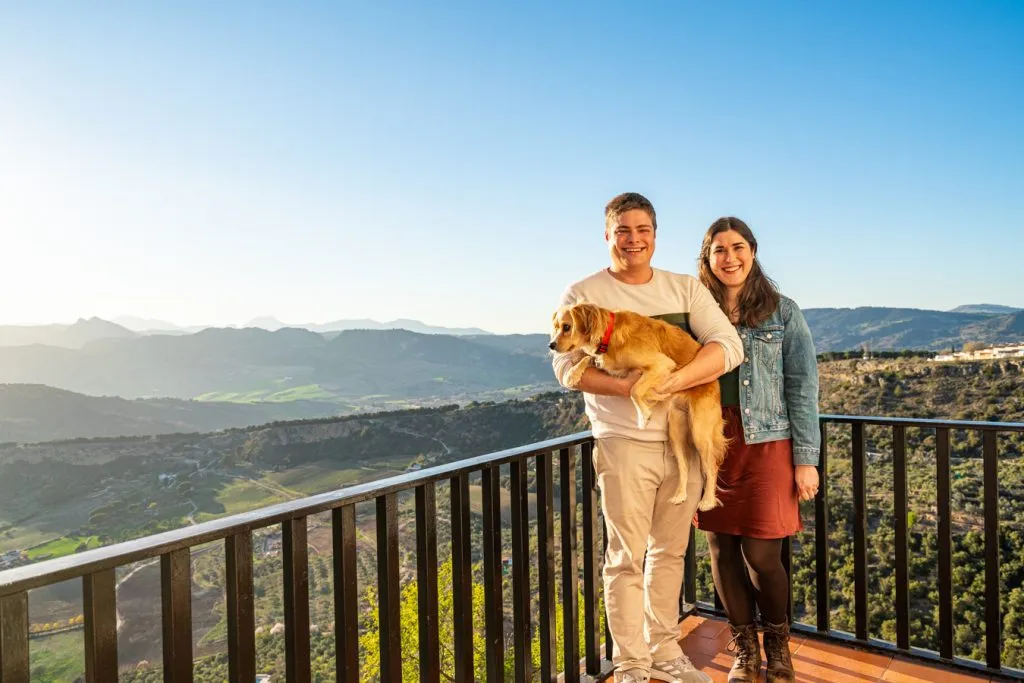
Day 9: Explore unique places to visit near Ronda.
In addition to being a fantastic town to visit in its own right, Ronda is also surrounded by excellent day trip options!
Our first choice would undoubtedly be a visit to Setenil de las Bodegas: if you only have time to visit one place outside of Ronda, make it here.
This historic town features many homes and businesses built directly into the surrounding gorge, and the result is one of the most unique towns we have ever laid eyes on!
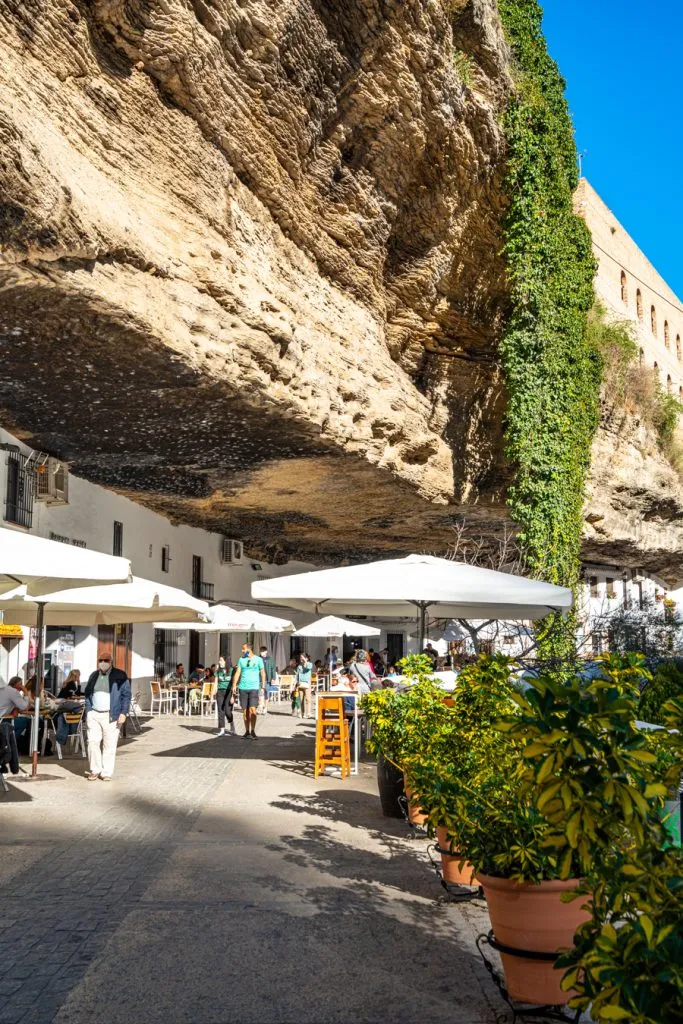
Other fun places to visit include Juzcar (also known as Spain’s “Smurf Village”–it is painted entirely blue!), and the Cueva del Gato swimming hole.
If you want a unique perspective on Ronda’s famous Puerto Nuevo, you can also drive to the bottom of the ridge and view it from an entirely different angle (keep in mind that there are some tiny dirt roads involved here, but it is doable).
Looking to ditch the car entirely?
You can find plenty of horseback riding tours in the area!
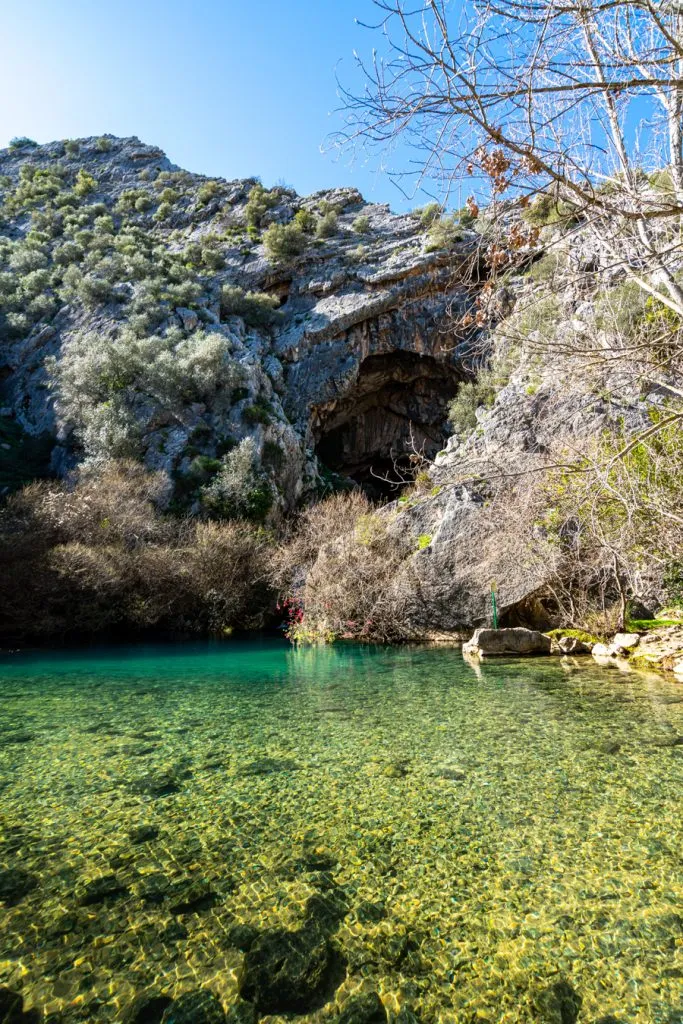
Day 10: Head back to Seville and wrap up your 10 day southern Spain itinerary.
It’s time to wrap up your Andalucia road trip!
Today, make your way back to Seville to drop off your rental car and head home.
If you have time for a little extra sightseeing, consider spending the morning visiting any attractions you didn’t get a chance to see in Ronda or Seville.
Or, for an incredibly relaxing end to your 10 days in southern Spain, book yourself a visit to a hammam in either city!
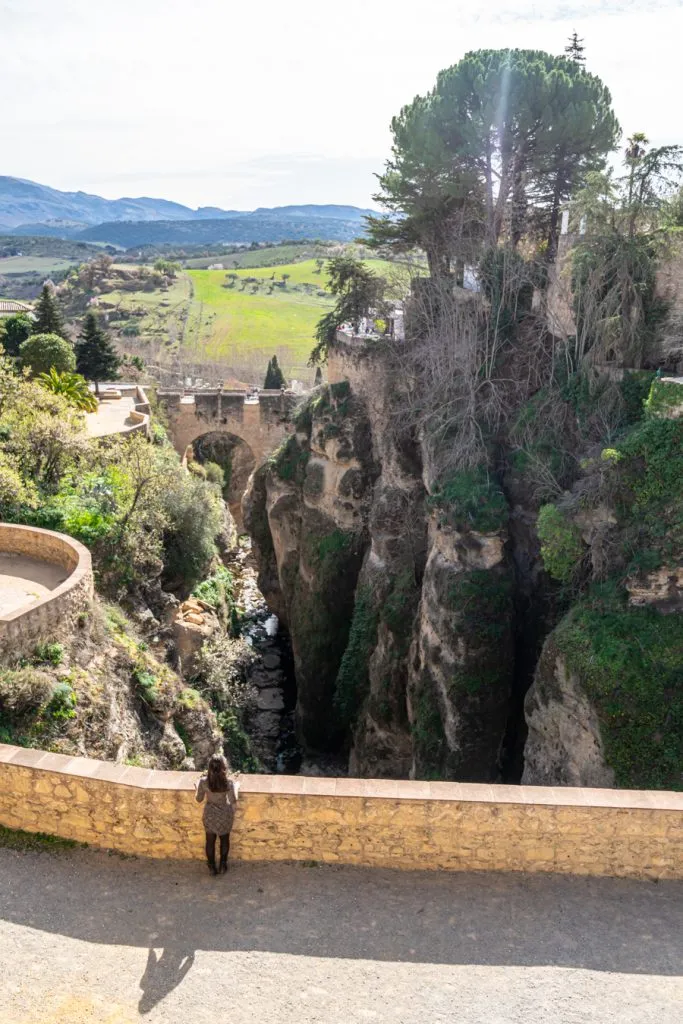
A mere 10 days in Andalucia could never hope to cover every incredible destination that southern Spain has to offer!
If you’re lucky enough to have a longer timeframe to work with, here are a few more places to consider adding to your itinerary for southern Spain, from beach towns to mountainous parks.
Over 3,000 years old and almost entirely surrounded by water, Cadiz is visually stunning and historically fascinating.
It’s fairly small, given that it is physically constrained by its location, but packed with interesting sights, including over 100 watchtowers!
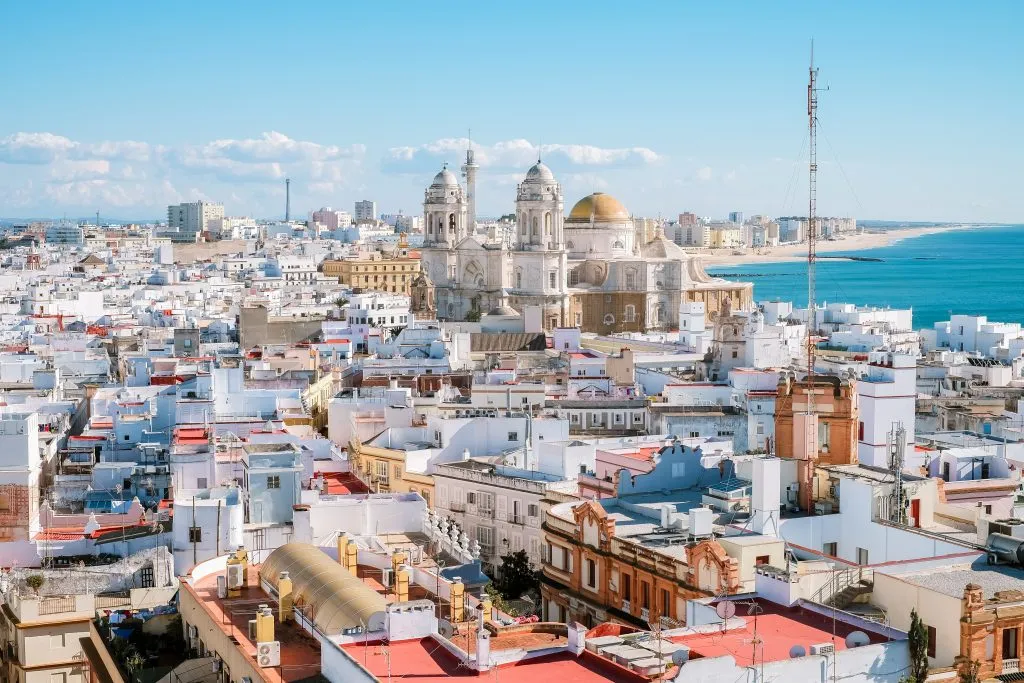
Technically speaking, your Andalucia road trip doesn’t have to only take place in Spain!
Head to Gibraltar to enjoy views from the famous Rock of Gibraltar, check out the resident wild monkeys, and enjoy the excuse to walk (literally) across the border of Spain to the UK.
Don’t forget to pack your passport!
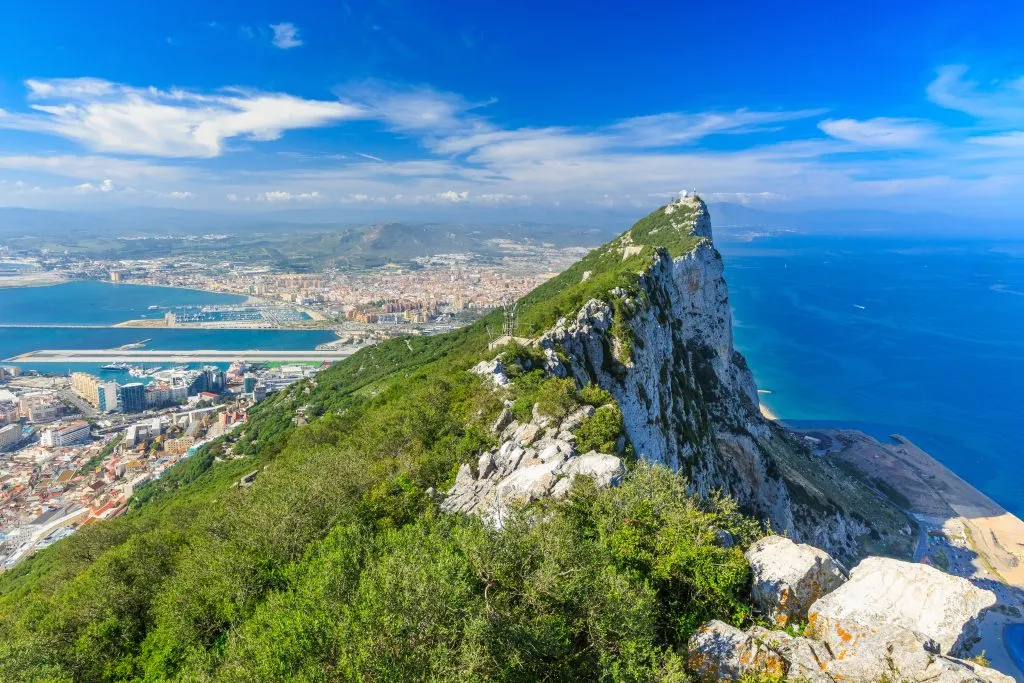
Jerez de la Frontera
A great alternative to cities like Seville, Jerez de la Frontera offers many of the usual Andalucia highlights–Moorish castle, riding school, festivals–but is (slightly) more off the beaten path.
It’s also famous for its sherry production, making it a fun stop for spirit lovers!
Sierra Nevada National Park
Offering skiing in the winter, hiking in the summer, and gorgeous mountain views year-round, Sierra Nevada National Park makes an excellent addition to an itinerary for southern Spain for those looking for a place to relax in nature.
Located just east of Granada, Sierra Nevada National Park is easy to add to this itinerary–or, if you’re not much of a beach person, you can even swap the Costa del Sol for some time here!
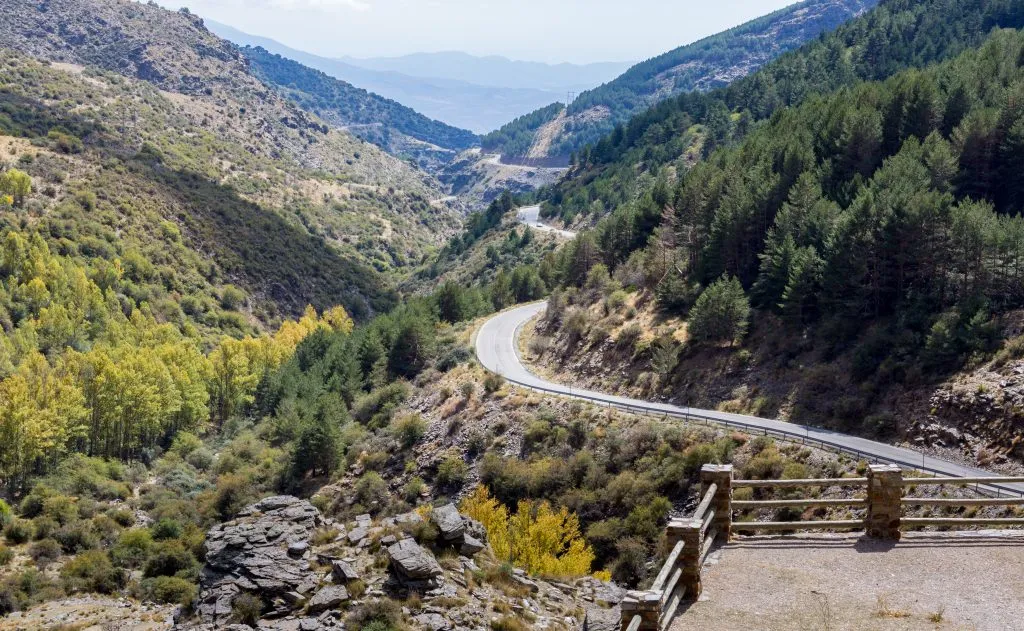
Puerto Banus
Looking for luxurious yachts, high-end nightclubs, and–essentially–the Spanish version of St. Tropez or Monaco?
Head to Puerto Banus, just next door to Marbella, and you’ll find exactly what you’re looking for.
Start by checking out the Golden Mile!
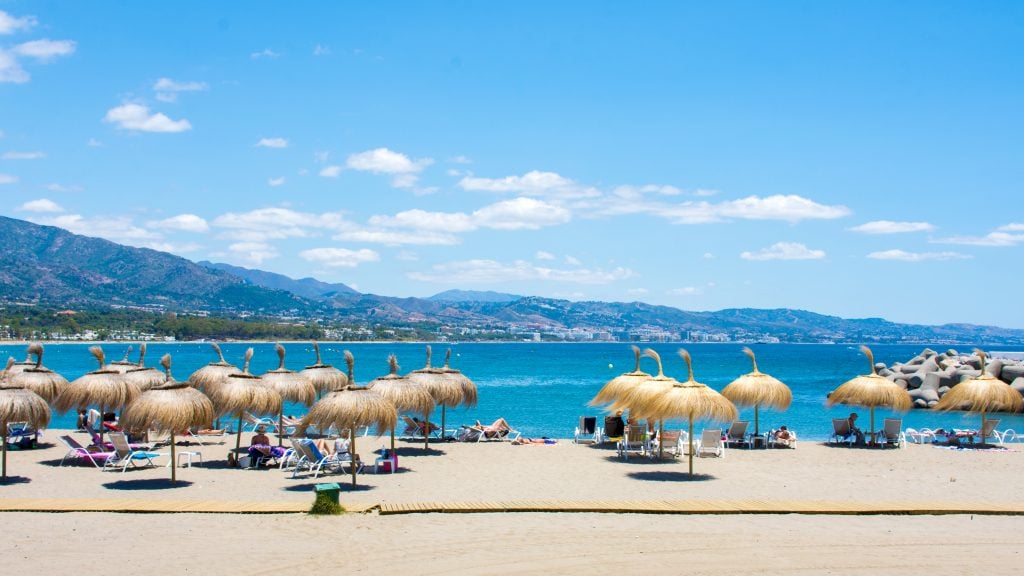
Arcos de la Frontera
Surrounded by the Guadalete River on 3 sides and–like Ronda–situated on the edge of a ridge, Arcos de la Frontera is visually stunning and one of the best whitewashed towns (pueblos blancos) to visit in Andalucia.
Don’t miss the views from the Castillo de los Arcos while you’re there!
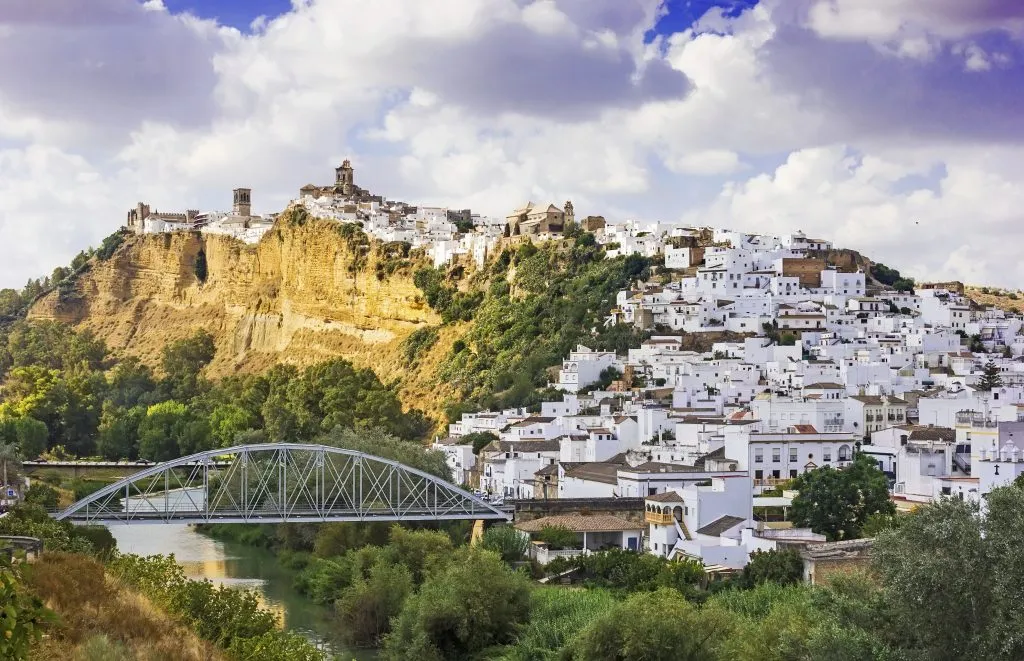
Located at the far southern tip of the Iberian Peninsula, Tarifa is far enough out of the way that it doesn’t see quite as many visitors as the famous Costa del Sol (among those who aren’t kitesurfing enthusiasts, anyway)–but it’s absolutely worth a visit.
Featuring wide, sandy beaches famous for kitesurfing and a charming whitewashed town center, Tarifa is a laid-back delight.
It also lies a short ferry ride away from Morocco , and you can take a day trip to Tangiers as part of your time there!
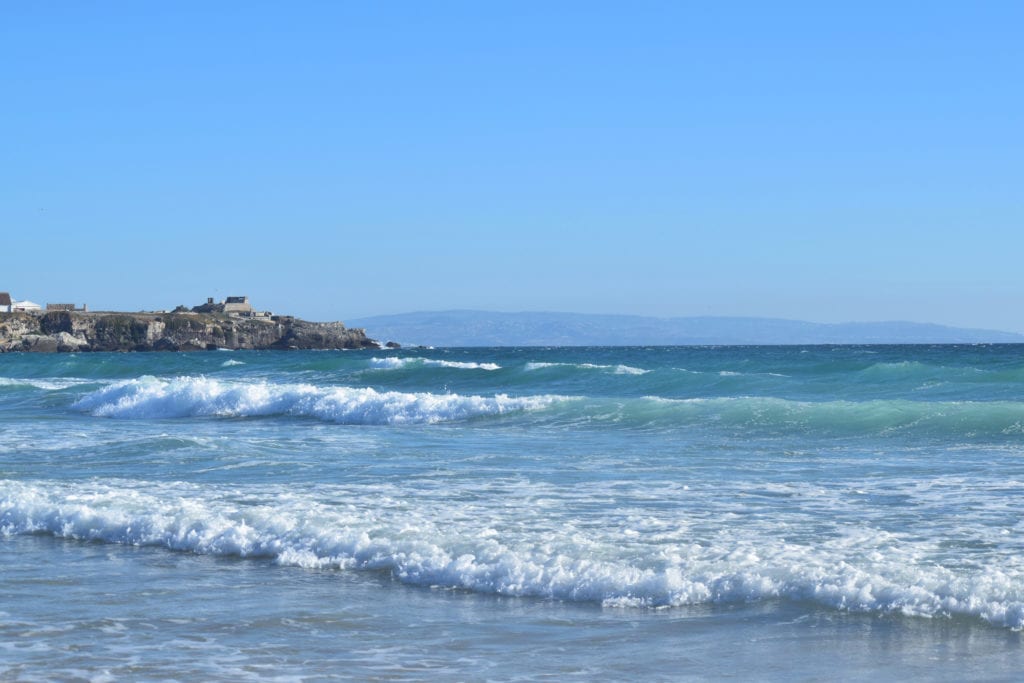
El Caminito del Rey
With stunning gorge views and adrenaline-inducing heights, El Caminito del Rey is one of the most iconic hikes in Andalucia!
A decade ago, it was often touted as being the most dangerous hike in Spain–or even the world–but it has now been restored to be much more accessible.
… For those of us with a fear of heights, though, it can still pose a mental challenge!
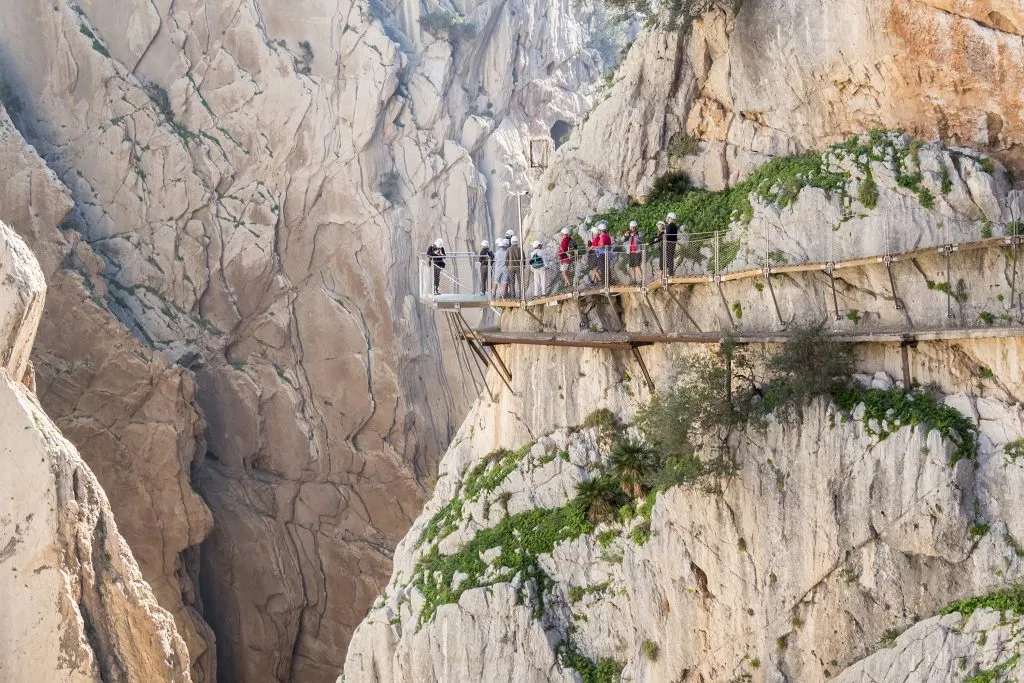
Andalucia can be a year-round destination–if you can brave the summer heat, that is.
Southern Spain, particularly cities like Cordoba and Seville, are known for being some of the hottest places in Europe.
Summer temperatures can easily reach 98°F (36°C) in the inland cities, which is why during July and August, you’ll find the crowds down at the Costa del Sol, where the temperatures are milder and there’s the Mediterranean to cool off in.
Ideally, this itinerary for southern Spain is designed for the spring or fall, when temperatures are warm but reasonable, the sun is usually shining, and the flowers are in bloom everywhere you look.
If you’re willing to bundle up a bit, winter can also be a wonderful time to take this Andalucia road trip.
The prices and crowds will both be smaller, and if you’re so inclined, you can even go skiing in Sierra Nevada near Granada–the southernmost ski area in Europe!
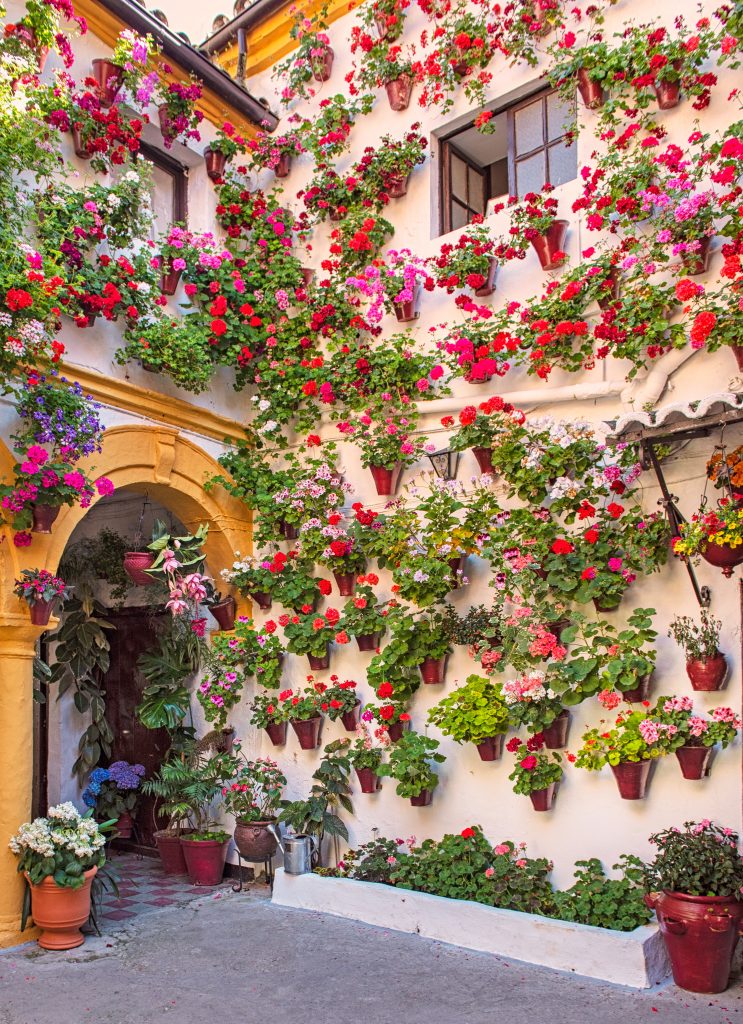
Here are a few essentials you should definitely add to your packing list as you prepare for your road trip in Andalucia, Spain!
Travel Insurance — We don’t ever suggest traveling without travel insurance–anything can happen, and a fast-paced road trip is definitely a case of better safe than sorry.
We use and recommend Safety Wing for trips to Spain.
Travel Adaptors for Spain — If you’re coming from outside of Europe, you’ll definitely need adaptors for your electronics.
Hands-Free Phone Mount — This is especially important if you don’t have a reliable co-pilot: the last thing you want to do is be fumbling with the GPS on your phone during your road trip in Andalucia.
Pack a cell phone holder to attach to the car and you’ll be able to drive much more safely!
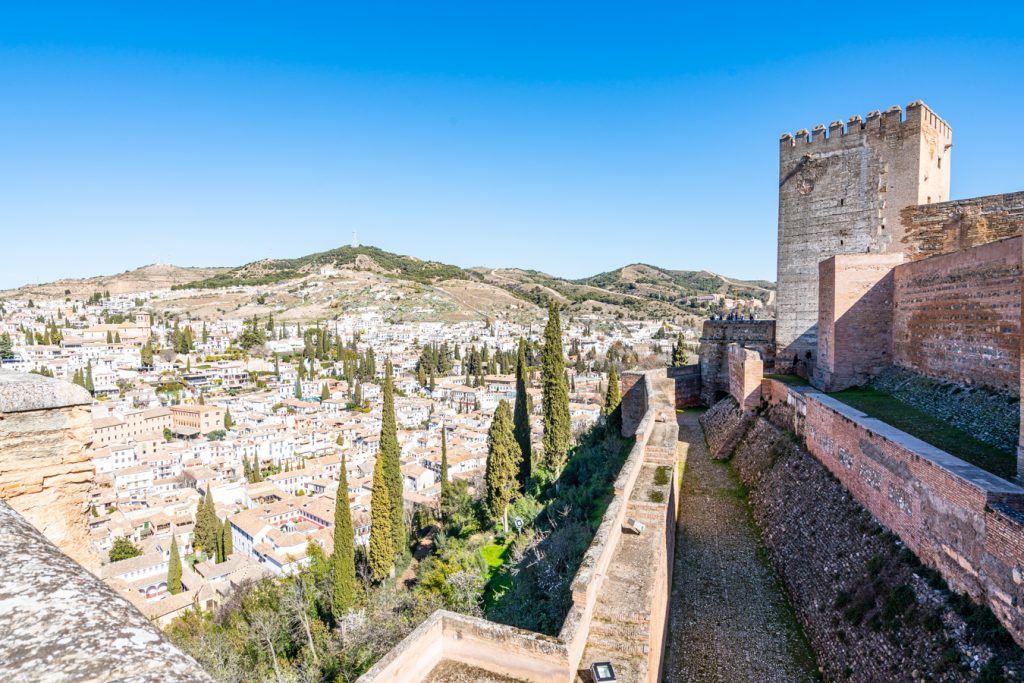
Additional Car Insurance — Whether you purchase a policy that covers car rental (only some of theirs do, so double-check!), purchase a policy through the rental car company, or something else, be sure you have coverage: it’s worth the peace of mind.
Portable USB Charger — Don’t stress about your phone dying while you’re spending long days driving from village to village: add a portable charger to your southern Spain packing list.
Swiss Army Knife — Want to open wine bottles in your hotel room, slice cheese from the market, or cut up that fresh bread from the bakery?
You’ll be so glad you brought a Swiss Army Knife along on your Andalucia vacation!
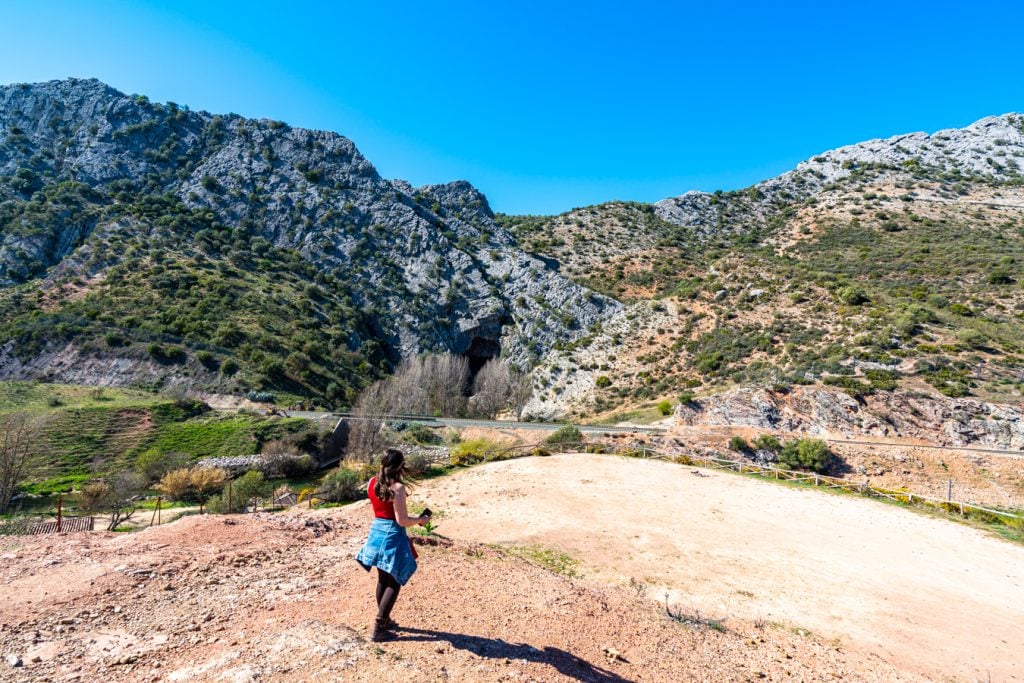
Camera — We absolutely adore our Sony a7R III , but whatever camera you’re comfortable with works.
Just make sure you have something with you to preserve your memories!
Reusable Water Bottle(s) — Cut down on plastic waste, save money, and make sure you don’t have to stop for water constantly: a reusable water bottle has lots of benefits on a road trip. We personally love and use these .
Hand Sanitizer — We carry this everywhere, and have never been sorry to have it floating around in our day bag.
Take This Map With You! Click each highlight to pull up the name of the destination. To save this map to “Your Places” on Google Maps, click the star to the right of the title. You’ll then be able to find it under the Maps tab of your Google Maps account! To open the map in a new window, click the button on the top right of the map.
[convertkit form=3127238]
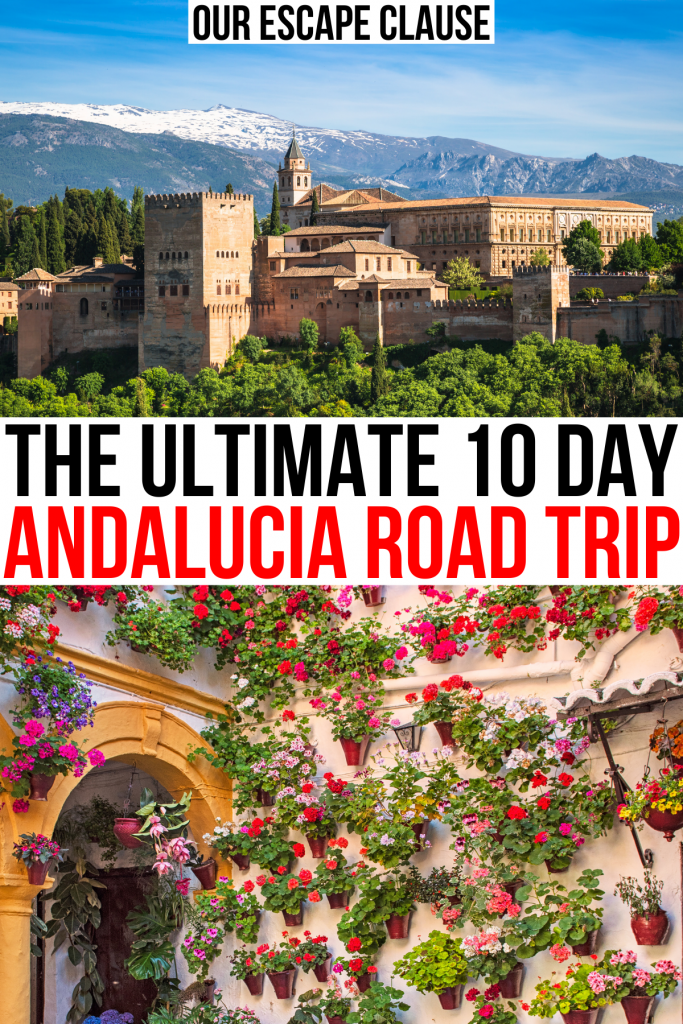
About Kate Storm

In May 2016, I left my suburban life in the USA and became a full-time traveler. Since then, I have visited 50+ countries on 5 continents and lived in Portugal, developing a special love of traveling in Europe (especially Italy) along the way. Today, along with my husband Jeremy and dog Ranger, I’m working toward my eventual goal of splitting my life between Europe and the USA.
6 thoughts on “The Ultimate Andalucia Road Trip (Detailed Southern Spain Itinerary!)”
beautiful, do you sell a map of this
We don’t sell a map or printable version of this itinerary (yet), but you can click on the button at the top right of the map embedded at the bottom of this article and download it to take with you!
This is exactly the trip we plan to take this fall. Thank you for this great guide! Are the places you reccommend to stay pet friendly? It appeared your were travelling with your dog and we are also travrling with ours. Gracias!
Yes, all of the places we mention staying at personally in Andalucia are pet-friendly and Ranger stayed with us at all of them!
I can’t speak to the alternative suggestions provided, as I don’t source pet-friendly hotels specifically for those (very few of our readers travel with their dogs).
Have a wonderful trip!
Hi Kate, It seems finally I have found the perfect road trip for southern Spain. I plan to go early December or maybe in Jan-Feb. I would like to add 3-4 days to the trip. Could you recommend how to do that? Regards, Amitabh
The sky is the limit!
Beyond the destinations I outlined in the “other destinations” section of the post, you could potentially consider adding on a few days in Morocco with a longer timeline.
You can also easily add more days to any of the destinations included in the itinerary. There’s lots of great hiking around Granada, for example, and of course there’s always the option of enjoying even more beach time along the Costa del Sol.
Leave a Comment Cancel reply
Travel Safe
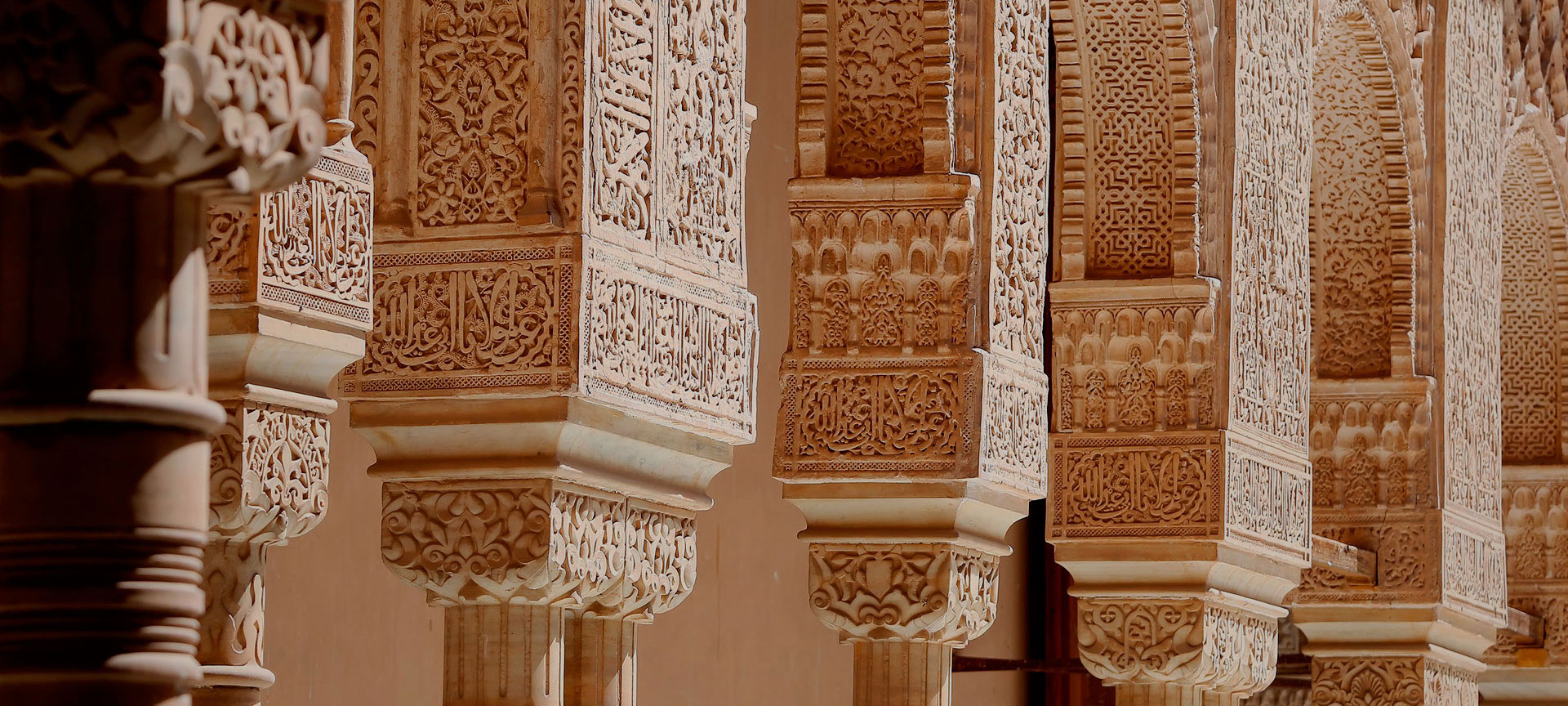
This is a land of culture, history, fiestas, nature areas and excellent food. You’ll be able to visit everything from outstanding monuments to a wide variety of different natural landscapes… and you'll have the chance to take part in several unique popular events and sample a range of delicious gastronomic products.
One way to discover the culture of Andalusia is by exploring the sites which have been awarded the UNESCO World Heritage designation. In Granada, you’ll see the Alhambra palace, the Generalife gardens and the mediaeval Albaicín neighbourhood; in Cordoba, its historic centre with the great Mosque; in Seville, the cathedral, the Alcázar palace and the Indies Archive; and in Jaén, the monumental sites of Úbeda and Baeza. You’ll also be able to experience festivals such as Easter Week, the Carnival in Cadiz, the Rocío pilgrimage in Huelva and the April Fair in Seville.
You'll find a variety of natural landscapes which range from the beaches of the Costa del Sol, Costa de la Luz and Almería to the extensive olive groves of Jaén. You can visit the Doñana National Park –also declared a World Heritage Site–, or go skiing in the Sierra Nevada ski resort. Finally, remember that Andalusia has a thousand different flavours waiting to be tried. From the sherries of Jerez (Cadiz) and Montilla – Moriles (Cordoba), to the classic platters of fresh fried fish known as “pescaíto frito” from Cadiz and Malaga, cured ham from Huelva and Cordoba, olive oil, and other such typical dishes as gazpacho and “salmorejo” (a kind of thicker gazpacho).
Empresa Pública para la Gestión del Turismo y del Deporte de Andalucía, S.A. (Public Company for the Management of Tourism and Sport in Andalusia)
Parador de San Rafael, C/ Compañía, 40 (Málaga)

+34 951 299 300
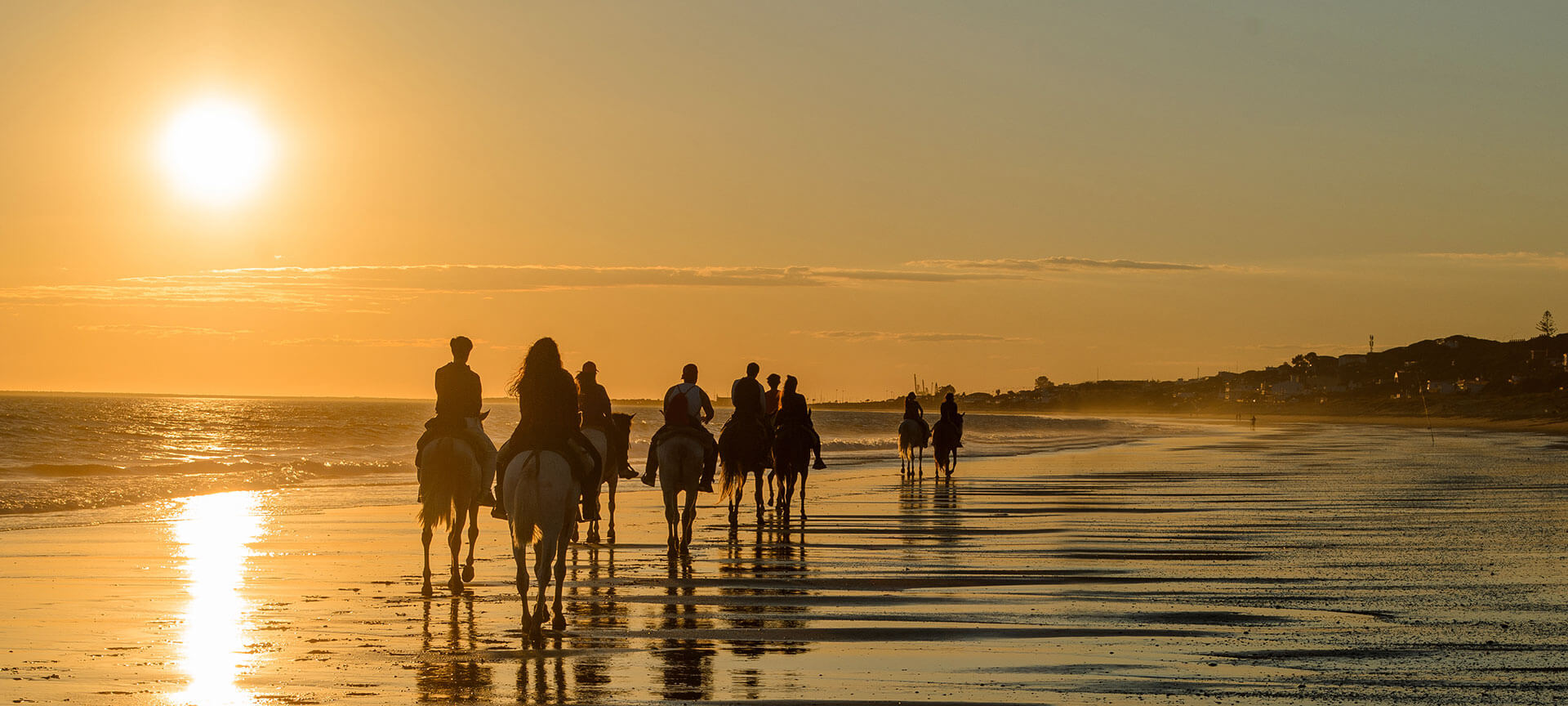
Get to know the provinces of Andalusia
Huelva (Province)
Jaén (Province)
Malaga (Province)
Seville (Province)
Almería (Province)
Cádiz (Province)
Córdoba (Province)
Granada (Province)
Huelva's cultural attractions include its Baroque architecture in the Condado area, and the Columbus Route of the sites connected with Christopher Columbus (Moguer, Huelva, Palos de la Frontera; from…
This is the home "par excellence" of olive oil, and there are olive groves covering as much as two thirds of the cultivated land in the province.…
The province lies on the shores of the Mediterranean Sea, and has 160 km of coastline with a multitude of beaches and marinas.…
The province is the setting for two outstanding festivities which are famous for their colour and passion: the April Fair and the Easter Week religious processions, both declared to be of International…
Of particular interest are the Sierra María-Los Vélez Nature Reserve, with its castle, and the Cabo de Gata-Níjar Reserve, with its endless unspoilt beaches and cliffs.…
It has festivals of International Tourist Interest as the prestigious Carnival of Cadiz, the unique horse racing events on the beach at Sanlúcar de Barrameda, and the elegant Horse Fair in Jerez de la…
It is well worth exploring its stately white villages, olive groves and mountain landscapes in places such as the Sierra de Hornachuelos and the Sierras de Cardeña and Montoro Nature Reserves.…
In winter, the province offers the chance to ski while enjoying views of the sea, thanks to its distinctive natural setting which includes both a coastline and snow-capped mountains.…
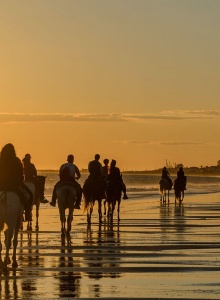
Places not to be missed
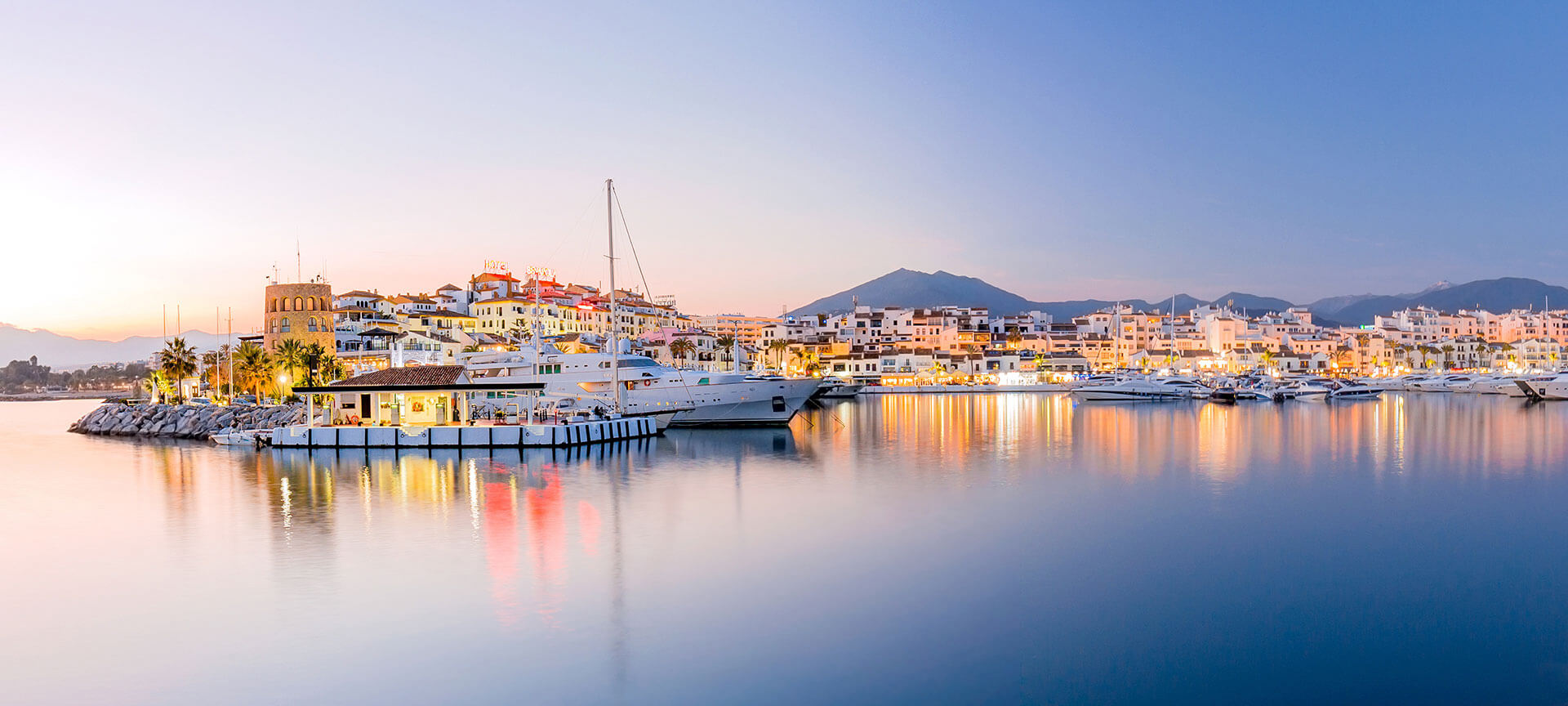
Costa del Sol
Endless beaches to stroll along, hidden coves, white villages…
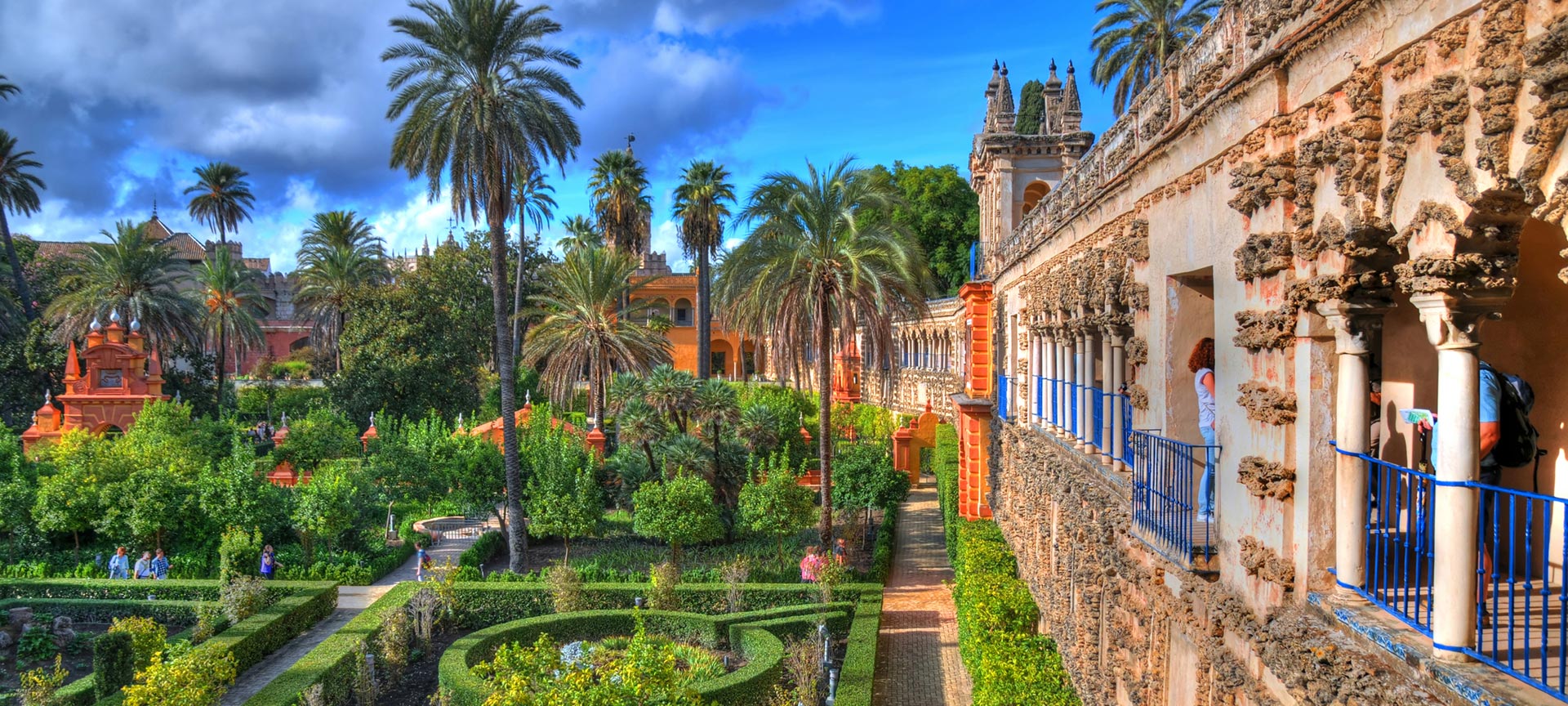
Real Alcázar Palace of Seville
The Real Alcázar in Seville is a group of palaces surrounded by a…
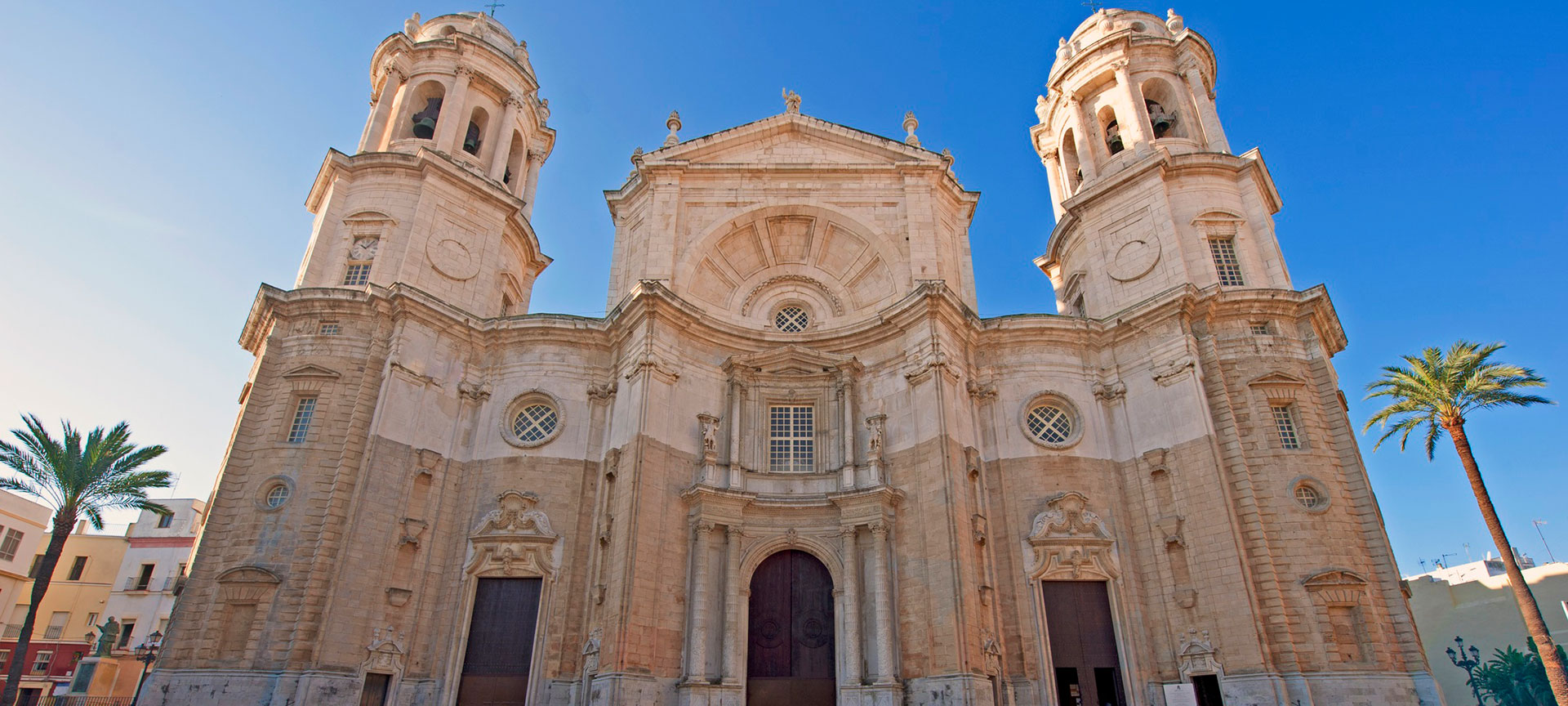
Cadiz cathedral
It took 116 years to complete, so the mix of styles is evident.…
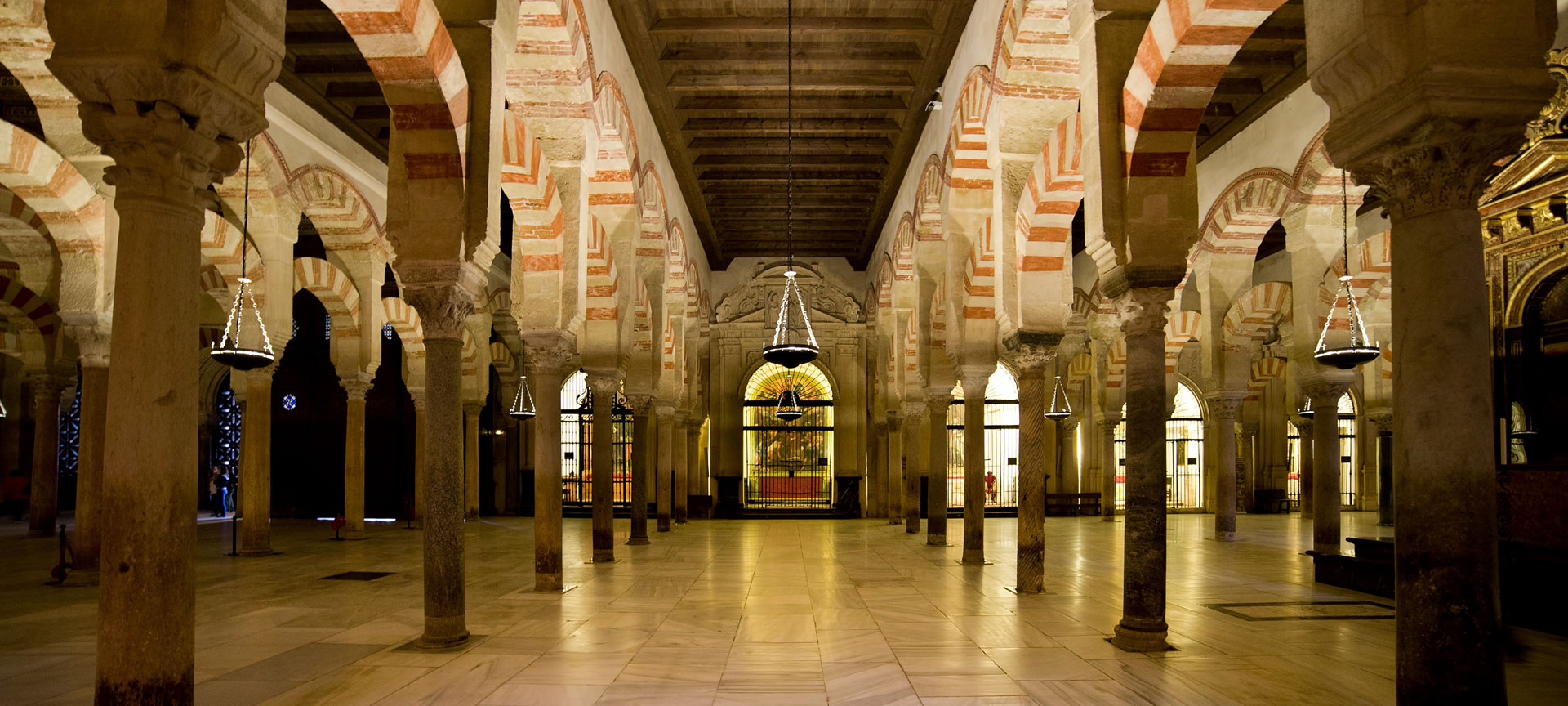
Great Mosque of Cordoba
The Great Mosque of Cordoba is a mixture of architectural styles…
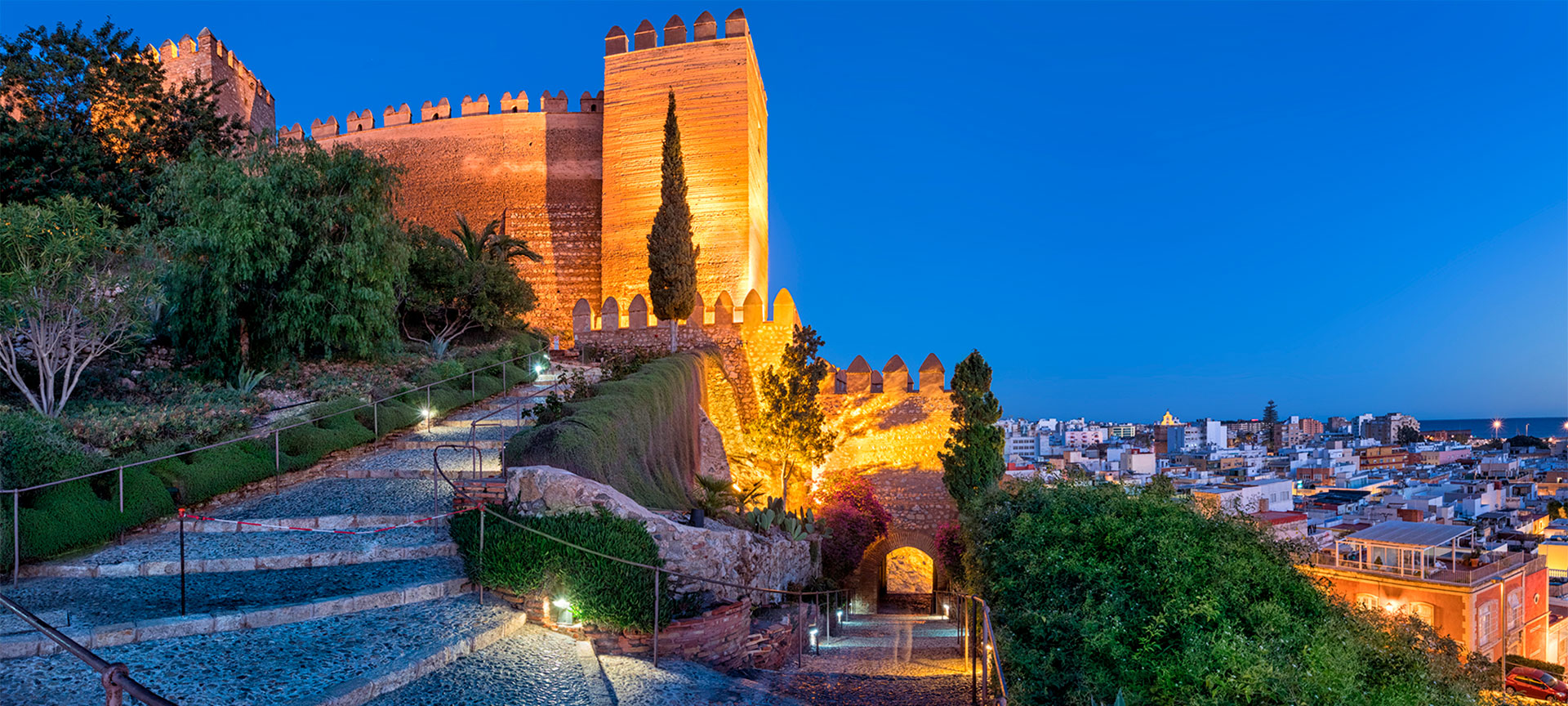
Almería Fortress
It was built by Adb al-Rahman III in 955 AD on the ruins of a…
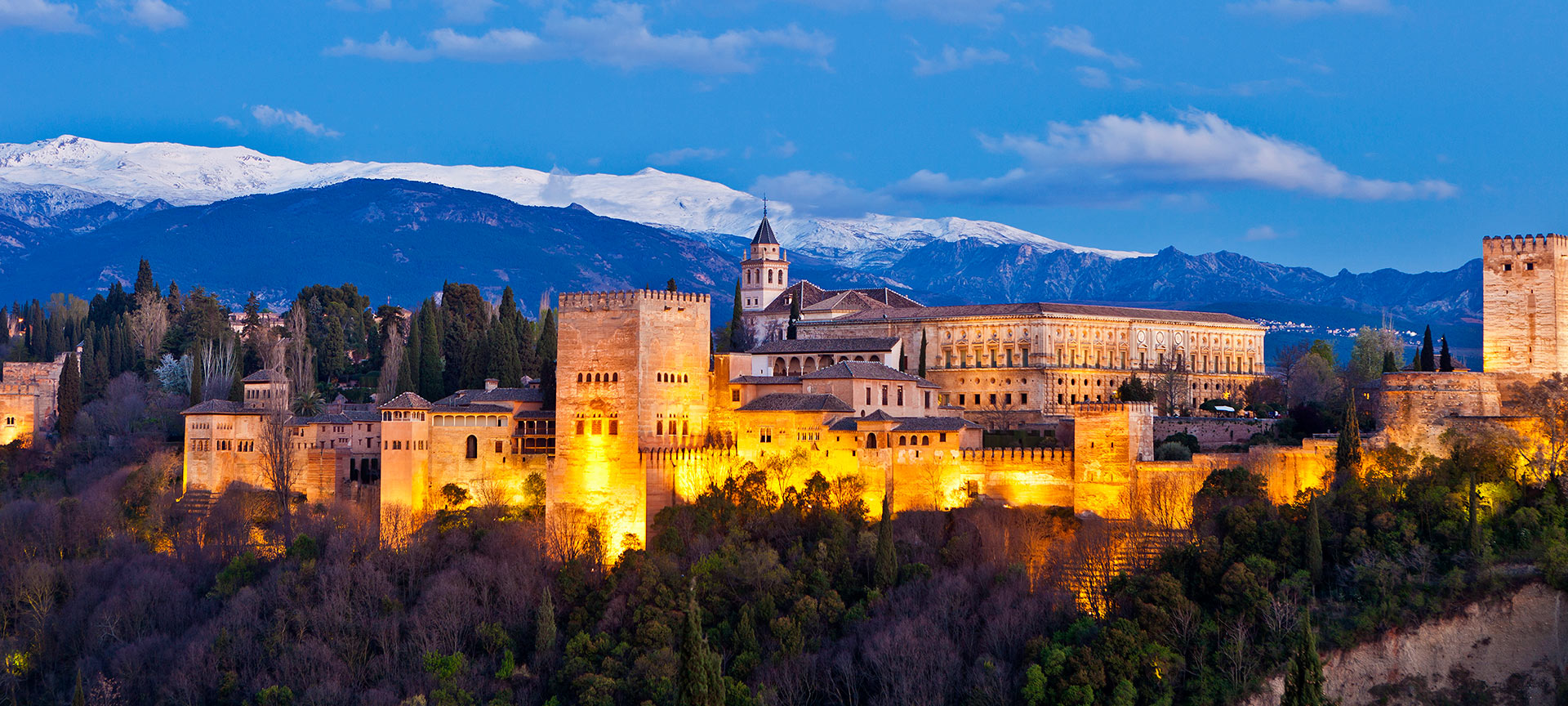
The Alhambra
The Alhambra is a beautiful complex of buildings and gardens.…
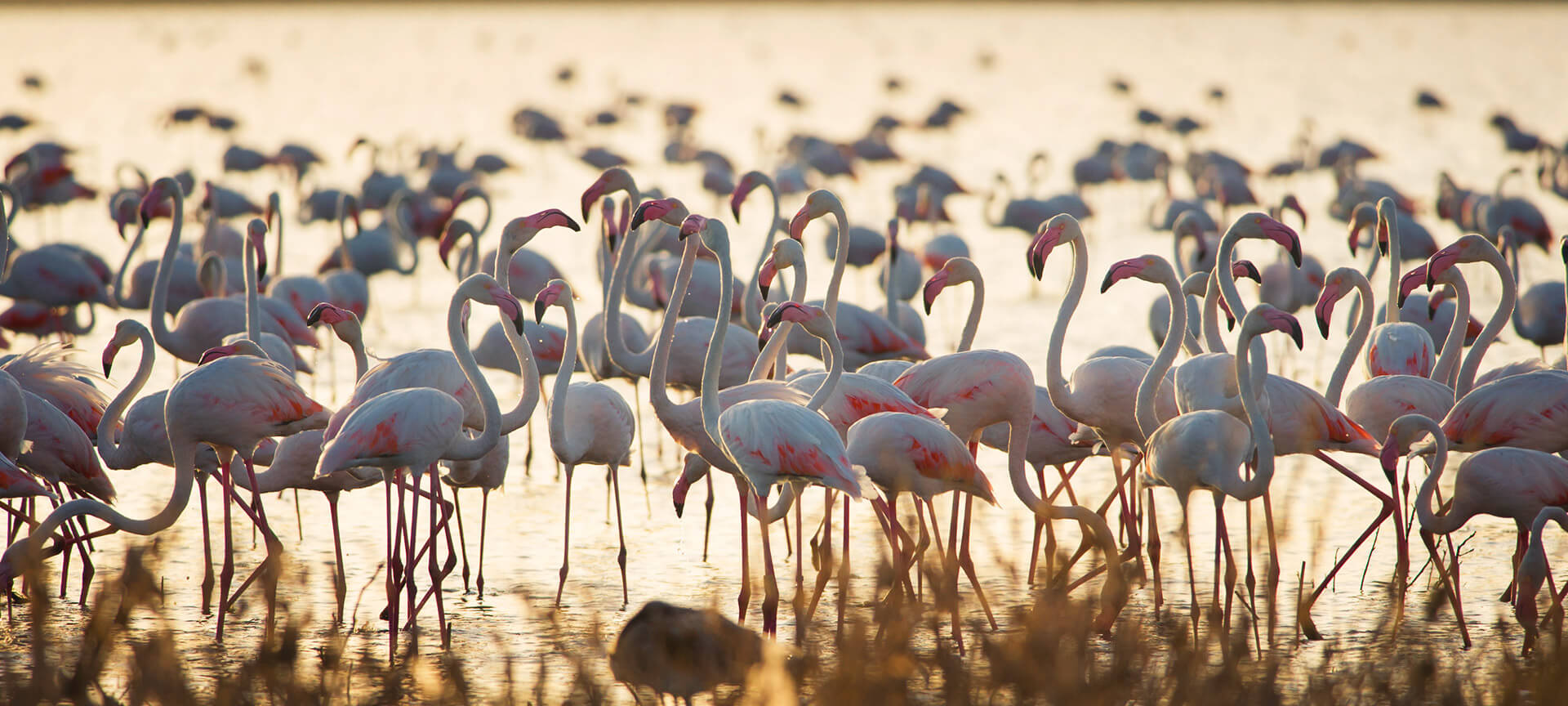
Doñana National Park
Doñana is one of Europe's most beautiful and important wetlands.…
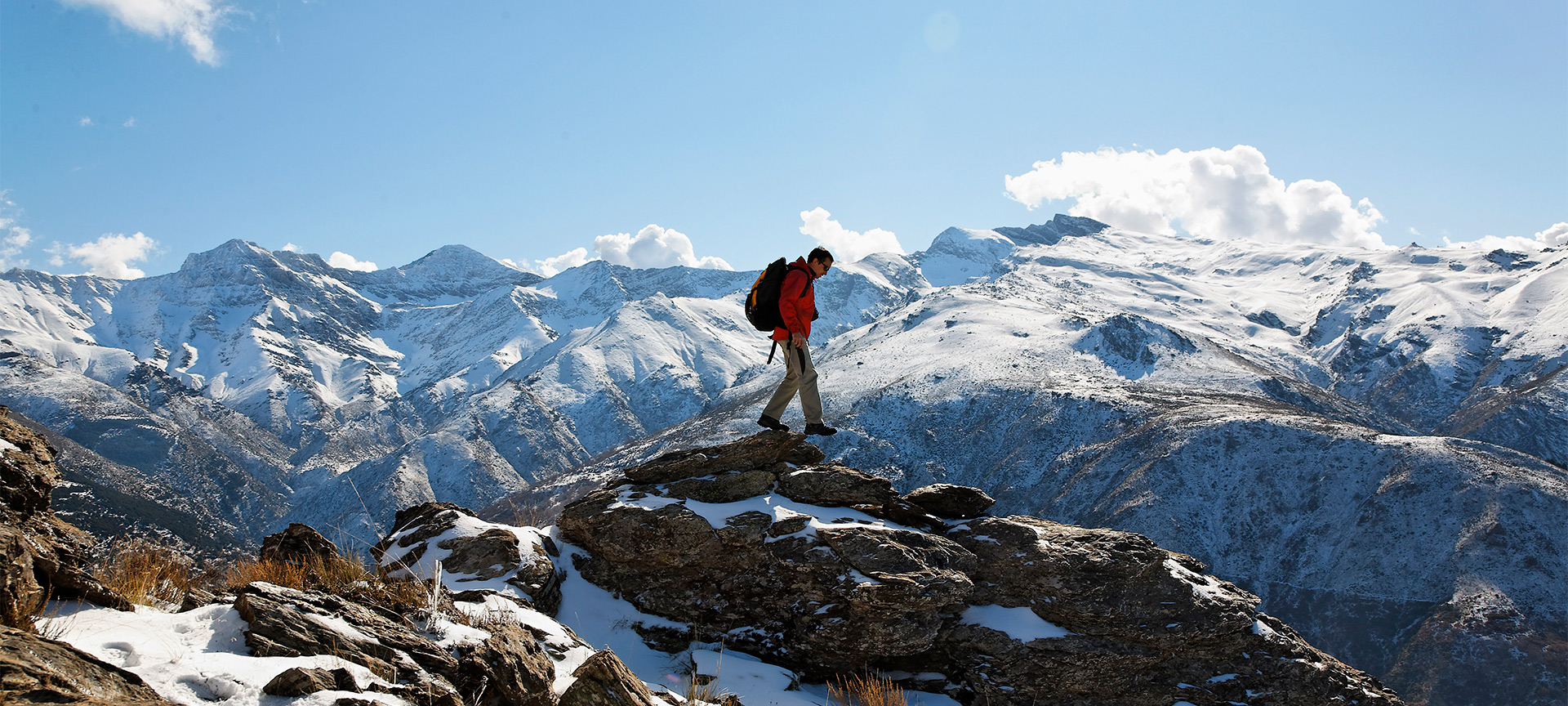
Sierra Nevada National Park
In eastern Andalusia in Granada and Almería you'll find the…
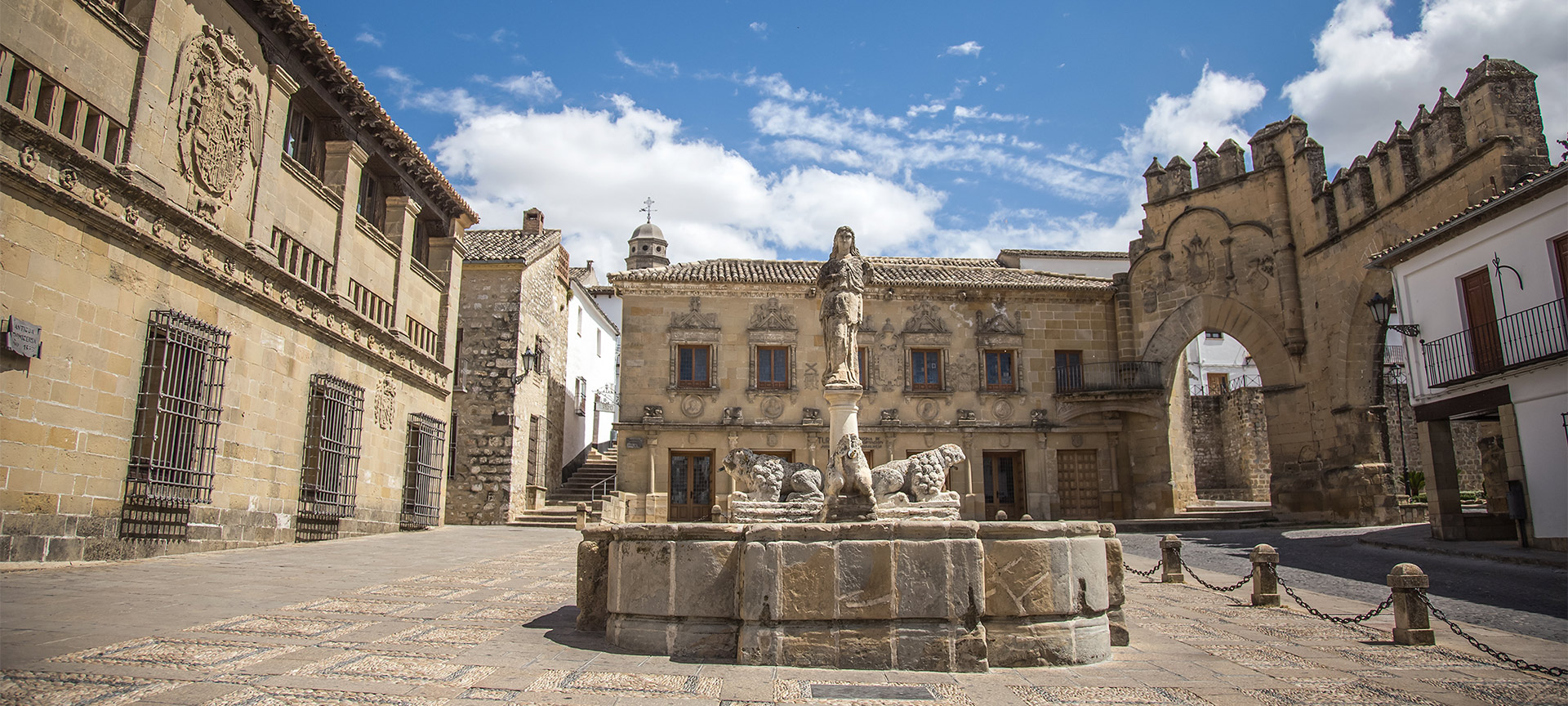
Baeza is in the province of Jaén, where some of the world’s…
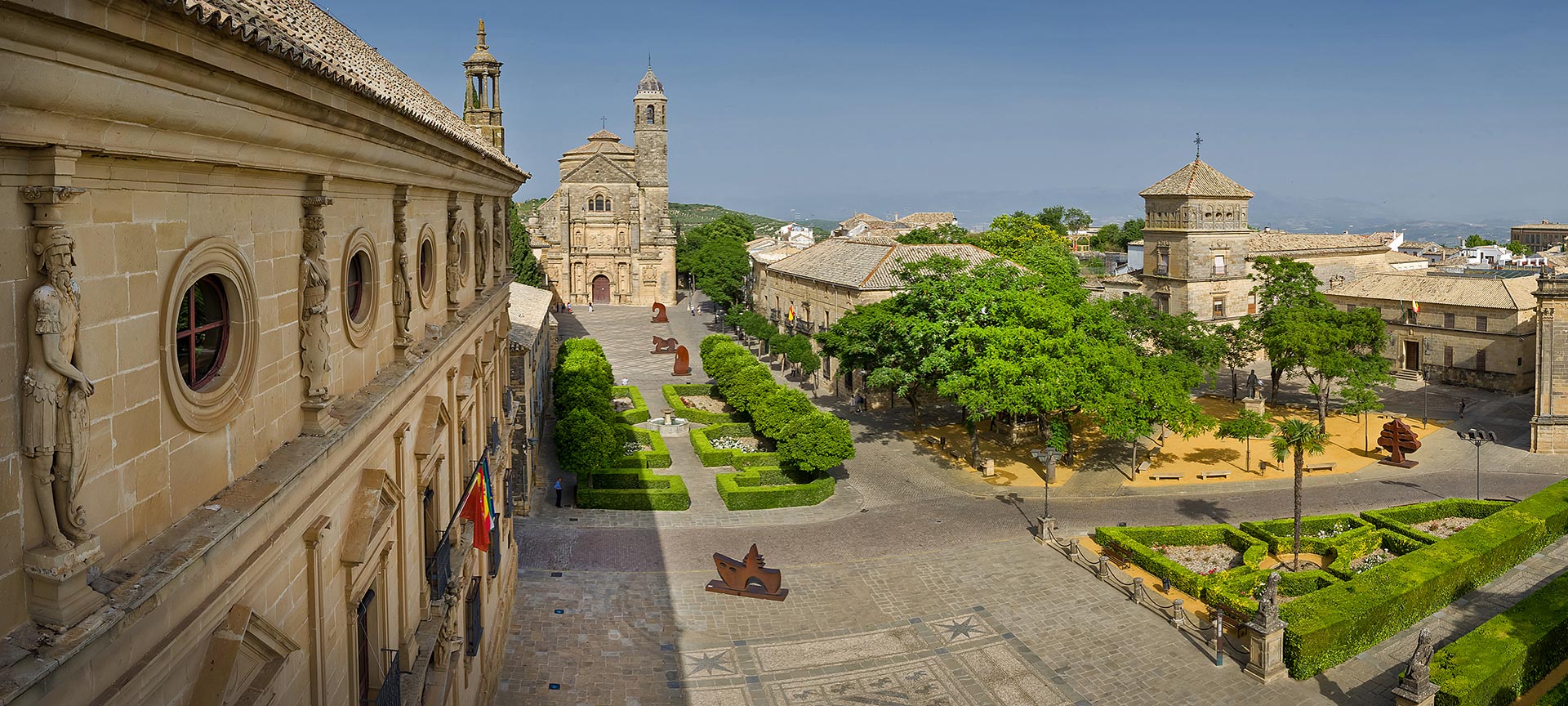
Beautiful Renaissance buildings are the main attraction in this…
Other ideas for your trip
Surfing in the south of Spain, the best places
Did you know that the Mediterranean Sea and the Atlantic Ocean meet in the south of Spain?…

Tastes of the sea in Cadiz
The gastronomy in Cadiz is primarily seafood and combines its most traditional recipes with innovative creations that even include Novel foods such as plankton.…

Andalusia, discover the charms of the culture of southern Spain
Andalusia boasts such attractive cultural destinations as Seville, Marbella, Granada, Cordoba, Cadiz, Úbeda and Baeza.…
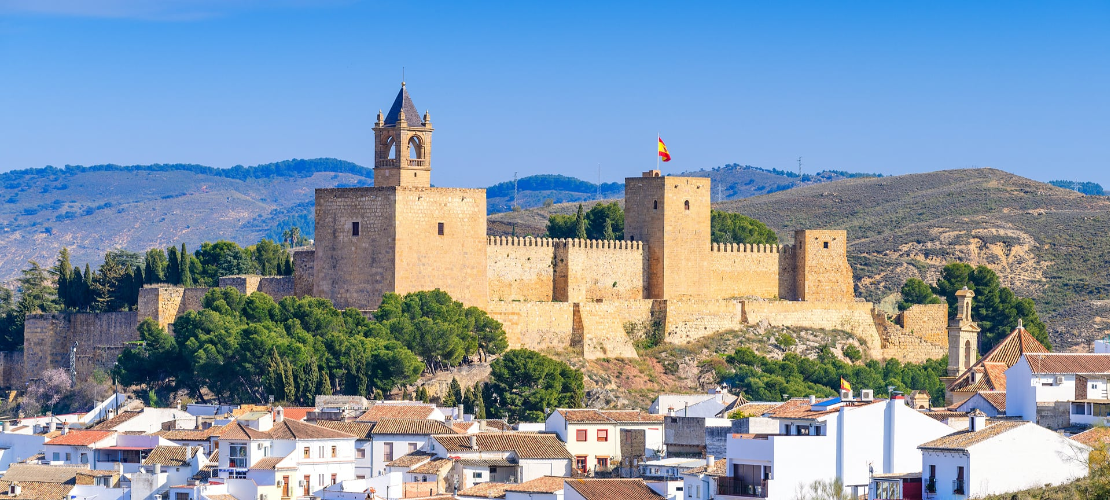
Route through some of the most popular lighthouses in Andalusia
You might want to walk among boats stranded in the sand and sea-facing colourful houses, and smell the salt of the fishing villages on the coast of Andalusia.…
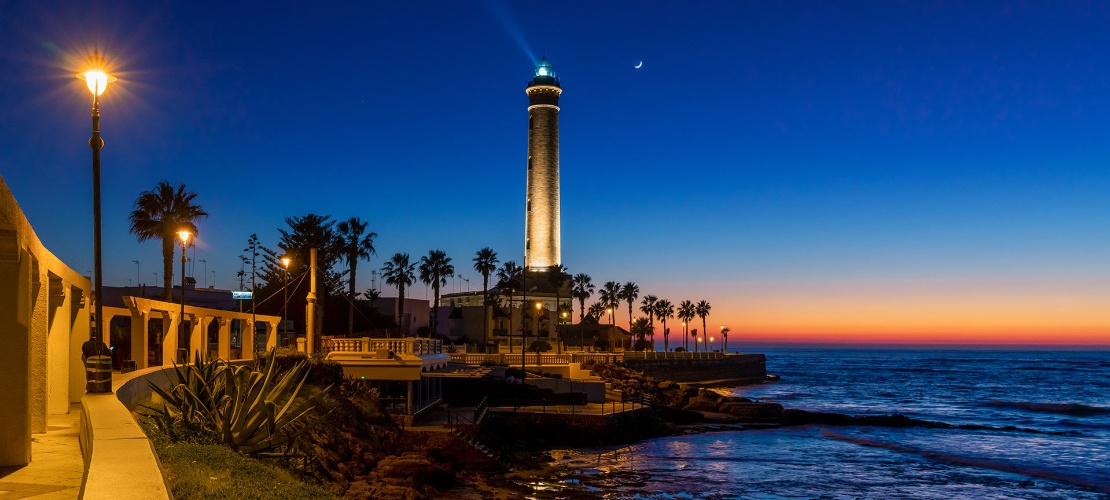
6 flamenco routes around Andalusia
Anyone interested in finding out more about flamenco singing and dancing should pay close attention, because we've come up with some information you're bound to…
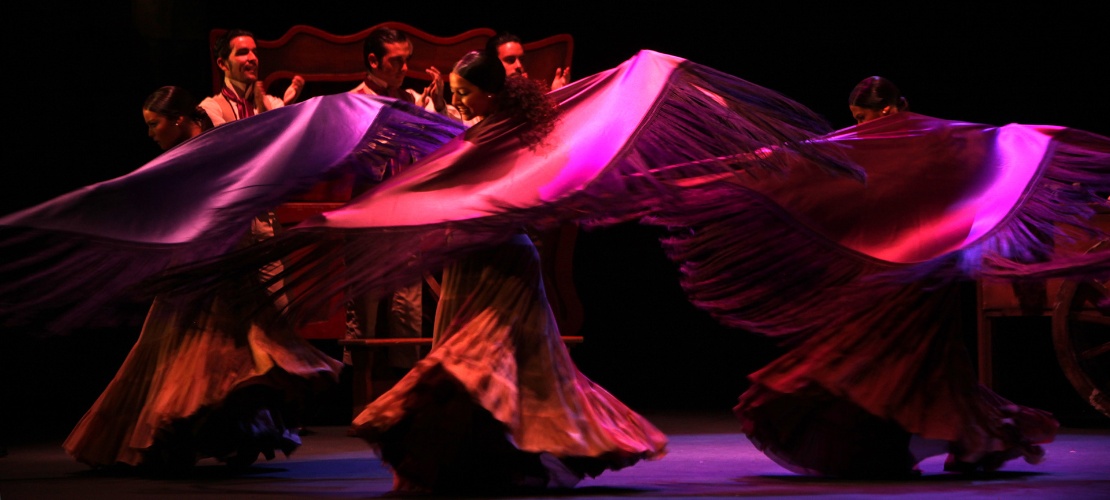
Explore the past and present of Andalusia with the Route of the Caliphate
Castles on hills and walled towns invite you to travel back to Al-Andalus. From Granada to Cordoba, there is a route that Muslims traveled in the Middle Ages…
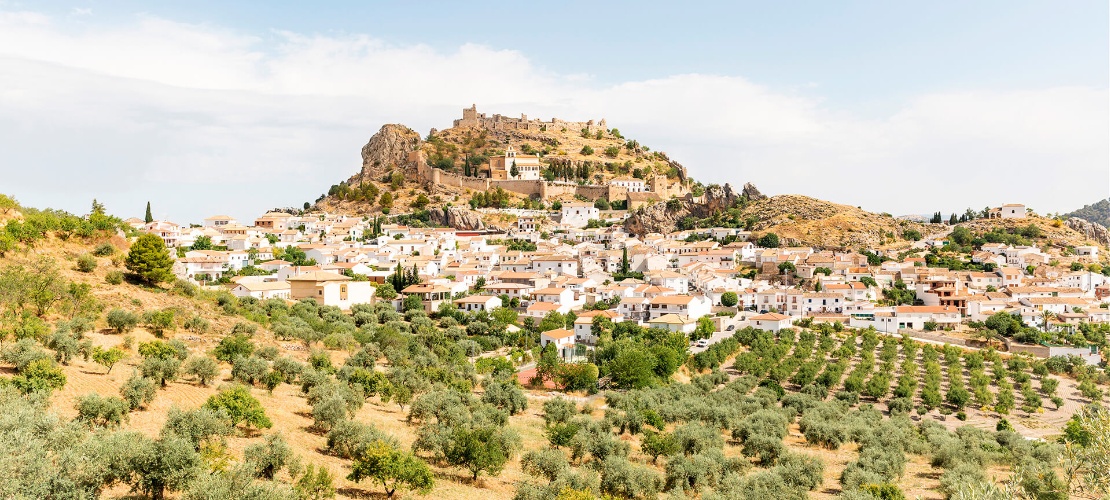
7-day tour of Andalusia
Are you planning a trip to southern Spain for your next holiday? Perhaps you’re wondering what would be the best route?…
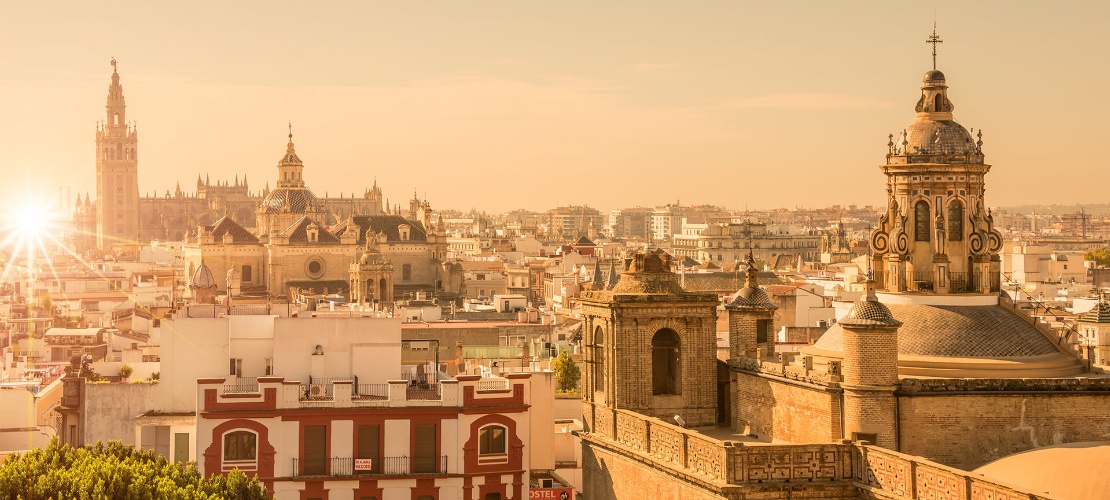
What to do in Andalusia: Visit some of the most beautiful botanical gardens
Scattered throughout Andalusia, you will find a large number of places dedicated to nature, and among them, the botanical gardens stand out.…
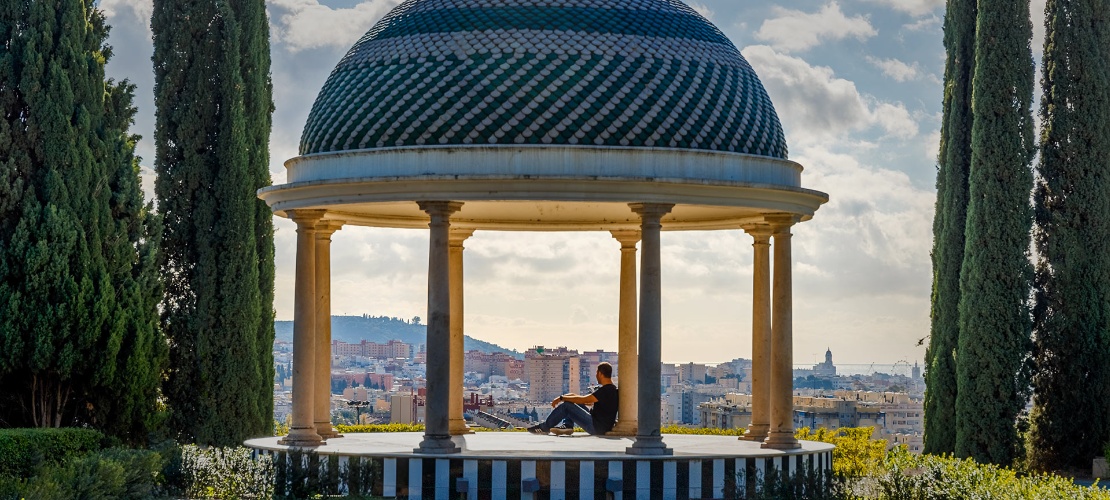
Towns and villages on the Andalusian Coast where you can disconnect
If you are looking for a few days rest by the sea, southern Spain has so much to offer you in Andalusia.…
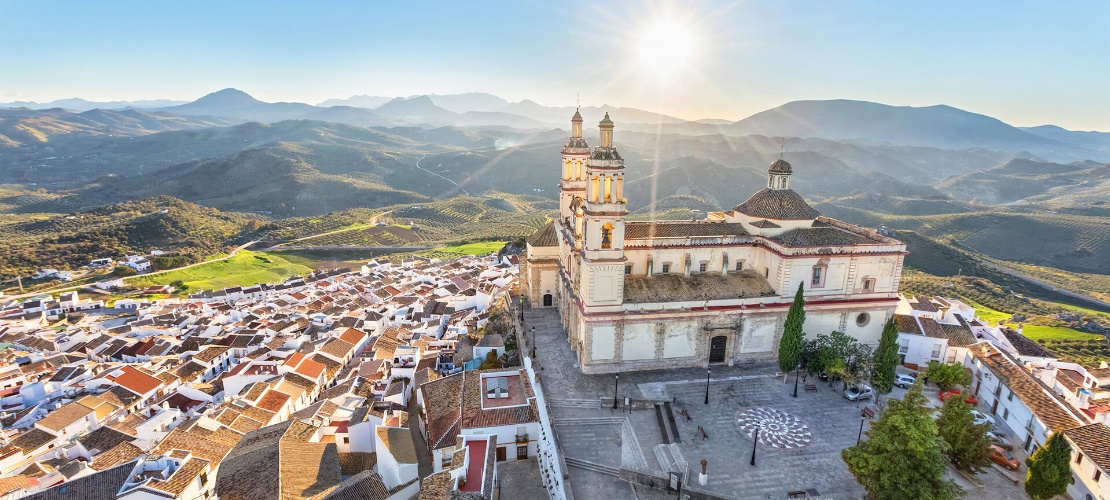
Motorbike routes through Andalusian landscapes
We propose 5 routes perfect for travelling through Andalusia on a motorcycle. These ideas are a different and rural type of tourism which reveal the beautiful…
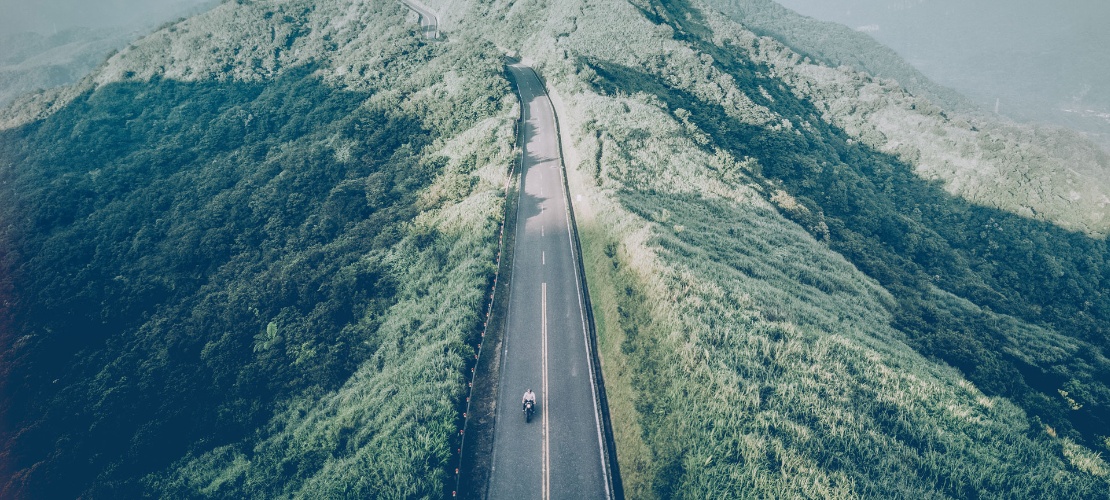
The gastronomy in Cadiz is primarily seafood and combines its…
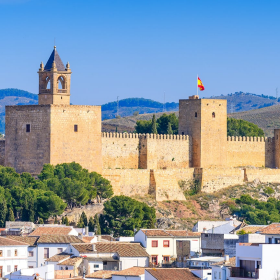
Andalusia boasts such attractive cultural destinations as…

You might want to walk among boats stranded in the sand and…

Anyone interested in finding out more about flamenco singing and…
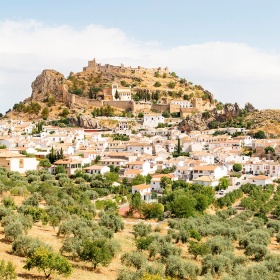
Castles on hills and walled towns invite you to travel back to…
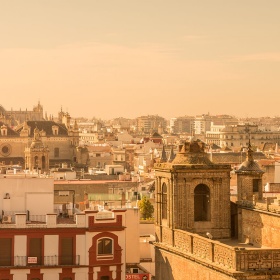
Are you planning a trip to southern Spain for your next holiday?…
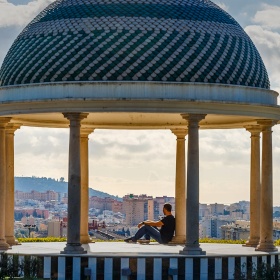
Scattered throughout Andalusia, you will find a large number of…
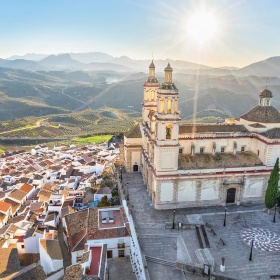
If you are looking for a few days rest by the sea, southern Spain…
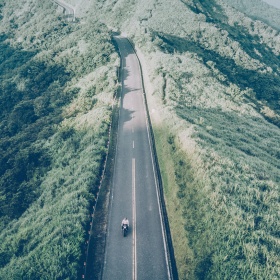
We propose 5 routes perfect for travelling through Andalusia on a…

Did you know that the Mediterranean Sea and the Atlantic Ocean…

Choose between thousands of activities to live your best life on holiday.


- HIDDEN GEMS
- TRAVEL TIPS
ALMERIA , CADIZ , CORDOBA , GRANADA , HUELVA , JAEN , MALAGA , SEVILLE
27 best places to visit in andalucia spain (by a local).
Looking for the best places to visit in Andalucia Spain?
Look no further!
I’ve traveled the region extensively and whether you’ve been here multiple times or it’s your first visit, there are so many incredible Andalucia must-see destinations and attractions to explore.
After living in Andalucia for over 10 years, I still find new exciting gems to discover, especially now as we’re slow traveling by camper van.
So in this post, I’m sharing my favorite southern Spain places to visit from the obvious, like Seville and the majestic Alhambra palace in Granada, to impressive natural parks with staggering nature and whitewashed villages.
Disclosure: This post may contain affiliate links. That means that if you make a purchase through one of those links, I will get a small commission at no extra cost to you.

I’m Linn Haglund, the face behind Amused by Andalucia! I’ve been based in Andalucia, Spain for the last 10+ years, mainly in Seville and Costa del Sol while exploring the region extensively. Since 2022, I’ve slow-traveled in my van with my fiancee and dog, spending significant time in each place to truly get to know all the hidden corners of this exciting and diverse region. I’m here to help you uncover Andalucia too!
Make sure you pin it for later!

Table of Contents
Best places to visit in Andalucia Spain
First things first. Seville is the impressive capital city of Andalucia and it’s full of culture and history. There are so many things to do in Seville from visiting the UNESCO-listed Real Alcazar and Seville Cathedral with its iconic Giralda Tower to seeing the views from the city’s newest monument, the Metropol Parasol .
My favorite attraction in Seville, though is Plaza de España. The beautiful half-circle square is decorated with beautiful Andalusian tiles from Triana and you can take a row boat trip in the little canal.
Watch a Flamenco show and eat all the tapas to make sure you get a true taste of Seville. While Barrio Santa Cruz is very touristy, I never get sick of walking around the bustling neighborhood.
Full of restaurants, bars, and Flamenco joints, it’s a wonderful place to be and even if you only have one day in Seville I recommend going there for lunch.
Finally, make sure you go on a boat tour in Seville’s Guadalquivir River to see the city from a different perspective.
Read before you go:
- How to get from Seville Airport to the city center
- Where to stay in Seville
- Free parking in Seville
- How to get Seville Cathedral tickets

El Torcal de Antequera
El Torcal de Antequera is a true must-see in Andalucia being one of the most unique karst landscapes in Europe.
It’s located a 45-minute drive inland from Malaga on the road to Seville and contains 3 different hiking routes. One takes you from the bottom car park to the visitor center and can be combined with either of the other two which are 45 minutes and 2 hours long.
I prefer the Yellow Route which takes 2 hours. Besides the mesmerizing landscape you’ll witness even if you just walk to the viewpoint and stay around the visitor center, you will be met by varied vegetation and even squeeze through the rock walls in a natural open ceiling tunnel.
We just did this hike the other day and even though the weather was crap, it’s just as magical. El Torcal de Antequera is also the only place in Andalucia where I Always see wild mountain goats – and I’ve been there more times than I can count!
While they’re used to people, remember that they’re still wild animals. Make sure you respect them, don’t feed them, don’t chase them, or scare them. Just be still and enjoy the magic of the moment.
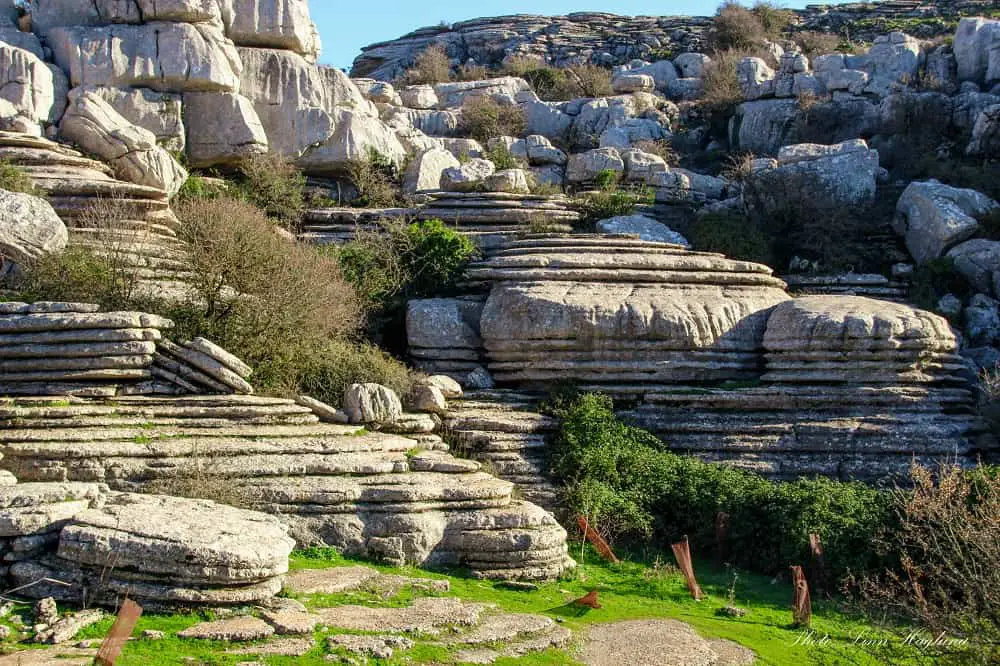
Ronda is truly one of the most beautiful places in Andalucia with its iconic New Bridge holding the dramatic El Tajo Gorge together.
There are so many things to do in Ronda besides seeing the New Bridge, though. There are two other older bridges down the gorge, an Arab Bath, and a number of palaces.
You can also stroll along the old Moorish city walls and there are endless viewpoints where you can take in the impressive countryside surrounding Ronda.
Serrania de Ronda is also a fantastic wine region. Going on a Ronda wine-tasting tour is also a wonderful idea and you can combine it with a Ronda day trip if you don’t have more time.
Ronda is actually one of the oldest settlements in Spain and you can explore the old city at the Acinipo Ruins not too far from the town. There are also a lot more beautiful white villages near Ronda making it a wonderful base for day trips.
- Where to stay in Ronda
- Where to park in Ronda
- Is Ronda worth visiting?
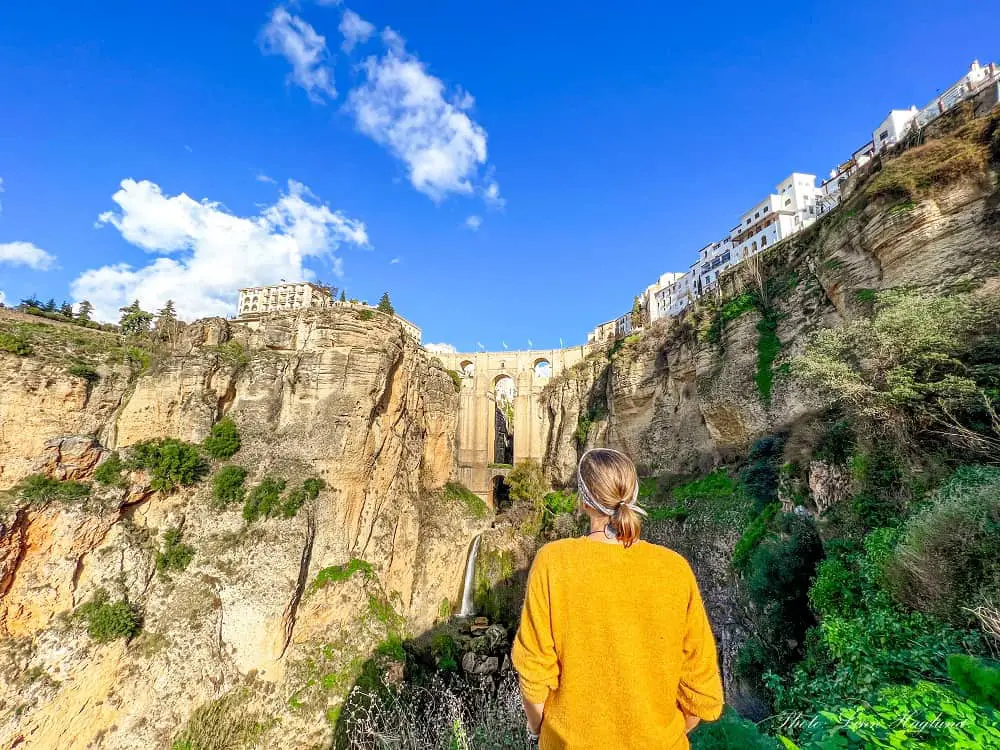
Malaga is by far one of the most popular cities to visit in Andalucia and not without a reason. The beautiful coastal city boasts spectacular beaches , like Malagueta Beach , and Malaga Old Town is jam-packed with beautiful architecture, historical sites, and interesting museums. This is where you find the best things to do in Malaga .
Make sure you visit Malaga Cathedral and the Alcazaba of Malaga which sits above the Roman Theater , which is one of the top free things to see in Malaga . Looming over the Alcazaba, you find the magnificent Gibralfaro Castle that was built to protect the Alcazaba.
Muelle Uno is Malaga’s modern marina full of restaurants and shops and a small year-round market. There, you can jump on one of Malaga’s boat tours to explore the coastline from the water.
There are also many epic day trips from Malaga to nearby towns and villages. Being located in the heart of Costa del Sol, you’re spoiled for options!
- Where to stay in Malaga
- Where to find free parking in Malaga
- How to get Alcazaba Malaga tickets
- Malaga one-day itinerary
- Beautiful parks in Malaga
- Where to stay near Malaga
- Best time to visit Malaga
- Christmas in Malaga
- Malaga in December
- Malaga in winter
- Where to eat vegan in Malaga
- Which city is best Malaga or Marbella
- Day trip to Gibraltar from Malaga
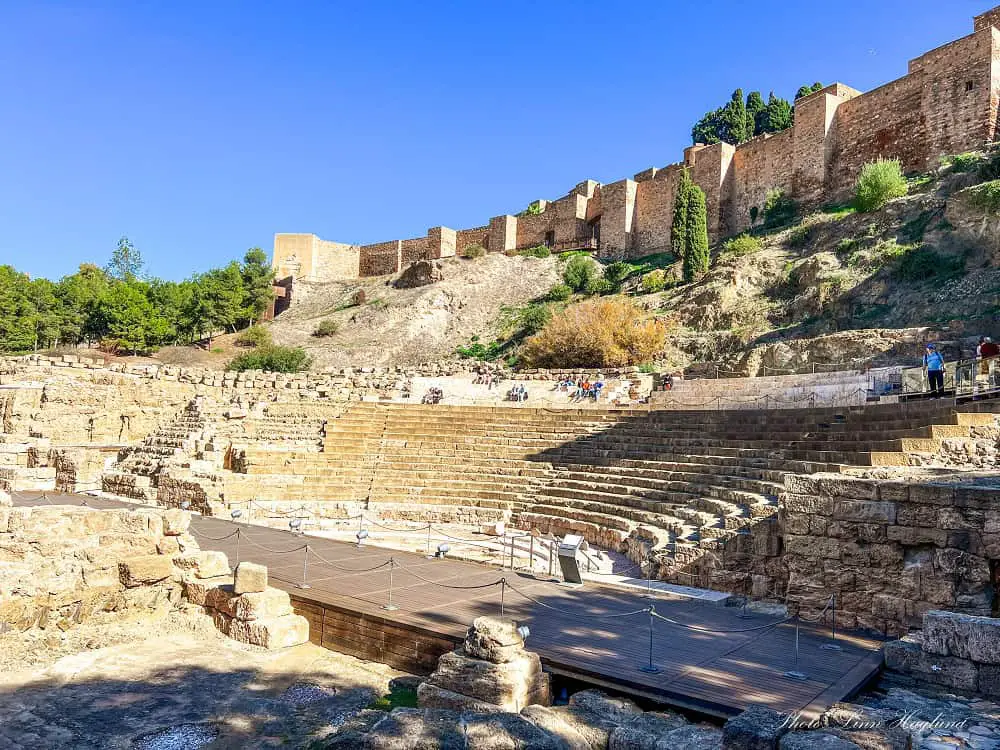
When looking for what to visit in Andalucia that isn’t overrun by tourism , I can’t think of any better place than Riotinto in the Huelva province.
The unique Red River has been on the radar of none other than NASA for its high content of sulfide ore deposits which form acidic runoff when in contact with water or oxygen. It was formed millions of years ago when this area was volcanic.
Now, you can take an old mine train to see the Red River and the mining area. It’s really cool and one of the most underrated day trips from Seville .
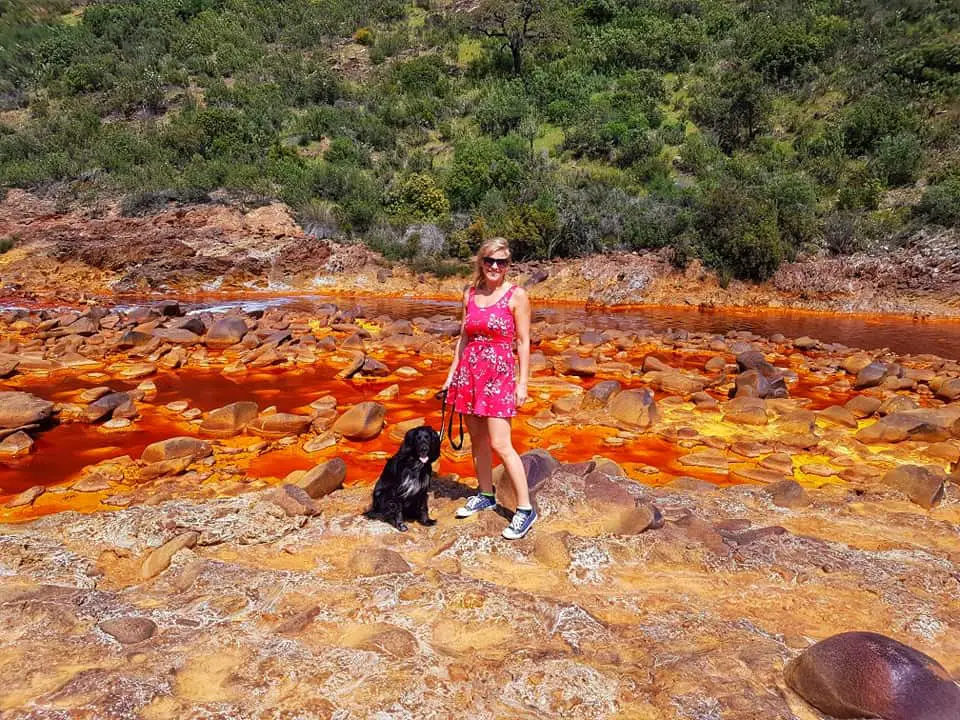
El Caminito del Rey
El Caminito del Rey has turned into one of the most sought-after tourist attractions in Andalucia. It was once seen as the world’s most dangerous hike, but after a full reconstruction, it reopened safer than ever in 2015.
The 7.7-kilometer long trail takes you along the edge of the dramatic Gaitanes Gorge with a wooden path pinned 100 meters high on the vertical wall. You can see the remains of the old path below it and it’s quite terrifying to think of walking there before it was rebuilt.
To do the walk, you must book a time slot in advance, the tickets sell out quickly, so I recommend booking early.
I wrote a complete guide to how to get there, how to get tickets, and what to expect from the hike on my hiking blog which you can read here .

Cordoba is another must-see in southern Spain. The city is home to 4 UNESCO sites and you should spend at least 2 days in Cordoba to see it all. However, even with a day in Cordoba , you can explore quite a lot.
The UNESCO-listed Mosque-Cathedral is one of a kind with its Christian chapels and altarpiece inside the majestic old mosque. Nearby, you find the Alcazar of Cordoba, the Roman Bridge, and the UNESCO-listed old town.
You can’t leave the city without visiting the impressive patios of Cordoba including the courtyards of the Viana Palace . If you happen to be there at the beginning of May, you’ll be able to experience the wonderful Patio Festival which also is protected by UNESCO.
There are so many amazing things to do in Cordoba . It’s also home to Andalucia’s only remaining synagogue and to the ancient ruins of Medina Azahara .
- Is Cordoba worth visiting?
- Where to stay in Cordoba
- Best shopping in Cordoba
- How to get Cordoba Alcazar tickets
- How to get Mosque-Cathedral tickets
- Cordoba Patio Tour review
- Best tours in Cordoba
- Best day trips from Cordoba

Cabo de Gata Natural Park
When you go to southern Spain, Cabo de Gata Natural Park is by far one of the best places to visit! Andalucia’s volcanic and desert region is one of my favorite places to escape the crowds in summer.
The beaches in Cabo de Gata are among the most beautiful in Spain with a wonderful mix of sandy beaches meeting large dunes and remote and rocky.
There are wonderful coastal walks taking you across the rugged coastline to secluded beaches and hidden coves. In the cooler months, you can also hike inland.
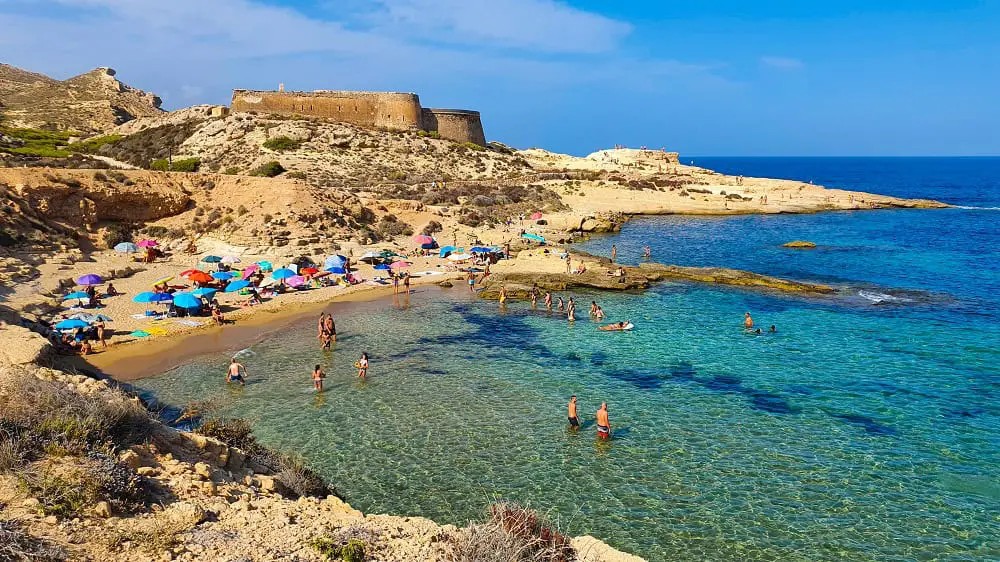
Bosque de Cobre
Bosque de Cobre (Copper Forest) is one of the most stunning places to visit in southern Spain in the fall. The chestnut forests cover the valley into an orange blanket and the Spanish flock to villages like Parauta and Igualeja to see the fall colors.
There are plenty of hiking routes you can take through the beautiful spectacles of colors. Even with small kids, you can head to Parauta and walk the Bosque Encantado trail which is fun for the little ones with fairytale figures and carved trees along the way.
The best time to see the fall colors is mid-November, though it does depend a bit from year to year. This is also a time when the rain usually starts, so I recommend following the weather forecast and going before the rain if possible as it usually flushes away quite a lot of the leaves on the trees (rain in Andalucia hardly ever comes without heavy winds.)

Antequera is a fantastic, yet underrated city in Andalucia with plenty of attractions and hiking opportunities within walking distance from the city.
The best things to do in Antequera include visiting the Moorish Alcazaba, the Real Colegiata de Santa María la Mayor, and the UNESCO-listed Domens de Antequera.
But the town center is also jam-packed with beautiful places like the patio of the Municipal Library of San Zoilo and churches like Parroquia San Sebastián.
Besides, you’ll want to chase the best views of the Lover’s Rock which resembles a giant Indian head. You can also hike to the top if you love a bit of a scramble.
Among my other favorite hikes, I’d recommend Camorro Alto which is the highest peak in Antequera and offers sweeping views of the city and surrounding countryside, the trails of El Torcal de Antequera, and Sendero de las Arquillas which is an old Roman water route.
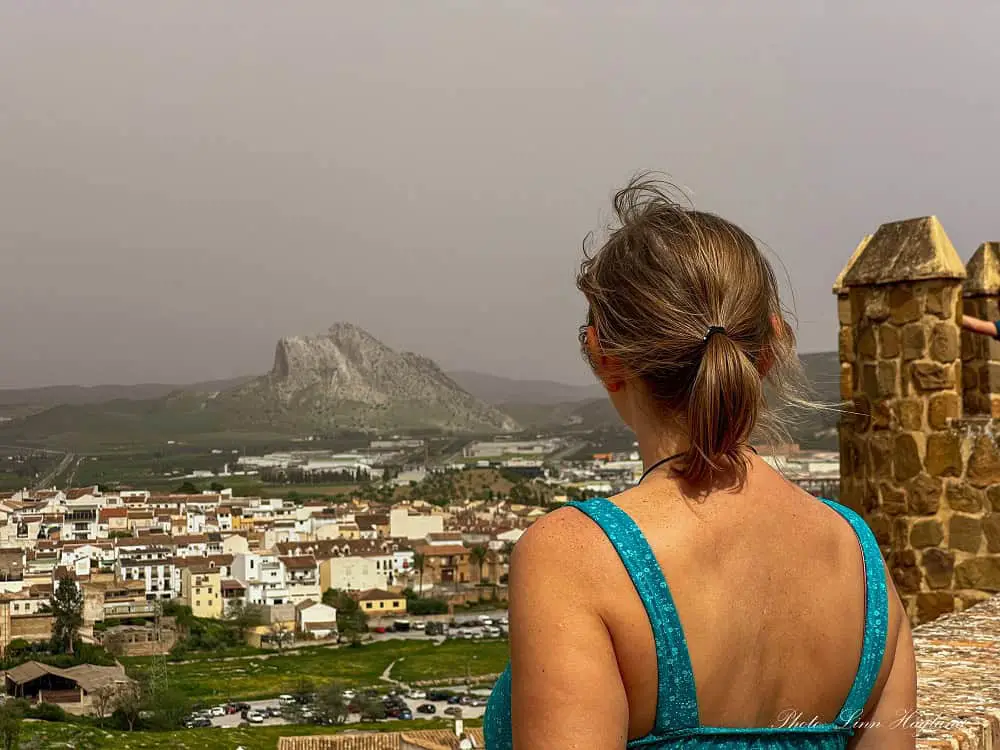
Nerja is a lovely beach town near Malaga with beautiful beaches, spectacular hikes, and prehistoric caves. While it is quite touristy, it’s still one of my favorite places to visit in Andalucia as it’s got a lovely vibe and the water is crystal clear.
Snorkeling and kayaking in Nerja is a must as it is located right by the mesmerizing Maro nature reserve.
Among the best things to do in Nerja , you can enjoy refreshing river hikes like Rio Chillar and Rio Higueron. You also find hiking routes for the non-summer months like Pico El Cielo and Navachica.
I also recommend visiting Nerja Caves where you’ll find the world’s largest stalagmite, 32 meters tall.
- Where to stay in Nerja
- Best beaches in Nerja
- Best day trips from Nerja
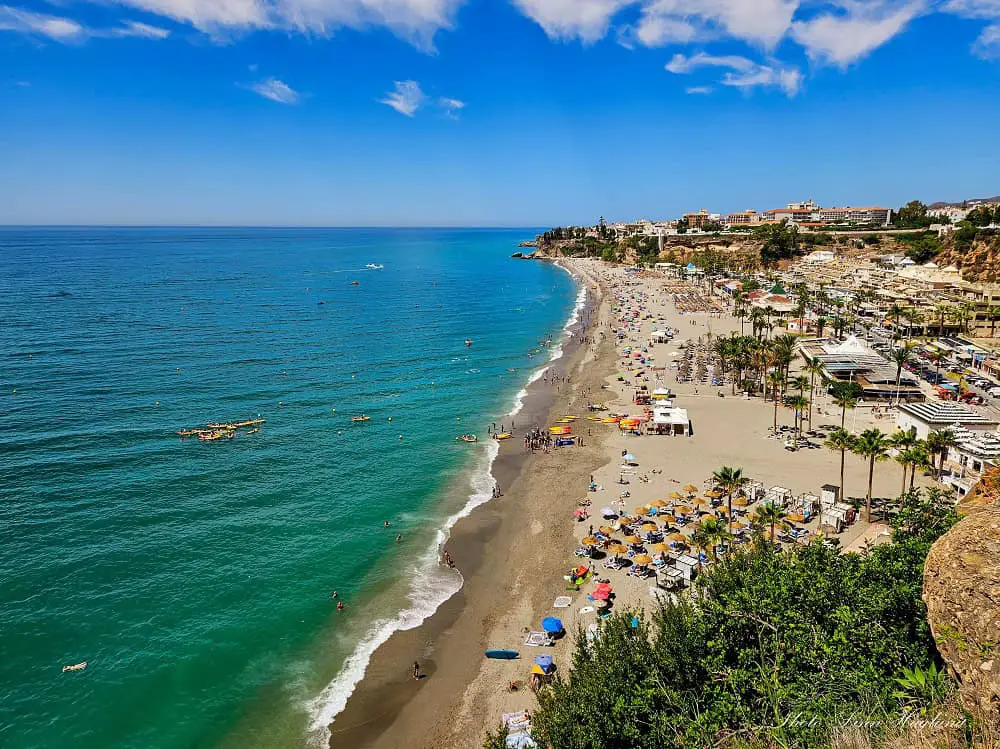
Casares and Baños de Hedionda
If you’re looking for a traditional white mountain village, Casares is the place to go. There are plenty of things to do in Casares like seeing the views from the old castle ruins, admiring the birds of prey circling above your head, and getting lost in the whitewashed streets.
Casares is one of the beautiful, white villages in Andalucia blessed with places to visit nearby like the Corominas Dolmens and the ancient Roman baths of Hedionda.
It is said that the thermal waters in Hedionda cured Julius Cesar of a skin disease. Whether it’s true or not, it’s a really cool place to go for a dip. It’s free to enter and the bath itself is surrounded by nature making it the perfect little getaway.
There are also plenty of hiking routes around Casares including the unique karst landscape of Canuto de la Utrera.

Sierras Subbeticas
The Sierras Subbeticas is a completely underrated mountain chain that deserves way more attention if you ask me. We’ve spent plenty of time hiking there and visiting small towns and villages and will go back in a heartbeat any day.
I highly recommend going on a road trip of the Sierras Subbeticas to get the most out of the unique geological area that was once the seabed of the prehistoric Tethys Sea. It is now protected by UNESCO .
Visit villages like Zuheros where you can explore the prehistoric Cueva de los Murcielagos and hike in the beautiful protected mountains.
Priego de Cordoba is jam-packed with historical sites, Roman-inspired fountains, and beautiful whitewashed neighborhoods filled with colorful pot plants.
In Rute , you can get a taste of the famous patios of Cordoba province and taste their magnificent Anis. There are also fantastic hiking routes straight from the village.
If you’re an avid hiker, make sure you get a permit to hike La Tiñosa, which is the highest peak in Cordoba Province (1570m.) It’s a stunning hike from Las Lagunillas, though it’s a little bit challenging the last few hundred meters, the views will take your breath away!
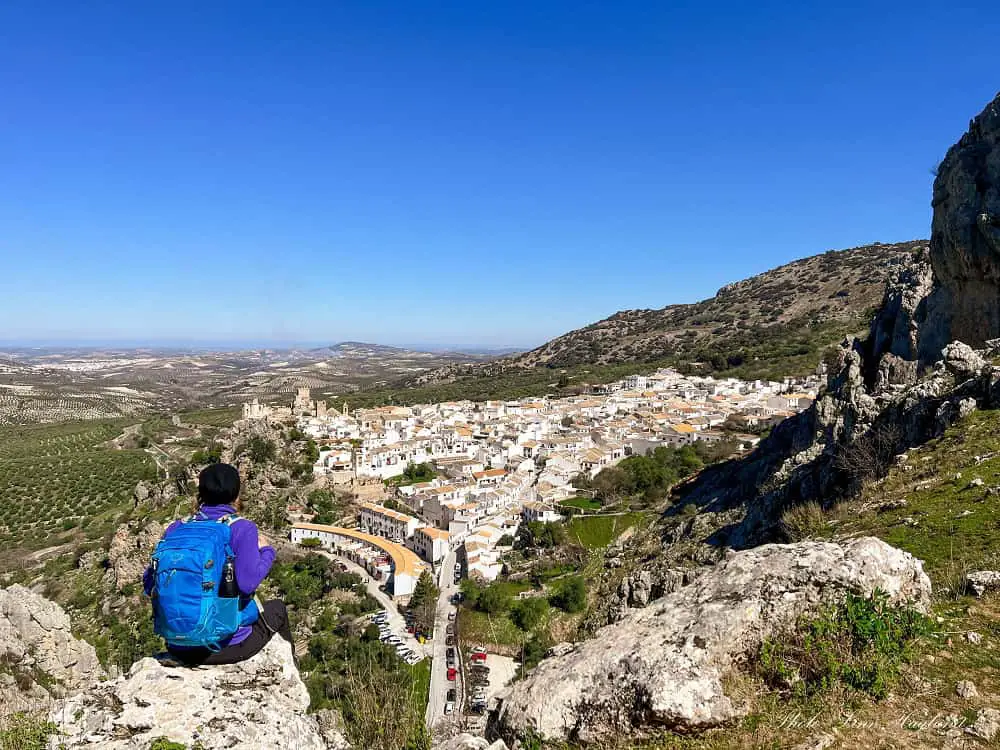
The Alhambra in Granada
The Alhambra in Granada is no doubt one of the absolute highlights in southern Spain. The impressive Arab complex first served as a defensive fortress and later a royal residence.
The visit includes the Nasrid Palace, the Alcazaba, and the Generalife Gardens. It’s a stunning complex that you can easily spend hours exploring. I highly recommend taking this guided tour of the Alhambra to get the most out of your visit.
For the ultimate experience, make sure you book a room at Alhambra Palace Hotel which is set within the Alhambra’s walls.

Marbella is a wonderful city on Costa del Sol, mainly recognized for its luxurious Puerto Banus marina where you’re likely to see a celebrity or two.
But there are many more things to do in Marbella than look at luxury yachts and shop for high-end brands. Marbella Old Town is super charming and holds many lovely squares, like Plaza de los Naranjos, and nice restaurants and cafés among cobbled streets and boutique shops.
The beaches in Marbella are also fantastic and you can hop on any Marbella boat tour to dolphin watch, snorkel, or relax with a cava on the sun deck.
Marbella’s party scene is also among the best in Andalucia with pumping beach clubs like Nikki Beach lining the coastline. Marbella is truly a fun summer destination, but even in winter, there are a lot of things going on with Christmas Markets and local festivities.
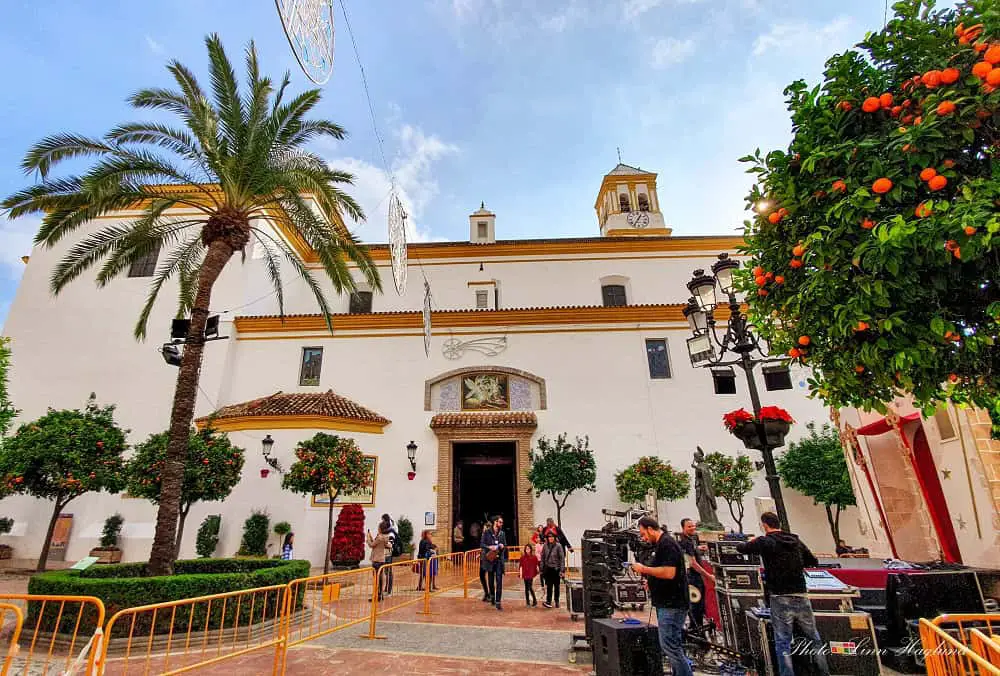
Cadiz is one of the most underrated coastal cities in Andalucia and I’d say it’s one of the best places to visit in the south of Spain for anyone interested in history, surfing, and a local vibe.
The laidback city is small and walkable with plenty of attractions like Cadiz Cathedral , Torre de Tavira where you can see epic city views and the coastal forts of Castillo de Santa Catalina and Castillo de San Sebastian.
The beaches in Cadiz are also top-notch, especially the iconic La Caleta Beach which is set right off the old town. As you can tell, there are plenty of fun things to do in Cadiz and besides, you can enjoy Andalusian food and drinks at local prices!
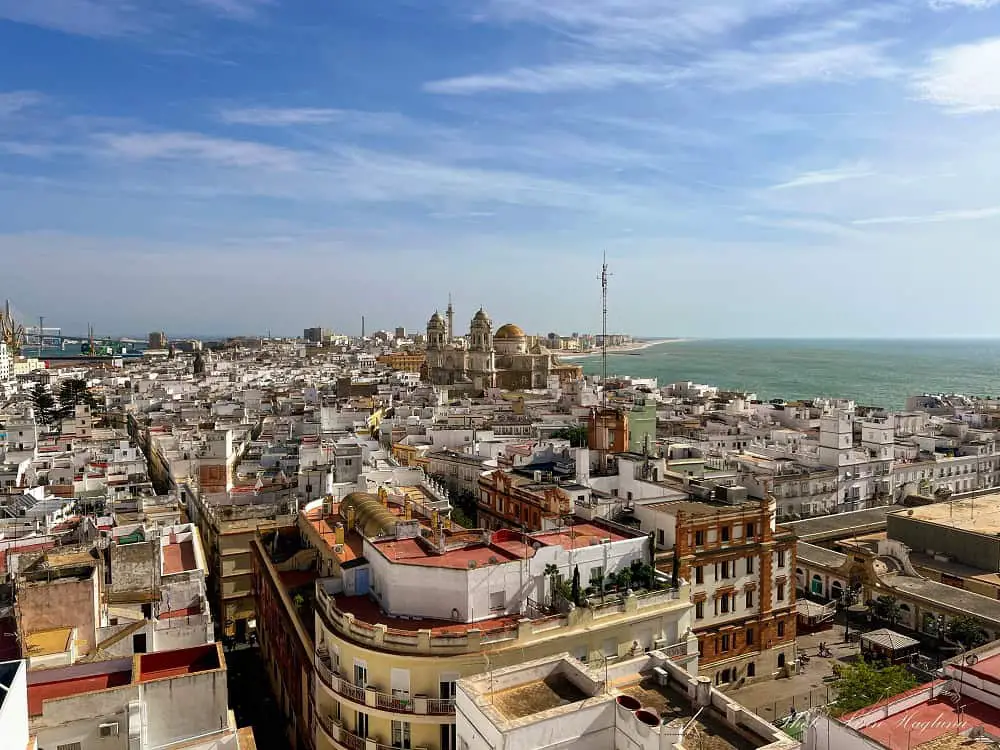
Mijas Pueblo
Mijas Pueblo is one of the must-see Andalucia villages, perfectly whitewashed with colorful pot plants and spectacular coastal views.
Despite its small size, there are plenty of things to do in Mijas Pueblo . There are a few interesting museums where you can stroll through a house museum or explore everything miniature.
Mijas Pueblo also has its own chocolate factory and you can join a chocolate-making class if you want to bring home some unique souvenirs.
There are also a wealth of hiking trails departing from Mijas Pueblo from easy to challenging, mostly because they are quite steep. The highest peak is Pico de Mijas, though my favorite is Pico Mendoza, locally referred to as Pico Puerto Malaga or Cerro Malaga.

Jerez de la Frontera
Calling all sherry lovers! Jerez de la Frontera is one of the absolute best places to take a sherry tasting tour as one of the cities of Andalucia’s Sherry Triangle.
But there are more things to do in Jerez de la Frontera like visiting Jerez Cathedral and the Alcazar where you also can visit the Camara Obscura.
The city is located right between Seville and Cadiz and is one of those places that make you feel like you’re in the real Andalucia. No over tourism and no tourist prices. Just plain local.
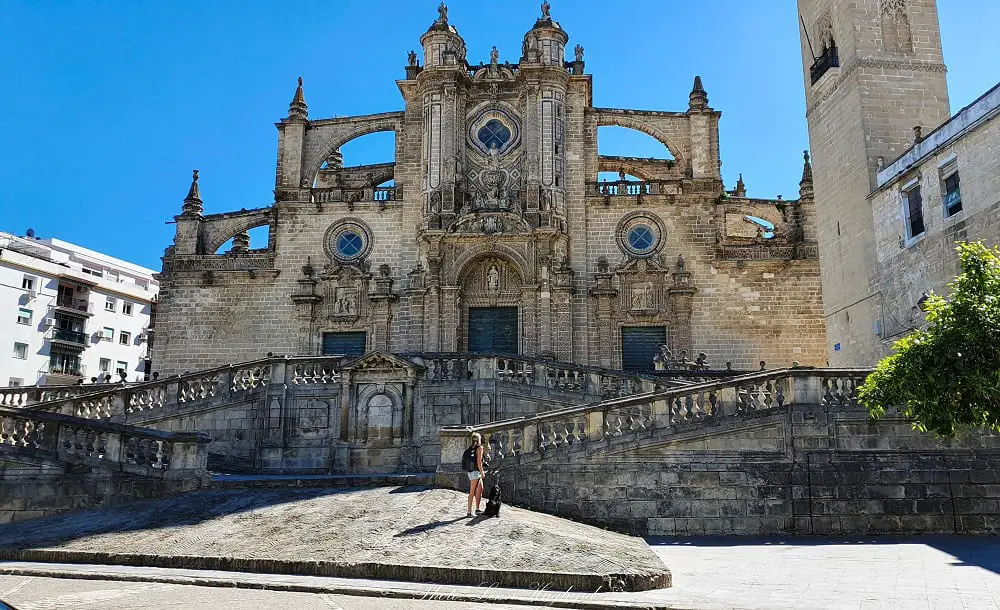
If you’re looking for a lesser touristy coastal town, head to Estepona. We’ve spent a lot of time there, mainly volunteering at the Adana Dog Shelter in the period we adopted Baby Atlas, but that also gave us plenty of time to get to know this lovely town.
There are so many wonderful things to do in Estepona with its quaint marina, flowery streets, and majestic street art scene.
The Orchidarium is also interesting to visit with so many different orchids in a small and lush tropical space. If you prefer exploring nature outside, Estepona’s mountains are filled with water holes, waterfalls, and lush ravines for swimming in summer and hiking in winter.
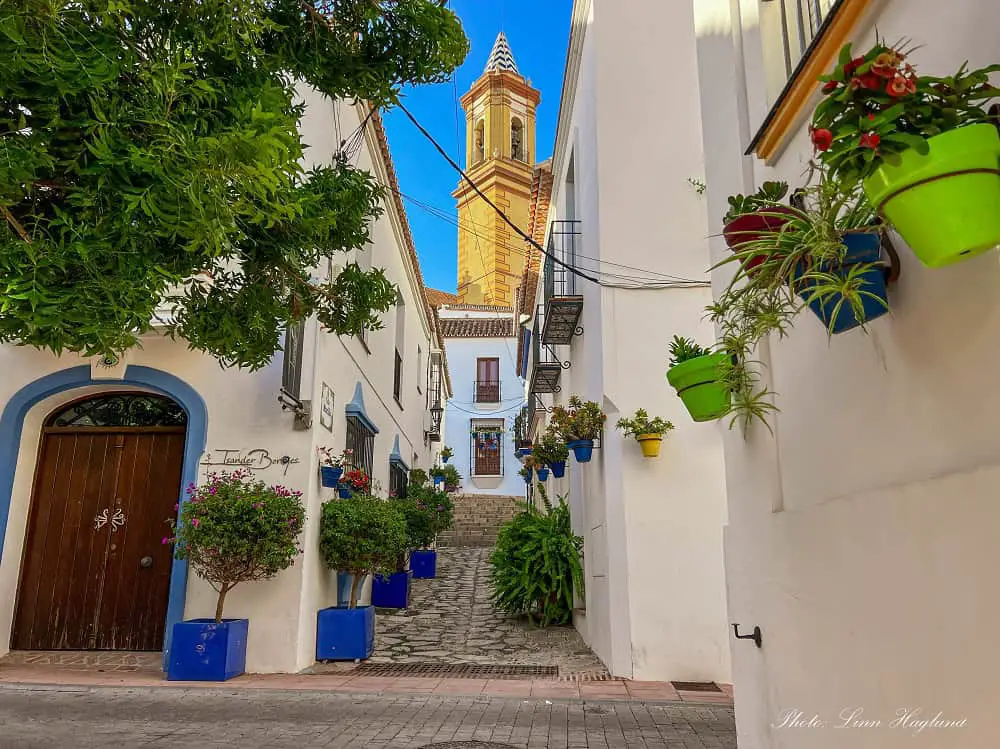
Sierra Nevada National Park
Whether you’re into hiking or skiing, you’ll love Sierra Nevada National Park. It is home to Europe’s southernmost ski resort with slopes descending Pico Veleta, the second-highest 3000-meters peak in the national park. Skiing in Sierra Nevada is fantastic with a long season normally running from late November to late April.
In the lower Sierra Nevada, there are fun hikes like Los Cahorros de Monachil and Vereda de la Estrella. Through the summer months, I highly recommend climbing Mulhacen, the highest peak in the peninsula and if you’re up for a challenge, add the surrounding mountains like Veleta and Alcazaba to your hiking itinerary.
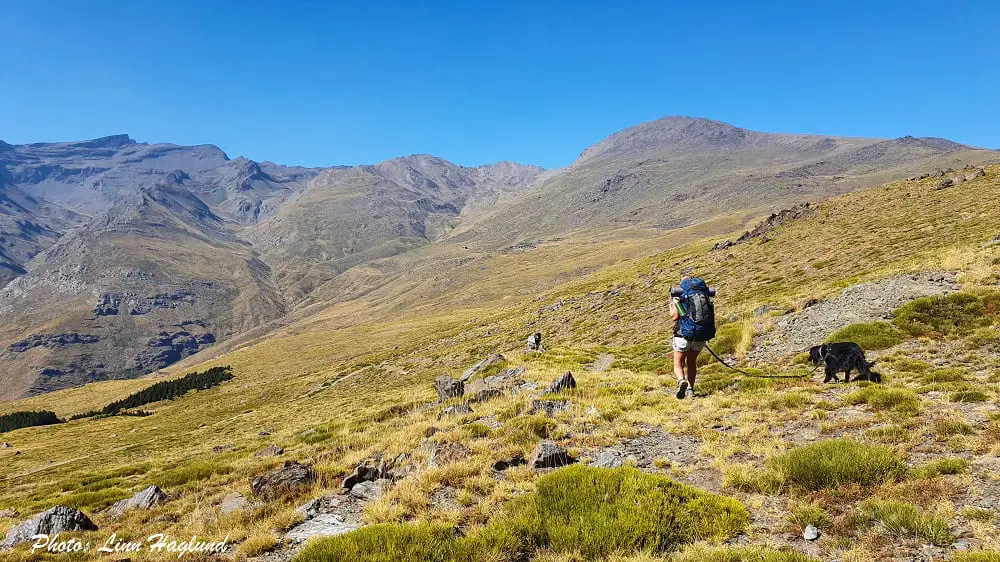
Frigiliana is yet another picture-perfect pueblo blanco overlooking Costa del Sol’s blue waters. Located only a 10-minute drive from Nerja, there are plenty of things to do in Frigiliana , especially if you enjoy hiking.
Trails like Rio Higueron and Acequia del Lizar go straight from the village and offer splendid nature experiences.
The village itself is hilly with narrow streets winding up through boutique shops and restaurants with plenty of benches to catch a breath and take in the views.
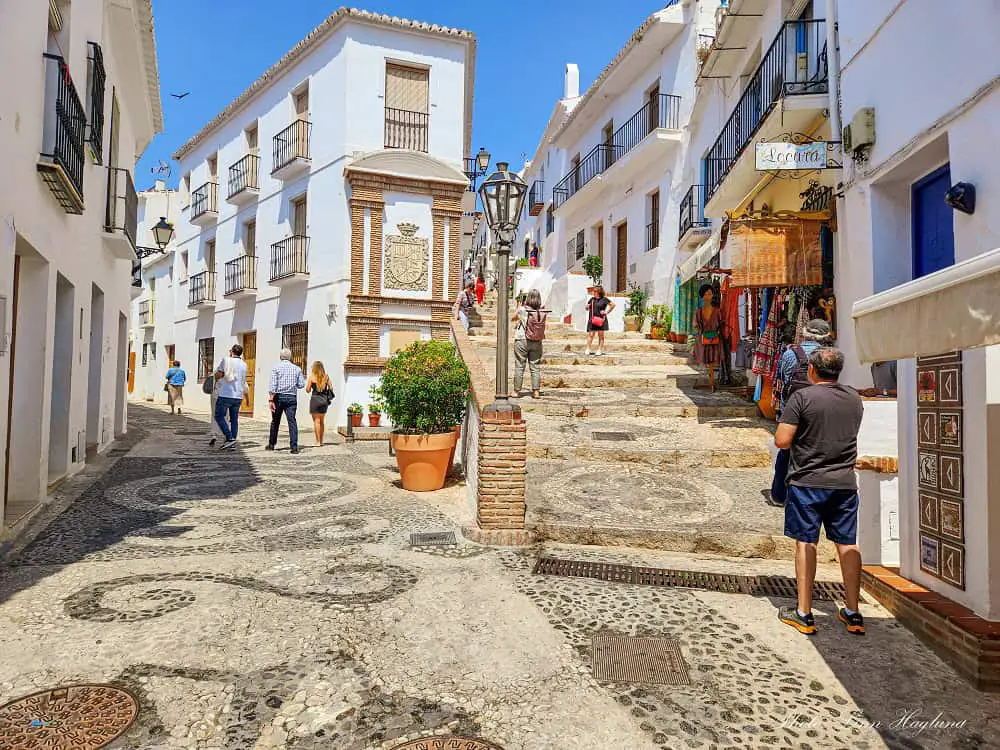
Costa Tropical
Costa Tropical is one of the lesser-known coasts in Andalucia, belonging to Granada Province. What I love about it is mainly the more local feel to it – mostly Spanish tourists trump the foreigners, though it’s getting more and more popular – and the crystal-clear water.
Many beaches are more rocky than in Costa del Sol, thus you can see straight through, but there are also beautiful sandy beaches in places like Almuñecar and Salobreña .
Smaller beach towns like Calahonda and La Herradura are wonderful for kayaking and hiking while one of Andalucia’s best-hidden gems , Torrenueva boasts the first hanging bridge over the Mediterranean in Spain and some of the finest beaches in Granada .
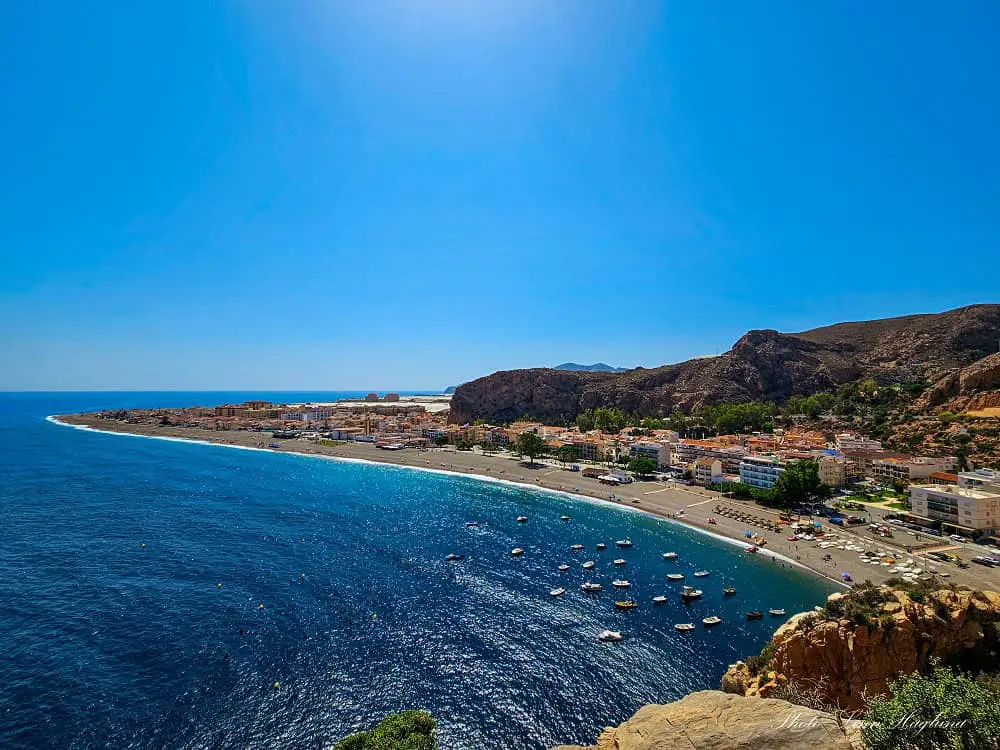
Sierra Norte de Sevilla
If you’re looking for lush green forests with flowing rivers and refreshing waterfalls without the crowds, look no further than Sierra Norte de Sevilla. Only an hour north of Seville, you find this jewel with plenty of easy hiking routes and lovely small towns.
There, you’ll get to explore the places where the locals travel to get out of the city. With natural wonders like Cerro del Hierro and the artificial beach in San Nicolas del Puerto town, there are plenty of things to do.
I also recommend walking or cycling the Via Verde as you will pass most of the main attractions, including a detour to the mesmerizing Huéznar waterfalls.

Baños de la Encina
Baños de la Encina is one of the places I accidentally found on a road trip by looking a the map, seeing a castle, and taking a detour.
The best detour I took on the entire road trip through Jaen Province. It’s a charming little village with a fantastic 10th-century castle.
You can easily visit the village on a day trip from Jaen or on the way to Ubeda and Baeza as it only needs a few hours to explore. But it’s definitely worth it!
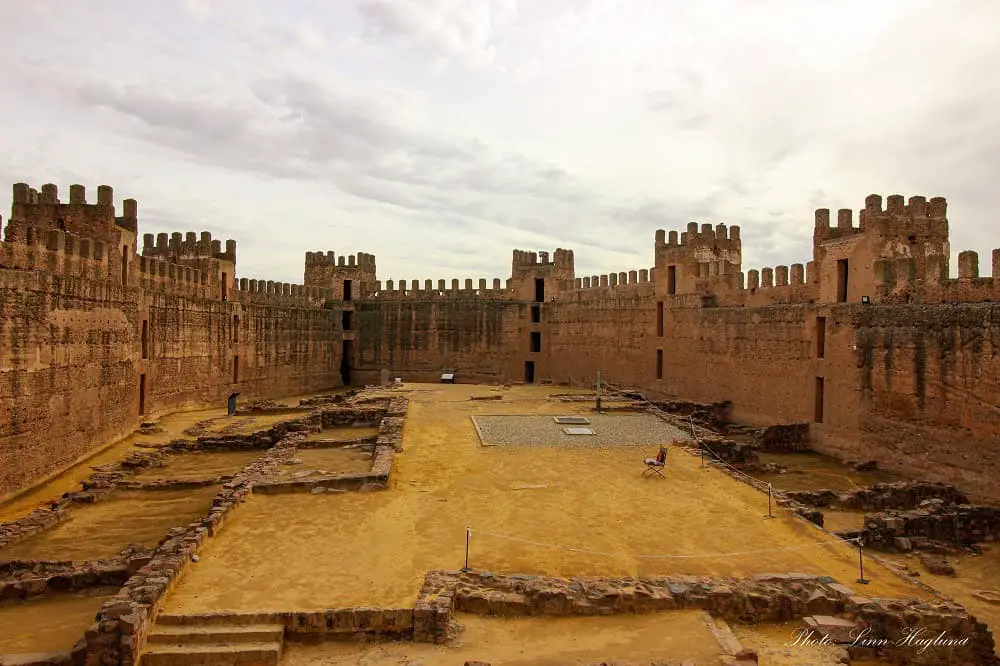
Sierras de Cazorla, Segura y Las Villas Natural Park
Likely my favorite natural park in Andalucia, Sierras de Cazorla, Segura y Las Villas Natural Park, has so much to offer.
I recommend basing yourself in Cazorla , as there are several great hikes you can take straight from the village, like Rio Cerezuelo and Pico Gilillo. There are also several castles within walking distance.
While there are loads of things to do and see, I highly recommend hiking Rio Borosa as the most beautiful hike in the natural park.
It takes you along the river, on a boardwalk pinned to the mountain, and to several waterfalls before it winds up the mountain and through a long tunnel where I recommend bringing a headlamp to see where you go. Definitely a highlight!

Bolonia Dunes and the Baleo Claudia Ruins
Bolonia dunes and beach are absolutely mesmerizing and only a short drive from Tarifa . The massive sand dune is set on one side of the beach offering sweeping views of the bay and even across to Africa.
There are some facilities on the beach, but most of it is completely wild. I love that you have the chance to choose what you want.
Right behind the beach, you find the 2nd-century BC ruins of Baleo Claudia, an old Roman fishing settlement. It’s cool to see the ruins straight from the beach, though I highly recommend visiting the museum and learning some history.
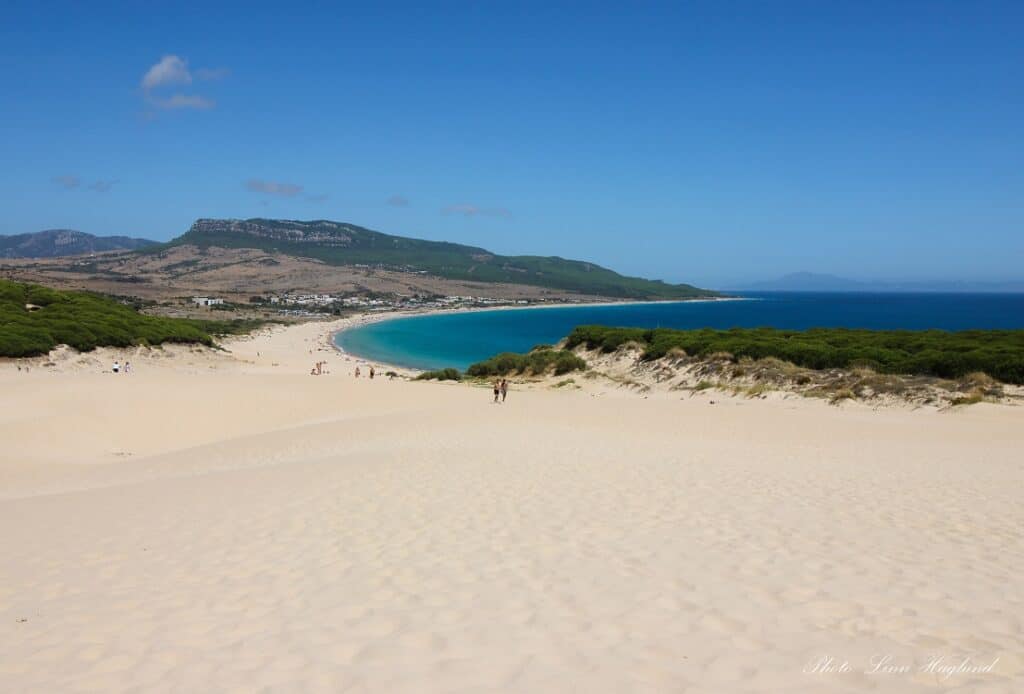
Lucena is one of the places in Andalucia that surprised me the most. First of all, because I had never heard of it, I just found it on the map and decided to check it out, but secondly, because there are so many things to do in Lucena .
The city center is jam-packed with splendid churches and palaces worth entering and a city center castle with views. If you head outside the old town, you can visit the Jewish Necropolis and old Roman remains.
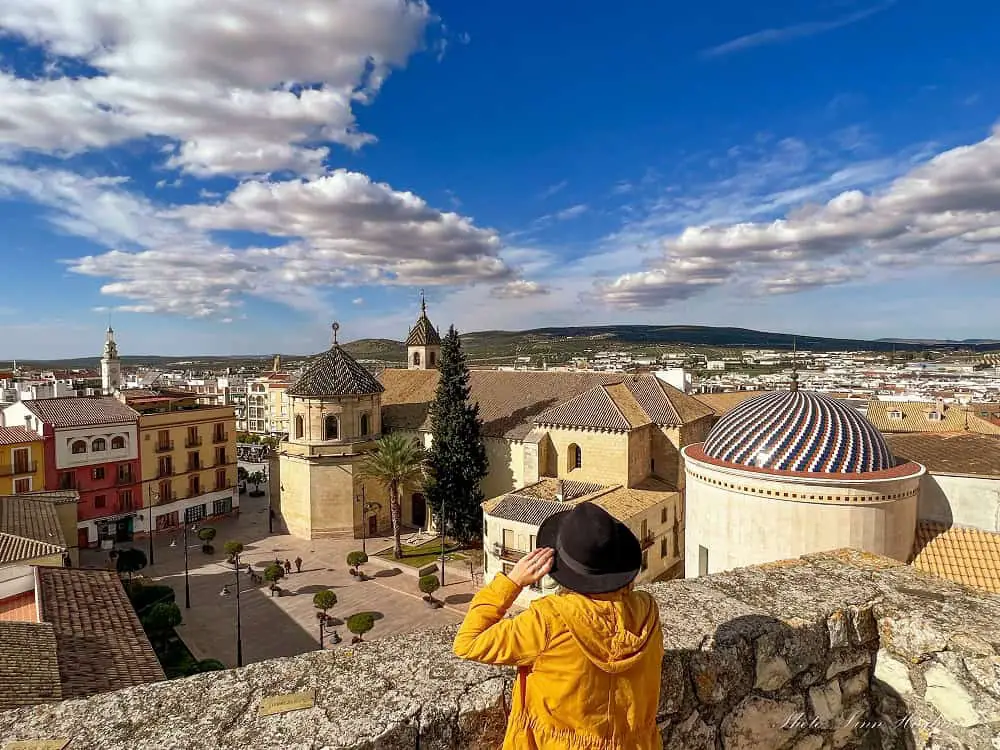
Reflections on
There are so many epic Andalucia destinations to discover and no matter if you prefer history, nature, or culture, there is something for you.
These are just my picks among the best places to visit in Andalucia, but I can assure you there are plenty more places worth your attention. But we all gotta start somewhere, right?
Happy travels!

10 Days in Andalusia Itinerary: the Best of Sunny Southern Spain
Planning a trip to southern Spain? This is the ultimate 10 day road trip itinerary for Andalusia.
This southern Spain itinerary takes you to the best and most beautiful cities and towns in Andalusia . You’ll discover the top must visit attractions, historic landmarks, and magnificent UNESCO sites.
I loved every stop on my last solo trip to sunny Andalusia. Full disclosure, it was February, so beach lounging was out of the question.
Nonetheless, I had an amazing trip, without the usual crowds. And I’m ready to hand over what I thought was a smashing 10 day itinerary for southern Spain.
This Andalusia itinerary is a well-balanced blend of must see hotspots, hidden gems, tiny whitewashed villages, and natural wonders.
When you think of Andalusia, fiestas, siestas, flamenco, bullfighting, and tapas come to mind. And, though they’re stereotypes, there’s some truth to them.
Tips For Driving in Andalusia
I flew into beautiful Seville and worked my way east, flying out of Granada . But you could just as easily reverse the direction and start in Granada. Starting in Seville meant that I didn’t need a car the first few days.
By far the best way to see Andalusia is by car. That way, you’re not limited by bus or train schedules and you can stop wherever you want. A car is the gift of freedom.
READ : Tips for Renting a Car and Driving in Europe
To be safe, you should have an International Driving Permit, just in case you’re pulled over. And rent the smallest car possible.
Medieval streets, parking garages, and on street parking can sometimes be a challenge. Or even a real headache.
The highways in Andalusia are extremely good. Just be sure to park on the outskirts of any small towns you’re visiting, so you’re not stuck in a labyrinthian maze of narrow medieval streets.
Google maps worked well for me. I’m directionally challenged and only got lost a tiny bit in Granada.
Overview of Andalusia Road Trip
I had three bases: Seville (4 nights), Ronda (2 nights), and Granada (4 nights). I really dislike moving every day.
From those bases, I blitzed around seeing adorable white pueblos, dazzling palaces, Game of Thrones sites, and the natural wonders of Andalusia.
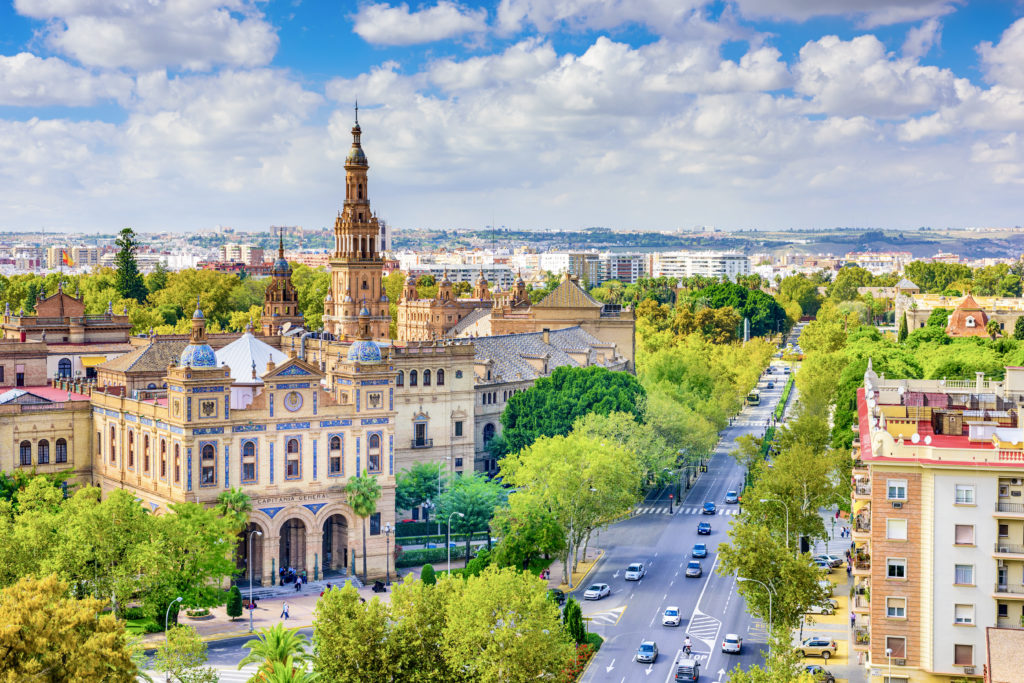
Here’s my recommended 10 day itinerary for a self drive road trip from Seville to Granada. You don’t need to pick up your rental car until day 5 when you head to Ronda.
- Day 1 : Seville
- Day 2 : Seville
- Day 3 : Seville
- Day 4 : Train to Cordoba
- Day 5 : Drive To Ronda with Stops at Osuna and Grazalema
- Day 6 : Ronda
- Day 7 : Drive To Granada, stopping in Antequera
- Day 8 : Granada
- Day 9 : Granada
- Day 10 : Day trip to Guadix
- More Time in Spain? Head north to Madrid
I skipped Malaga. It’s hard to do everything with only 10 days in Andalusia.
And it was far less appealing to me — big city, lots of expats, and a cruise ship stop. Though I would have liked to see the Picasso Museum there.
I stayed or stopped in 10 towns: Seville, Cordoba, Osuna, Grazalema, Ronda, Antequera, Granada, Nerja, Frigiliana, and Guadix. I spent the most time in sunny Sevilla, which was sunny even in February.
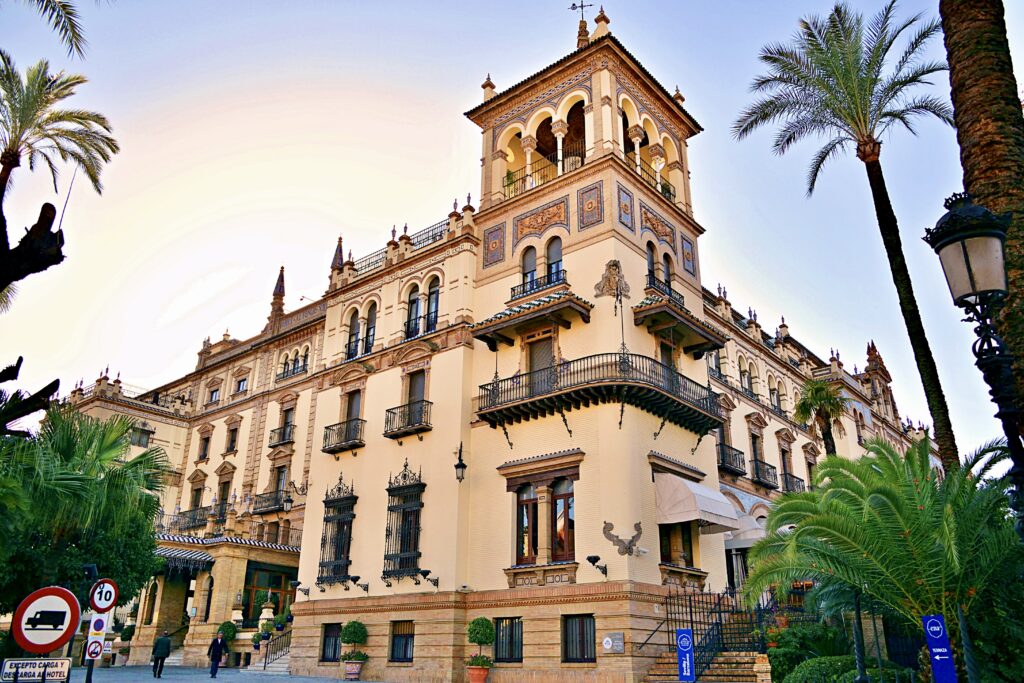
Where To Stay in Andalusia
You can either stay in Air BnBs or hotels in southern Spain. I’ve done both.
Here are hotel recommendations for the bases on this 10 day itinerary. I put a * by my #1 recommendation.
Seville : * Hotel Alfonso XIII , Hotel Colon Gran Melia , Suites Machado , Hotel Casa del Poeta , Hotel Casa 1800 Seville , EME Catedral Hotel
Ronda : Parador de Ronda , Catalonia Ronda , Hotel Molino del Arco , * Hotel Montelirio
Granada : Eurostars Catedral , Catalonia Granada , * Hospes Palacio de los Patos , Hotel Alhambra Palace
10 Days in Andalusia Itinerary
Let’s dive right in to how to spend 10 days in Andalusia.
Day 1: Seville’s Main Attractions
Use the beautiful city of Sevilla as you base for the first 4 nights.
Seville is amazing. It’s a seductive mix of Mudéjar palaces, ornate baroque churches, colorful tiles, and winding cobblestone lanes. There’s a romance to it. I fell in love immediately.
To be fair, I think there are ways that Seville can be a PITA. I list them here . But on the whole, it was glorious.
On day one, head to the city’s historic center to take in Seville Cathedral, the incredible Royal Alcazar, and the Plaza de España.
You can walk most places in Seville fairly easily. But the hop on hop off bus tour is also a good option.
1. Seville Cathedral
Seville Cathedral is a massive Gothic affair. It’s the third largest cathedral in the world and a UNESCO site to boot.
The sheer scale of the building is impressive. There are 15 doors on the cathedral’s four facades and each one features a unique relief or carving. The nave is the longest in the world.
The high altar is elaborately detailed and finished in gold leaf. Along the sides, there are 80 chapels to explore. The cathedral houses the tomb of Christopher Columbus.
Be sure to climb up the Giralda bell tower for spectacular views. The entrance is in a corner of the cathedral. Click here for skip the line tickets and a guided tour of the cathedral and bell tower.
2. Royal Alcazar
Next, head to the Royal Alcazar , one of the top attractions in Seville . It’s a breathtaking 10th century palace that King Pedro gave a 14th century Mudéjar facelift.
The Alcázar is really one of the world’s greatest cultural treasures — a centuries old complex of palaces and fortifications, lovely courtyards, and extensive gardens bursting with orange, purple, and green colors.
The Alcázar is a UNESCO World Heritage site, a residence of the Spanish Royal family. It’s even a filming location for the HBO series Game of Thrones . It has exquisite tile work and over the top intricate Islamic architecture.
Inside, the highlights are the Hall of the Ambassadors, the Courtyard of the Maidens, the Courtyard of the Dolls, and the Hall of Tapestries in the Gothic Palace.
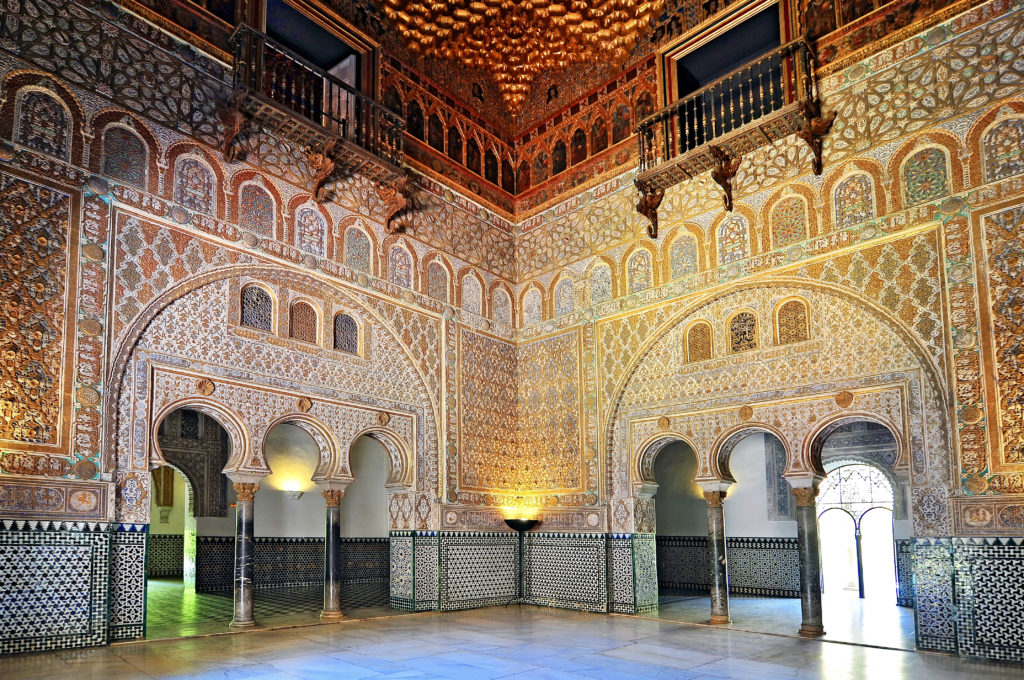
The Ambassador’s Hall, or Throne Room, is the big showstopper in the palace. It’s mind blowing.
The room is nicknamed the “Half Orange” Room. It sports a fantastical gilded cedar domed ceiling. Encrusted with gold and mirrors, the dome represents the heavens.
Outside, there’s a series of verdant lush gardens. Don’t miss the Baths of Maria De Padilla, King Pedro’s mistress. The baths are one of the Alcazar’s Game of Thrones filming locations , a place where the Sand Snakes plot.
I advise purchasing tickets online well in advance. Even in February, I had a half hour wait in line. If you’d also like a guided tour, which you may for this fantastic place, click here for a 1.5 hour guided tour.
The Alcazar was my very favorite place in all of Andalusia. Here’s my complete guide to the magnificent Royal Alcazar .
3. Plaza de España
Later, spend the early evening checking out the Plaza de España .
The plaza is one of the famous architectural landmarks in Seville. It stands out in a city already overflowing with beautiful architecture.
It was built for the Ibero-American World Fair of 1929, where Spanish speaking countries enjoyed a year long mutual admiration festival.
The park’s highlight is the Spanish Pavilion, the sweeping half circle structure with rose gold brick buildings.
Day 2: More of Seville’s Top Attractions
Cross the Puente de Isabel II bridge over the Guadalquivir River, and you’ll land in the colorful Triana neighborhood.
It’s a small soulful village and the old gypsy quarter of Seville.
Triana was once considered the “wrong side” of the river. Now, its the fun and funky part of Seville.
And it is THE place to buy ceramics. And, I was told, the best place to se flamenco.
2. Metropol Parasol
Next, visit Metropol Parasol.
The ultramodern Metropol Parasol was built between 2005-11 by German architect Jürgen Mayer to revitalize the run down Encarnacion Square.
It’s called “the Mushrooms” due to its quirky waffle-like shape, inspired by the vaults of the Seville Cathedral.
Click here to book a skip the line ticket and guided tour.
3. Barrio Santa Cruz
Spend the late afternoon amidst the orange trees and tapas bars in Barrio Santa Cruz. Barrio Santa Cruz was once Seville’s old Jewish quarter.
It’s a popular district within the city — a mass of tangled cobbled streets with tiny palazzos and tile covered patios. There’s a mouth watering array of tapas bars and restaurants.
Some streets are so impossibly narrow, they’re called “kissing lanes.” I especially liked Plaza Dona Elvira.
4. Tapas Tour
In the evening, I recommend going on a Devour Seville “Tapas, Taverns & History” tour that evening. The tour was fun and has 5 star reviews.
You’ll get nummy tapas and nuggets of history.
The Sevillanos adore very sweet drinks, including something called “orange wine.”
Day 3: Round Up of Seville Attractions
1. museum of fine arts.
On your last day in Seville, your first port of call is the Museo de Bellas Artes , or Museum of Fine Arts. It opens at 9:00 am.
It’s one of Spain’s best art museums . The museum is quite lovely and crowd free to boot.
The museum is known, after the Madrid’s Prado Museum , as the “second art gallery in Spain.” It’s housed in a lovely salmon colored former convent.
The museum has art from the middle ages to the 20th century. But it’s mostly known for its collection of 17th century art from Spain’s Golden Age.
The museum has work by Spain’s top painters, including Zurbarán, Murillo, El Greco, and Diego Velazquez. You’ll see a lot of monks, balding saints, cherubs, and depictions of Christ.
The museum also has a goodly collection by the Baroque star Murillo. (You can also Murillo’s works at Seville Cathedral.)
Murillo achieved fame and recognition from his religious portraits. But he also left behind some fascinating work of everyday people and street life.
2. Casas de Pilatos
Then, pay a visit to Casa de Pilatos . The casa is a glorious, sumptuous 16th century mansion in Seville’s historic district.
It’s about a 15 minute walk from the Cathedral. The palace was declared a national monument in 1931.
Casa de Pilatos is a beautiful Neo-Mudejar mansion. The palace is overflowing with mosaics, beautiful tile, and sculptures.
A highlight is the courtyard. it’s surrounded by a gallery formed by white marble columns with Mudejar arches.
Inside, there are 24 busts of Spanish kings, Roman emperors, and other characters gracing niches in the walls, which were collected from the ruins of Italica. Click here for tickets.
3. Basilica of the Macarena
In evening, wander north to see the Basilica de la Macarena and the “weeping virgin” in the north end of Seville. The Macarena is a bit off center.
It’s on the north end of Seville’s city center. But it’s definitely worth a detour.
The basilica is also known as the Church of the Virgin of Hope of Lady Macarena. It’s a showy bright yellow Neo-Baroque Church. It houses Seville’s favorite “weeping virgin,” La Macarena .
After visiting the church, stroll along the river to the Torre del Oro. It’s a pretty tower, but you don’t need to go inside.
Day 4: Day Trip to Cordoba
On day 4 of my 10 days in Andalusia, take the train to Cordoba for the day. You can also book a day trip tour from Seville, to make things easier.
I loved Cordoba. It’s a natural film set, it’s just so beautiful. Here’s my one day itinerary for Cordoba for reference.
Cordoba has an authentic Spanish vibe with fewer tourists than Seville. The town definitely deserves more than one day. Still, I saw quite a bit in the 9 hours I was there.
Start with Cordoba’s #1 site, the Mezquita , the Mosque-Cathedral of Cordoba. Dating from the 10th century, it’s a UNESCO site and one of the world’s most well- preserved Islamic buildings.
In the 16th century, King Ferdinand and Queen Isabella converted it into a cathedral, calling it the Cathedral of Our Lady of Assumption.
I expected the combination to be discordant and perplexing. But I found the place fascinating, a snapshot of the sophisticated dual culture that once existed.
You walk in from a courtyard of orange trees through the Porta de las Palmas. You’re immediately in a forest of candy cane horseshoe arches. A highlight is the Mihrab, or high altar in a mosque.
The Renaissance cathedral is built right in the center, sharing marble and space with the Islamic arches. The vaulted ceilings are stunning. Be sure to go up the bell tower for spectacular views of the city.
Click here to book a ticket and guided tour of the Mezquita.
But there’s much more to Cordoba than the Mezquita. Just downhill from the Mezquita is the Guadalquivir River. Cross the stunning Roman Bridge, which is both a UNESCO site and Game of Thrones filming location.
Stroll around the narrow streets of the charming old Jewish Quarter. Skip the Instagram popular Calleja de las Flores, or just stroll by.
It’s overrated and crammed with tourists. There are beautiful flowers and patios everywhere in Cordoba.
Go into the Jewish synagogue, say hello to the statue of Maimonides. Visit the beautiful Alcazar de los Reyes Cristianos. This Alcazar can’t hold a candle to Seville’s Royal Alcazar, but I thought it was still worth a visit.
I had a late lunch in the courtyard of an adorable cafe in the Jewish Quarter, El Rincon de Carmen, which I would definitely recommend.
If you don’t want to walk around Cordoba, you can also take the hop on hop off bus tour .
Day 5: Drive To Ronda with Stops at Osuna and Grazalema
On day 5, pick up your rental car on the way out of Seville and head to the tourist-fly popular town Ronda for “bridge porn.”
On the way, I stop in the charming white pueblo towns of Osuna and Grazalema.
Osuna surprised me. I visited the town for its dashing bullring, which is one of Andalusia’s Game of Thrones filming locations .
But Osuna itself was beyond adorable. It’s a charming white pueblo village with a rich architectural and cultural heritage.
There’s row upon row of white stucco homes and streets dotted with orange trees. Osuna’s a vertitable art gallery, with all its Renaissance and Baroque churches.
UNESCO lists Osuna’s main drag, the Call San Pedro, as the second most beautiful street in Europe . Osuna was declared a Historic-Artistic site in 1967.
2. Grazelema
Next up is Grazalema. It’s a pretty mountain village of Roma origin. It’s completely different than Osuna, more wild.
It lays in the valley of Sierra de Grazalema, splashed with whitewashed homes and surrounded by olive trees.
I was there in February, so there was even a sprinkling of snow. I paused in the main square, the Plaza de España, which is lined with bars and restaurants, for a late lunch.
3. Zahara de la Sierra
Depending on time, you can also visit Zahara de la Sierra, right next door to Grazalema.
Like Grazalema, it’s streets are white, immaculate, and fairly deserted. You can climb to the Tower of Tribute for views.
Day 6: Ronda: Hemingway’s “Romantic Background”
Only 40 minutes from Grazalema, Ronda is vastly more popular. It’s the third most visited town in Andalusia.
And there’s a a reason — it’s dramatic. Ronda is Andalusia’s great cliff hanger. It’s perched on a mountainous gash carved by the Río Guadalevín.
Ronda is synonymous with its dramatic 18th century bridge, the Puente Nuevo.
The bridge connects the two parts of the town over the 328 feet El Tajo gorge. You can hike to the bottom of the gorge for great views.
Aside from the bridge, Ronda is pretty adorable. There are plenty of cozy town squares, cobblestone alleys, terraces everywhere, and lovely architecture.
You can visit the Mondragón Palace, the Arabic Baths, and the Bullring (Spain’s oldest one) if you’re feeling ambitious.
I made this a lazy, laid back day, after a fairly hectic schedule. I like to have a more relaxed day halfway through a road trip. Ronda fit the bill perfectly.
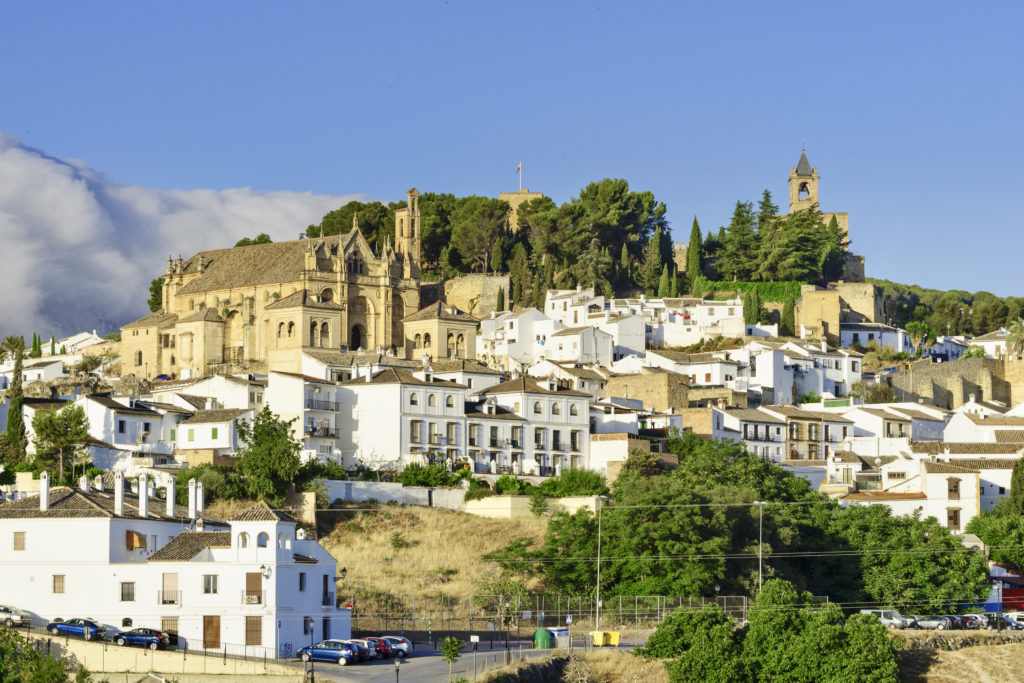
Day 7: Drive from Ronda to Granada, Stopping in Antequera
On day 7, make your way to Granada . En route, take a break and stop in the white pueblo town of Antequera . Like Osuna, Antequera surprised me.
I came to inspect the UNESCO dolmens. They are a fairly new site just listed in 2016.
But I absolutely fell in love with the town itself. Antequera is known as the “Florence of Andalusia.” And, unlike Ronda, I had the place mostly to myself. Antequera is really a must visit destination in Andalucia.
Antequera boasts ancient UNESCO megaliths , an impressive Moorish fortress, a lovely Renaissance church, and a stunning medieval and baroque historical core. You’ll have an eyeful of swoonful scenery.
Antequera’s ancient megaliths were declared a UNESCO World Heritage Site in 2016. The megaliths, or dolmens, are definitely an under appreciated UNESCO site, perhaps because it’s so new.
The Bronze Age dolmens are among the oldest things on the planet. They’re essentially Spain’s Stonehenge. The dolmens were discovered between 1903-05 by the brothers Antonio and José Viera of Antequera.
If you’re a ruin luster, you should definitely see them. They are just outside the town. Signs will direct you there.
You can book a guided walking tour of Antequera or a tour of the dolmens .
Day 8: Granada: The Alhambra and Barrio Sacramonte
On day 8 of your 10 day southern Spain itienrary, you land in the beautiful city of Granada.
1. Alhambra
Start your day in Granada at one of the most famous landmarks in Spain , the mighty Alhambra. The Alhambra is the world’s last and greatest Moorish fortress.
To visit, you need to pre-purchase tickets well in advance. You may want to pre-book a ticket and guided tour to enrich your visit.
The Alhambra sits on a stunning piece of real estate. It’s in a high, mountainous location on Sabika Hill. it boasts sweeping views over Granada and the surrounding countryside.
In the Moorish tradition, the Alhambra is decorated with water: “standing still, cascading, masking secret conversations, and drip-dropping playfully.”
Alhambra became a UNESCO site in 1984. It’s a deeply affecting place. It’s so beautiful and enchanting, it’s difficult to process. Or to unglue your camera from your face.
The most beautiful spot is the Nasrid Palace. When you buy your Alhambra ticket, you’ll be given a specific time to visit this particular palace.
Make sure you get in line at the right time. Or they won’t let you in.
There are no words to describe the breathtaking Moorish architecture of the Nasrid Palaces.
At every turn there is exquisite craftsmanship and/or a stunning view. The Court of the Lions and the Court of the Myrtles are highlight.
For more information, here’s my comprehensive guide to visiting the Alhambra .
2. Granada’s Historic Old Town
Once you’ve drooled over the Nasrid Palace and relived history in the Alcazaba, it’s time to explore Granada itself.
I didn’t know I would love Granada before I arrived — a common theme of my Andalusia trip apparently. But Granada unexpectedly swept me away with its authentic Spanish vibe and dazzling attractions.
Lorded over by the Sierra Nevada Mountains, it’s an absolutely beautiful ancient city. There is scad of historic architecture, including a massive Gothic cathedral.
Granada also boasts many atmospheric neighborhoods, each with an earthy distinct character.
3. Granada Cathedral & Royal Chapel
Granada Cathedral is a massive affair. It’s the second largest cathedral in Spain after Seville Cathedral and the fourth largest cathedral in the world.
It was built by Queen Isabella after the conquest of Granada. Construction began in 1518. It took over 180 years to complete.
The cathedral’s a mix of Renaissance and Baroque architectural styles. The chief architect was Alonso Cano, who took over in 1652. Inside, there’s a towering interior, a grand altar, and side chapels.
You’ll also want to visit the Royal Chapel. It’s connected to the cathedral, but has a separate entrance and admission fee. You can book a combined skip the line ticket and tour for both sites.
This is where you’ll find the ornate marble tombs of King Ferdinand and Queen Isabella. The Sacristy Museum also holds treasures, relics, and paintings.

4. Granada’s Sacromonte Neighborhood
That night, I recommend taking a walking tour at sunset to the otherworldly Sacromonte neighborhood.
Sacromonte feels disconnected from the city. Yet, it sports one of the most mesmerizing views of the Alhambra.
For centuries, Sacromonte was the home of gypsies, bohemians, artists, and foreign refuges. And they still live in the rustic caves.
Day 9: Nerja and Frigiliana
Craving some ocean air? Drive south toward the Costa del Sol to visit Nerja and Frigiliana. You can visit both towns on a guided day trip from Granada .
Nerja is a lovely town on the Costa del Sol, the beauty playground of southern Spain. The heart of Nerja is its beautiful Balcony of Europe.
The balcony is a palm-lined promontory. It was built not he foundation of an old fort.
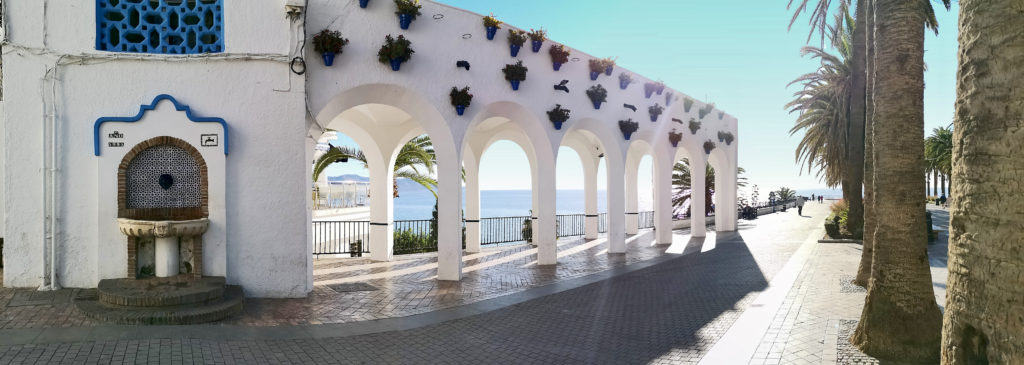
The balcony juts out like a natural pier and offers panoramic views of the cobalt blue sea and honey colored coast.
There are plenty of other amazing things to do in Nerja , including hitting Burriana Beach.
2. Nerja Caves
After visiting the town, head to Nerja Caves for a real adventure. The caves are situated on the slopes of the Sierra Almijara, just outside of Nerja.
The caves are about five kilometers long. They were once inhabited by the Stone Age hunters. The caves weren’t discovered until 1959.
On a tour, you’ll see rock formations, stalagmites, stalactites and subtle shifting colors. A guided visit lasts around 45 minutes.
3. Frigiliana
Just 15 minutes from Nerja by car is Frigiliana . Of all the beautiful towns in Andalusia, it might be the most beautiful of all.
In Frigiliana, everything is beautiful in a way that it almost never is. Frigiliana is a spotless, secluded, perfectly coifed cliff town dressed in blue and white with flowing orange and purple vines and potted blood red geraniums. Just dreamy.
And after visiting numerous moorish fortresses, cathedrals and other “must see” Andalusian sights, I was incredibly relieved that there was no major sites in Frigiliana. I wandered the pretty cobbled streets guilt free, enjoying the views.
I was ready to just sink in the Moorish beauty and Spanish countryside. Oh, and meander into ceramic shops, purchasing some lovely items to bring home.
Day 10: Day Trip to Guadix & Granada’s Albaicín Neighborhood
The next day I took a short half day trip to the unique cathedral town of Guadix.
The town is very off the beaten path destination in Andalucia. It’s only 45 minutes from Granada, so it’s an easy day trip,
I went mostly to see the house caves or “cuevas.” Guadix’s inhabitants live in caves, with whitewashed chimneys set against the mountains.
Guadix also has a charming old town and a 16th century cathedral worth visiting. It’s also famous for its earthenware pottery.
Back in Granada later, spend the late afternoon and evening wandering in the old Arab neighborhood of the Albaicín, or Albayzín.
Built on a steep hill, its an ancient area with tight tangled winding streets and a bohemian feel. It’s probably my favorite area in Granada.
The Albaicín was declared a UNESCO site in 1984. Amidst a jasmine scented breeze, you’ll find restaurants, cafes, tapas bars, and even street performers.
You can book a guided walking tour of the neighborhood or take a DIY stroll.
More Time in Spain?
If you have more than 10 days in Spain, head north to see a completely different side of Spain. To the north are Spain’s other great cities, Madrid and Barcelona . You’ll also find secret medieval towns, the Costa Brava, and Green Spain .
If you need some destination inspiration, here’s my guide to six one week itineraries in Spain .
I hope you’ve enjoyed my 10 days in Andalusia itinerary. Here are some of my Spain travel guides and resources:
- 10 Day Itinerary for Basque Spain
- Landmarks in Spain
- Hidden Gems in Spain
- 10 Day Itinerary From Barcelona to Bilbao
- 3 Day Itinerary for Barcelona
- 40+ Landmarks in Barcelona
- 2 Day Itinerary for Bilbao
- Most Beautiful Places in Andalusia
- Six 1 Week Itineraries for Spain
- 10 Day Road Trip From Madrid To Seville
- 2 Day Itinerary for Madrid
- Best Museums in Spain
If you’d like to road trip in southern Spain, pin it for later.
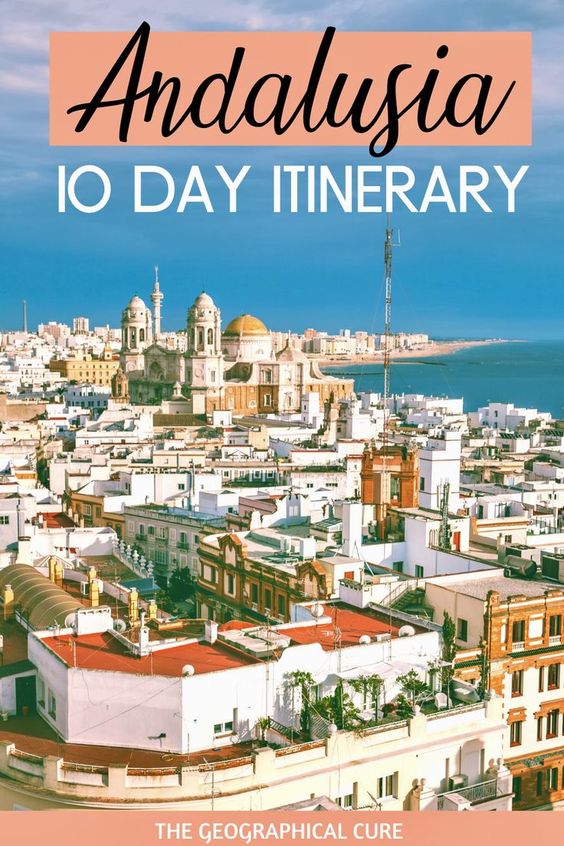
4 thoughts on “10 Days in Andalusia Itinerary: the Best of Sunny Southern Spain”
Where did you stay?
Air Bnbs in Seville and Granada.
Hi, thanks for all your info. This has been very helpful for our trip.
For Seville it should be mentioned though that you need!!!! to book your tickets to the Alcazar days in advance to avoid disappointment. We got here thinking that a day would be enough only to be proven wrong. We even tried on the day to go there to buy tickets for the day and even though we arrived shortly before it opened, we were already too late. And this wasn’t even peak season. Second disappointment. It’s crazy that you have to book everything in advance it seems and can’t be spontaneous anymore 🙁
Yes, that is for sure! I find that, these days, you have to book skip the line tickets for star attractions well in advance. Tbere is no spontaneity anymore, even in non-peak season. I was just shut out of the opera tour in Vienna in mid-October even though I should know better.
Leave a Comment Cancel reply
Save my name, email, and website in this browser for the next time I comment.
Last Updated on February 27, 2023 by Leslie Livingston

Visit Andalucia: Top 20 Things To Do and Must-See Attractions
The 20 best things to do in andalucia (bucket list).
You want to visit Andalucia (South of Spain) for your next trip and you’re looking for the best things to do?
You’re at the right place!
In order to help you plan your stay , I have prepared this list of the 20 best places to visit in Andalucia , with all must-see attractions and points of interest.
In addition to this list of the best things to do , I will also give you all my best tips as well as detailed itineraries to visit Andalucia in 3 to 16 days.
So, what are the best things to do in Andalucia? Where to go?
Let’s find out!
5. The White Villages
6. sierra de grazalema natural park, 8. the caminito del rey, 10. doñana national park, 11. marbella, 12. jerez de la frontera, 13. nerja caves, 14. the sierra nevada and the alpujarras, 15. gibraltar, 16. cabo de gata-nijar natural park, 17. tabernas desert, 18. ubeda and baeza, 19. attend a flamenco show, 20. eat tapas, renting a boat in andalucia, you’re traveling in spain these articles will help you, visit andalucia: the 20 best places to visit and must-see attractions.
In order to help you plan your stay in Andalucia, I have prepared detailed itineraries depending on your trip duration . You should read them after reading this article.
You can find them here, simply click on the orange links to read the articles:
- Itinerary: 4-5 days in Andalucia – The perfect itinerary for a short stay in Andalucia!
- Itinerary: 1 week in Andalucia – With all my best tips + accommodation suggestions!
- Itinerary: 10 days in Andalucia – Discover how to visit Andalucia in 10 days, with all my best tips!
- Itinerary: 2 weeks in Andalucia – The best itinerary to visit Andalucia in 14-15 days
They will allow you to plan your trip very easily!
And if you have any question, don’t hesitate to ask me in the comments section, at the end of the article. I would be glad to help you plan your stay.
Let’s start this Andalucia tourist guide with Seville , the capital.
The Andalusian capital is full of historical monuments to discover . Whether you’re traveling with friends in the mood to party or looking for a romantic gateway , Seville is the perfect destination to have a good time and enjoy the sun.
Here are the best places to see in Seville, Andalucia:
- Seville Cathedral: this UNESCO World Heritage is the 3rd biggest cathedral in the world! Inside you’ll find the tomb of Cristopher Colombus, 45 panels representing the life of Christ and an impressive collection of art pieces. You should buy your skip the line tickets here .
- The Giralda: the top of the cathedral bell tower offers a 360° scenic view over the whole city.
- The Alcazar is the residence of the King of Spain when he visits Andalucia. In this palace, you’ll see sumptuous rooms, patios and stunning gardens. It’s the 2nd must-see attraction to visit in Seville. To avoid waiting in line at the entrance, click here .
- Santa Cruz neighborhood, Seville’s historic center. Many monuments to see (Seville Cathedral and the Alcazar are located there), plenty of souvenir shops, coffee shops and restaurants everywhere. You guessed it: it’s the most touristic part of the city.
- The Plaza de España: This auditorium-shaped square, with bridges spanning over a canal and azujelos-decorated benches is the most beautiful I’ve ever seen!
- The Maria Luisa park: located right next to the Plaza de España, it’s the ideal spot to walk around and get some fresh air.
You can find detailed information about Seville in my article: The 15 best things to do in Seville .
If you plan to visit Seville, but also Cordoba and Granada during your road trip in Andalusia , you should buy the Andalusia Pass, also called “Best of Andalusia Card”.
It allows you to visit the 3 main tourist sites of Andalusia while saving a lot of time and money!
It includes:
- A skip the line ticket for the Alcazar of Seville
- A skip the line ticket for the Alhambra of Granada and the Nasrid palaces
- A guided tour of the Mosque-Cathedral of Cordoba
- An audio guide for Seville and Granada, to download on your smartphone.
To book your Andalusia Pass , you just have to click on the button below:
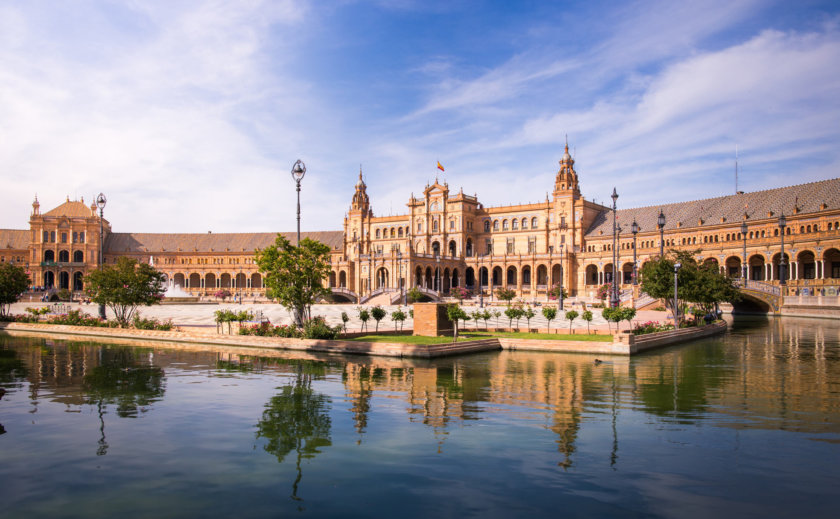
Located only 40 min away from Seville by train, Cordoba is a must-see on a trip to Andalucia .
What to do in Cordoba?
- Visit the Mosque Cathedral of Cordoba (book here): If you just have time to visit one site in Cordoba, you should head to the mosque-cathedral. The interior, with its red and white arcades is really unique.
- Discover the Alcazar de los Reyes Cristianos . In the past, this place has been the residence of catholic kings, the Inquisition headquarter and even a prison. Its magnificent gardens are worth the visit! In my opinion, these gardens are even more beautiful than Seville Alcazar ones.
- Go for a walk in the Jewish quarter: don’t miss “la calleja de las Flores” (flowers’ street), the synagogue and San Bartolomé chapel.
- Cross the Roman bridge to enjoy the view over the mosque-cathedral and the old city. It’s even better at sunset!
Cordoba was one of my favorite places to visit during my stay in Andalucia.
You will find every information you need to visit Cordoba in my article: The 15 best things to do in Cordoba.
With the Andalusia Pass I mentioned above, you can enjoy a guided tour of the Mosque-Cathedral of Cordoba . You need to buy it directly by clicking here!
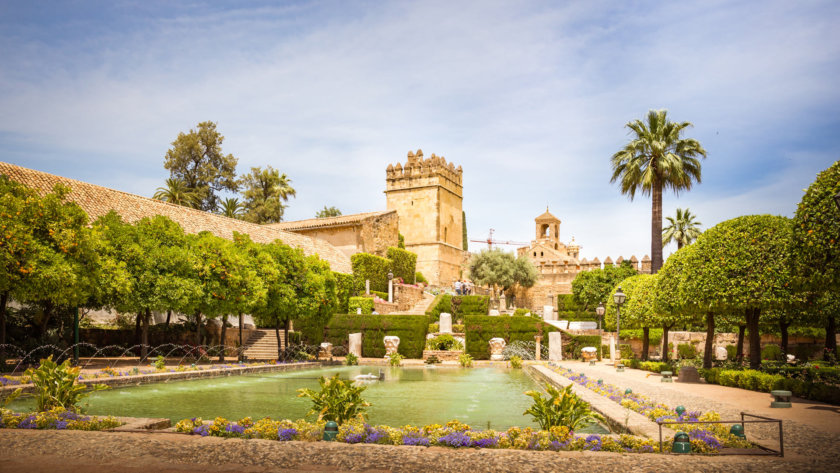
Seville, Cordoba and now Granada , we have our trio of must-see cities in Andalucia!
Granada also has its own emblematic historical monument: the world-famous Alhambra . This stunning palace and fortress complex is one of the most emblematic monuments of Islamic architecture . After the gardens in the Alcazar of Seville and Cordoba, brace yourself for the spectacular Generalife gardens !
The site welcomes “only” 3300 visitors in the morning , and another 3300 in the afternoon. This UNESCO World Heritage Site is the most visited monument in Spain . So you get it, you must book your tickets in advance if you want to visit the Alhambra.
Other points of interest in Granada, Andalucia:
- San Nicolas mirador and San Miguel Alto mirador, for their stunning scenic view
- The Albaicin neighborhood to attend a street flamenco performance
- Granada cathedral and the Catholic Kings Museum
- The Sacromonte neighborhood and its famous troglodyte houses, the “cuevas”.
If you want more information about Granada, you should read my detailed article: The 15 best things to do in Granada .
If you are planning to visit Seville and Cordoba in addition to Granada, don’t forget that the Andalusia Pass is the best solution to save time and money!
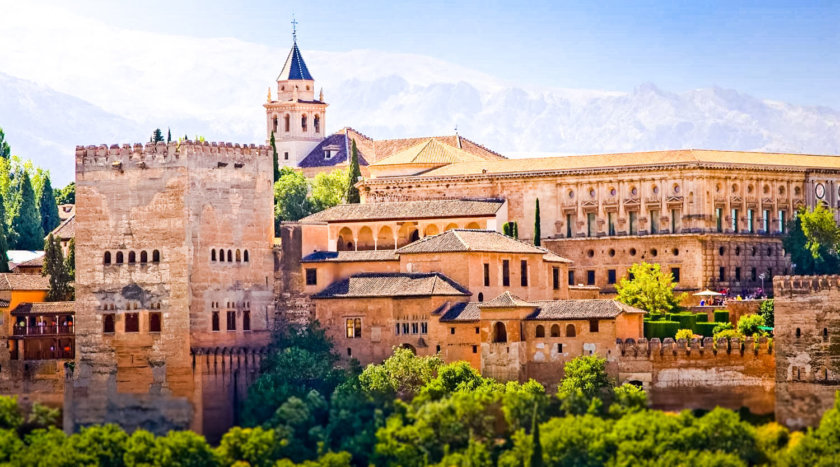
Ronda is another top place to visit in Andalucia.
This lovely small village is located on top of a hill, dominating the whole valley. The main attraction there is the Puente Nuevo (“New Bridge” in English), you’ll see it on every postcards! It connects the old and new town , spanning over the river and valley.
If you want to take the perfect picture, go to the Plaza Maria Auxiliadora, and take the path going down to the 2 viewpoints over the bridge.
In Ronda, you can also visit:
- Ronda Arena
- Mondragon Palace
- the bandit museum
- La Casa del Rey Moro (“House of the Moorish King” in English).
If you want more details about the best things to do in Ronda, you should read my article: Visit Ronda: the definitive guide.
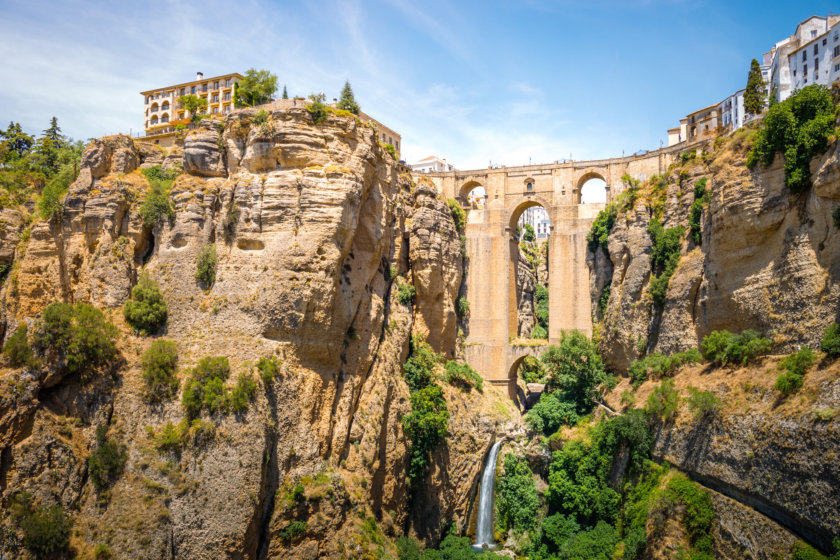
Among all the things to do in Andalucia, you really should do a road trip on the White villages Route . The most famous road of Andalucia will take you to the most beautiful villages and countryside spots.
Most of the White Villages, or “Pueblos Blancos” , are located uphill. In the past, that was the best protection against a potential enemy attack!
If all the houses are white, it’s for a good reason: it helps to keep their inside relatively cool during the hot Andalusian summers. You will see, these villages are very charming with their narrow streets and balconies covered with flowers.
Where to stop on the Route of the White Villages:
- Arcos de la Frontera: you’ll see nice churches there and the Castle of Arcos de la Frontera. The scenic view from the mirador is breathtaking. Arcos is the highest White Village.
- Grazalema: for its 3 miradors and their scenic view over the village and the Sierra de Grazalema
- Zahara de la Sierra: it’s one of the most typical and most beautiful White Villages, with remains of a castle and a breathtaking view over the turquoise lake below
- Setenil de las Bodegas: A very special Andalusian White village, most of the houses are troglodytes. They are carved in a gigantic rock.
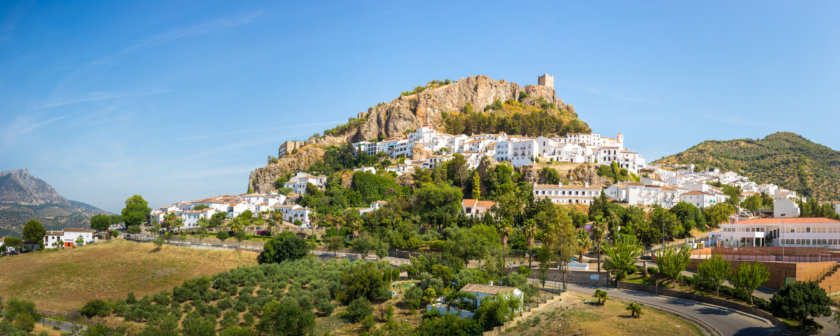
What else can you do in Andalucia besides visiting cities? Go hiking!
Sierra de Grazalema natural park is a great place for hiking. It’s located in Cadiz and Malaga provinces, close to Arcos and Zahara villages.
There are many hiking trails in this park, you will need to choose one (or several!) depending on your fitness level, your interest and also the time of the year (some hiking paths are closed in the summer because of fire hazard).
For more information, there are 3 visitor center located in El Bosque, Zahara de la Sierra and Ubrique . You should check with them before, as some trails require getting a special authorization beforehand.
If you’re going to the park on a hot day, I recommend the “El rio Majaceite” path: it’s an easy hike, about 4 hours roundtrip , departing from El bosque and going along the river.
The path is in the shade , and you can also take advantage of the nearby river to freshen up. It’s a popular place among Andalusian families to picnic on Sundays.
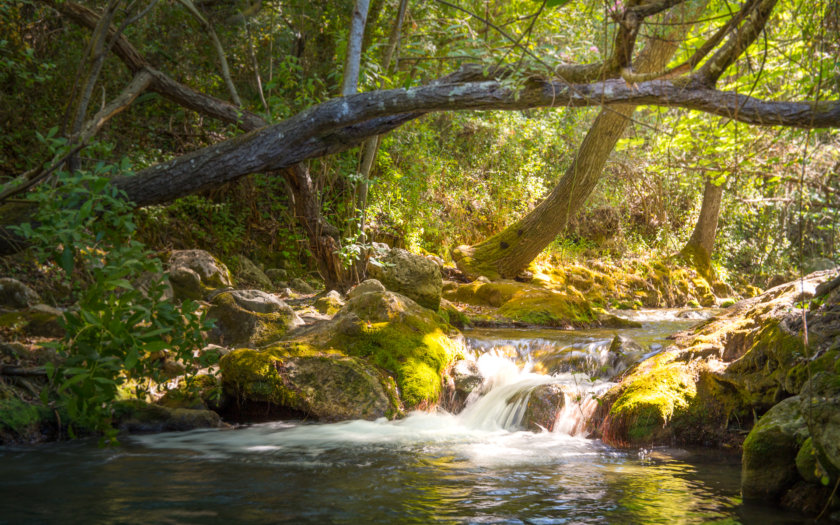
You’re a culture enthusiast ? Then you should definitely go visit Malaga !
Beside being a top beach destination in Andalucia, Malaga is also full of interesting cultural sites and museums:
- Picasso Birthplace Museum (get you tickets here) : The legendary artist was born in that house in 1881. You’ll learn more about his life, his work and will see some of his personal belongings.
- Centre Pompidou Malaga , is a branch of the famous Centre Pompidou in Paris with several pieces of contemporary art
- Carmen Thyssen Museum with its extensive collection of Spanish and Andalusian paintings
- Russian Art Museum offers a collection of Russian art pieces in an old tobacco factory.
You should also definitely visit Malaga fortress: the Alcazaba.
And to enjoy a stunning scenic view over the whole city and the port, head to Gibralfaro castle.
You will find every information you need to visit Malaga in my article: The 15 best things to do in Malaga.

Close to Malaga, “El Caminito del Rey” path is one the most spectacular natural sites in Andalusia.
To go there, you will need to be a bit adventurous. Until 2015, date of its full renovation, this hiking path was considered the most dangerous one in the world! Hopefully, today it is completely up to safety standards.
Located in El Chorro gorge, it was once used to transport equipment for the 2 neighbouring hydroelectric power stations. It was made of simple wooden pontoons directly fixed on the cliffs with no guardrail . After several deadly incidents, the path was closed in 2000 and opened again only in 2015.
Nowadays, it’s totally safe to hike on this path located 100 meters above the ground , but it’s still very impressive. Before starting, think about it twice if you have the fear of heights, as once you start, you can’t go back . The path is only one way, from North to South, so you’ll have to reach the end!
If it makes you feel safer, you can always choose to do a guided hike in the Caminito . The guide will give you more information about the location and its history. You need to book your guided hike in advance here because these are often fully booked weeks in advance.
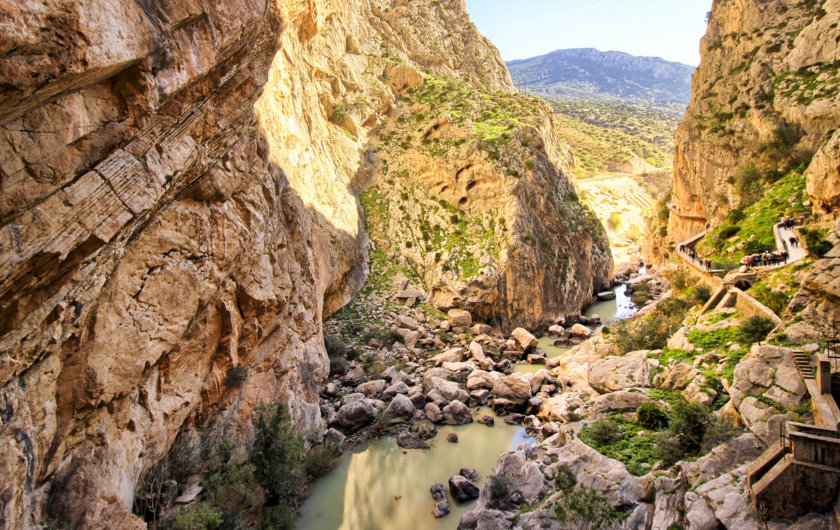
Cadiz might not be considered a top destination in Andalucia compared to cities like Seville or Granada, yet it’s a great place to visit. I actually loved this less touristic city, where you don’t have to wait forever under the sun to get inside the monuments.
Here are Cadiz must-see attractions:
- The Plaza de San Juan de Dios, where the city hall and the San Juan de Dios church are located. It’s very charming, with lots coffee shops and restaurants.
- The Roman theater , entrance is free!
- Cadiz cathedral go to the top of the bell tower to enjoy a scenic view over the city
- San Sebastian castle and Santa Catalina castle, both located next to the sea
- La Caleta beach to take a dip.
You want to learn more about the best things to do in Cadiz? Have a look at my article: Visit Cadiz: the definitive guide .
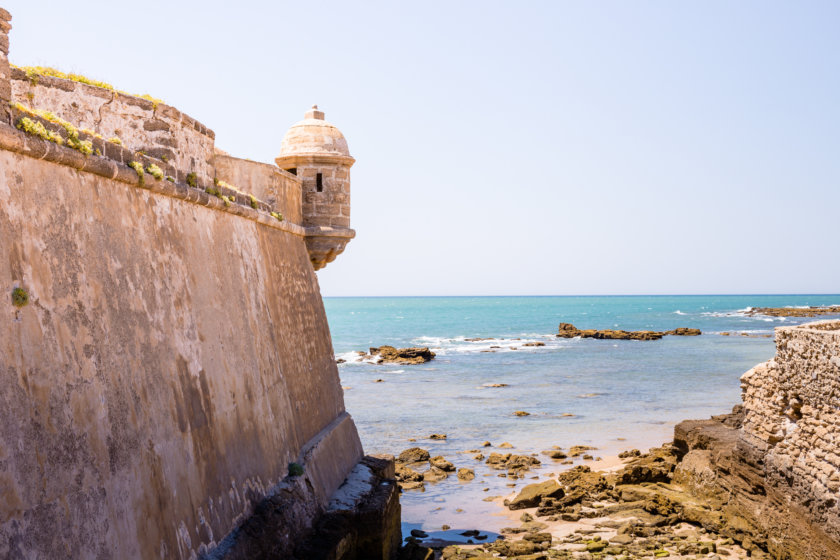
Doñana national park is the perfect destination to take a break from historical monuments visits and enjoy a bit of nature. Located in Huelva province, the park is about 1 hour driving from Seville and 50 min from Cadiz.
This UNESCO World Heritage site is one of the most protected areas of Europe. It’s definitely a great place to observe wildlife: if you’re lucky, you can see flamingos, deers, birds and maybe even an Iberian lynx, an endangered species.
In the park, you can take a stroll on one of the hiking paths. You’ll find more information about available itineraries in one of the visitor centers located in Matalascañas (Huelva), Villamanrique de la Condesa (Seville) or in Sanlúcar de Barrameda (Cadiz).
The park is very large, so you can also go around biking, horse-riding, by boat or even on an off-road bus or a 4WD. For the 4WD tour, your guide will take you to the best parts of the park, and you may even see a lynx! You must book the tour in advance here.
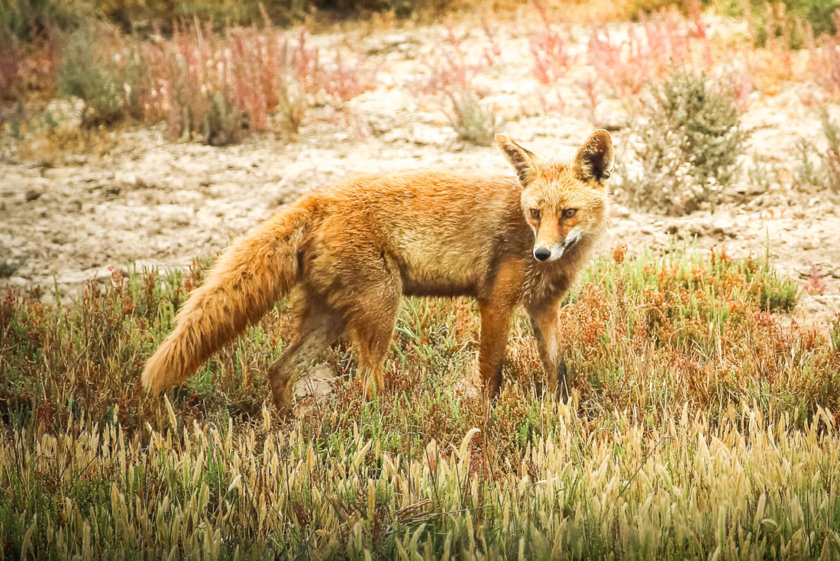
You’re looking for the most beautiful beaches in Andalucia? You like to party?
Then Marbella is the perfect destination for you!
This high-end seaside resort located in the Costa Del Sol has everything you dream for: 27 km of beaches, many prestigious villas, luxury stores, coffee shops and fancy nightclubs! Marbella is a very famous party destination for wealthy tourists.
To get a glimpse of all of this luxury, you can go to Puerto Banus marina to see some of the most luxurious yachts in the world . During summer, celebrities from all over the world stop by Marbella to enjoy the beaches and nightlife.
If you’re not interested in all this glitz and glamour, there is also a lovely historic center with flowery houses in Marbella.
You can of course also enjoy an afternoon at the beach: Cabopino beach, also called Artola Dunes is the most famous one. The beach is protected from the wind and has shallow and crystal clear water.
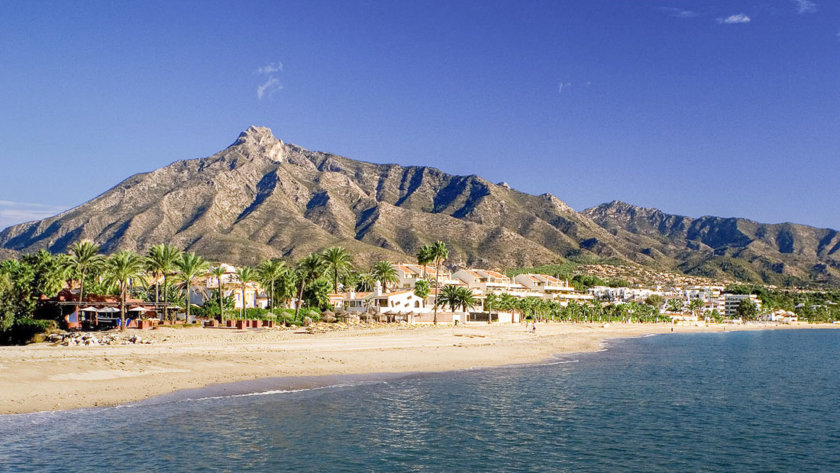
If you’ve been to all major cities in the region and are looking for another place to visit in Andalucia, head to Jerez de la Frontera.
Not far from Cadiz, the city is known for its wine, the famous Sherry wine. More than 20 wineries and cellars are located in the city, and some of them offer guided tours with wine tastings.
If you want to do a guided tour of some of the most famous Jerez bodegas and of course taste the wine, you will need to book it here .
The most famous tourist attraction is Jerez is the show of the Royal Andalusian School of Equestrian Art . For 90 min, you’ll enjoy several choreographies performed along traditional Spanish music .
If you want to attend one of the best equestrian show in the world , you need to book it there.
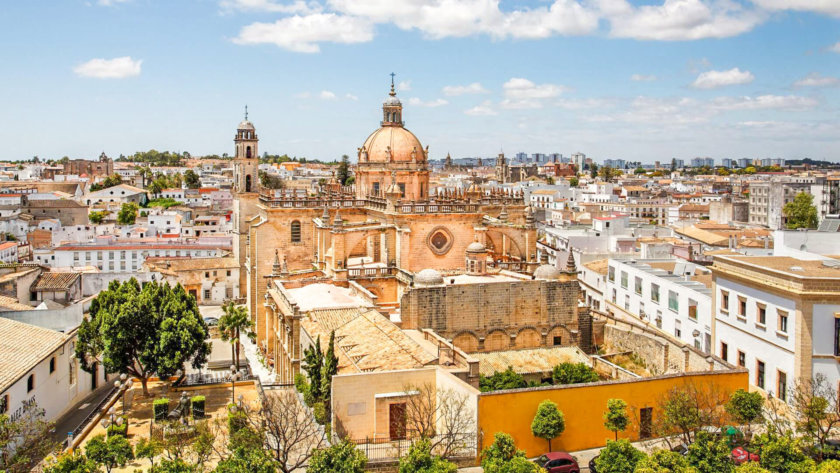
Wondering about the best things to do in Andalucia with children? If you’re in Andalucia on family vacation, you should go on a day trip to Nerja caves.
The caves were discovered by chance in 1959 by students who were looking for bats. They are 4km long but only bout a third is open to visitors.
Unless most caves where only guided tours are possible, you can visit Nerja caves freely. However, only a certain amount of visitors are allowed inside every 30 min.
You can get an audio guide to learn more about the history of the caves and their discovery. Allow about 45min for the visit . Don’t forget to wear comfortable shoes and a jacket: it’s always cold in caves, even during summertime!
During your visit, you will be able to access several halls, such as the Cataclysm Hall where you can see one of the tallest and largest columns in the world . Torca Hall and its numerous cave paintings is also worth a look.
You need to book your tickets to visit the caves of Nerja in advance by clicking here!
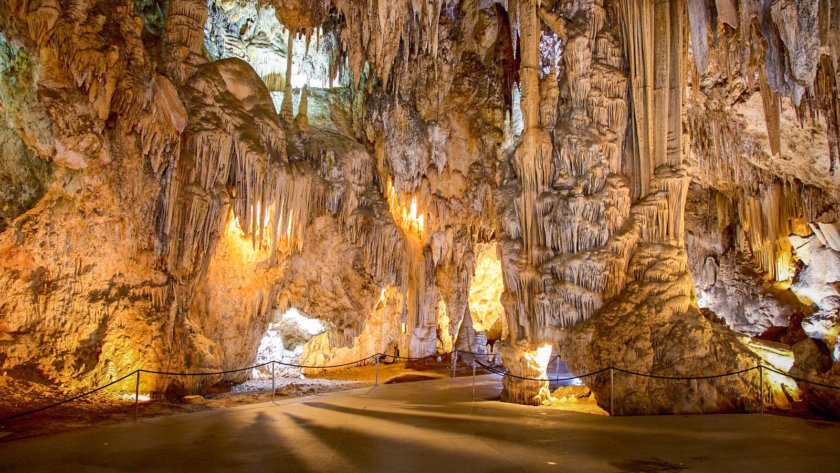
If you’re visiting Andalucia during summer and it’s a bit too hot for your taste, you should go to the Sierra Nevada and the Alpujarras. It’s t he highest mountains range in Spain, with over twenty peaks above 3000 meters.
It’s never too hot in this mountainous region (even in the summer) and above all, you will discover a wilder and less touristic side of Andalucia . The Alpujarras villages are renowned for their picturesque and timeless character.
You’ve guessed it, the Sierra Nevada is an amazing place to hike in the mountain . You can also go climbing, paragliding, mountain biking or horse-riding.
If you’re visiting Andalucia during winter, you’ll be able to ski on some the 105km of ski slopes available , while enjoying a stunning view over Granada and the sea!
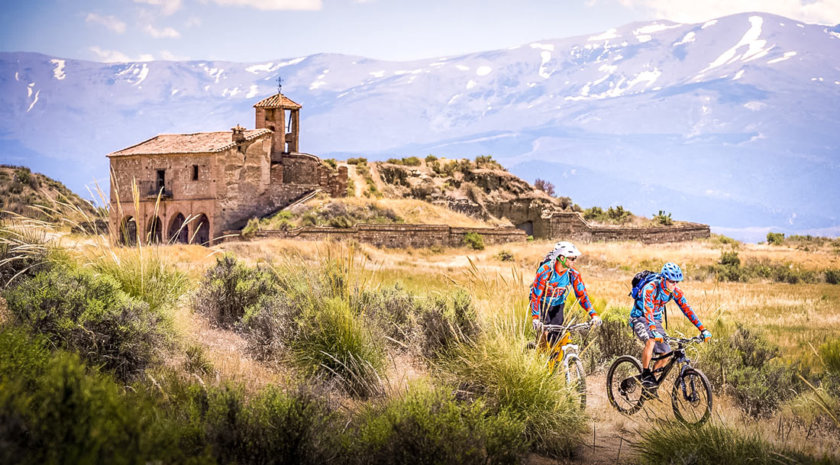
Gibraltar is located south of Andalucia . Did you know that even if it’s located in Spain, Gibraltar is in fact part of the United-Kingdom ? It also means that you need to cross a border to go there and waiting time is usually quite long if you go by car.
It really feels like a southern part of England, with English signs, English style phone booths and buses and (of course) English pubs . Gibraltar also has its own currency: the Gibraltar Pound , an equivalent to the British Pound. You’ll have to exchange your Euros once you get there.
An absolute must-see in Gibraltar is the Upper Rock . You can go there on foot, by car or by cable car. In any case, you’ll have to cross right in the middle of the airport , where there are traffic lights to regulate traffic between planes, cars and pedestrians!!!
At the Upper Rock, you should check out these attractions:
- Saint Michael Cave: It was used as a hospital during World War 2. Nowadays, you can attend sound and light shows there.
- The famous monkeys! There are more than 200 monkeys walking freely on the rock. Be careful with your belongings and don’t bring food.
- The Great Siege Tunnels carved inside the rock.
- The Moorish Castle, with only a single tower still standing.
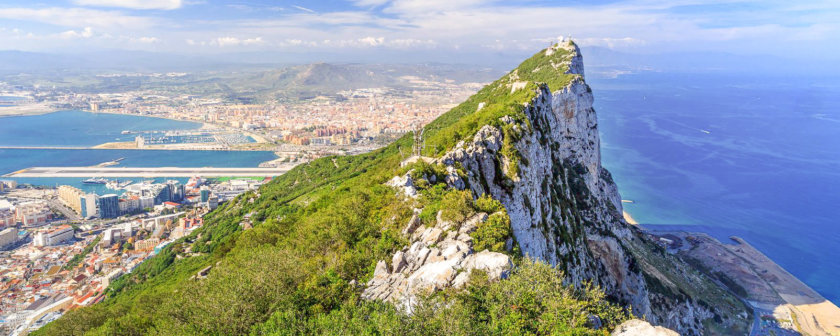
Cabo de Gata Natural Park is the largest coast and land protected area of all the Mediterranean region . Of volcanic origin, it offers several types of landscapes ranging from beautiful beaches and coves to wilder desert style landscapes.
What to do in Cabo Park, Andalucia:
- Hiking on one of the many marked paths
- Scuba diving
- Go on a boat tour
- Take a dip at one of the world-famous beaches of Cabo de Gata, such as Las Salinas or Los Muertos
- Birdwatching (mainly flamingos) in the salt pans
- Explore the small fishermen villages of Las Negras or San José
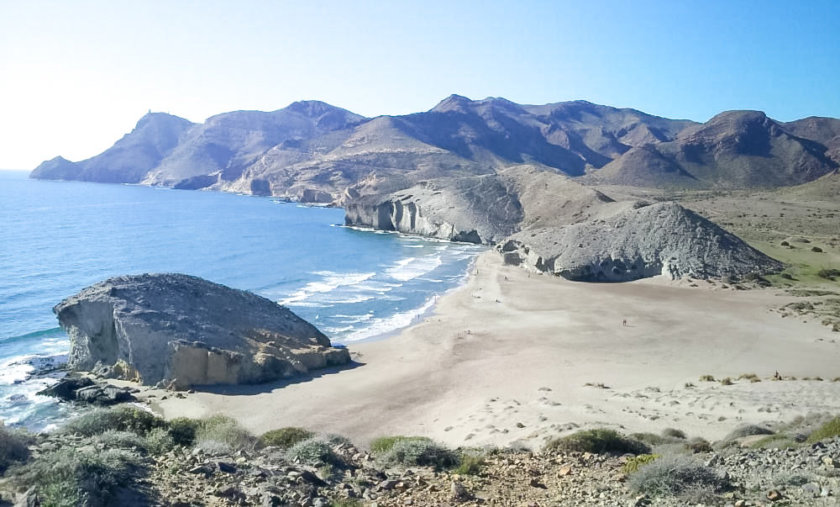
Located North of Almeria, Tabernas deser t is the largest arid desert in Europe.
It’s a famous place in Andalucia because many Spaghetti Western movies had been filmed there , such as “ The Good, the Bad and the Ugly ” or “A fistful of dollars”. Other famous movies like “ Lawrence of Arabia ” and “Indiana Jones” were also filmed there.
In Tabernas, you should visit Fort Bravo (also called Texas Hollywwod). It was one of the villages built to serve as a set for an American Western movie , and it was kept as is afterwards. You can visit the saloon and even attend a duel between the sherif and a bandit!
And if you don’t want to miss any of the breathtaking landscapes of Tabernas desert, you can also visit the desert with a guide. You can’t book it online, you will need to ask your hotel to arrange it for you.
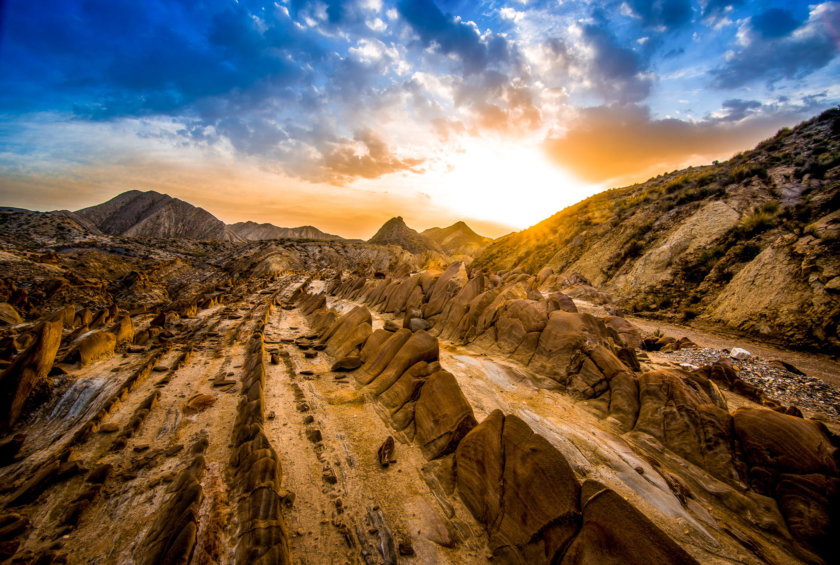
If you’re spending some time in Andalucia, you can also visit Ubeda and Baeza (Jaén province), 2 UNESCO World Heritage sites . Quite unusual here, these villages are filled with renaissance style monuments!
Lost in the middle of olive tree fields and located only 8km from each other, the two villages maintained a very authentic charm . They are quite different from other traditional Andalusian villages and their whitewashed houses.
here are the best places to see in Ubeda, Andalucia:
- The Sacra Capilla del Salvador: a true jewel of Spanish renaissance
- The Vazquez de Molina palace, it’s nowadays the city hall
- The Dean Ortega palace, built in the 16th century
- The Basílica de Santa María de los Reales Alcázares
Must-see attractions in Baeza:
- Visit the Baeza cathedral
- Discover the Jabalquinto palace
- Go see Saint John Church
- Walk around the Plaza del Populo
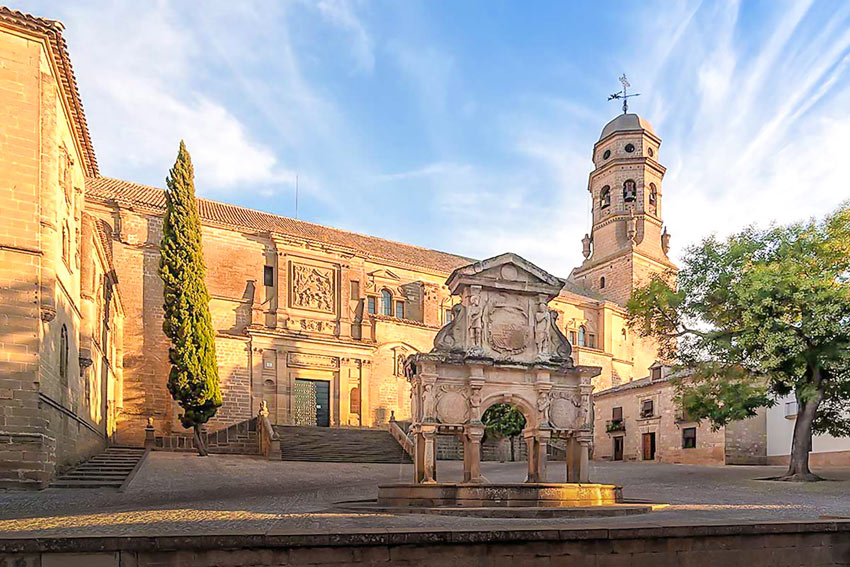
You want to embrace Andalusian culture? Then you should definitely attend a Flamenco show!
This art was born here during the 17th century, and is still today a very important part of Andalucia’s culture and history. Coming from the gypsy culture, Flamenco is a mix of 3 arts: singing, dancing and guitar.
There’s nothing easier than attending a flamenco show in Andalucia, they’re everywhere, even on the streets.
- In Seville , you should go to “Los Gallos” tablao (the place where Flamenco shows are taking place), the oldest one in the city with a lineup of international artists. The show at the Museo del Baile Flamenco is also very good and pretty affordable! To attend this show, you need to book your tickets here.
- In Granada , the best Flamenco shows are taking places in the “ cuevas” of the traditional Sacromonte neighborhood. You can book your tickets directly here.
- In Cordoba as well, you can see an excellent show in a beautiful building at the “ Flamenco Cardenal” tablao.
Today, Flamenco is considered one of the main tourist attractions in Andalucia.
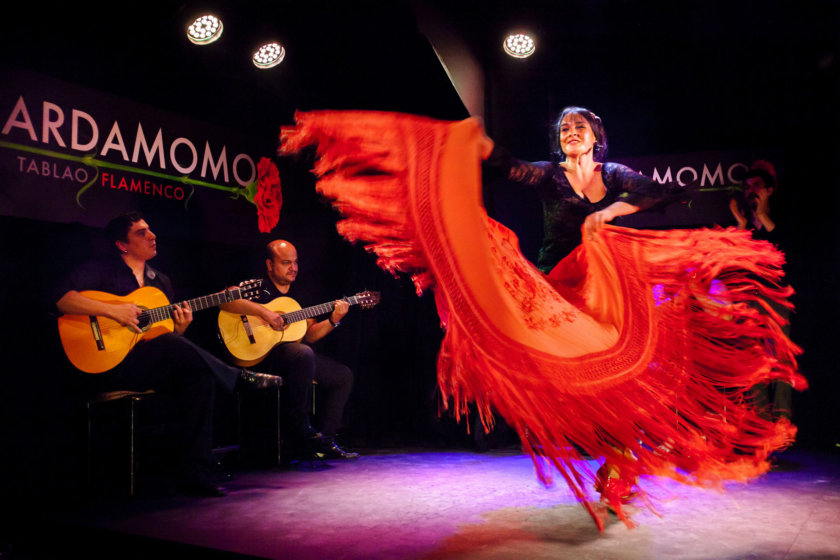
During your trip to Andalucia, you will also probably want to discover local gastronomy.
And as you’re in Spain, it’s no surprise that you’ll probably eat lots of tapas during your stay.
Wherever you are in Seville, Granada, Ronda or even the smallest village, you won’t be able to miss tapas, they’re everywhere! From classic recipes to more unique ones, tapas are a real staple of Andalusian cuisine.
Each restaurant has its own specialities , so Spanish people often go to several bars on the same night. There’s even a word for it: “tapear”!
Malaga and Granada cities are known to offer amazing tapas. In Granada, it’s a tradition that when you order a drink, it always comes with tapas. There is a real competition to offer the most unique and best presented tapas.
Some classic tapas are the Russian salad (potatoes, tuna and corn), croquetas and tortillas.
According to the well-known saying, Andalucia is the perfect place “to go tapas” (“tapear” in Spanish)!

And you, what do you plan to do in Andalucia? Which point of interests would you like to visit?
If you want to rent a boat for a nice day at sea during your trip to Andalucia, you should book it with Samboat.
Motorboats, sailboats, yachts, small boats without a license, with or without a skipper: they simply have the most complete offer for boat rental!
So, what are you waiting for to book your sea trip in Andalusia? 😊
Andalucia travel Guides
- Buy the DK Eyewitness Andalusia guide on Amazon.com or on Amazon.co.uk
- Buy the Lonely Planet Andalusia guide on Amazon.com or on Amazon.co.uk
- Buy the Rick Steves Snapshot Andalusia guide on Amazon.com
Discover all my articles about Spain : All my articles to help you plan your trip to Spain are listed there.
- Cadiz: The 12 things you must-see in town!
- Cordoba: Top 15 best things to do and must-see attractions
- Granada: Top 15 best things to do
- Malaga: The 15 best places to visit
- Ronda: The 10 best things to do
- Seville: Top 15 best things to do and places to visit
You’re using Pinterest? Here is the picture to pin!
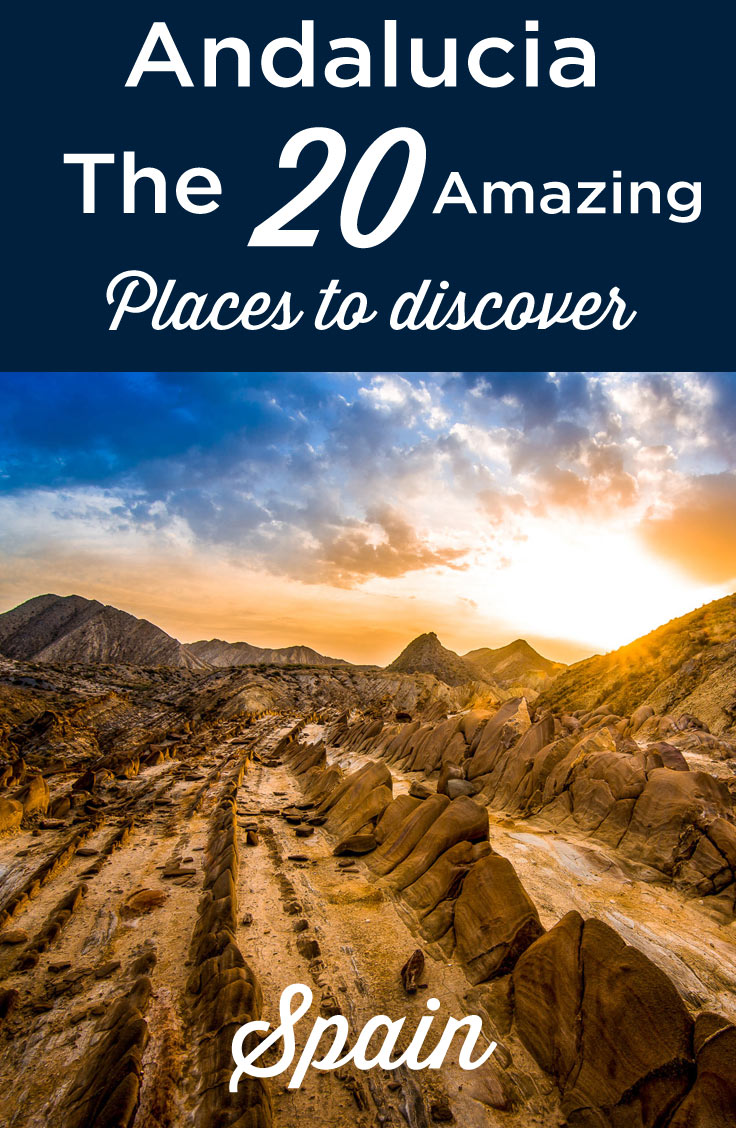
Creator of the Voyage Tips blog, travel and photography lover. I give you all my best tips to plan your next trip.
Related Stories
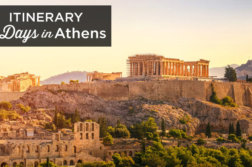
3 Days in Athens: The Perfect Itinerary (First Time Visit)
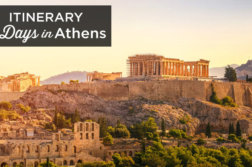
2 Days in Athens: The Perfect Itinerary (First Time Visit)
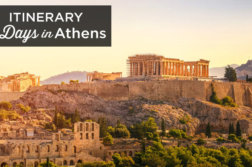
4 Days in Athens: The Perfect Itinerary (First Time Visit)
Leave a reply cancel reply.
Your Name (required)
Your Email (required)
Your Website (optional)
Save my name, email, and website in this browser for the next time I comment.
- Middle East
- North America
- Cheap car rentals: my best advice
- Back to Homepage

Tour Andalucía
‘Award Winning’ Small Group & Private Tours

Beautiful Andalucia is an exceptional place in Europe with breath-taking scenery, wonderful history and distinctive culture. It is a place of legends, ancient civilizations, amazing monuments and great food.
Tour Andalucia take you on a spectacular journey throughout this unique region in small groups, or on a private tour, so you enjoy yourself at a relaxed pace and without being herded in a ridiculously large coach party.
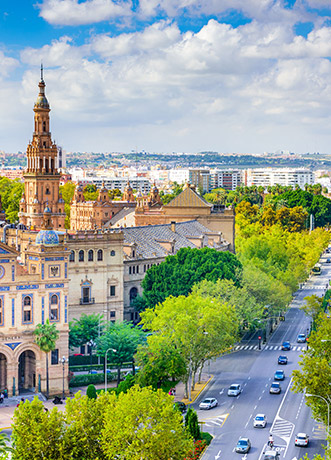
Get in Touch


How to Spend Two Incredible Weeks in Andalusia, Spain
Andalusia is unlike anywhere else in Spain, and it’s one of my favorite regions. The second-largest autonomous province in Spain boasts sandy beaches, snowy mountain peaks, Europe’s only true desert, as well as enormous, vibrant cities, and quaint whitewashed towns perched atop cliffs.
As amazingly diverse as its geography is, this is only secondary to the fascinating history and culture of the region, which owes as much to the Islamic caliphates that occupied the area for centuries as it does to the Spanish kingdoms that later flourished. This melting pot of influences is most notable in the stunning architecture of the numerous cathedrals and alcazars (fortresses), which blends Moorish aesthetics with the Gothic and Baroque ideals of Western Europe.
It’s not just the buildings that have their own flavor: the food, too, has its own unique specialties, many involving fresh fish from the extensive coastline or cooling dishes designed to take the edge off the heat.
Personally, I’d recommend kicking off your Andalusia adventure in either Seville or Malaga, as these cities have the two best-served airports in the region. As the route we’re going to outline is essentially circular, it doesn’t particularly matter where you choose to begin, but we’re going to start in…
Day One: Seville
Seville is Andalusia’s largest city and sometimes described as the hottest place in continental Europe. Even in October, we were sweating after just an hour of scuttling about streets filled with food markets, tapas bars, and pretty palacios.
Fortunately, many of the older landmarks were designed to ameliorate the heat, including the Royal Alcazar. This extensive complex was built on the site of a former Muslim fortress by Pedro I, a great admirer of Islamic design, who decided to construct a luxurious residence for himself using the principles of Moorish architecture. We were particularly overawed by the Salon de Embajadores (Hall of the Ambassadors), a room of intricately carved walls crowned by a golden, domed ceiling that dazzles today just as much as it must have impressed foreign dignitaries hundreds of years ago.
The palace also boasts extensive gardens as well as a café where you can dine on simple snack fare amidst ostentatious peacocks, which freely wander the grounds. Make sure you book your ticket in advance, as queues during high season can last hours – and believe us, you don’t want to be standing for that long under the blazing sun!
Just next door to the Royal Alcazar is Seville’s principal religious edifice, the Cathedral of Saint Mary of the See. A solid beast of a building that seems to sprawl outwards in a slightly higgledy-piggledy way, what you see today is the result of successive additions, from original mosque elements like La Giralda (once a minaret now a bell tower) to the Gothic vaulted ceilings and detailed carvings framing each of the many entrances.
While it makes sense to take in both the palace and the cathedral at the same time due to their proximity, we ended up exhausted just because there’s so much to absorb and explore. Fortunately, the nearby streets of the Barrio de Santa Cruz are the perfect retreat for some tapas and a glass or two of tinto de verano. This mixture of red wine and lemon soda is like sangria but more commonly drunk by the locals – its origins lie in the neighboring city of Cordoba (more on that later).
Where to stay in Seville: We opted to go for the newly opened Querencia de Sevilla , right in the heart of the city. Everything was tastefully decorated with modern fixtures, and the view from the roof is truly spectacular.
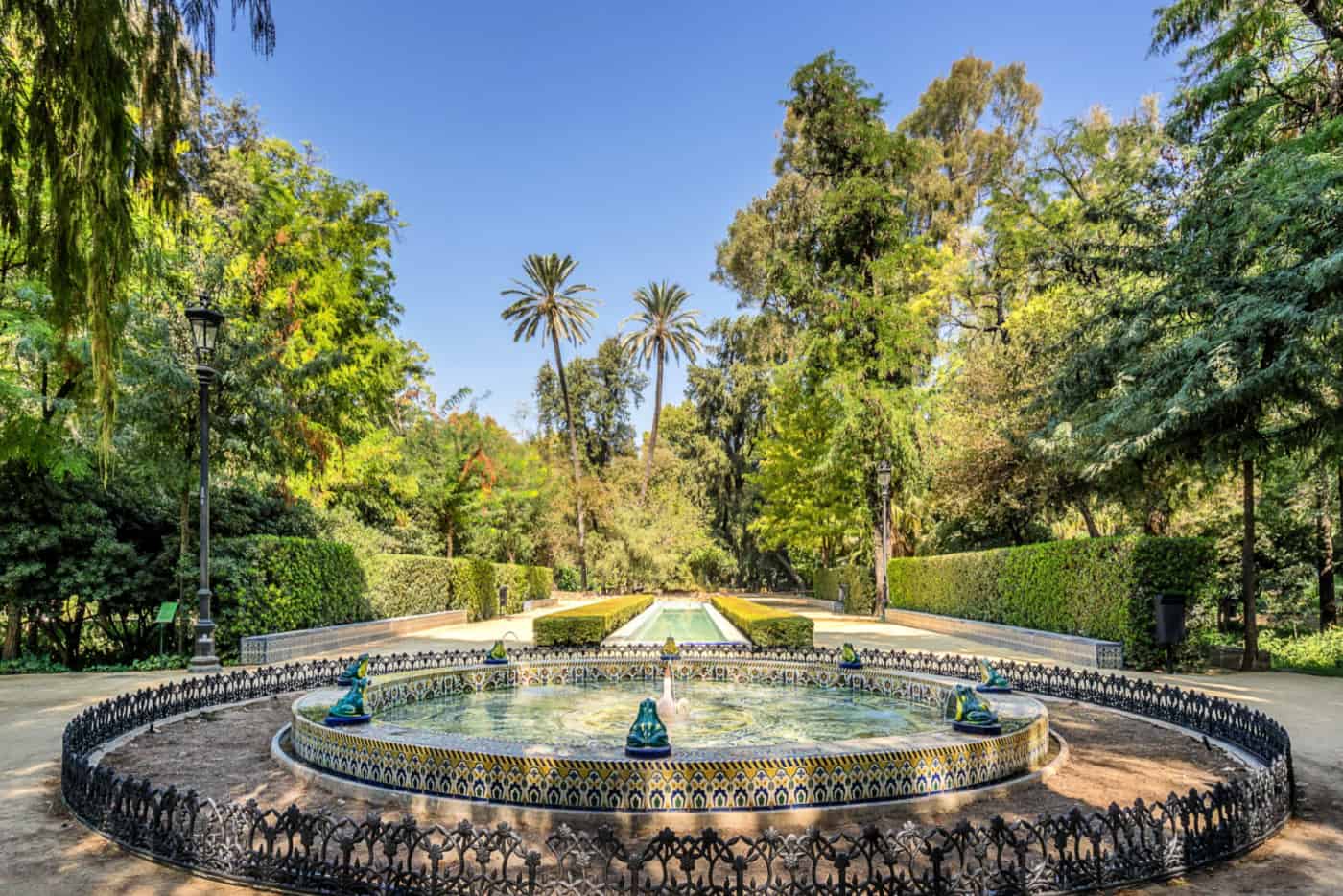
Day Two: Seville
If you’re like us, you’ll want to take your second day in Seville a little slower. That means leisurely strolls through Maria Luisa Park, more than 30 hectares of greenery that includes the hemispherical Plaza de Espana. Built in 1929, this grandiose building is adorned with brightly colored azulejo tiles, complemented by pavilions depicting different provinces of Spain. Both the plaza and park often host festivals, concerts or food fairs, so make sure you check the calendar.
From here, you can head north along the Guadalquivir River, passing the Palacio de San Telmo on your right, then the 13th-century Torre de Oro on your left. You can’t go into the former because it’s now a government building, while the interior of the latter isn’t worth the fee, but both have exquisite exteriors. After about 20 to 30 minutes, you’ll reach the Plaza de Toros, Seville’s principal bullfighting ring – a pretty impressive arena, even if you find the brutality of the sport a little hard to stomach.
Head north and east to reach the Setas de Sevilla (Mushrooms of Seville), more formally known as Metropol Parasol. It’s a striking backdrop from a distance, but we couldn’t help but notice that up close it all looks a little dilapidated. Still, it’s worth paying to go up top and see the views from the aerial footbridges. Underneath is a produce market where you can sample some local goodies – though we found it a little overpriced and sterile compared to the markets in Feria and Triana, where we were shoulder to shoulder with locals buying their jamon and queso.
Round out the day with a trip to an evening of flamenco, which is found in abundance in the Andalusian capital. There are a lot of options in Seville, so it might be worth saving some time and booking a show through a reputable tour company so you know what you’re getting beforehand.
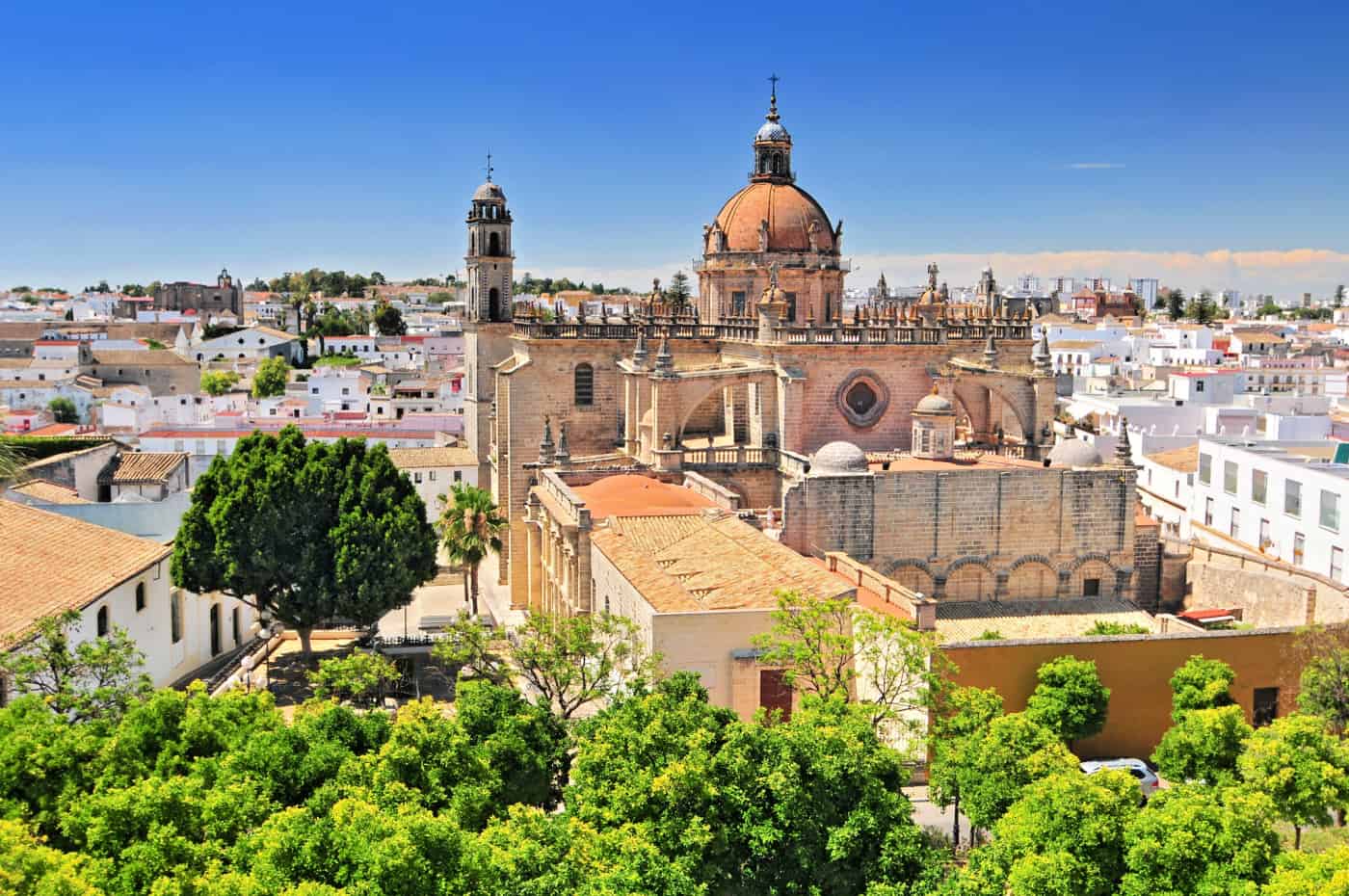
Day Three: Jerez
Just one hour away from Seville by car or train, Jerez de la Frontera is most famous for its namesake alcohol: sherry. The city is filled with atmospheric tabancos where you can try the fortified beverage. Our favorite was probably Tabanco el Pasaje, mainly because it also stages flamenco shows (there’s something of a rivalry between Seville and Jerez as to which city is the true home of the traditional Spanish dance form).
If you’re a sherry newbie, a great place to start is Bodegas Fundador, the city’s oldest sherry maker still in existence, which offers tours and tastings. Alternatively, the Bodegas Tradicion combines sherry tastings with a collection of beautiful artworks by Spanish masters like Velasquez and Goya.
The second thing Jerez is renowned for is its horse-riding school, more formally known as the Royal Andalusian School of Equestrian Art. Living up to its grand name, the complex has enough attractions to occupy most of a day, from the grand rooms of the Palacio del Recreo de las Cadenas, through a museum that details the history of horse breeding and riding (with a particular focus on the Andalusian tradition), ending up at the training grounds, where you can witness the horses being put through their paces. The cherry on top is an equine ballet show that takes place several nights a week (just bear in mind that this is a separate ticket to the general visit tickets).
If you still have time, you can visit the intimidating 11th-century alcazar (fortress), Jerez’s oldest building, which occupies grounds that also contain a 12th-century mosque-turned-chapel and a modest palace. A few steps away is the city’s cathedral, admittedly not in the top five of Andalusian religious buildings we visited, but still boasting an impressive façade.
Where to stay in Jerez: We stayed in a modern, privately owned apartment in a fantastic location, hosted by the lovely Juan and Amelia. Admittedly, the combination of cake on arrival and a hot tub on the patio may be making us slightly biased in their favor .
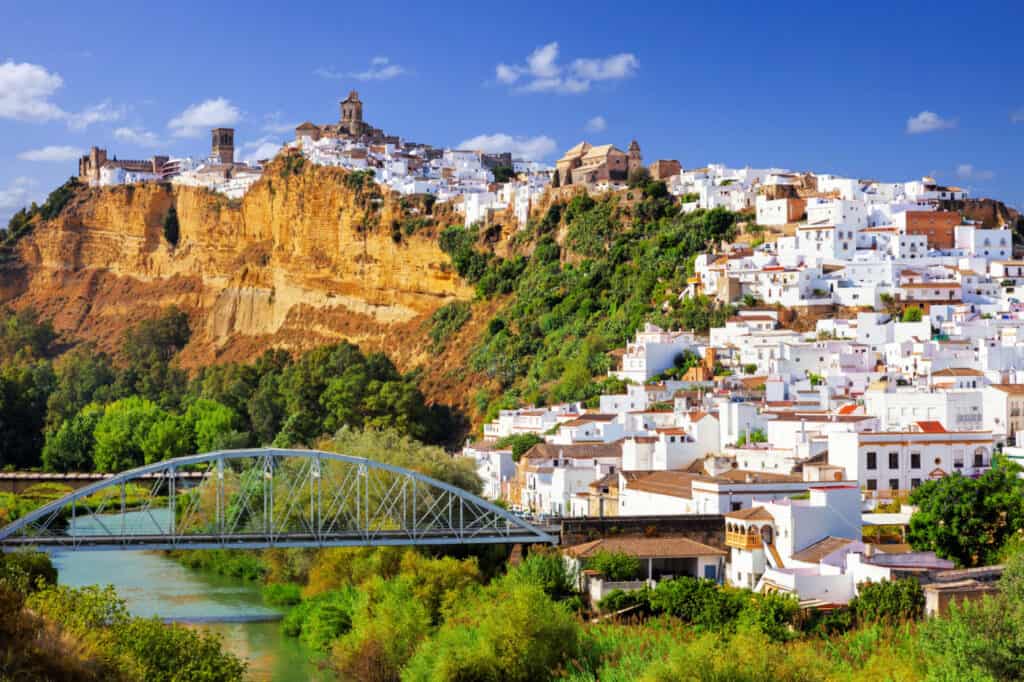
Day Four: Arcos
Jerez is a good base from which to make a couple of day trips, including to one of the most beautiful of the so-called pueblos blancos (white towns), Arcos de la Frontera.
This cute little spot of winding alleyways is dramatically perched atop a cliff. From certain angles, it almost looks like the Church of San Pedro is on the verge of tipping right over the edge.
After cramming our first few days with activities, we spent most of our time in Arcos just enjoying the quiet streets, visiting the compact basilicas, and gazing down on the gentle pastoral views below. While for such a small place there are a fair few tourists, the locals are genuinely friendly and chatty. Plus, there are some delightful little restaurants where you can dine al fresco.
As an added treat, don’t miss out on the little cakes made by the nuns at the Convent of Mercedarias Descalzas. These are sold through a little hatch to keep the sequestered ladies from profane eyes, adding a piquancy of mystery to the palate.
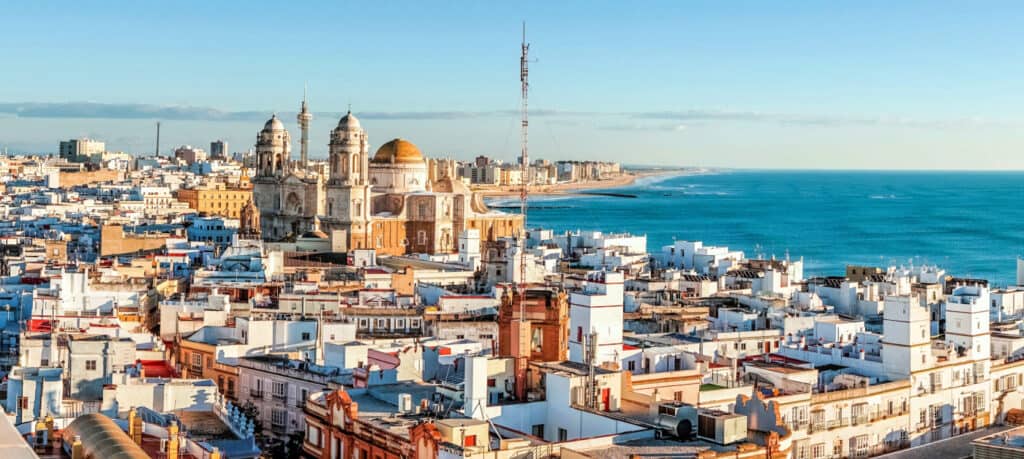
Day Five: Cadiz
One of the glorious things about being in Andalusia for two weeks is the diversity you can experience. Having spent a few days in the interior, we were ready for some coastal breezes!
Cadiz is another easy day trip from Jerez. A little strip of a peninsula encircled by sea, it was first settled by the Phoenicians 3,000 years ago. You can see some of the remnants of this civilization at the Museum of Cadiz, alongside evidence of the later Roman occupation.
Get your bearings by heading to the Tavira Tower, one of the best viewpoints in Cadiz, where you can gaze down on the entire city, including the trio of golden domes that mark out its distinctive cathedral.
Next, head to La Caleta beach and enjoy a walk along the sands, which are sandwiched between two of the city’s castles. It’s a much smaller area than the Playa de la Victoria, but it’s also much closer to the town center if you don’t want to catch a bus to the suburbs.
Don’t miss out on the Mercado Central, where you can buy fresh fish, fruit, and vegetables – or do what we did and dine in on some tortillitas de camarones (shrimp fritters) and a glass of albarino.
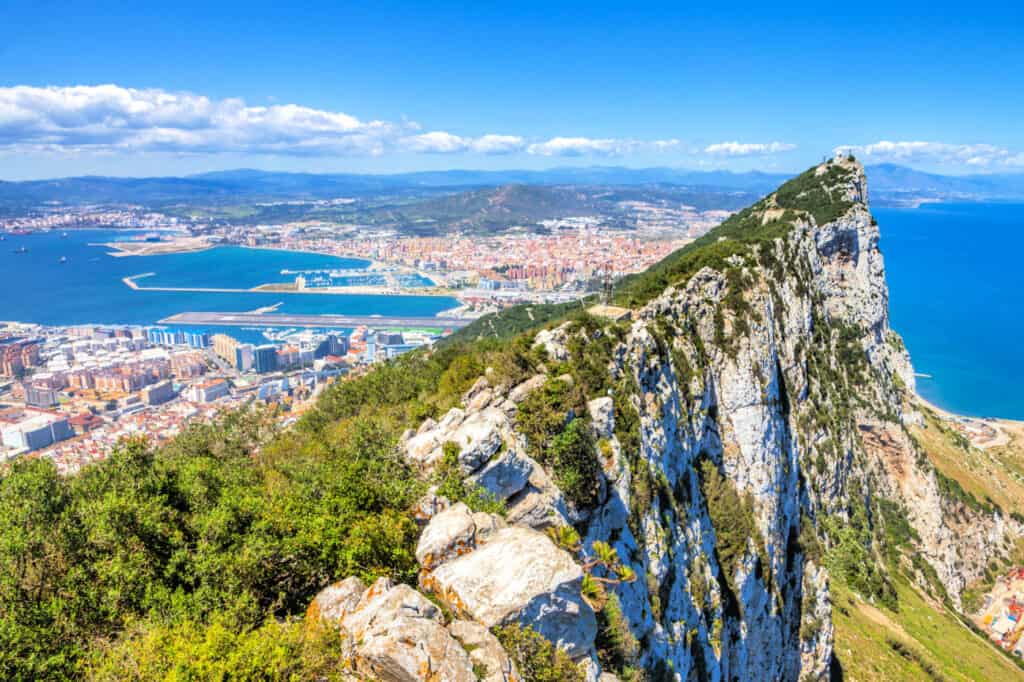
Day Six: Gibraltar
If you don’t have a car, this section of your journey can be a little tricky, since going from Jerez to Gibraltar involves a series of buses. No matter whether you drive or ride, your endpoint will be La Linea, from where you can traverse the border into Gibraltar on foot. You’ll have the unusual experience of entering a territory by crossing a plane runway.
Gibraltar is a funny old place. A little dot of the UK at the tip of southern Spain, here you’ll hear English bandied about more than Spanish and see pubs dot the main square and principal thoroughfare.
The famous Rock of Gibraltar is also an oddity, jutting out of a flat landscape like a rebellious bit of earth that refuses to conform to its surroundings. We decided to scale this beast on foot, though you can also ride up on the cable car. At the top, we were greeted by the locals: Barbary macaques, who run wild (well, semi-wild) – just make sure not to get too close or you may lose your phone!
Atop the Rock are the ruins of a Moorish castle, while inside the rock are a series of tunnels, carved into the mountain by the British Army. You can walk through some of these, which contain exhibits about their historical use during World War II.
Where to stay in Gibraltar: Accommodation options are sparse in Gibraltar, but we found The Elliott Hotel serviceable. It has a nice rooftop pool and is right in the heart of the action.
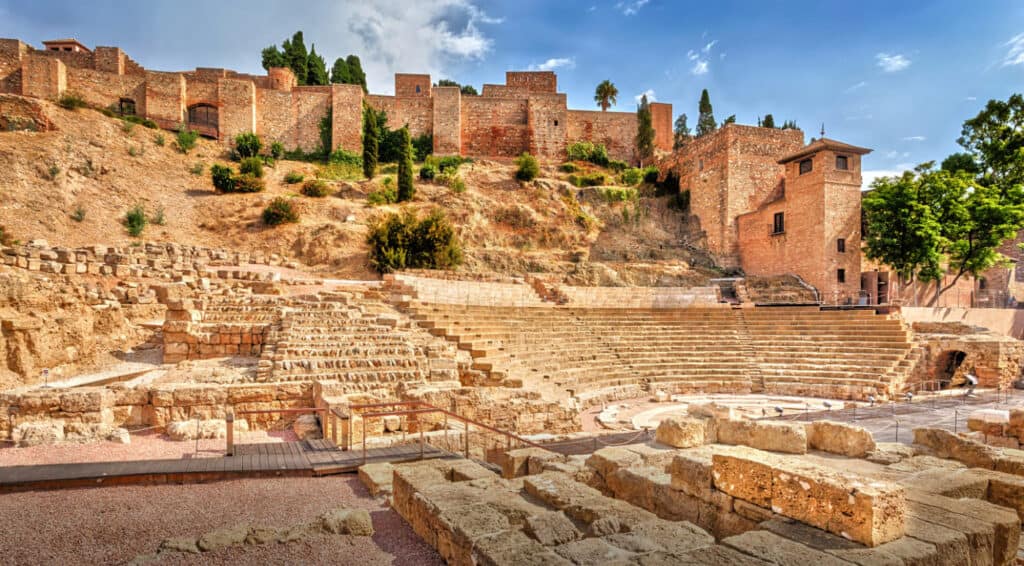
Day Seven: Malaga
If you didn’t get a chance for some beach time in Cadiz, you’ll get a second chance in Malaga. The 1.2-kilometer Malagueta is just 15 minutes’ walk from downtown, so you can pop over at any point when you need a break from sightseeing to enjoy some rays while sipping beer at one of the chiringuitos (local beach bars).
Aside from its soft sands, Malaga is also famous as the birthplace of Picasso. There’s a lovely museum dedicated to his work, which gives a good overview of his life and art. Devotees can also visit the Casa Natal where Picasso was born, but frankly it’s a little underwhelming. We’d recommend instead spending your time absorbing the ambiance of the neighborhood from which the Spanish artist emerged, including the Plaza de la Merced, a pretty square where you can chow down on local specialties like fried fish and sardine skewers.
Malaga is also home to a couple of stately defensive structures that provide some of the most beautiful views in the city: the Alcazaba, one of the best-preserved Moorish fortifications in all of Spain, which towers above an Ancient Roman theater; and the remains of the Castillo de Gibralfaro, whose majestic ramparts overlook the bullring and the cathedral.
Where to stay in Malaga: You’ll find La Casa Azul easily because (as the name suggests) the facade is a lovely bright blue. The interior is as charming as the exterior, with lots of quirky little touches and some unique pieces of furniture. We took advantage of the proximity to the beach for a late-night swim.
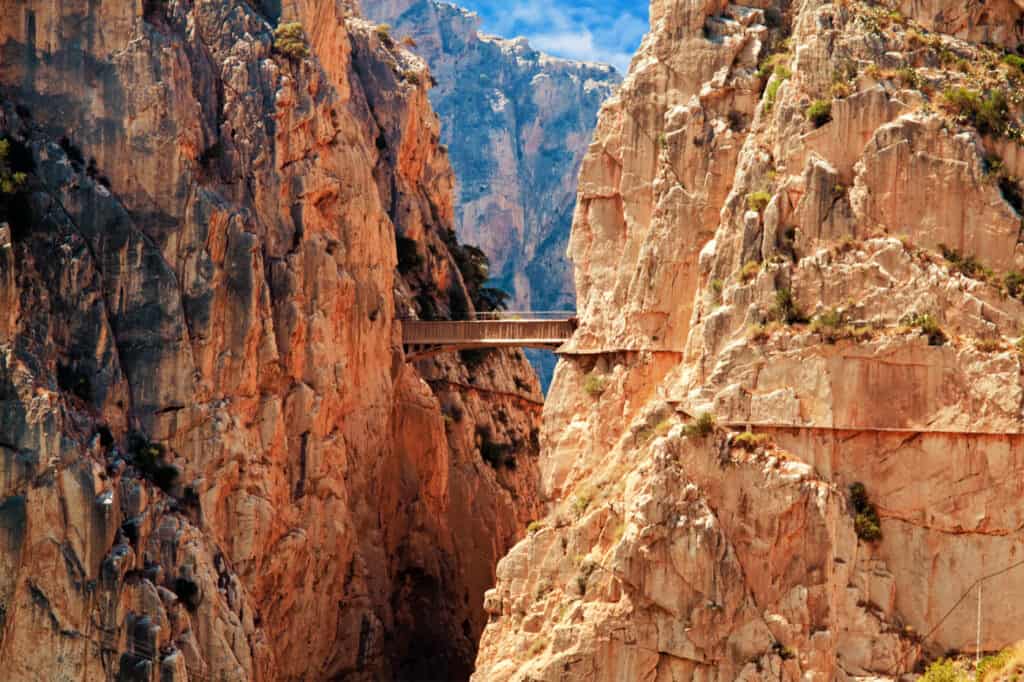
Day Eight: Caminito del Rey
Malaga is a good jumping off point to reach one of the most unusual experiences Andalusia has to offer, the Caminito del Rey. Literally meaning ‘King’s Little Walkway,’ it’s a suspended wooden trail that hugs cliff sides around the Gaitanes Gorge.
This current 8-kilometer path was only opened in 2015. The original route, built in the early 1900s as a way to construct a hydroelectric dam, fell into disrepair years ago and you certainly wouldn’t want to be utilizing it today – we can say that with certainty since remnants of the old route are still visible today.
We recommend taking a guided tour , as this simplifies your transport to the Caminito and includes an expert who can tell you all about the history of the walkway. It takes about 3-4 hours to traverse the entire route, which is fairly flat and suitable for people with limited hiking experience.
Once you return to Malaga, you can spend a bit more time exploring the city or hop on the high-speed train out of town to Granada. This line only opened in 2022, but has dramatically cut the time it takes between the cities to a mere 1 hour and 12 minutes.
Day Nine: Granada

We’re just going to come out and say it: Granada is our favorite city in Andalusia. First off, the Alhambra complex is justifiably acclaimed as one of the most incredible experiences you can have in Spain. It feels like almost every inch of the Nasrid Palaces has been carved with the distinctive geometric patterns of Islamic architecture, from the honeycomb vaulting of the Hall of the Abencerrajes to the Courtyard of the Myrtles, where the tranquil pool reflects back the surrounding architecture so that everything appears doubled.
One of the joys of visiting the Alhambra is you don’t just get to see the exquisite interiors of the palaces. You also get to explore the ramparts of the forbidding Kasbah fortress, which has fabulous views of the city, as well as gardens of the Generalife and the Renaissance palace of Carlos V.
It’s an enormous amount of space to cover, enough to occupy a leisurely traveler a whole day. We, however, wanted to squeeze in a visit to Albaicin as well. Granada’s charming, old Moorish quarter is built into the hill facing the Alhambra and consists of whitewashed houses split by charming, winding streets that still contain an echo of their medieval roots. The area today is dotted with cute little churches, hidden cafes, and the unmissable Mirador de San Nicolas, where you can get the best view of the Alhambra in all its glory.
Once you’ve walked your legs off, duck into Jardines de Zoraya, a restaurant with a beautiful courtyard, delicious octopus salad and a slightly upscale air. If you still haven’t managed to catch any flamenco yet, regular shows also take place here in the evenings.
Where to stay in Granada: Simple but with a fun vibe, we were first drawn to the Oripando Hostel because of its location, but staying there in a private room, we also appreciated its completely chilled atmosphere and quirky backpacker aesthetic.
Day Ten: Sierra Nevada Mountains
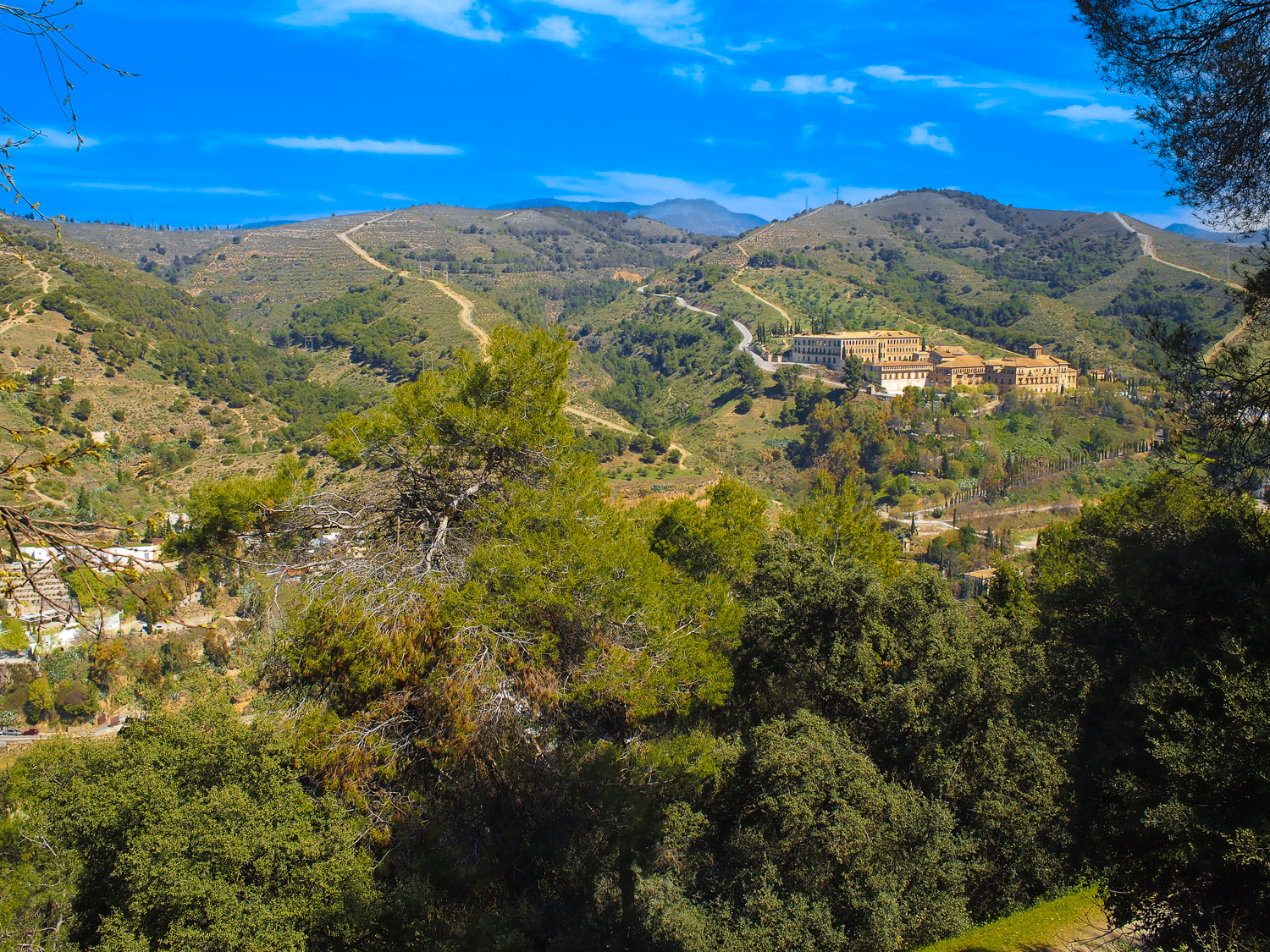
Spend the morning getting out of Granada and into the nearby Sierra Nevada Mountains, which lay claim to having the largest mountain in mainland Spain, Mulhacen. We weren’t quite that ambitious and opted instead for the Los Cahorros pathway, which starts from the village of Monachil, easily reachable from Granada by a 45-minute bus.
This well-traveled trek covers waterfalls, canyons, and some very exciting (in a rollercoaster kind of way) hanging bridges. Don’t fret about getting lost, as the circular route is easy to follow and only takes about 3 hours to complete – just enough time to build up an appetite for lunch!
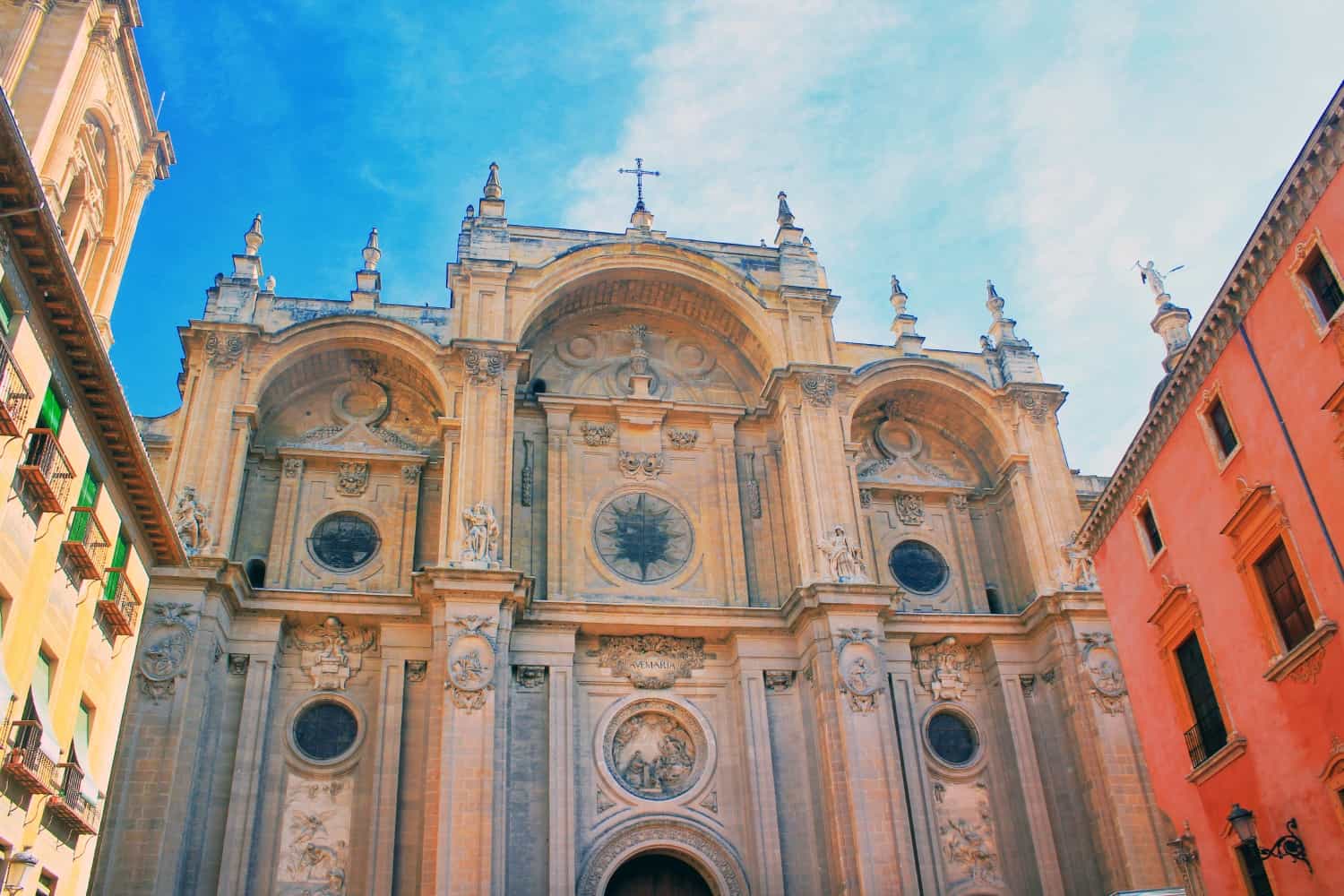
There is still one further thing you can’t miss while you’re in Granada: its cathedral. While from either the Alhambra or the Albaicin it’s clearly visible, from the ground it’s easy to stumble upon it by surprise, hemmed in as it is by the surrounding streets. Inside, a gleaming white nave leads you towards the absolutely stunning cupola: a symphony of stained glass, painted saints, and gilt-encrusted pillars.
Abutting this is the Royal Chapel, the final resting place of the so-called Catholic Monarchs, Isabella of Castile and Ferdinand of Aragon, whose marriage and subsequent reconquest of Andalusia from the Moors united the land and created the footprint for modern Spain.
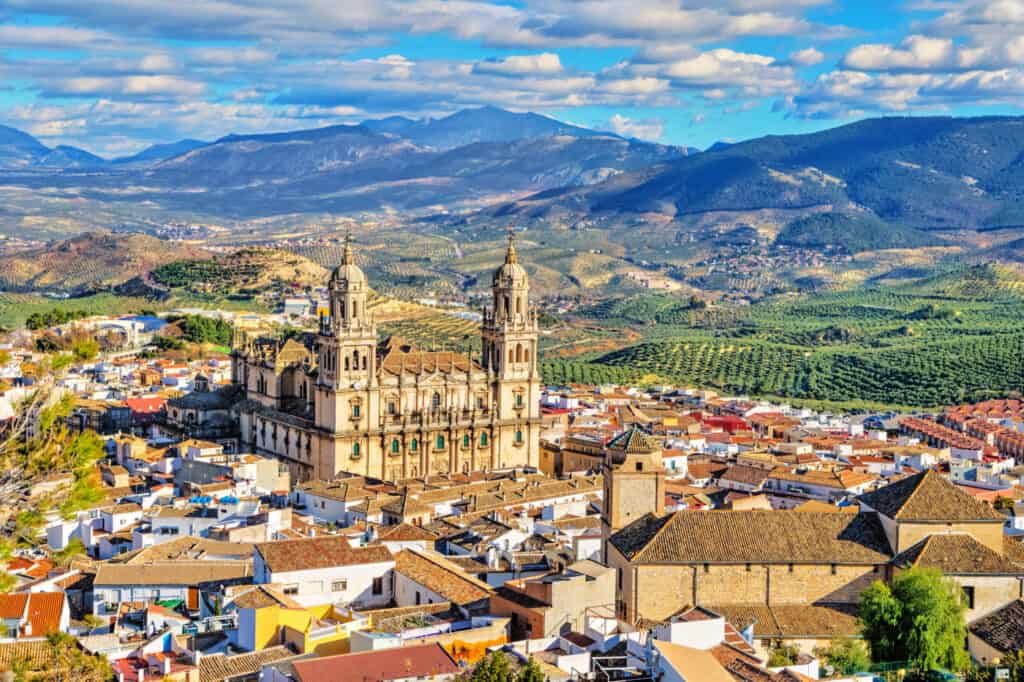
Day Eleven: Jaen
There are just two things you really must do in Jaen: visit the cathedral and visit the castle. To be blunt, this city is not somewhere you will put down as one of the best places you visited on your Andalusia itinerary. The reason we still recommend you stop off here is: one, it’s a good midway point between Granada and Cordoba (it’s a 60-minute bus ride from Granada and a 95-minute train ride to Cordoba); two, from here it’s a convenient day trip to Ubeda and Baeza (see below); and there, we already mentioned that cathedral, right?
We saw a lot of amazing religious edifices in Andalusia, each with its own unique attributes. The somewhat box-like Jaen Cathedral stands out not just because of the intricately sculpted frontal façade, nor because it is the cathedral equivalent of Mike Tyson in terms of pure solidity and intimidation, but mainly because it seems to absolutely dominate the rest of the city in a way no other cathedral that we visited in the region quite does.
For an idea of just how striking it is, walk up to the Castillo de Santa Catalina, a reasonably picturesque ruin where you can gaze down upon the entire city – and really see how commanding the cathedral is.
Where to stay in Jaen: Did we mention that the Castle of Santa Catalina also houses a hotel? Everywhere else we visited, we stayed near the center of town, but here we decided to escape the hubbub and treat ourselves to the well-appointed comfort of the Parador de Jaen .
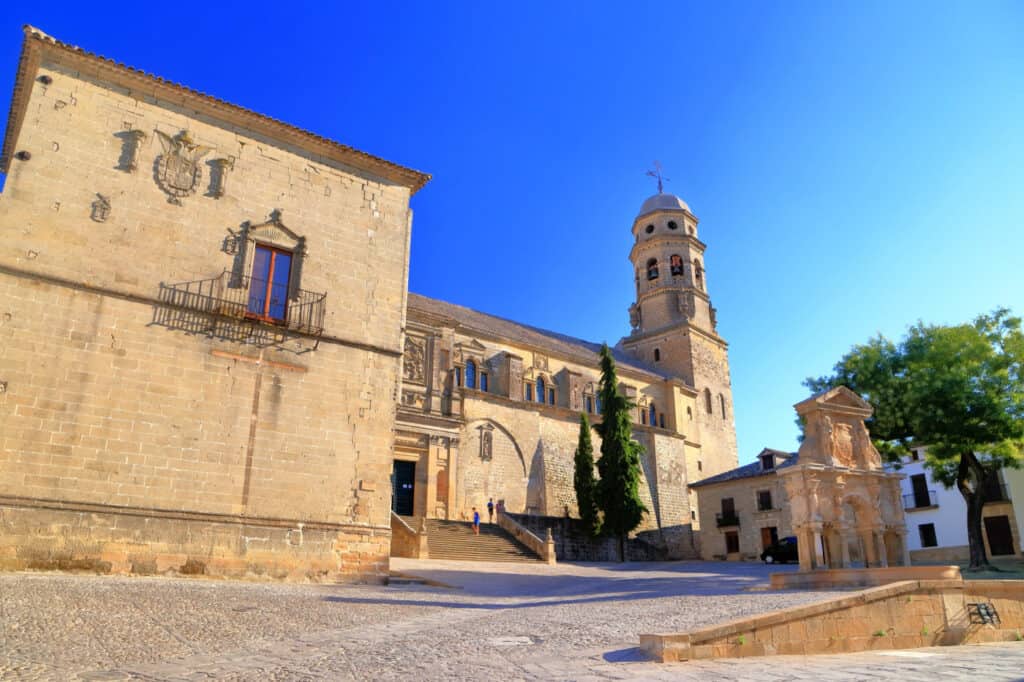
Day Twelve: Ubeda and Baeza
It really couldn’t be easier to get from Jaen to Ubeda and Baeza, as regular buses service the whole route. This pair of towns have been recognized by UNESCO as models of Renaissance architecture in Spain, which makes them feel more Italian than the rest of Andalusia. Being slightly off the beaten track, they’re also a chance to escape some of the metropolitan crowds.
The charm of visiting the old quarters of these two places is that you can lose yourself idly strolling along cobbled streets lined with houses made from yellow stone, ducking your head in wherever you fancy. Just make sure you don’t miss some of our favorite parts: in Ubeda, the El Salvador Chapel (which packs design details into almost every available space, both inside and out) and the Palacio Vela de los Cobos (its quaint library would look perfect in any house); in Baez, the Jabalquinto Palace (the fabulous façade now conceals a university) and the Fountain of the Lions.
Day Thirteen: Cordoba
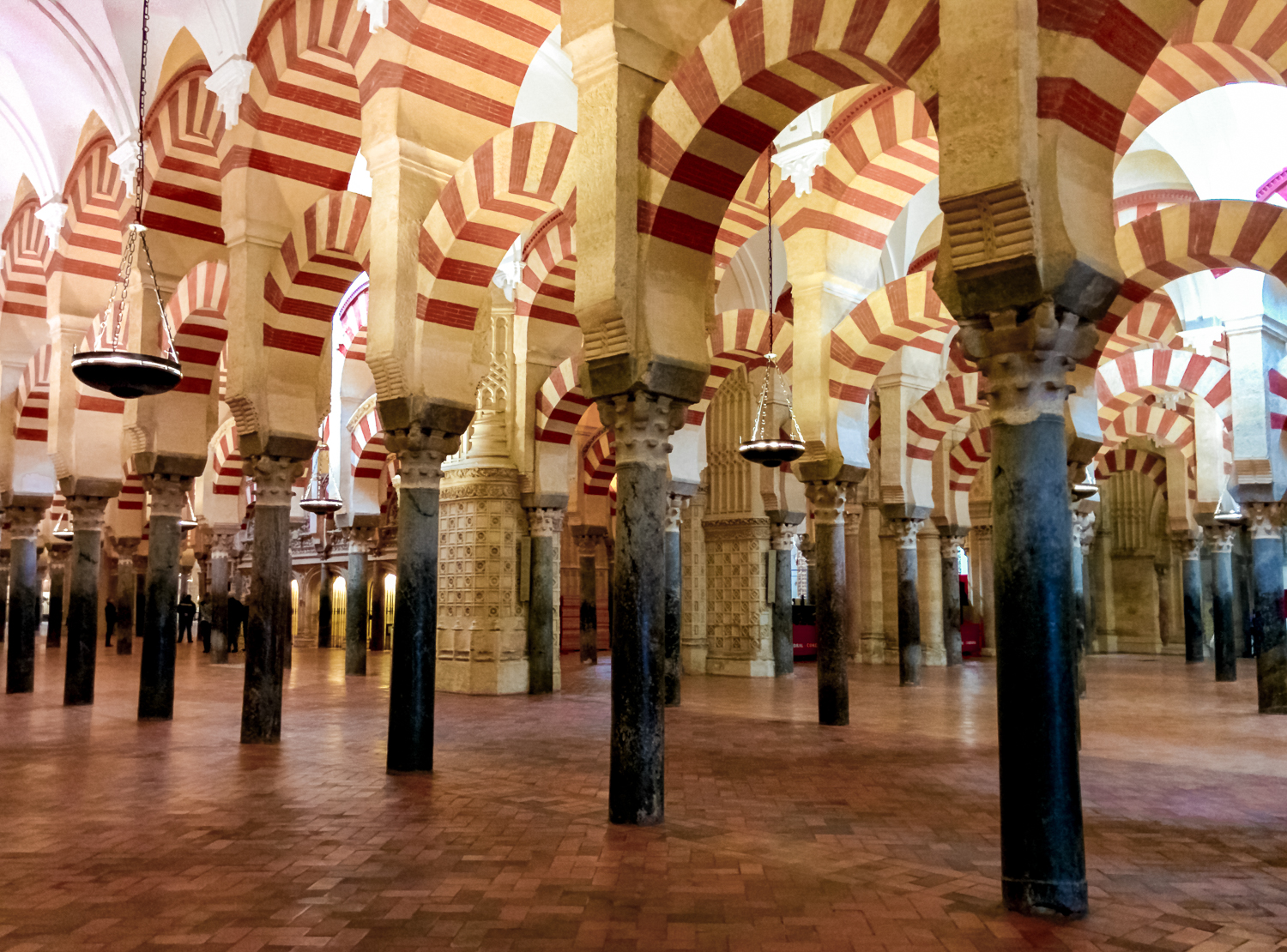
Many of the Christian places of worship in Andalusia are built over, or adapted from, former mosques. The Mezquita, however, is the most unusual fusion of Christian and Islamic architecture we’ve ever seen.
The original mosque was built on the site in the late 8th century and gradually expanded by successive Muslim rulers of the region. When Cordoba was reconquered by Ferdinand III of Castile in 1236, the mosque was made into a cathedral, with numerous chapels built into the original Moorish design, which was thought too splendid to do away with entirely.
What this slightly dry historical information translates into is one incongruous masterpiece. The main hall is filled with row upon row of double-tiered arches from its days as a mosque, while each side of the enormous room is lined with chapels dedicated to various Christian saints. Set into one wall is the mihrab, covered in glittering, golden-tinted mosaics, indicating the direction of Mecca. Right in the heart of the structure, however, is the main chapel, a ridiculously ostentatious structure, stuffed with marble and detailed wood carvings, that wouldn’t feel out of place in Versailles.
Outside, the Patio de los Naranjos (Courtyard of the Oranges Trees) is itself a pretty space to sit awhile, gazing at the minaret-turned-bell-tower that strikes upwards into the sky.
Considering the Mezquita’s reputation as a symbol of Cordoba, it’s appropriate that most of the other things you’ll want to see are all nearby. Just steps away is the Roman Bridge, crossing the city’s branch of the Guadalquivir River. Follow the waterway north, past some scenic old windmills, and you’ll come to the Alcazar de los Reyes Cristianos. Unlike some of the other alcazars we’ve already mentioned, this one’s history as a fortress has been almost entirely supplanted by its current capacity as a pleasure garden where you can escape into a green oasis for an hour.
End the day at the Plaza de la Corredera, where you can munch some croquetas and try salmorejo, an Andalusian version of gazpacho. The square is always abuzz with activity, as the beautiful buildings that surround it still function as apartments for long-time local residents, who often walk their dogs across the expanse while children engage in games of football.
Where to stay in Cordoba: As you might have gathered, we are obsessed with the Mezquita, and the Ermita Suites are right next door. The apartments here are like something out of an interior design magazine, and the clean, predominantly white décor is faultlessly chic.
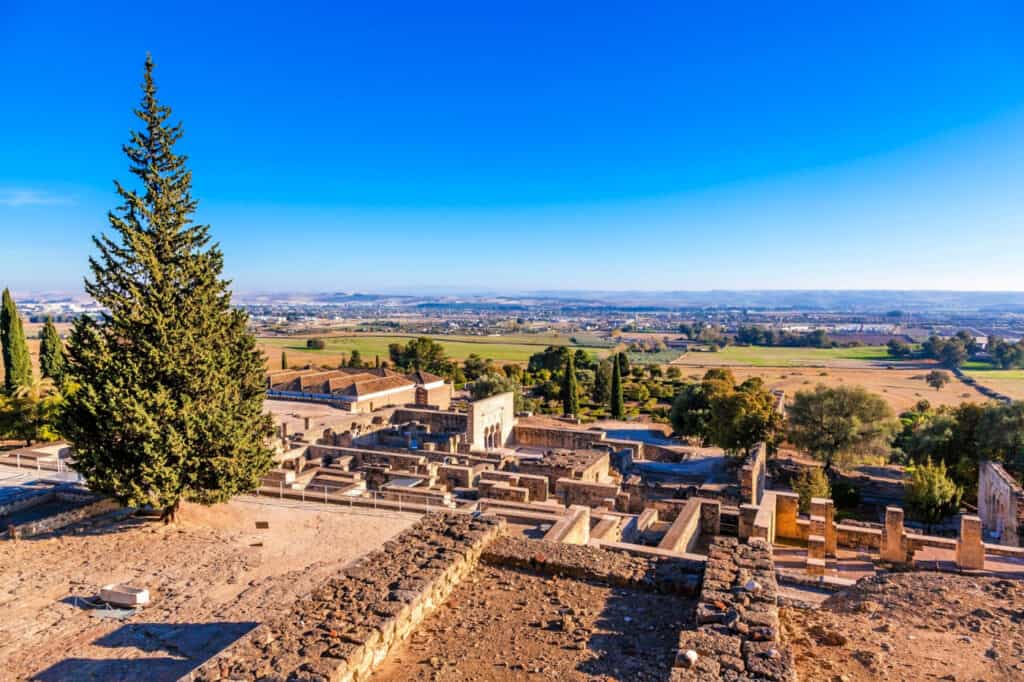
Day Fourteen: Cordoba/Seville
It’s less than an hour on the train from Cordoba back to Seville, so if you’ve got time to squeeze in one more activity before your flight, visit the UNESCO World Heritage Site of Medina Azahara. Located just outside Cordoba, it’s about a 25 to 40-minute drive, depending on if you take a car or local bus. If you’re worried about the logistics, you can also visit as part of a guided tour .
A guide might be wise, since most of the site is now mere ruins, with only a handful of areas having so far been pieced back together. On our visit, we could see just how painstaking the ongoing restoration is for the people tasked with revitalizing the faded glory of what was once a symbol of the wealth and might of the Caliphate of Córdoba.
Why visit if it’s mostly ruins? Because it’s not difficult to imagine just how opulent the place must have been once upon a time. Make sure you take the time to watch the informative introduction video and wander the museum of recovered artifacts before hopping on the shuttle bus to the archaeological site, as this will really help with reconstructing the fragments of sand-colored bricks and pillars into the fabulous palace-city they once formed.
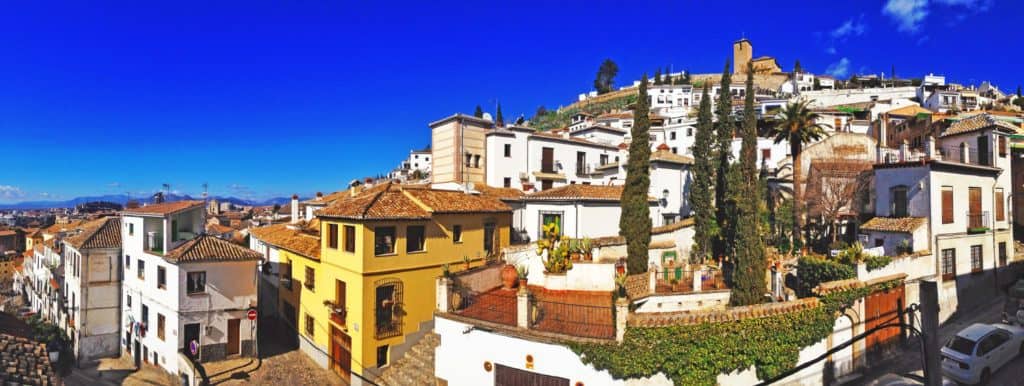
And That’s How to Spend Two Weeks in Andalusia!
This is really just a taster of what Andalusia has to offer. We could have included the breathtaking clifftop town of Ronda (which we covered here in an earlier post ); the Tabernas desert, a picturesquely barren expanse used as a filming location not just by Spaghetti Western pioneer Sergio Leone but also Games of Thrones; or the Doñana National Park, a wetland reserve with beautiful walks and myriad birdlife.
For people who love their beach time, 14 days in Andalusia might be better spent in the resort paradises of Marbella or Nerja. In our (perhaps controversial) opinion, however, a beautiful beach is a beautiful beach anywhere in the world, but the Cathedral of Seville, the Alhambra of Granada, the charming towns of Arcos de la Frontera and Ubeda, the Mezquita of Cordoba, the Sierra Nevada Mountains and the precarious walkway of the Caminito del Rey are all utterly unique.
Lauren Juliff
Lauren Juliff is a published author and travel expert who founded Never Ending Footsteps in 2011. She has spent over 12 years travelling the world, sharing in-depth advice from more than 100 countries across six continents. Lauren's travel advice has been featured in publications like the BBC, Wall Street Journal, USA Today, and Cosmopolitan, and her work is read by 200,000 readers each month. Her travel memoir can be found in bookstores across the planet.
Related Posts

How to Spend One Week in Mauritius: An Itinerary for First-Time Visitors

What’s it Like to Travel in Liechtenstein?

What to Take On the Camino Primitivo: My Detailed Packing List

Exploring the Abandoned Monte Palace Hotel in Sao Miguel

How to Spend Two Weeks in Belize: An Itinerary for First-time Visitors
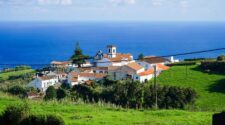
13 Reasons to Plan a Trip to the Azores
Leave a reply cancel reply.
Your email address will not be published. Required fields are marked *

Andalusia Spain
Visitor & Tourism Information
Andalusia Spain

Andalusia Spain is the most populous autonomous region in the country, home to the important cities of Granada , Cordoba, Malaga , Cadiz and Seville. The region is blessed with an enviable climate, great mountain ranges, and impressive beaches and is home to Europe’s only true desert.
The area is a major hub for tourism in Spain noted for its first-class beach resorts such as Marbella on the Costa del Sol. The capital of Andalusia is Seville , full of history and charm, this is where the famous tapa was invented!
The sub-tropical climate of Andalusia has a reputation as being one of the best in Europe. It boasts mild winters and hot, dry summers with an average temperature of around 21C
Andalusia Spain is also well known for its many festivals and fiestas including the Seville April Fair, the El Rocio pilgrimage and the Easter Holy celebrations of Malaga and Seville.
Is it Andalusia or Andalucia?
"Andalusia" is the Anglicised version of the Spanish word "Andalucía." When pronounced in English, "Andalusia" sounds like "an-duh-LOO-zhuh" or "an-duh-LOO-see-uh," depending on regional accents. In Spanish, "Andalucía" is pronounced "ahn-dah-LOO-thee-ah" in areas with the 'ceceo' (like parts of southern Spain) or "ahn-dah-LOO-see-ah" in most other Spanish-speaking regions.
The primary difference between "Andalucía" and "Andalusia" is the language of usage and the slight variation in pronunciation. "Andalucía" is the original Spanish term, while "Andalusia" has been adapted for English speakers.
Both terms refer to the same southern region of Spain, known for its rich history, diverse culture, flamenco music , and iconic landmarks like the Alhambra in Granada .
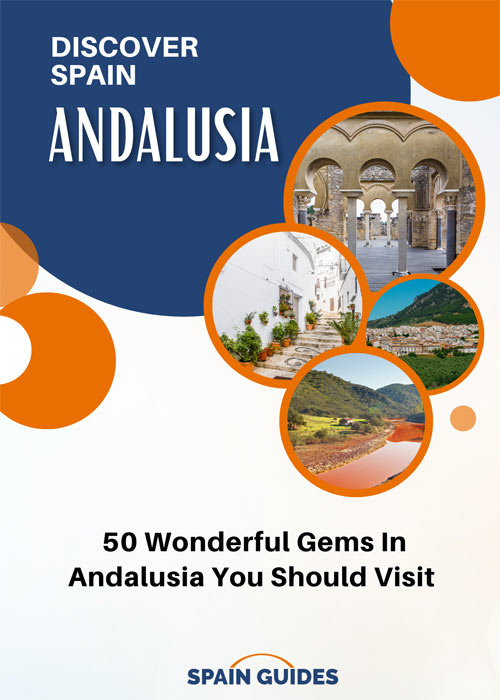
DOWNLOAD FREE e-GUIDES
Join Today and Get Access to Exclusive FREE Content, Travel Tips and downloadable e-Guides
SIGN UP HERE
14 Facts about Andalusia Spain

- The Mediterranean Sea and the Atlantic Ocean both have coastlines in Andalusia, the only part of Spain that does. Its 1,000 miles of coastline features a variety of beaches and vistas.
- The nearest point of Andalusia to Africa is barely 14 kilometres distant. Many swimmers cross the Strait of Gibraltar, which divides the two continents, each year.
- Hercules is depicted between two columns taming two lions on the coat of arms of Andalusia. These columns, according to mythology, stood on either side of the Strait of Gibraltar and delineated the limits of the known globe.
- There are numerous castles in Andalusia that serve as reminders of its past and present. Several of them have various designs and purposes and date back to Roman, Arab, or Christian eras.
- The Tabernas Desert in Almeria, Andalusia, is the only desert in all of Europe. This desolate setting has been used as the backdrop for numerous Western films, including The Good, The Bad, and The Ugly.
- The second-largest geode in the world is located in Andalusia; it is a cavity filled with enormous crystals that can be seen near Pulp, Almeria. The geode has dimensions of 8 metres by 2 metres by 2 metres. Andalusia produces most of Spain's olive oil, which is considered liquid gold for its quality and health benefits. Jaén alone produces more olive oil than Italy or Greece.
- The Arab civilisation has left a significant heritage in Andalusia, which is reflected in the region's architecture, art, language, food, and music. Examples include the Mosque-Cathedral in Cordoba, the Alhambra Palace in Granada, and flamenco.
- It's possible that Walt Disney was an Andalusian. Some ideas contend that he was born outside of marriage in Mojacar, Almeria, and that an American couple later adopted him.
- Flamenco, which combines singing, dancing, guitar playing, and clapping, is a global representation of Andalusian culture. Gypsy, Jewish, Moorish, African, and Latin American influences, among others, were combined to create it. It was declared an Intangible Cultural Heritage by UNESCO in 2010.
- Andalusia is home to Mulhacén, the highest mountain in continental Spain, which rises 3,478 metres above sea level. It is a portion of the Sierra Nevada range, which is home to several peaks that rise to elevations of over 3,000 metres, including Veleta and Alcazaba.
- Grazalema, a village in the province of Cadiz , receives an average of almost 2,000 mm of rain annually, making it the wettest place in Spain. It is also found in Andalusia. Due to its location between two mountain ranges, it is surrounded by a natural park with a distinctive microclimate.
- Many cities and villages in Andalusia, notably those along the so-called White Villages Road, are characterised by a sea of white buildings. These homes are painted a calm white with lime to reflect the sunshine.
- One of Andalusian cuisine's most intriguing dishes is white garlic (ajo blanco). Almonds, garlic, bread crumbs, vinegar, olive oil, and water are used to make this cold soup. As a garnish, it is typically served with grapes or melon cubes. It dates back to the Moorish era when tomatoes were not yet domesticated but almonds were widely available.
- One of Spain's most well-known events, the Cadiz Carnival draws thousands of tourists each year. Before Lent, it lasts for two weeks and includes parades, costumes, music, and humour. The chirigotas, bands who perform humorous songs about current events or social issues, are one of its highlights.
Top 10 Things To Do In Andalucia Spain

- Visit the historic regional capital - Seville .
- Explore the Mosque-Cathedral in Cordoba .
- Visit the Alhambra Granada .
- Marvel at the hilltop village of Ronda .
- Take a road trip to explore the whitewashed villages.
- Spend a day at the Grazalema National Park in Cadiz and Malaga.
- Visit Malaga , the birthplace of Picasso.
- Walk along the spectacular Caminito del Rey ( The Kings Walk ) close to Malaga.
- Explore the historic city of Cadiz.
- Go wine tasting in Jerez de la Frontera , the home of Sherry.
- Visit the stunning Donana National Park.
- Spend a day at the chic coastal resort of Marbella .
- Go underground and explore the caves at Nerja.
- Go hiking within the Cabo de Gata national park, Almeria .
- Explore Europe's only dessert at Tabernas, Almeria.
- Attend an authentic Flamenco show.
- Try a variety of Tapas dishes.
Top Andalucia Cities, Towns & Resorts
- Jerez de la Frontera
- Benalmadena
- Torremolinos

Granada is home to the stunning Alhambra Granada which sits on a plateau high above the historic city of Granada and is a must-place to visit in Spain.
The Alhambra is a royal palace, fortress and castle all in one. It boasts colourful gardens and a spectacular Parador hotel where visitors can stay to savor the atmosphere that this unique world heritage site offers.
Granada is an amazing city located in the beautiful and vibrant region of Andalucia in Spain. Its unique location at the foot of the Sierra Nevada Range provides visitors with stunning views of the mountain range, with its highest peak standing at 3.480 meters tall.
The city also offers a wonderful selection of tapas bars, lively pubs and open-air cafés. When visiting Granada, you can truly immerse yourself in the culture and history of Spain and experience all that this beautiful city has to offer.
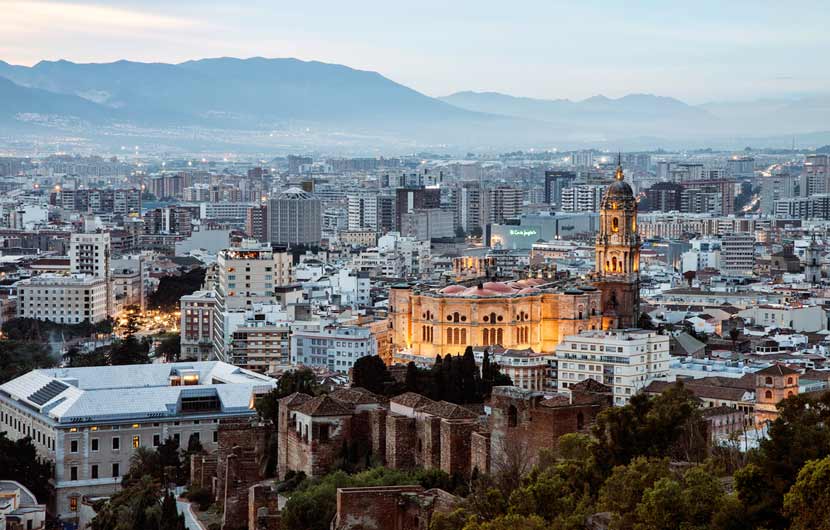
Malaga is an amazing city that often gets overlooked by those visiting the Costa Del Sol . It is the second-largest city in Southern Spain and the birthplace of the famous artist, Pablo Picasso.
Malaga has a rich history, beautiful architecture, and a wide array of cultural activities for visitors to explore. There is a bustling shopping scene, plenty of delicious tapas bars, and a vibrant nightlife.
Recently, the city has undergone major renovations, adding a modern flair to the old-world charm. Malaga has something for everyone, from the history buff to the beach-goer, and is definitely worth a visit!
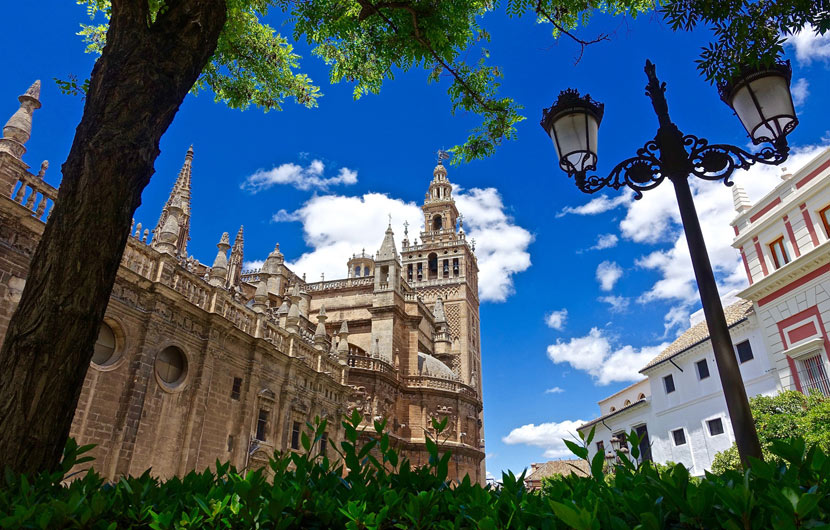
Sevilla is a captivating city that is steeped in history and culture. It is home to some of the most stunning monuments and ancient sites in Spain, including Sevilla Cathedral , the Alcazar gardens, and the Torre del Oro (Golden Tower).
It is also the first city in Spain to have a high-speed railway line, the Madrid-Sevilla AVE line, which was opened for the 1992 World Expo held in the city.
Sevilla has become a popular tourist destination due to its vibrant atmosphere, unique culture, and delicious cuisine. It's no wonder that Lord Byron wrote that Sevilla was famous for oranges and women!
The city is located on the banks of the River Guadalquivir, and is also the birthplace of tapas, the classic Spanish dish. Sevilla is sure to impress visitors with its rich history, stunning architecture, and delicious food.
The city is home to the impressive Sevilla Cathedral which is an imposing sight, located in the heart of the city just a few minute's walk from the Guadalquivir River.
The construction lasted for well over a century, the idea of city elders at the time was .. “ to build the grandest and most magnificent Cathedral that people will think us mad ”. The stunning central Nave rises well over 40 meters and is flanked by 80 stunning side chapels. The Basilica was built on the site of the Almohad mosque by the Moorish dynasty which dates back to the 12 th century.
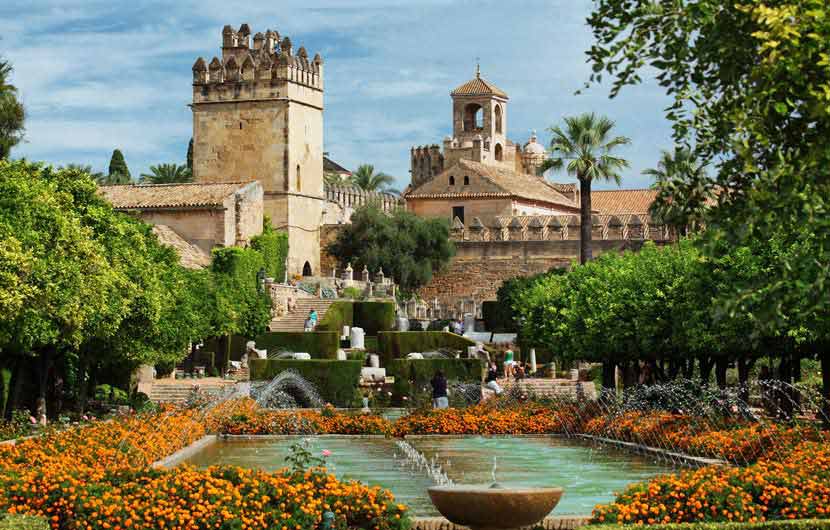
Cordoba is a truly remarkable city, with a history and culture that have been shaped by the influences of three different worlds.
From the stunning Mezquita Arab Palace , to the olive groves and beautifully decorated patios, Cordoba is a destination that should not be missed.
The vibrant festivals and performances of flamenco dancing make it even more special. Not to mention, the region produces some of the finest wines in the world, such as Montilla wine, which is mellow and dry and perfect for sipping during festivals.
With such an array of sights and experiences, Cordoba is an unforgettable place to visit and to appreciate the unique mix of cultures that can be found nowhere else.

Almeria is truly a magical place to visit if you're looking for a unique holiday of desert landscapes, sun, sea fantastic beaches, and rugged coastlines.
With warm weather all year round, crystal clear waters, and stunning landscapes, it's a great place to relax and unwind. But it's also perfect for those who want to experience new things; local fiestas are vibrant and full of life, and there's plenty of wildlife to explore in the Cabo de Gata Nature Park or the Las Salinas salt flats.
Whether you're looking for a peaceful getaway or an exciting adventure, Almeria is the perfect destination!

Ronda is an absolutely stunning mountain town located in the heart of Andalucia. Its unique location built on a ridge of the Sierra Ronda, and surrounded by a 130 meter deep gorge, El Tajo, makes it a destination that cannot be missed.
The eighteenth-century arched bridge, Puente Nuevo, stands majestically atop the gorge, while tall whitewashed houses line its edges.
For those looking to explore the area, the Rio Guadalquivir winds its way through the lush green valley below, and many donkey tracks can be found that lead down to the river.
Bird-watchers will enjoy spotting the lesser kestrels that nest in and launch from the cliffs beneath Alameda park, as well as other bird species.
There's something truly magical about the views and history of Ronda, making it an unforgettable experience.
Costa del Sol
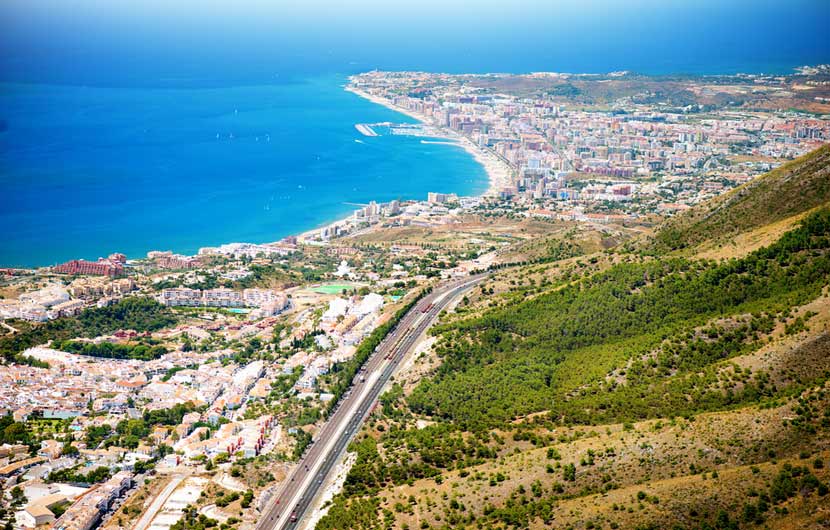
The Costa del Sol is a beautiful travel destination located within the Andalucia region. The area is known for its stunning beaches and its Mediterranean climate which provides over 300 days of sunshine throughout the year.
Tourists flock to this area to take advantage of the warm weather, the crystal blue waters of the Mediterranean, and the relaxed atmosphere. In addition to sunbathing on the beaches, you can explore the area's delicious local cuisine, vibrant nightlife, and nearby attractions like historic monuments and golf courses.
The Costa del Sol is an ideal destination for those looking for a relaxing holiday in the sun.
Costa De La Luz

The Costa de la Luz is a beautiful destination in Spain. It's famously known as the Coast of Light because it offers more than 300 hours of sunshine each year. It stretches from Tarifa in the east to the Taguas estuary bordering Portugal in the west and offers a wide variety of attractions, such as the Donana Nature Reserve, pristine beaches, championship golf courses and delicious cuisine.
The main cities of the Costa de la Luz are Cadiz and Huelva , both of which offer an array of cultural experiences and breathtaking views.
The coastline is surrounded by lush pine forests, charming fishing villages and peaceful surroundings, which make it the perfect spot to relax and enjoy the beauty of nature.

Cadiz is a truly unique city, full of history, charm, and mystique. Its age and its importance as a port in the 18th century have given it a character that has been preserved even to this day.
You can feel the atmosphere of the old days when you walk through the alleyways and squares of the city, as it is still full of life and culture.
The golden dome of the cathedral is a reminder of the wealth and power of the city in the past, and the mix of old and modern is something that makes a visit to Cadiz a truly special experience.

Huelva is an area rich in attractions that is perfect for all types of travellers! From its whitewashed villages, delicious cuisine, and historic sites to the championship golf resorts, Huelva has something for everyone. Not to mention, Huelva's coastline boasts some of the most beautiful beaches in Spain.
From Matalascanas and Mazagon, to Punta Umbria, Isla Canela, La Antilla, Isla Cristina, and El Rompido, visitors can enjoy stunning sand and surf.
And, with over 3,000 hours of sunshine each year, you can be sure that your beach days will be filled with sunshine!
So, if you're looking for a beach holiday with plenty of interesting sites to explore, Huelva might just be the perfect destination for you!
Jerez De La Frontera

Jerez de la Frontera is a beautiful place to visit, full of culture and things to do. It's known as the birthplace of Sherry, with nine world-renowned bodegas that offer guided Sherry tours .
It's also known for the Royal Andalucian School of Equestrian Art and its flamenco dancer Lola Flores.
The best time to visit is from April to September when temperatures are mild and comfortable. The summer months can get very hot, so it's best to visit during the cooler months.
Top attractions in Andalusia Spain
Colourful festivals.

Andalusia is a region famed for its fiestas, festivals , carnivals, and ferias. These colourful events take place in the cities, towns and villages across Andalusia Spain and are a great way to witness the traditional customs and celebrations of the region.
One of the most famous festivals in Andalusia is the Feria de Abril in Seville . This week-long celebration takes place in late April and features traditional flamenco music, dancing, and colourful parades of horses and carriages. The festival began in the 19th century as a livestock fair, but has since evolved into one of the biggest and most vibrant festivals in the region.
Probably the most fun festival of the year is The Fiesta de San Juan ( the night of St John ) which is celebrated throughout Andalusia Spain, typically on the night of June 23rd, with bonfires, fireworks, and one huge beach party. The festival is held to celebrate the summer solstice and to honour the patron saint of the region, San Juan.
Other important fiestas include the Feria de Agosto in Malaga, a week-long celebration of music, dancing, and traditional cuisine, held in mid-August. The Feria de Nuestra Señora de la Salud in Cordoba is a religious festival that honours the city's patron saint, with processions and celebrations taking place in late May.
In addition to these larger festivals, Andalusia also holds countless smaller ferias and celebrations that take place throughout the year.
Another major event celebrated each year is the easter festival, holey week (Semana Santa). You will find holy week celebrations taking place in all the major cities and a large number of the smaller towns and villages including Malaga, Granada, Seville, Huelva, Cadiz, Almeria and Cordoba.
Overall, the fiestas, festivals, carnivals, and ferias of Andalusia offer visitors a unique glimpse into the region's rich culture and history.
From traditional celebrations to modern events, there is something for everyone to enjoy throughout the year.
Stunning Beaches

Andalucia is blessed with over 800 kilometres of diverse coastline and many blue flag beaches set in idyllic landscapes, here are some of the best beaches of Andalusia.
» Playa Victoria Beach - Cadiz

Victoria Beach is located in the province of Cadiz and is likened to champagne, because of its champagne-coloured sand, enjoys a large beach, stretching 2 km, being the finest in southern Spain.
Popular for the many water sports, but also for the wide range of restaurants, cafes, bars and a lively atmosphere, Playa Victoria offers tourists a relaxing experience, being not as crowded as other beaches.
» Bolonia Beach - Costa de la Luz

Highly appreciated and famous, Bolonia is the hardest accessible beach in the southernmost province of the Costa de la Luz , but the effort is fully rewarded. Basically, the beach offers three areas to choose from, depending on your tastes. Bolonia Beach is known for its tranquillity and 30-meter-high sand dunes.
For adventurous spirits, the south is the paradise of surfers, beating strong winds, while the central part is dedicated to families, with umbrellas and sunbeds, the parking being free.
» Cabo de Gata – Almeria
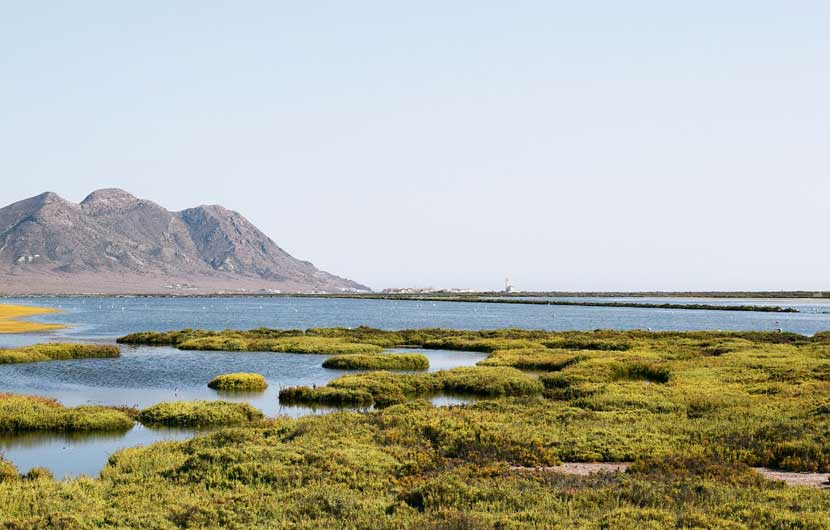
Playa de Los Muertos is part of UNESCO Heritage, being declared a Biosphere Reserve. Its hidden bays, coral reefs, pristine beaches, cliffs and ruined castles.
Do not be deceived by the name of the beach, because it will surprise you the first time. Special and strange at the same time, is the rock formation at the end of the beach, resembling a grey mountain.
15 Amazing Beaches In Andalusia Spain
- Vera Beach Almeria.
- Playa de los Muertos. Almeria.
- Playa de los Genoveses. Almeria.
- La Herradura Beach - Granada
- Playa de Maro - Nerja
- Playa de Los Boliches - Fuengirola
- Playa de la Butibamba - Mijas Costa
- Playa de Cabopino - Marbella
- Bolonia Beach - Cadiz
- Zahara de los Atunes - Cadiz
- Barbate Beach - Cadiz
- Los Canos de Meca - Cadiz
- Sanlucar de Barrameda - Cadiz
- Matalascanas - Huelva
- Playa de Castillo - Huelva
Donana Natural Park

Donana is a vast and beautiful nature reserve that is located within the provinces of Cadiz and Huelva. It is one of Europe's most important wetlands and a biodiversity hotspot for many species of plants and endangered species such as the Iberian Lynx.
The reserve has different ecosystems that create a changing scenery throughout the year. There are marshes, lagoons, pine forests, dunes, cliffs and beaches to explore. The best times to visit the park are in April, May, June and September and the winter months if you're looking to see the migratory flamingos.
One of the main attractions of Doñana is its rich birdlife. Over 300 species of birds can be found here, including flamingos, herons, storks and eagles. Some of them are migratory and use Donana as a stopover or wintering site. Many though live and breed in the reserve all year round.
Doñana is also home to some endangered mammals, such as the Iberian lynx and the Spanish imperial eagle. Two of the most emblematic species of the reserve require special conservation efforts.
Due to its very nature and with conservation at the forefront there are visitor restrictions in place on where you are allowed to visit. The general areas can be visited without reservations via the visitor centres located on the periphery of the Park. If you are thinking of entering the restricted areas you must reserve through one of the authorized companies.
For a special day out join one of the 4x4 guided tours on offer, they are a way to explore the park and learn all about the floors, fauna and wildlife that exists on this stunning nature reserve.

Andalusia Spain is the preferred destination of many thousands of golfers each year.
The area is home to the world-renowned Costa del Sol which boasts more than 60 top-class golf courses including Valderrama , Las Brisas, San Roque and La Reserva.
We can help you plan and book your next golf trip to Andalucia and around Spain.
Andalusia Spain Beaches

Andalusia is blessed with some of the best beaches in Spain, here is our pick of the top beaches in the south of Spain .
- Chipiona Beach - Cadiz
Playa Victoria Beach - Cadiz
Playa de la Victoria is a jewel in Andalusia's crown, situated in Cádiz, one of the region's most historic cities.
Stretching for approximately 3 kilometres along the city's coastline, this urban beach boasts fine golden sands and calm, clean waters, making it a popular choice for both locals and tourists.
Renowned for its cleanliness and extensive amenities, including sunbeds, restaurants, and chiringuitos (beach bars), Playa de la Victoria offers a perfect blend of relaxation and recreation.
The beachside promenade is ideal for evening strolls, capturing the essence of Andalusian life.
Bolonia Beach - Costa de la Luz
Bolonia Beach ( Google Maps ), located near Tarifa in Andalusia, is one of Southern Spain's hidden gems.
This pristine stretch of golden sand spans around 4 kilometres and is backed by the impressive Bolonia Dune, one of the largest sand dunes in Europe.
The beach is renowned for its crystal-clear waters, making it a favourite for both swimmers and snorkelers.
In addition to its natural beauty, Bolonia is steeped in history. The ancient Roman city of Baelo Claudia, situated just behind the beach, offers a fascinating glimpse into Spain's Roman past with well-preserved ruins, including temples, baths, and aqueducts.
The combination of breathtaking natural landscapes and rich historical significance makes Bolonia Beach a must-visit.
Chipiona Beach
Chipiona Beach, located in the province of Cadiz, is a coastal gem that boasts a unique Andalusian charm.
known for its expansive stretches of golden sands, this beach attracts visitors with its serene ambience and clear waters.
The iconic Chipiona Lighthouse, one of the tallest in Spain, stands guard over the coast, providing a picturesque backdrop.
Local chiringuitos (beach bars) offer fresh seafood, allowing visitors to taste authentic Andalusian dishes while enjoying panoramic sea views.
The beach promenade, lined with palm trees, is perfect for leisurely walks.
Valdevaqueros Beach – Tarifa

Valdevaqueros in Tarifa is one of the most iconic beaches of Andalusia, renowned for its vast stretch of fine golden sand and consistent winds.
Located near the southernmost tip of Spain, it's a haven for kite and windsurfing enthusiasts from around the globe.
The dune backdrop adds to its natural beauty, providing a dramatic contrast to the azure waters of the Atlantic.
Besides water sports, Valdevaqueros offers beach bars or "chiringuitos," where one can taste local delicacies while soaking up the sun.
The beach's proximity to the vibrant town of Tarifa also ensures a mix of relaxation and lively Spanish culture.
The Gastronomy of Andalusia Spain

Andalusia is a region that has a rich and diverse gastronomy. Its cuisine reflects its history, geography and culture, influenced by the different peoples that have inhabited it over the centuries, including the Romans, Arabs, Jews and Christians
One of the main characteristics of Andalusian cuisine is its use of olive oil, which is produced in large quantities in the region. Olive oil is used for frying, dressing salads, making sauces and preserving foods. Another staple ingredient is bread, which accompanies almost every meal and is also used to make soups and stews.
Andalusia Spain has a long coastline and a variety of fish and seafood are consumed regularly.
Some of the most popular dishes include pescaíto frito (fried fish), gambas al ajillo (garlic prawns), cazon en adobo (marinated dogfish) and espetos de sardinas (sardines skewered on sticks and grilled over fire).
The region also produces high-quality cured meats such as jamones (cured hams), chorizos (sausages) and morcillas (blood sausages).

The influence of Arabic cuisine can be seen in many Andalusian dishes that use spices such as cumin, saffron, cinnamon and cloves. They also introduced fruits such as oranges, lemons, figs and dates.
Some examples are alboronía (a vegetable stew similar to ratatouille), albondigas con tomate (meatballs with tomato sauce) and arroz con leche (rice pudding).
One of the most famous Andalusian dishes is gazpacho, a cold soup made with tomatoes, cucumbers, peppers, garlic, bread, vinegar and olive oil. It is usually served as a starter or a refreshing drink in summer.
Another typical cold soup is salmorejo from Cordoba, which is thicker than gazpacho and topped with hard-boiled eggs and ham.
Andalusia Spain also has a rich pastry tradition that dates back to medieval times when Jewish and Muslim bakers created sweets with honey, almonds, nuts and dried fruits.
Some of the most delicious desserts are pestinos (honey-coated fritters), polvorones (shortbread cookies), torrijas (bread soaked in milk or wine and fried) and roscos de vino (wine doughnuts).
Andalusia also produces some of the best wines in Spain, especially sherry from Jerez de la Frontera, vino dulce from Malaga and refreshin white wines from Cordoba.
Sherry has become one most well-known wines produced in Spain and exported throughout the world. Sherry is fortified wine such as fino, manzanilla, oloroso, amontillado or Pedro Ximénez, each one with a unique taste.
Search for Hotels & Rental Apartments in Andalusia
FAQs - Frequently Asked Questions
What is andalusia, spain, famous for.
Andalusia is renowned for its Flamenco music, historic cities like Seville and Granada, the Alhambra palace, and its diverse landscapes, from beaches to mountains.
Is Andalusia safe for tourists?
Yes, Andalusia is generally safe for tourists, but as with any destination, it's essential to stay aware and take standard precautions.
What is the best time to visit Andalusia?
Spring (April-June) and autumn (September-November) offer pleasant temperatures and fewer crowds, making them ideal times to visit.
What cities should I visit in Andalusia?
Seville, Granada, Malaga, Cordoba, and Ronda are among the must-visit cities, each boasting unique cultural and historic attractions.
Is Andalusia expensive for travellers?
Compared to other parts of Spain, Andalusia is generally more affordable, though prices can vary between larger cities and smaller towns.
Do people in Andalusia speak English?
In major tourist areas and cities, many people speak English. However, in smaller towns, Spanish is more commonly spoken, so knowing basic phrases can be helpful.
What food is Andalusia known for?
Andalusian cuisine includes gazpacho, flamenquín, salmorejo, and various tapas. Olive oil, sherry wine, and Iberian ham are also regional specialities.
Are there beaches in Andalusia?
Yes, Andalusia boasts a vast coastline with beautiful beaches, especially along the Costa del Sol and Costa de la Luz.
What traditional festivals are celebrated in Andalusia?
There are literally hundreds of festivals held in Andalusia throughout the year, The best ones include the Feria de Abril in Seville, the Cadiz Carnivals, and the Holy Week (Semana Santa) processions are among the region's most significant cultural events. Malaga Fair is another big festival held in August each year
How do I get around in Andalusia?
The region has an extensive bus and train network including the AVE fast train service. Renting a car can also be convenient for exploring smaller towns and rural areas.
Is the Alhambra in Andalusia worth visiting?
Absolutely. The Alhambra in Granada is a UNESCO World Heritage site, showcasing Moorish architecture and stunning gardens. It's a must-visit in Andalusia.
How hot does it get in Andalusia in the summer?
Summers in Andalusia can be scorching, especially inland. Temperatures often rise above 35°C (95°F) and can sometimes reach 40°C (104°F) or higher.
Does Andalusia have mountainous regions?
Yes, Andalusia is home to the Sierra Nevada mountain range, offering hiking, skiing, and spectacular views.
What local crafts is Andalusia known for?
Andalusia is famed for its pottery, especially in Triana (Seville), as well as its traditional embroidered shawls, leather goods, and intricate silverwork.
Andalusia Spain Map

Travel Smarter - Not Harder
Download free e-guides and travel tips.
Start your Journey today and get access to exclusive FREE content.
Disclosure: Please note that some of the links included in the above content may be affiliate links. We may earn a commission if you make a purchase at no extra cost to you. Rest assured, we only recommend products and services that we personally use or have used and are happy to recommend. Any commission we earn helps toward the site's running costs.
Username or Email Address
Remember Me
- WHY VISIT SPAIN?
- TRAVELLING TO SPAIN
- SPAIN ON A BUDGET
- TRAVEL REQUIREMENTS – ETIAS
- SPAIN ENTRY REQUIREMENTS
- SPANISH CUISINE
- SPANISH FOOD
- HOLIDAY IDEAS
- PUBLIC HOLIDAYS
- TOURISM BOARDS
- AIRPORT GUIDE
- DRIVING IN SPAIN
- WEATHER IN SPAIN
- FREE WEB CAMS
- BEST BEACHES SPAIN
- FESTIVALS & FIESTAS
- MUSEUMS IN SPAIN
- CAMPING IN SPAIN
- MARINAS IN SPAIN
- SKIING IN SPAIN
- WATER PARKS
- UNESCO WORLD HERITAGE SITES
- 80 BEST ATTRACTIONS
- 71 BEST PLACES TO VISIT
- REGIONS OF SPAIN
- COSTA DEL SOL
- CANARY ISLANDS
- SAN SEBASTIAN
- Complete List:
- SAGRADA FAMILIA BARCELONA
- BARCELONA FC STADIUM TOUR
- BARCELONA FLAMENCO SHOW
- SEVILLE FLAMENCO SHOW
- SEVILLE CATHEDRAL
- GAUDI`S CASA BATLLO
- THE ALHAMBRA GRANADA
- SANTIAGO CATHEDRAL
- CITY OF ARTS & SCIENCE VALENCIA
- MOSQUE-CATHEDRAL CORDOBA
- CAMINITO DEL REY
- PRADO MUSEUM MADRID
- REINA SOFIA ART MUSEUM
- SCUBA DIVING
- BEST TAPAS TOURS
- BEST WINE TASTING TOURS
- TOUR GUIDES
- HOTELS IN SPAIN
- LUXURY HOTELS
- LUXURY BEACH HOTELS
- HOLIDAY RENTALS
- PARADOR HOTELS
- CHEAP FLIGHTS
- TRAVEL INSURANCE
- FREE TRAVEL BROCHURES
- WIN FREE HOLIDAYS

Urban Abroad
Urban Planning and Travel Blog
7 Days in Andalusia itinerary
Travel Blog Last Updated · Jan 10th, 2024 [post_author_posts_link] · [post_comments before=""] -->
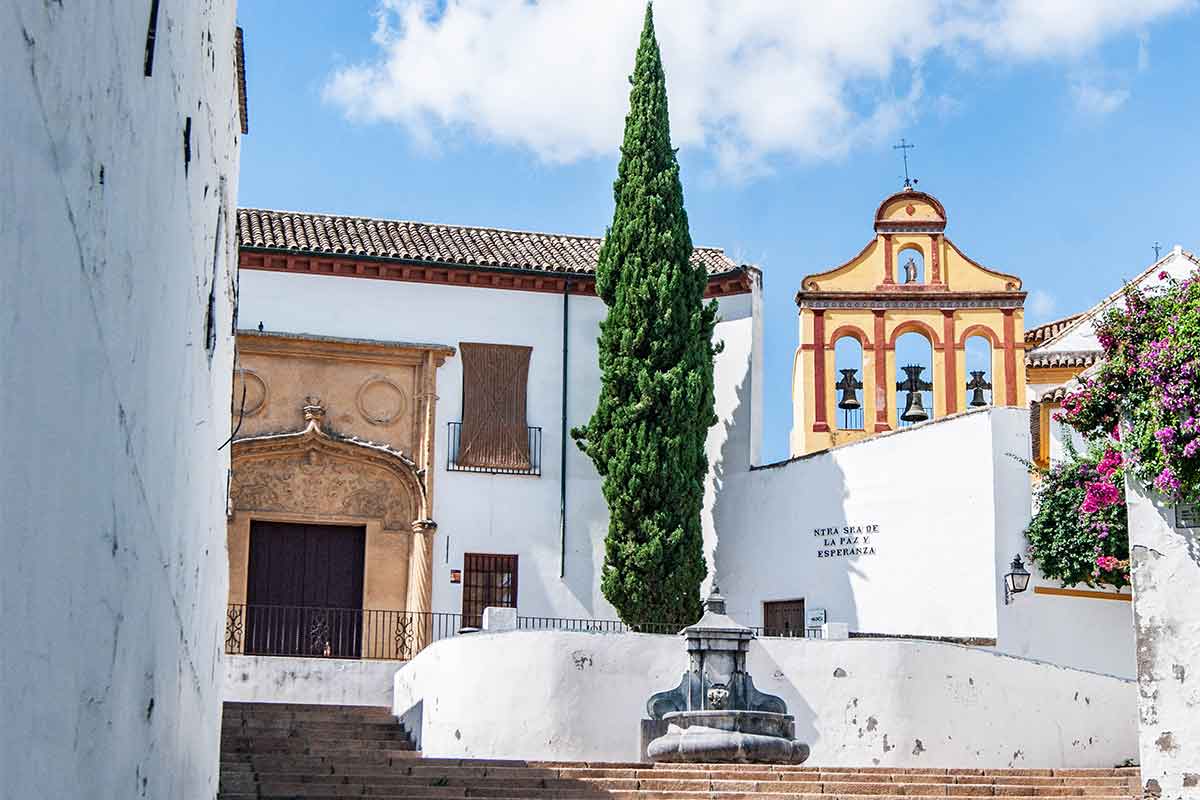
Are you planning your Andalusia itinerary and wondering how to make the most of your stay without missing the most important attractions?
This southern region in Spain is one of the most popular areas to travel to within Europe. And with its sweltering summers, stunning architecture, and beautiful beaches, it’s easy to see why.
As you may already know, Spain is famous for Andalusia and the Costa del Sol , not only for its sought after lifestyle and culture but its incredible and diverse past which is another big pull for tourism to the region.
Table of Contents
Andalusia itinerary
In this guide, we’ll explore the sunny region of Andalusia, talk about some of the main reasons to visit, and the best things to see and do.
We’ll also look at how to get around and our best tips, which include how long to stay for and the best time to visit.
Where is Andalusia?
The Andalusia region is the southernmost region of Spain. Its west side borders Portugal and the east side with Murcia, and the northern part borders the regions of Extremadura and Castilla-La Mancha.
Andalusia’s coastline is bathed by both the Mediterranean Sea and the Atlantic Ocean. This Spanish region is divided into 17 provinces.
Some these provinces are popular touristic destinations:
Did you know? Andalusia is the most populous region of Spain and the second-largest autonomous community in the country.
What is Andalusia known for?
The list of things that Andalusia is known for is quite long. Without any doubt, it’s a go-to destination for its spectacular beaches.
From the Costa del Sol to the 100 km stretch of astonishing beaches of Almería, if you’re chasing ‘sol y playa’, here you’ll feel spoiled by choice!
The artistic and architectural heritage inherited from Arab culture is another reason why Andalusia attracts thousands of visitors.
The Alhambra of Granada, the Alcazaba of Málaga and the Mezquita of Córdoba are only a few incredible Muslim monuments you can explore during your stay in this part of Spain.
Finally, this part of the country is famous for its traditional cuisine, religious festivals, flamenco and the ‘corrida’.
Is Andalusia worth visiting?
Andalusia is known as one of the best summer break destinations in Europe, with the region having consistent and hot weather.
Later in this guide, we’ll look at the climate in more detail.
Throughout the region, you’ll also find some really impressive beaches to relax on, which can be strongly argued to be some of the best in Europe.
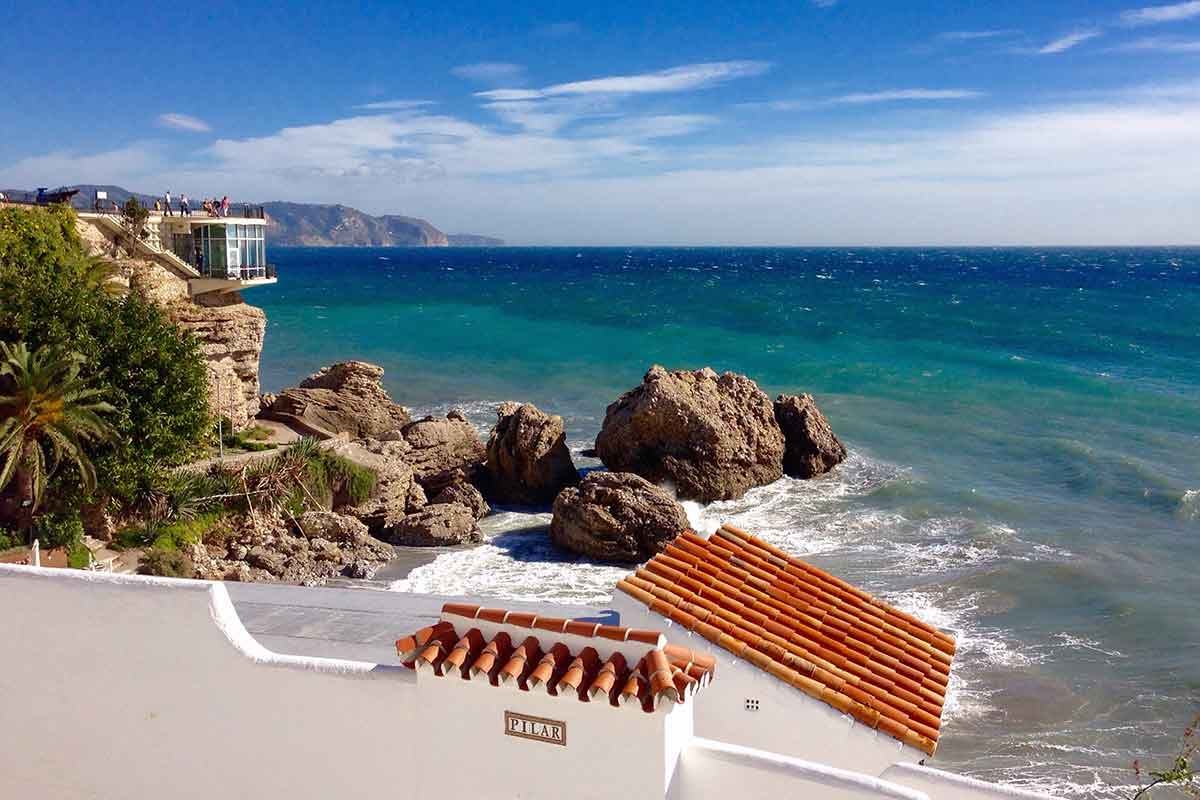
There are both popular city beaches with all amenities a stone’s throw away, as well as wild and secluded beaches for those who like a more private experience. You really can’t go wrong here.
The region is also home to many impressive destinations, as well as a large Moorish influence which can be seen all over the region.
UNESCO sites such as the Alhambra Palace in Granada and the Mezquita Cathedral in Córdoba are some of the region’s best attractions.
The stunning architecture seen in cities such as Seville and Granada is also a pull for those coming to the region, where pebble courtyards, painted tiles, and giant stone walls dominate the urban landscapes.
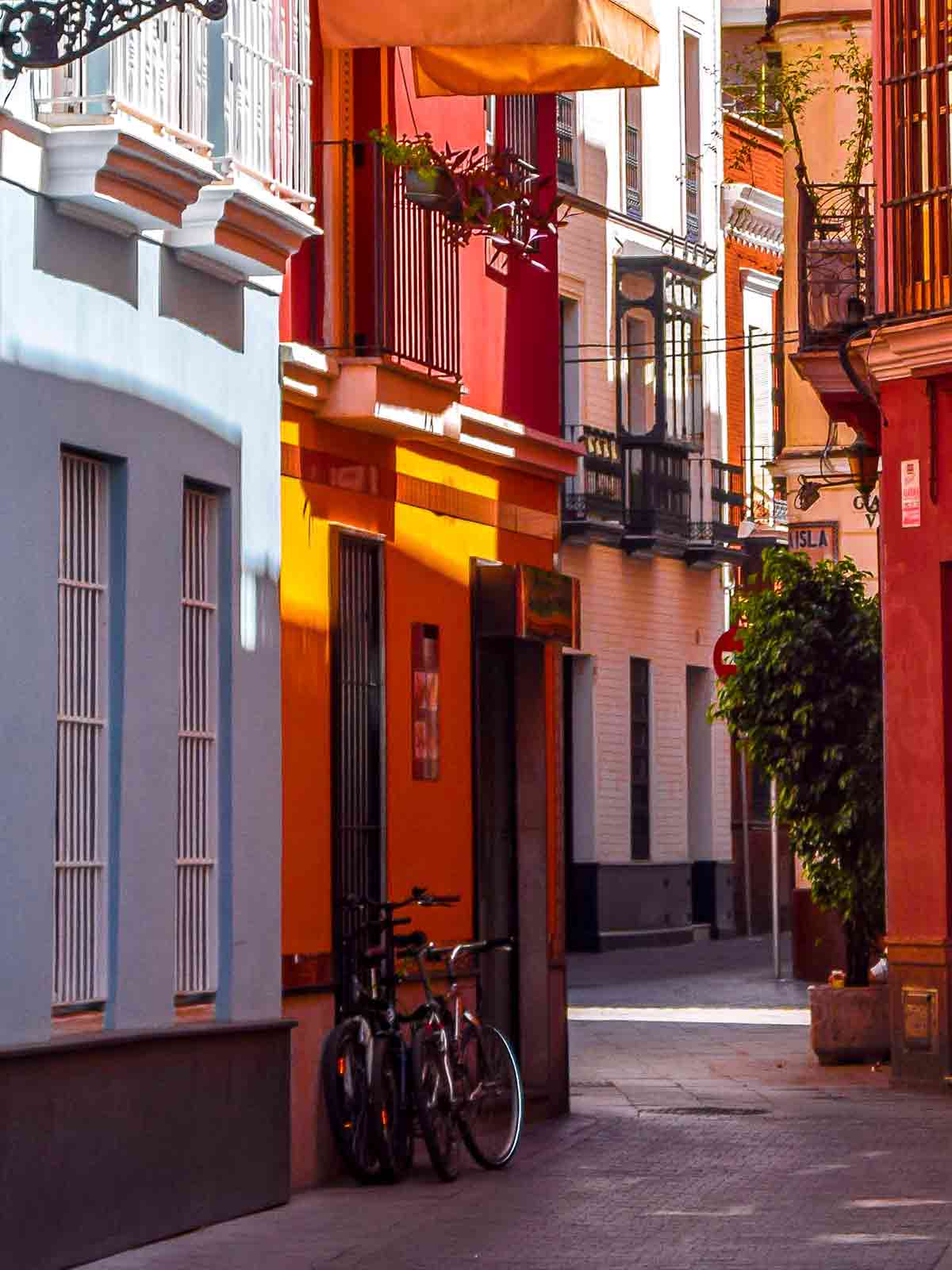
Just walk through any city or town in the region and you’ll see examples in hidden streets you pass by and on random buildings your eye catches.
Andalusia is also well-known for its food, with Gazpacho soup the absolute must-try here. Then of course there’s the tapas, with Tortillitas de Camarones and Croquetas as some of the best to start your appetite.
What is the best month to visit Andalusia?
In our opinion, the best month to visit Andalusia would be April or May.
September and October are also very favorable, especially because the average temperatures usually hover between 20 and 30 C°.
The reason why we don’t suggest visiting Andalusia during the summer months is that temperatures can be extremely hot (40 C°) and most tourists travel between July and August.
To avoid crowds, then choosing shoulder seasons is the best way to go to fully enjoy your time at the beach and when visiting the historical landmarks and historical centers.
How to get in and around Andalusia?
Andalusia is located in southern Spain, and you can easily arrive from other major cities in the country such as Madrid and Valencia. You can also arrive from Portugal, and also by ferry from Morocco in the south.
If elsewhere in Europe, then you’ll need to fly in (unless you don’t mind a very long drive or multiple buses).
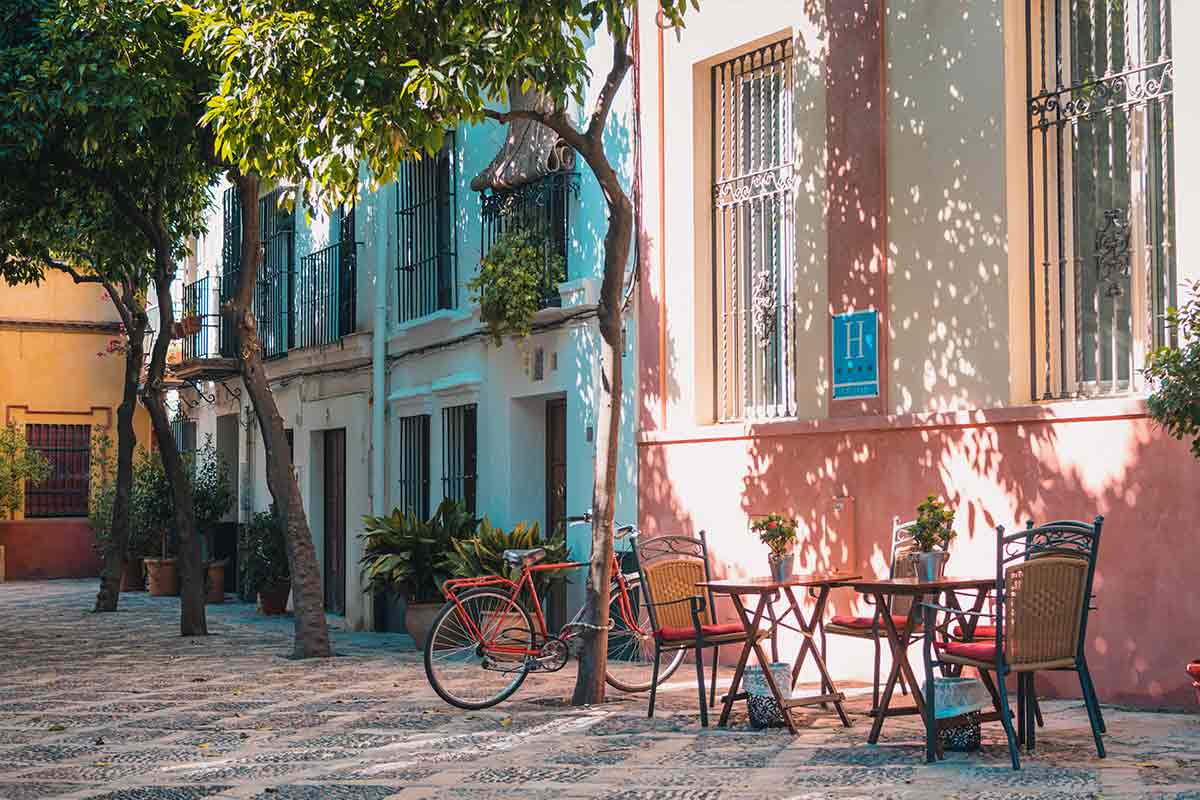
Malaga is the hub of Andalusia, and flights into the city are some of the cheapest in the region. There’s also an airport in Seville which has lots of good connections.
Andalusia is also a very easy region to get around once in. Even if you don’t have the budget to rent a car , there’s a train that runs through the major cities and towns, and the rest is well connected by bus.
How Many Days to Spend in Andalusia?
We’d say a minimum of 6 days is enough to see the best of Andalusia.
More would be better, but this amount of time would allow you to get a good feel for the Spanish region.
Here you would start by arriving in Malaga and spending a day exploring Gibralfaro Castle and also lounging on the beach.
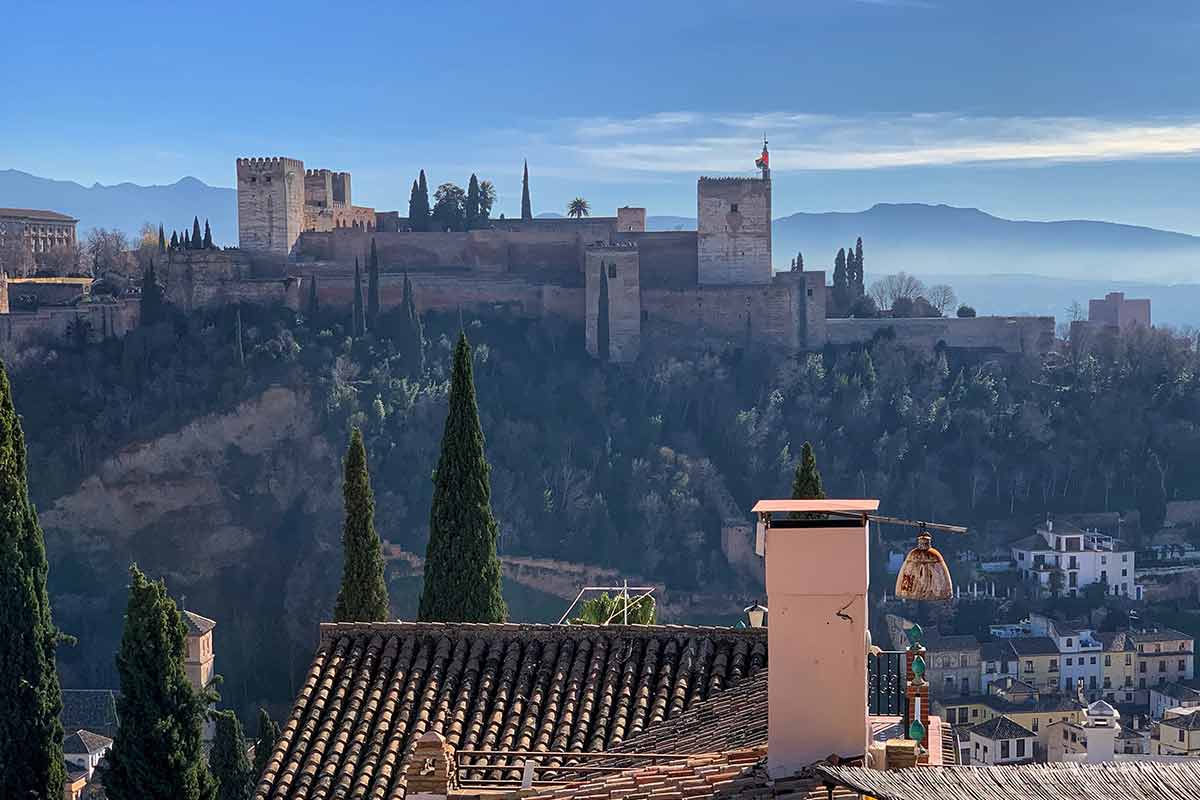
The next 2 days will be spent exploring Granada, its amazing cobblestone streets, and the impressive Alhambra Palace.
From here you would then spend 1 day in Cordoba to see the legendary Mestique Church.
Your last two days will be spent in Seville, where you can see the Plaza de Toro , the Plaza de España as well as sitting back to take in Andalusian life.
Places to visit in Andalusia
Below, we have outlined the places to visit in this Andalusia itinerary.
If you have already taken the time to read our guide to 3 days in Madrid you can be sure to trust us to have more travel gems lined up for you.
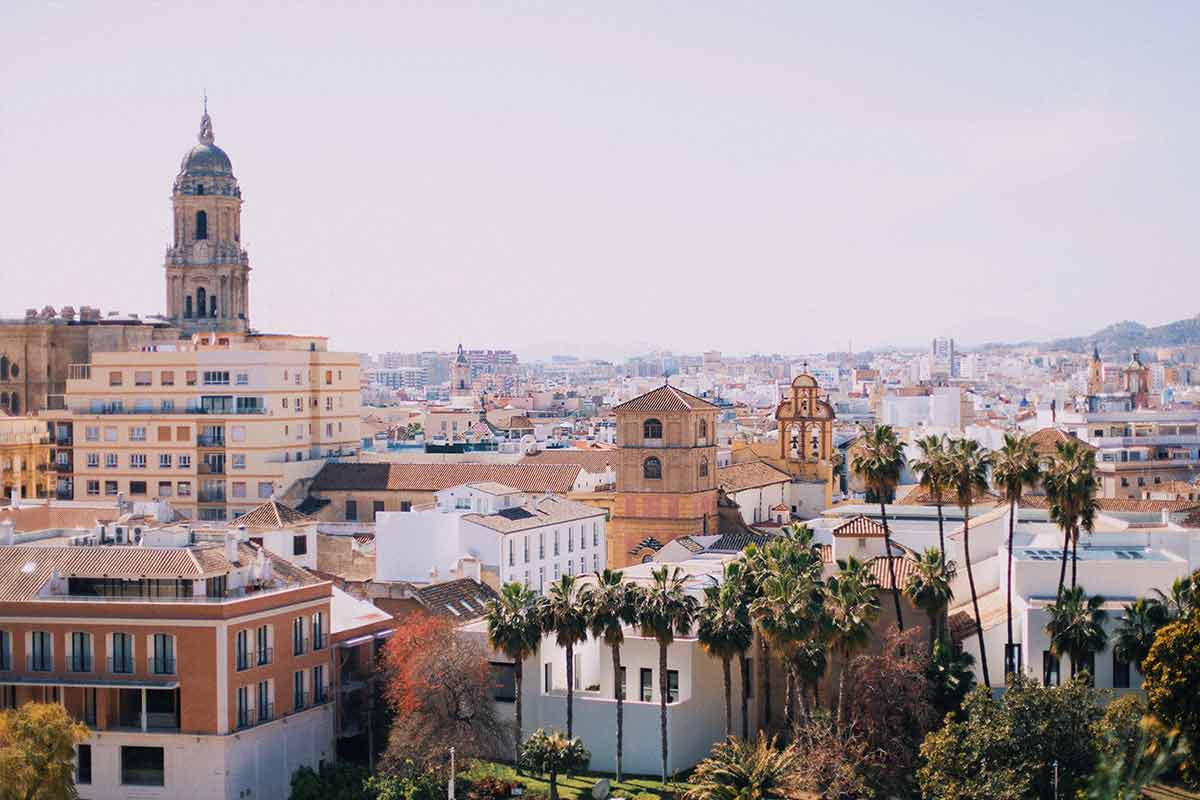
Let’s start with the popular beachside hub of Malaga. Drawing a large number of tourists from all over the world, Malaga is well-known for its position along the Costa del Sol and its incredible stretch of beaches.
One of the best things to do in Malaga is to hike up to Gibralfaro Castle. From here you’ll learn about the ancient fortress, its importance for the city as well as get some stunning views over the city and bay of Malaga.
Another great thing to do here is to visit the historic center where you can see many important landmarks and sights including the Alcazaba, doing a tour of Teatro Romano and the Cathedral of Malaga.
The Alcazaba is one of the most popular to visit, with the ancient fortress being built during the 11th century, and is a great place for travel photos.
Malaga is usually the starting point of any trip to Andalusia with its well-connected airport.
Here there are plenty of accommodation options for all budgets (even some top-notch hostels if you’re on a modest budget) and travelers.
There are also lots of quirky restaurants and bars. The best places to stay are near Malagueta Beach and also the historic center.
This cobblestone-laden city is one of Spain’s most scenic places to visit
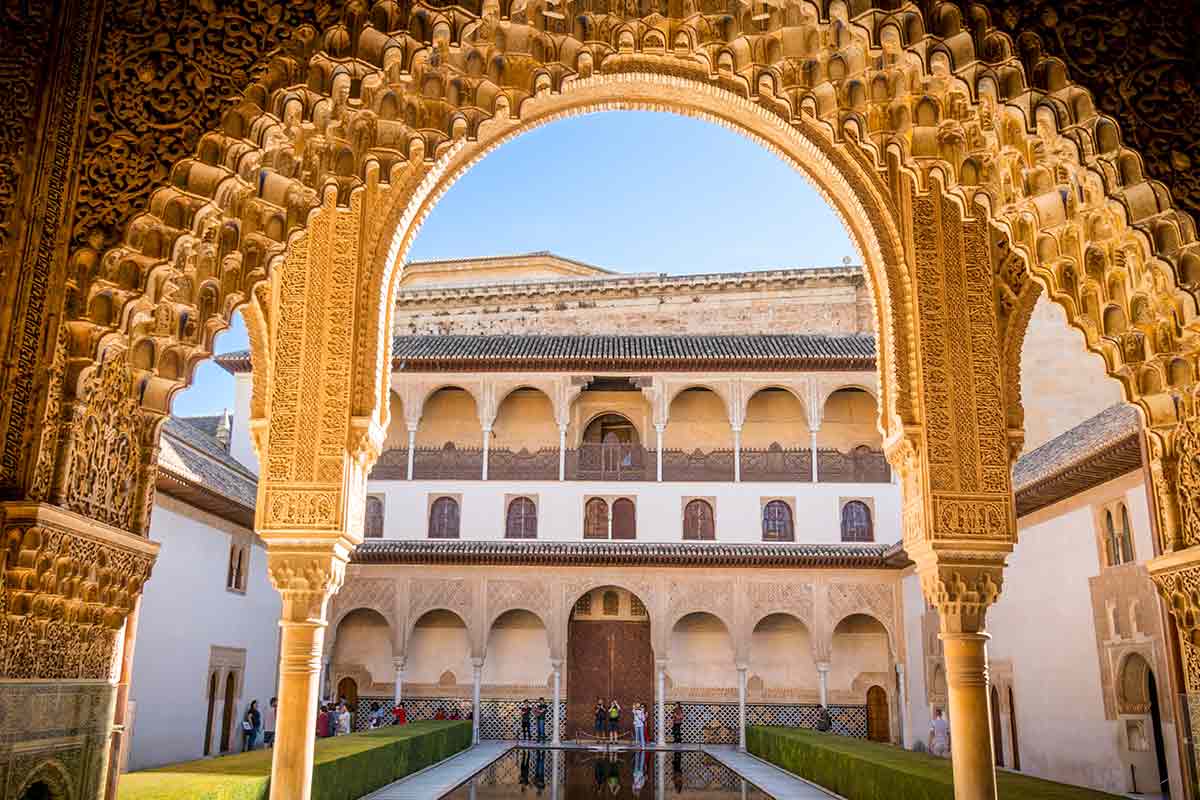
Known for its university and student life, Granada is also home to some stunning natural scenery since it’s located next to the Sierra Nevada.
The best thing to see here is the legendary Alhambra Palace. Built in 1238, this palace is situated on top of a hill and overlooks Granada. It’s a UNESCO World Heritage site and one of Spain’s most visited landmarks.
Here you can marvel at its impressive towers, picturesque fountains, and courtyards, as well as Arabic patterns and inscriptions.
Another must-visit is the Puerta del Elvira . The giant door towers over the nearby streets and was once the main gateway into Granada.
As mentioned earlier, Andalusia has a strong Moorish history which is reflected in its architecture, and Granada is one of the best places to marvel at these incredible designs and heritage.
One way to experience this unique culture is by going to a Hamman Spa where you can relax for the day. We recommend heading to Hamman Al Ándalus , which is located next to the Iglesia de San Gil y Santa Ana.
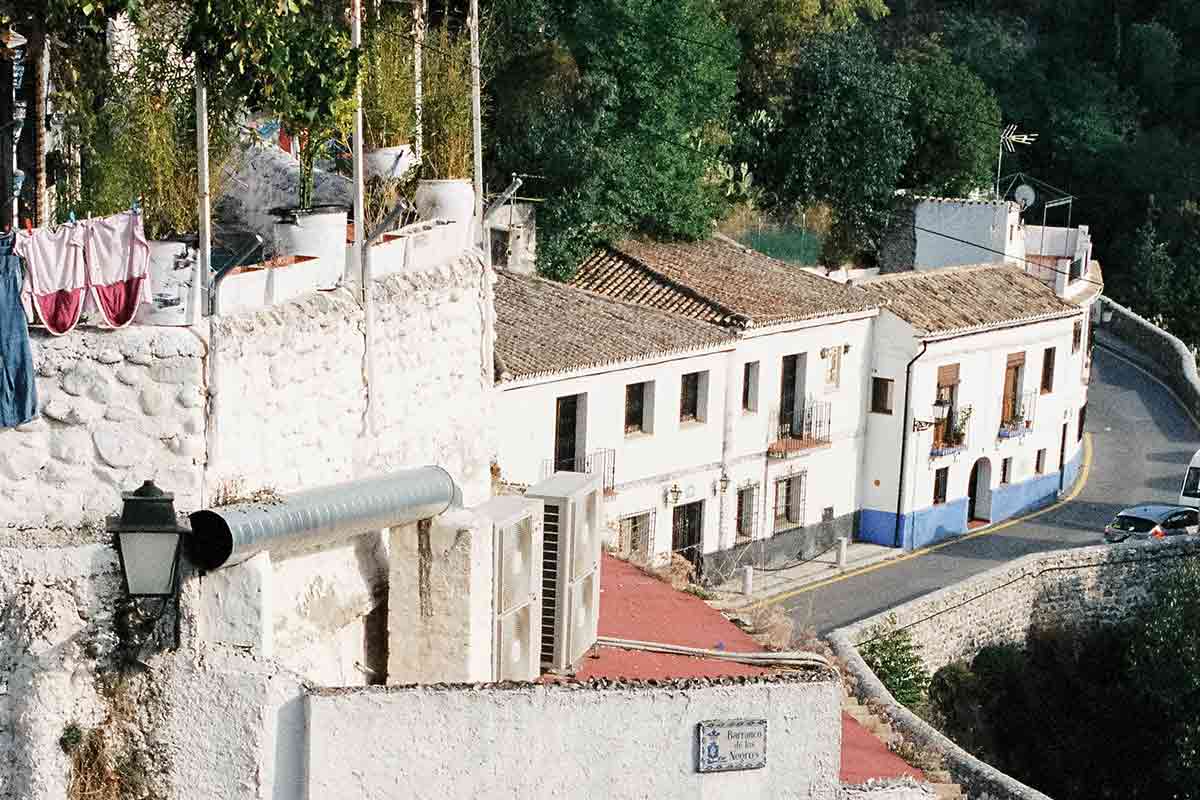
One of the best areas to stay is the Albaicin neighborhood, which is the oldest district and one of the most picturesque. Check out places Shine Albayzín for a typical Granadan stay.
Here you’ll find lively streets filled with tapas bars and markets. Also, the area around the Plaza de Santa Ana is a good place to base yourself.
Córdoba is another beautiful city located in Andalusia. Its best known for the Mezquita Cathedral, which used to be a mosque, however, has since been transformed into a Roman Catholic Church.
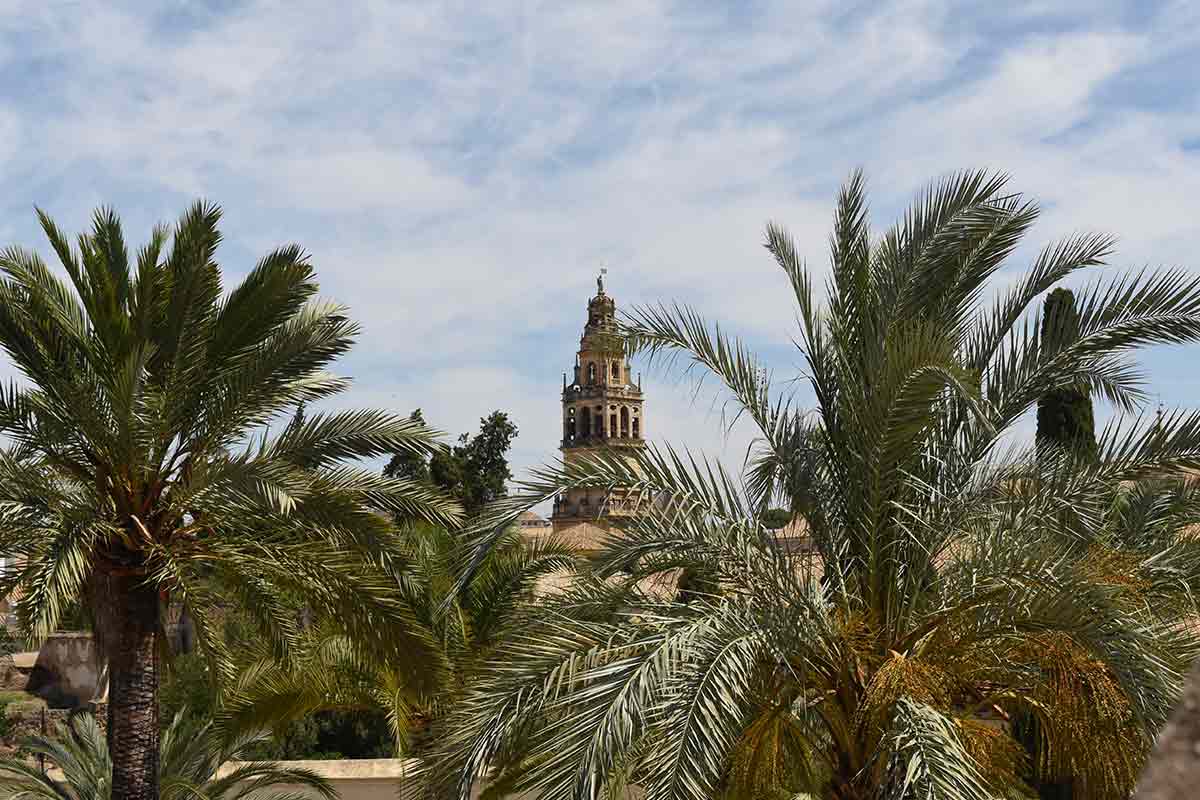
This gem is one of the region’s most popular sights, with its impressive painted columns and half-moon arches that fill the entire complex.
One of the best things to witness here is the glowing effect when the sun shines through the windows into the main hall.
There are also lots more impressive architectural delights to see in this city, which include the Alcázar de Los Reyes Cristianos and its beautiful gardens and fountains.
This royal complex is also home to the largest library in Western Europe.
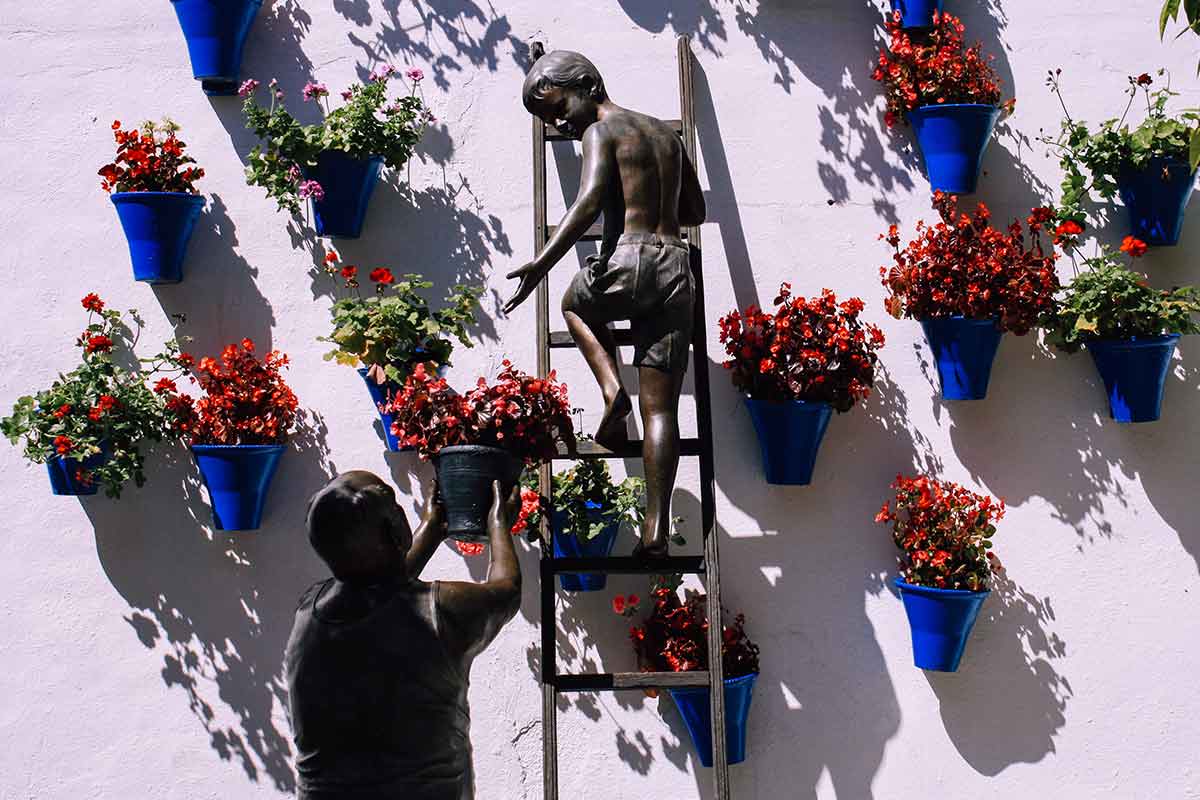
As well as this, the Jewish Historic Quarter is great to wander around with its narrow, mazing streets once thriving as the largest ghetto area of the city.
If you are looking for a place to rest your head, check out La Trinidad Córdoba for a sustainable stay which includes a traditonal breakfast.
Another must-see is the Calahorra Tower which once guarded the city from as early as the 13th century. It also later became a prison and even an all girl’s school, making for an interesting visit when in Córdoba.
The best area to stay in Córdoba has to be Juderia. The Jewish Quarter is great for those who want an authentic feel, and to be surrounded by lots of history, striking architecture, and lively streets.
The capital of the autonomous region of Andalusia, Seville definitely does not disappoint. Known for its searing summer heats and passionate flamenco dancers, this city is a must-visit on any trip to the region.
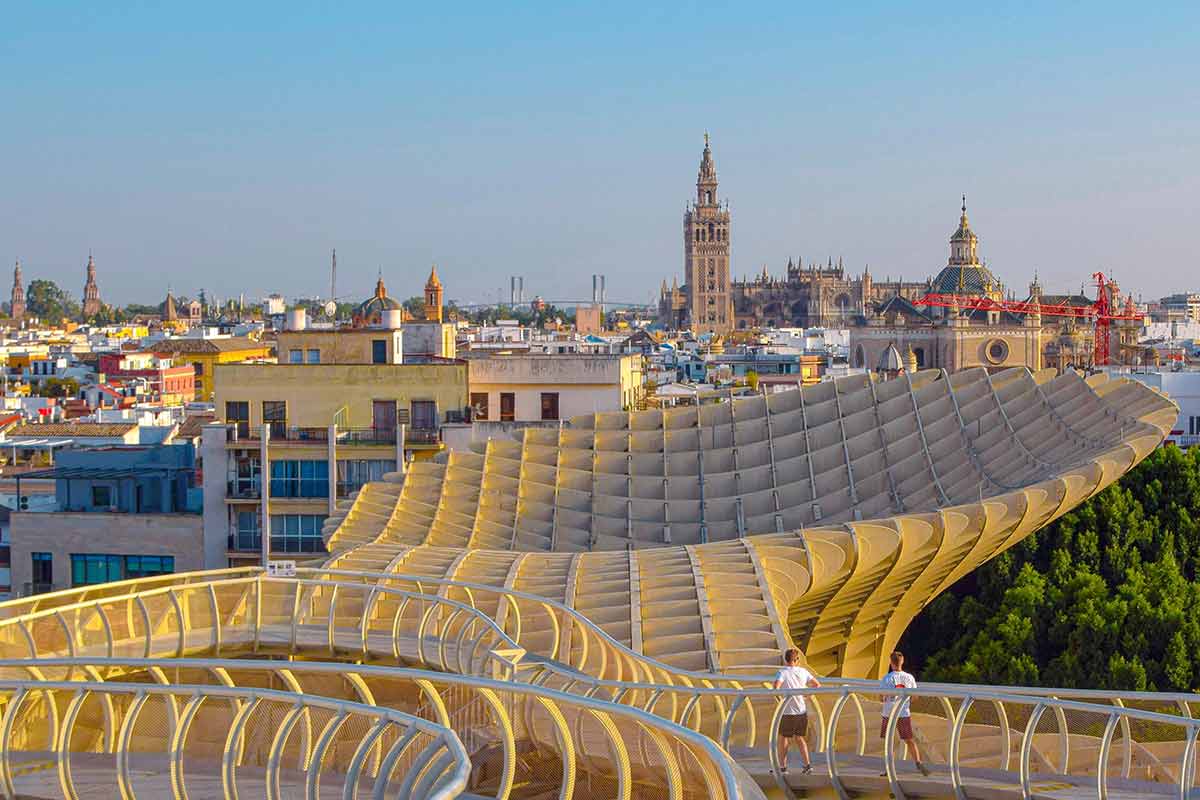
Here there are many top sights to visit. The Cathedral of Seville (along with the Giralda Tower) is one of the top highlights, and with 80 chapels, is the largest cathedral in the World.
It also houses the tomb of Christopher Columbus, and rightfully so is a UNESCO world heritage site. Plaza de España is another must-visit when here, with the massive monument built in 1929.
The curved palace is shaped like a half-moon, and is filled with beautiful azulejos (which are painted tiles native to the region). Check out this guided tour to get a closer look at all these detials.
With its public bicycles and smart city initiatives, Seville is perfect for exploring, with the Guadalquivir river and many plazas great for a stroll.
This is also the best place for seeing a live flamenco show, where spontaneous dances can happen pretty much anywhere at any time.
You can also go to designated venues to watch the dances, which are known as Tablaos .
When in Seville, the best area to base yourself is El Centro , which has most of the popular destinations located nearby. For cheap dorm rooms Black swan hostel is a popular place to stay for budget travelers.
Barrio Santa Cruz is another great area that’s worth visiting and home to Catedral de Santa María de la Sede – the world’s 3rd largest church.
Known as the white city of Spain, Cadiz is an ancient port city located in the south of Spain that is also home to the Spanish Navy.
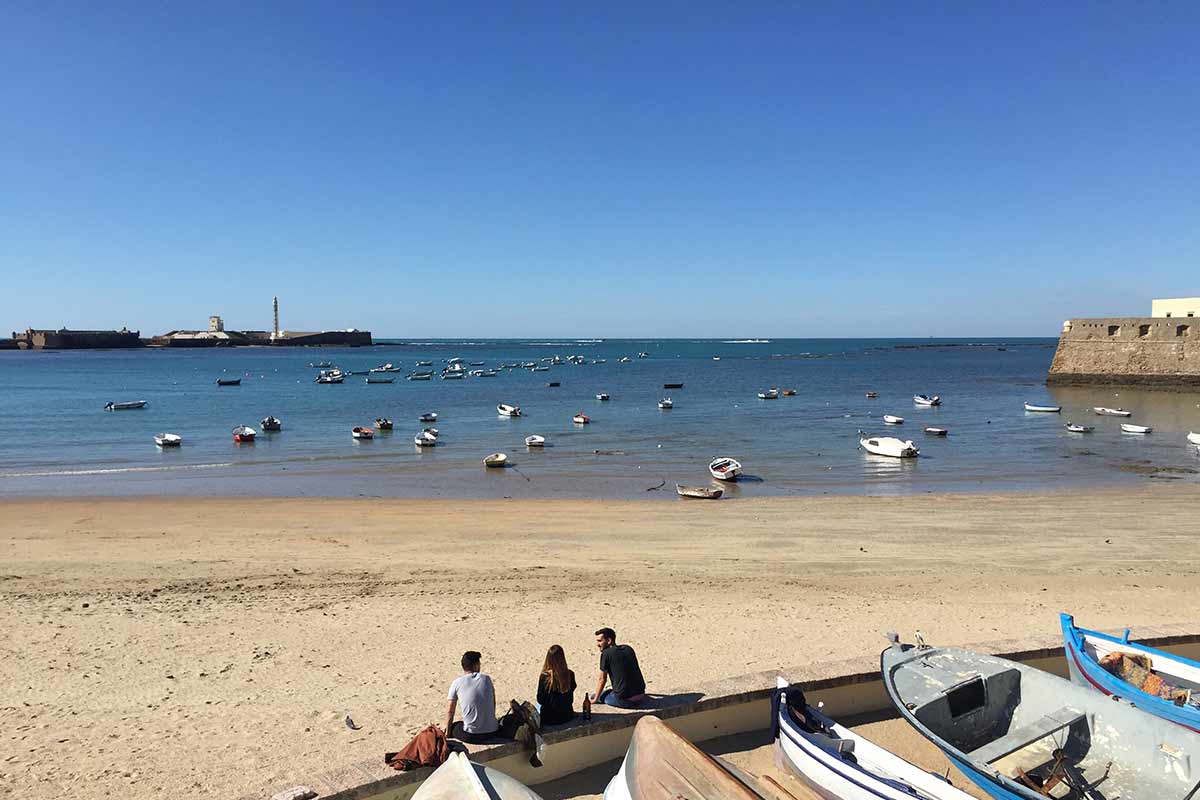
As well as the vast sea of white buildings, this city is known for its equally important architecture. A quick city bike tour reveals all the best facades.
The Torre Tavira is a tower that can be climbed for the best vantage point over the city. Other impressive sights include the cathedral of Cadiz as well as the Castillo de Santa Catalina .
For those who love beach time, then be sure to head to La Caleta (which is the best beach in the city) as well as Las Playas de Caños de Meca .
For those who love fresh seafood and other foods, be sure to head to the Mercado Central where you can try everything from fresh fish and meats to vegetables supplied by local farmers and typical Spanish baked treats.
Cadiz also has many lively plazas and dozens of watchtowers that line the coast, which gives the city a unique presence in Spain and makes it feel very similar to coastal cities in South America such as Cartagena.
When heading to Cadiz, be sure to stay in the Old Town. Not only is it home to the must-visit Torre Tavira; there are also many quaint plazas here such as Plaza San Antonio and Plaza de Mina .
Andalusia Travel Tips

See our list of travel tips to take with you:
- We first recommend taking advantage of public transportation. You can use the train to get between major destinations, running from Malaga in the east to Seville in the west. You can then also use public buses to get to the further afar and smaller towns.
- Secondly, consider visiting during some of Andalusia’s festivals. This region is known for some extraordinary events such as the Cruces de Mayo (held in early May) and the Feria de Seville (in April).
- If you decide to rent a car in Andalusia you’ll find it easier to travel outside of these bigger cities and more frequented tourist areas.
- A visit during these times promises a rich cultural experience and a better look into the values and heritage of the Andalusian people.
- The cities suggested and landmarks we have suggested above are designed for you to see some of the regions most popular places!
- Remember to get your FREE travel insurance quote from SafetyWing to receive fully comprehensive support when it comes to unforeseen travel complications.
- If you are traveling alone, be sure to ‘always’ carry your cell phone along with you, if you have one that is. Even if you are just popping out of your hotel to go to the shops.
- Try to carry cash and items of value with you at all time in a front or inside pocket, you’ll find Pacsafe make some great bags/backpacks for traveling around with valuables.
Best Time to Visit Andalusia
Andalusia is known for its hot summers, where temps can often become unbearable at times. During the summer, it’s not unusual for daytime temps to exceed 104°F, especially in the cities of Granada and Seville.
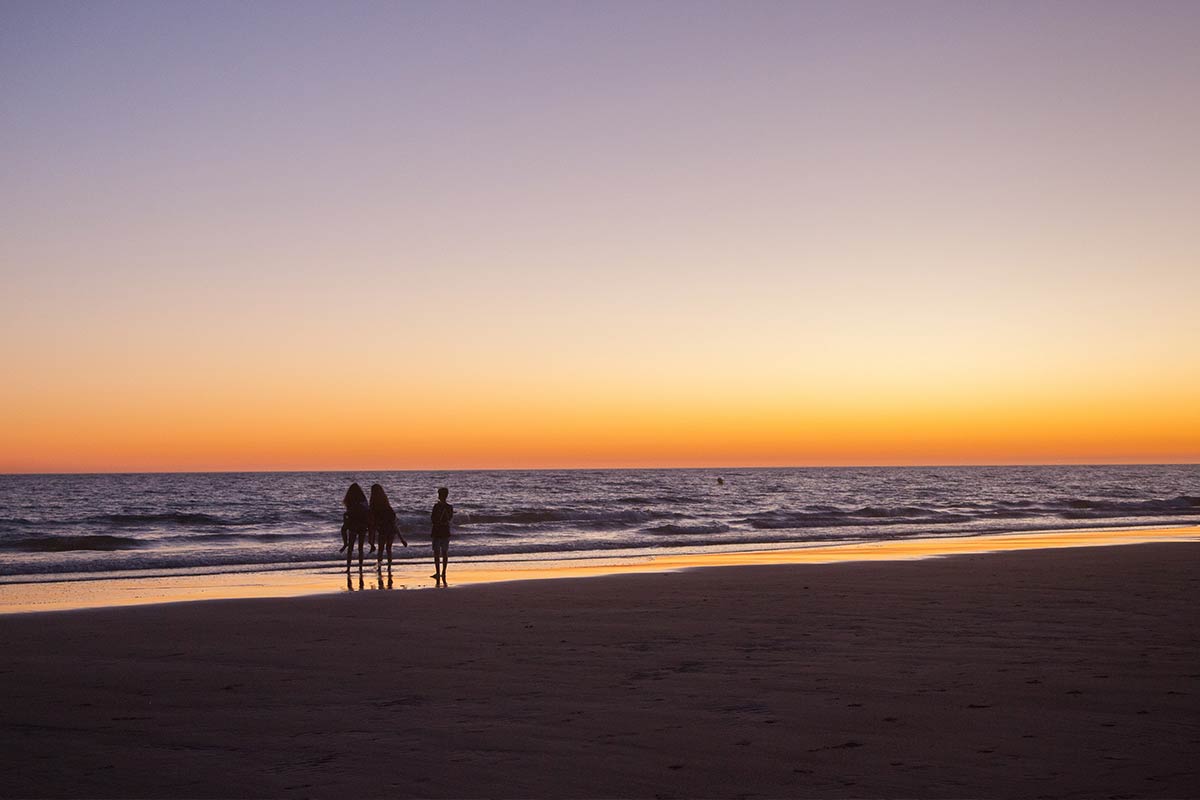
As mentioned earlier, the best time to visit for warm temperatures and a stable climate is the shoulder months of April-May / September-October.
For example in Seville, these months have average daily temps of between 64-75°F. The nights are cool and bearable compared to the hot nights during the summer.
During the summer, average temps in Seville range from 84-90°F. Whilst this sounds nice and warm, due to the city being located far inland, temperatures often feel hotter than they show.
If going in the height of the summer season, be prepared that temps can and do often rise above 104°F. So make sure you take lots of sunscreens and avoid heading out in the sun during midday.
The winter months are also popular with those traveling during the Christmas break, although a lot less visited than during the summer.
Average temps in Seville range from 52-59°F, which is a lot cooler and even sometimes chilly.
7 days in Andalusia Itinerary
As well as things to do you should have an idea of which places are integral to include in your Andalusia itinerary.
Is this all you can do in the region? Absolutely not!
There’s much more to see in the region and we guarantee that Andalusia will surprise you and make you want to revisit time and time again.
Andalusia is full of hidden gems, with everything from quaint mountain top villages, palaces, castles, and rustic shops to cafès and beaches.
Get lost exploring and get acquainted with the Andalusian culture.
Also, be sure to follow some of our sustainable travel tips to ensure that your trip has a positive impact on the local environment.
This post contains affiliate links, meaning, if you click through and make a purchase or sign up for a program, we may earn a commission. This is at no additional cost to you.
Sharing is caring!
Recent Posts
- How to get from Treviso Airport to Venice
- How to get from Verona to Lake Garda
- Marco Polo Airport to Venice
- Is Guadalajara safe?
- Living Abroad
- Sustainability
- Travel Blog
Privacy Overview

50 Top Things to do in Andalucia for 1st Time Visitors
By Author Paulina
Posted on Published: October 14, 2020 - Last updated: January 16, 2023
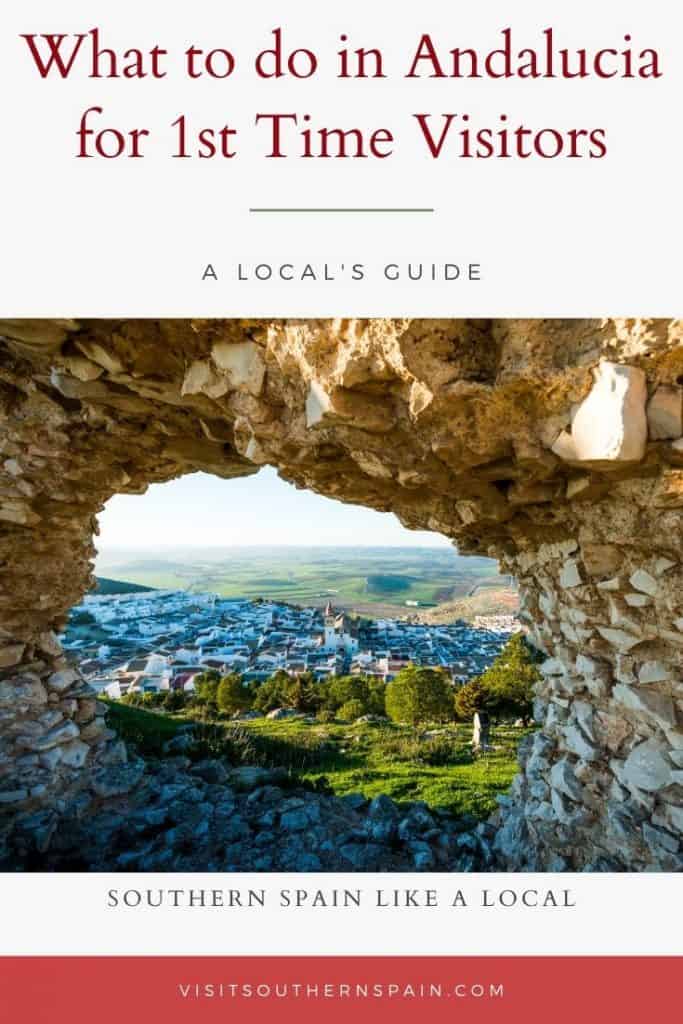
An Essential Guide to the Best Things to do in Andalucia and the best places to visit in Andalucia
Spain is not only one of the most coveted travel destinations in the world, but also one of the most varied. The north and the south strongly differ from each other and every “autonomous community” has its very particular background, culture, and identity.
After living roughly 5 years in Spain , I still can’t decide which part of the Iberian peninsula is my favorite.
The region I probably visited the most and that I have the deepest knowledge (and passion) for, is clearly Andalucia. No other part of Spain has this intriguing mix of cross-cultural heritage, art, nature, and passion.
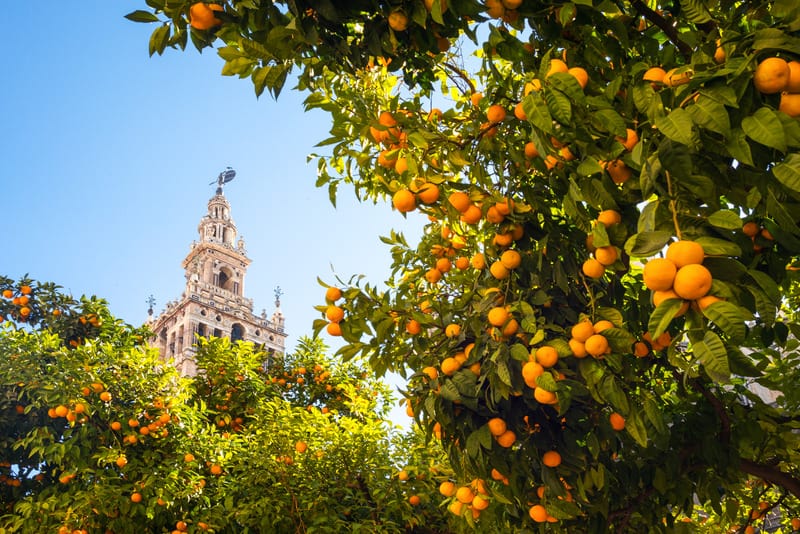
This essential guide on things to in Andalucia goes especially to first-time visitors and includes Andalucia’s most important and beautiful places to visit in Andalucia , Spain.
You, dear reader, support this blog. If you purchase through a link, we earn a small commission. As an Amazon Affiliate, we earn from qualifying purchases.
Short Cultural Background Information
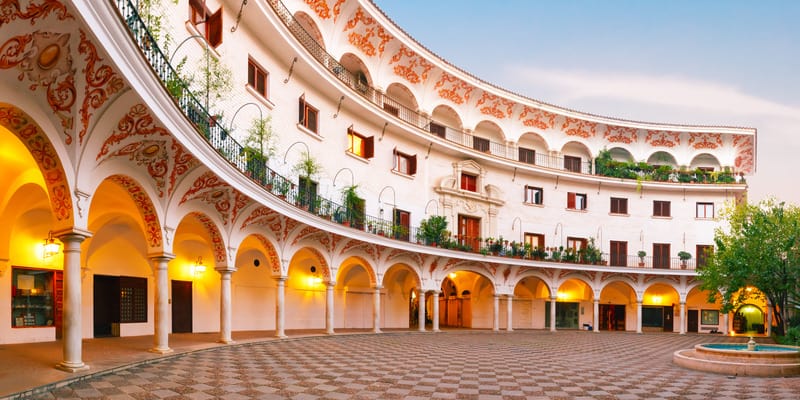
Located in the south of the Iberian peninsula, the Andalusian territory is divided into 8 provinces : the capital Seville , Cádiz , Cordoba , Granada , Huelva , Jaen , Almeria , and Malaga .
On this site, we also write about Murcia region since it’s part of the geographic area too.
Due to its geographic location between the north of the Mediterranean Sea and the Atlantic Ocean, Andalucia boasts several microclimates and a wide range of activities and leisure options based on the sea.
But Andalucia is not all about oceans and the sea. The region boasts several mountain chains such as the Sierra Morena, Sierra Nevada, Axarquia or the Sierra Madrona .
The Mediterranean coast near Granada and Malaga boasts a lot of cliffs and unique rock formations like El Torcal near Antequera or El Chorro near Malaga.
In case you’re visiting Andalucia for the first time, you can’t miss this Essential Guide on Things To Do in Andalucia, Spain, the guide to the best hotels in Andalucia for every budget and of course, the best Spanish souvenirs from Andalucia.
1. Things to do in Andalusia: Seville
Seville , the capital of Andalusia, is a must when visiting the South of Spain.
Set on the emblematic Guadalquivir river, Sevilla boasts one of the most impressive Morrish and cultural heritage in entire Andalucia. It also used to be one of the richest towns in Spain, as its port was a commercial hub for all the boats arriving from las Americas .
At that time Seville had the monopoly of foreign trade in the world. Still, nowadays its former wealth and economic activity are palpable in many corners of the town.
For me, the best part of Seville is getting lost in its narrow streets and admire the rich heritage of almost every building that you come across in the old city center.
Sevillians are very proud of their town and will not be afraid to say that Sevilla es una maravilla, Seville is marvelous. I took them up on those words and definitely think Seville is one of the top places to visit in Andalucia.
The popular neighborhood of Triana is said to be the birthplace of flamenco. Several schools are offering introductory courses or restaurants have specialized on flamenco shows joined by a traditional Andalusian meal.
Related: 3 Day Itinerary for Seville
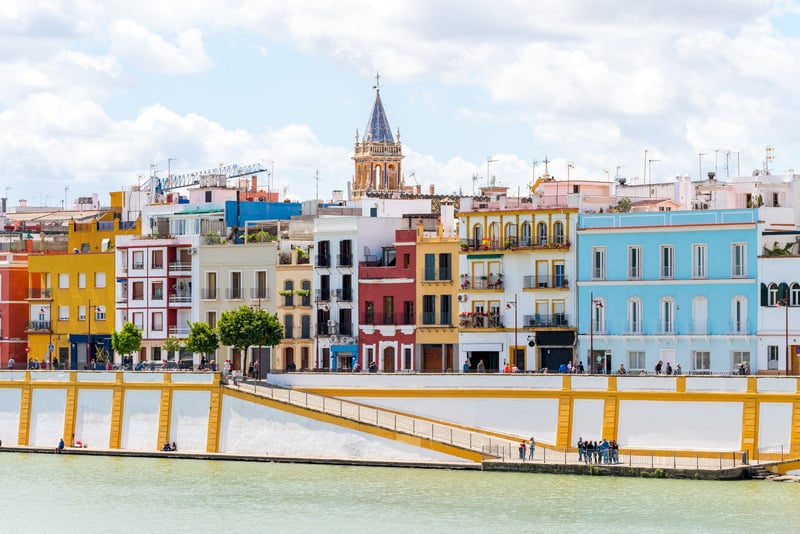
Things To Do in Andalucia – Seville
Must-Visit Places:
Visit the Cathedral + Tower Skip-the-Line Alcázar Guided Tour 1-Hour Walking Tour Barrio de Santa Cruz 2-Hour Seville Panoramic Walking Tour
Experience Seville in a different way:
Guadalquivir 1-Hour Cruise Kayaking Tour Tapas Tour Across the River in Triana
Experience Seville’s culture:
Flamenco Dance Museum – Show 1-Hour Flamenco Dance Lesson Tapas Cooking Class
Best Day Trips from Seville
Day Trip Pueblos Blancos from Seville Doñana National Park Off-Road Tour Day Trip from Seville to Ronda
Insider and off-the-beaten track:
Kingdom of Dorne Game of Thrones Tour Seville from the Rooftops Spanish Cooking Class & Triana Market Tour
2. Things to do in Andalusia: Malaga
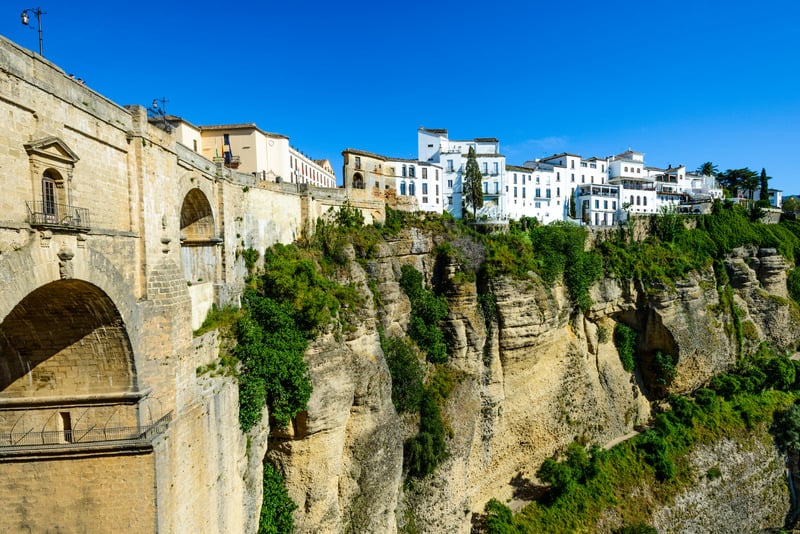
Located on the famous Costa del Sol, Malaga is the southernmost large city in Europe . The town boasts of one of the best climates in Europe all year round and is the birthplace of the legendary Pablo Picasso and actor Antonio Banderas.
If you’d like me to describe the vibe of Malaga in comparison to Seville, I think that Seville is all about pride of the Andalusian identity and culture, whereas Malaga has been more “open” to foreign influences due to the long history of its port.
In general, the atmosphere is very lively and people are extremely warm-hearted . It will be so easy to feel at home in Malaga.
Even though Malaga and its adjacent Costa del Sol are internationally known for its top-quality golf courses and sandy beaches , the port town boasts an impressive cultural heritage such as the Moorish fortress, the Roman theatre, and many prestigious museums ( Thyssen, Picasso Museum, Centre Pompidou and many more…).
Malaga itself is a perfect destination for a city trip but also the perfect base to explore the beautiful surroundings of Costa del Sol and the mountainous backcountry.
In this area, there are some amazing and unusual things to do in Andalucia. One of these is the Caminito del Rey, the most dangerous trail in the world!
Malaga is also the home to some of the best lakes in Andalucia that you should not skip when visiting Southern Spain.
Related: 3-Day Itinerary for Malaga , 20 Free Things to do in Malaga , 17 Best Hiking Trails near Malaga
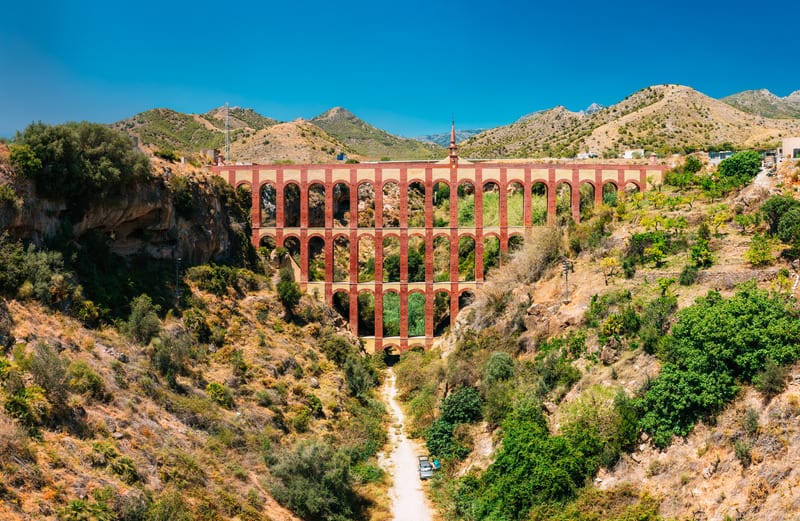
Things To Do in Andalucia – Malaga
Must Visit Places in Malaga
Picasso Birthplace Museum Centre Pompidou Roman Theatre and Alcazaba Guided Tour
Experience Malaga in a different way:
Evening Wine and Tapas Tour Traditional Andalusian Bath and Ritual Paella Cooking Class
Flamenco in Malaga:
Kelipé Flamenco Show
Best Day Trips from Malaga:
Caminito del Rey Path: Full-Day Tour Day Trip to Gibraltar One Day Trip Ronda Frigiliana and Nerja Tour Full-Day Tangier Tour by Ferry
Related: best day trips from Malaga
Insider and off-the-beaten-track:
Antequera: Private Tour 3-Hour Private Sightseeing Treasure Hunt Hammam: Bath and Relaxing Massage
3. Things to do in Andalusia: Granada
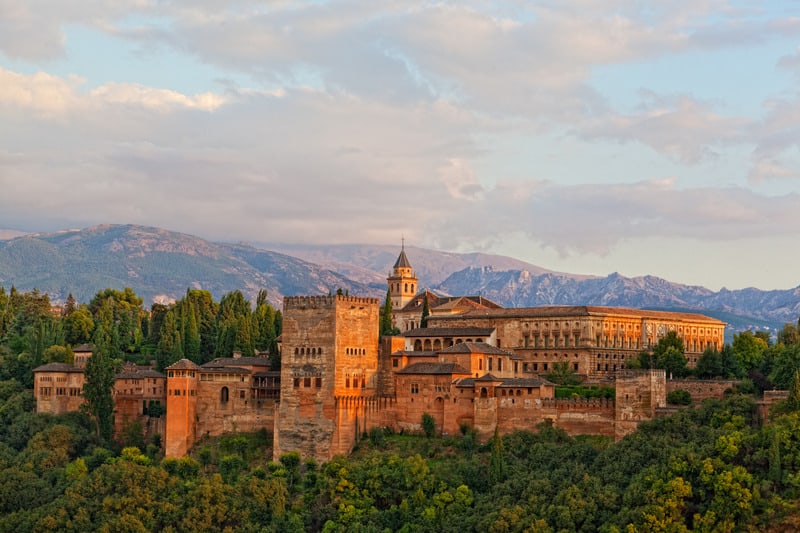
Granada, also known as the Moorish pearl, is an absolute must-go place to visit in Andalucia. Hardly any other Andalusian town has such a rich and varied cultural heritage as the former capital of the Moorish Al-Andalus empire.
Indeed Granada combines the cultural heritage of the Arab legacy, Jewish influence with Renaissance architectural gems .
From all the Andalusian cities, the Moorish influence is the most palpable in Granada. This is probably due to the fact that Granada was the last town to be conquered by the Spanish Catholic Kings.
If you visit Calle Elvira in the historic city center with its numerous Arab inspired tea shops, leather shops etc., you’ll think for a second, you’re in Morocco.
The most prominent attraction of Granada is without any doubt the Alhambra and the Generalife .
The most beautiful part of the Alhambra, the Nasrid Royal Palaces, has limited access, so you need to make sure to book your tickets days in advance to visit this gem. This should surely be on your top things to do in Andalucia.
The Albaicín neighborhood, together with the Generalife gardens and Alhambra, holds the UNESCO heritage label and spreads out on yet another hill of Granada.
The neighborhood seems to be lost in time of the Moorish Medival times and offers some of the most spectacular views on the Alhambra and the Sierra Nevada peaks (like at the Mirador St. Nicolas).
Another neighborhood worth visiting and a gorgeous place to visit in Andalucia, Spain, is the Sacromonte area. It used to be inhabited mostly by gypsies living in cave-homes and was one of the poorest quarters in Granada.
Nowadays the former cave-houses have been turned into restaurants and bars offering some of the most unique Flamenco experiences in town.
You can’t miss visiting the ultimate wellness place in Granada: the Al-Andalus Hammam .
19 Best Castles in Andalucia worth visiting
3-Day Itinerary Granada
15 best Sierra Nevada hotels
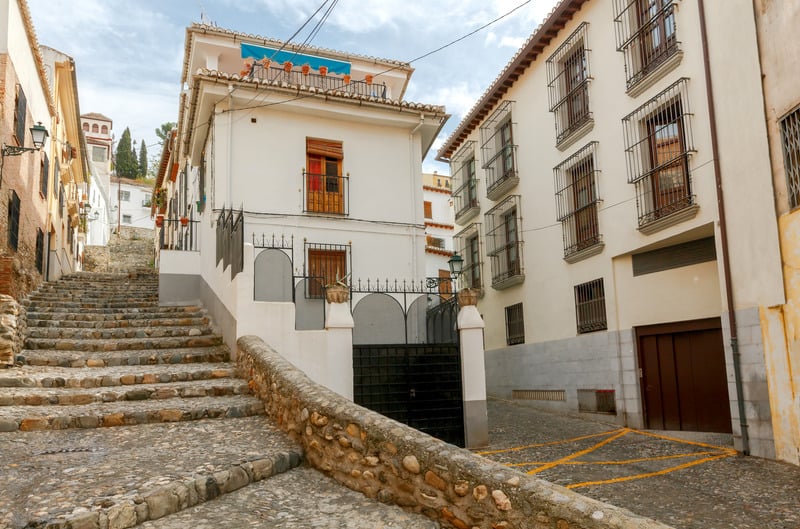
Things To Do in Andalucia – Granada
Must Visit Places in Granada:
Alhambra and Nasrid Palaces: Guided Tour + Skip The Line Albaicín and Sacromonte 2.5-Hour Walking Tour Cathedral Tour
Experience Granada in a different way:
Sacromonte Caves Museum Hammam Al Ándalus with Optional Massage Walking Food Tour
Flamenco in Granada:
Sacromonte: Flamenco Show at Cuevas Los Tarantos Tickets Flamenco Show at Jardines de Zoraya + Dinner
Best Day Trips from Granada:
Sierra Nevada Privat 4WD Safari Tropical Coast and Caves of Nerja Day Tour Caminito Del Rey Úbeda and Baeza Tour
Insider and off-the-beaten-track trips from Granada:
Full-Day Tour of Sierra Nevada Mountains Las Alpujarras Full-Day Tour
Read more about my experience in Guadix, the emblematic cave quarter and desert
4. Things to do in Andalusia: Cadiz
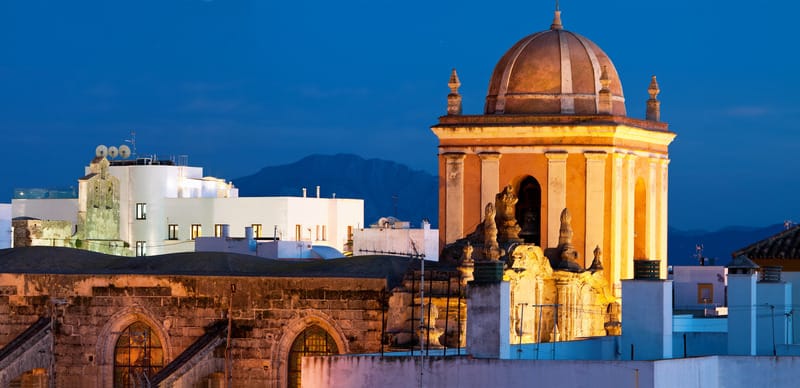
Even though Cadiz is less known as other Andalusian gems, the southernmost province of Andalucia is probably my favorite.
Cadiz has the virgin, endless beaches, lush green mountains, vibrant culture and history, sherry, bull breeding, white villages …
Did I forget anything? Maybe the super delicious seafood tapas? This makes it one of the best places with so many things to do in south Spain.
Did you know that Cadiz is the oldest city in Western Europe ? It was founded 3000 years ago and Cadiz’ role in Spanish history was vital.
Besides flamenco, delicious regional tapas, the province of Cadiz is particularly coveted among nature lovers.
Is there anything better than touring the Natural Park of Doñana or enjoying a kitesurf lesson in Tarifa with the views on the African continent? Or exploring the famous dunes of Bolonia?
Related: 3 Days in Cadiz
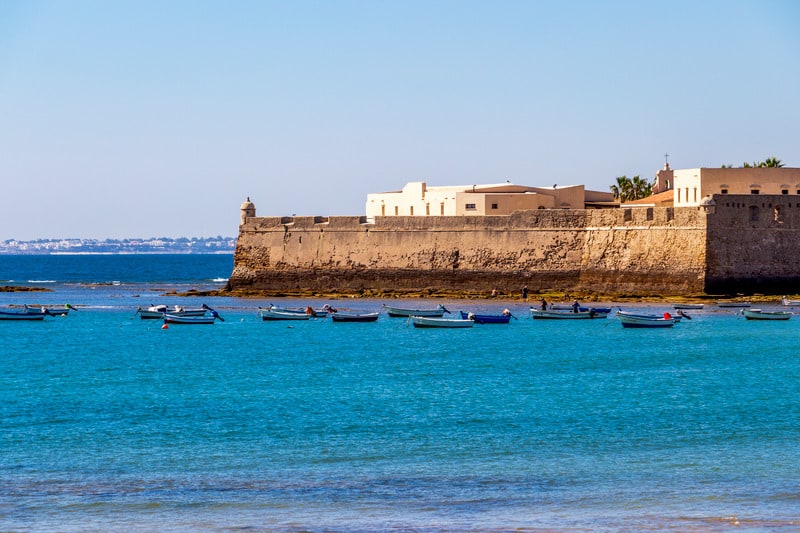
Things To Do in Andalucia – Cadiz
Must Visit Places in Cadiz:
Hop-on Hop-Off Tour Guided City Tour
Experience Cadiz in a different way:
Guided Bike Tour 3-Hour Tapas Tour
Best Day Trips from Cadiz:
Private Trip to Jerez with Winery & Horse Show Private Day Trip to Gibraltar and Bolonia Private Day Trip to Vejer de la Frontera & Bolonia
Best Day Trips from Cadiz for Nature Lovers:
Yeguada de la Cartuja Carthusian Horses Tour Doñana Natural Park & Sanlucar Private Day Trip
Insider and off-the-beaten track tips:
Horseback Riding at Natural Park & Private Tour Caminito del Rey: Private Day Hiking Trip
5. Things to do in Andalusia: Cordoba
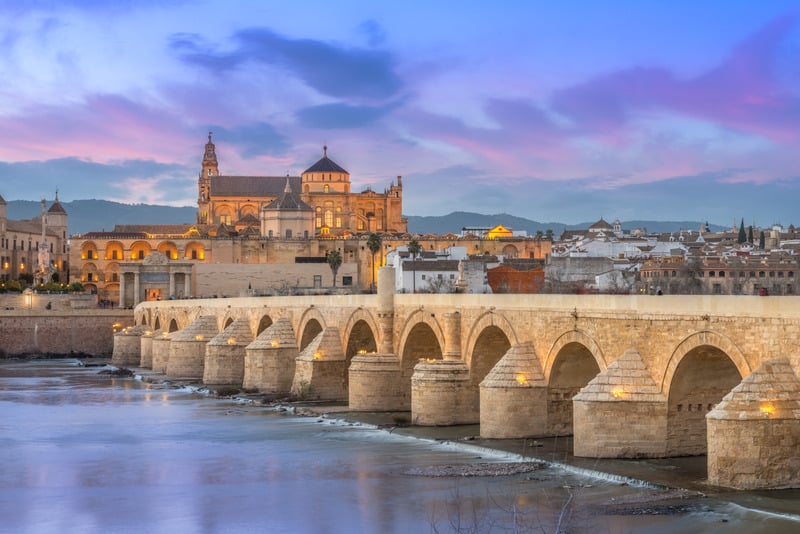
Cordoba can’t be missing on any Andalusian itinerary. As UNESCO World Heritage town, Cordoba boasts a unique cultural and historical value that can be hardly found in any other town.
When Cordoba was capital of the Umayyad Caliphate , it attracted many intellectuals and cultivated science and knowledge. That’s how emblematic figures like Seneca, Maimonides and Averroes arose in Cordoba.
Nowadays Cordoba is mostly famous for its Great Mosque-Cathedral, a symbol of the town. The almost 1000 pillars inside the mosque, built on a Visigoth cathedral, create the famous “ Forest of Columns ”.
After the Reconquista , a Gothic cathedral was built inside the mosque. A visit of Cordoba’s mosque will definitely leave you in awe.
But Cordoba is not only famous for its Moorish heritage, but also for the Jewish quarter with its narrow streets and white-washed house fronts. The patios , the interior courtyards of these quaint houses are yet another attraction of Cordoba.
Each year the famous Patio Festival is held, during which neighbors decorate them with the most colorful flowers.
- 3 Days in Cordoba
- How to celebrate Semana Santa in Spain
- 22 Best Festivals in Andalucia
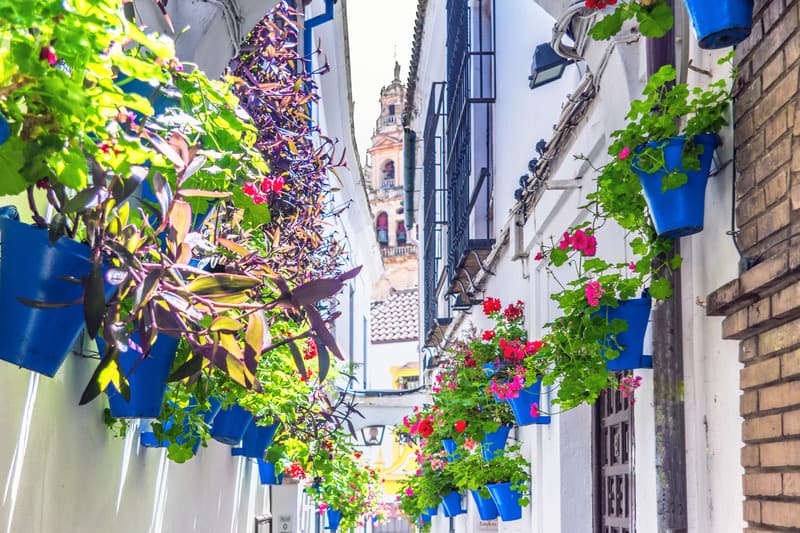
Things To Do in Andalucia – Cordoba
Must Visit Places in Cordoba:
Mosque-Cathedral: Skip-The-Line Guided Tour Complete 4-Hour Tour Jewish Quarter: Guided Tour with Skip-The-Line Tickets
Experience Cordoba in a different way:
2-Hour Small Group Walking Tour at Nightfall 3-Hour Terrace & Local Tapas Gastronomic Tour Patios Walking Tour
Flamenco in Cordoba:
Flamenco Show at the Arabian Baths
Best Day Trip from Cordoba:
Medina Azahara: Guided Tour
Olive Oil Mill and Wine Region Tour Viana Patios
6. Things to do in Andalusia: Almeria
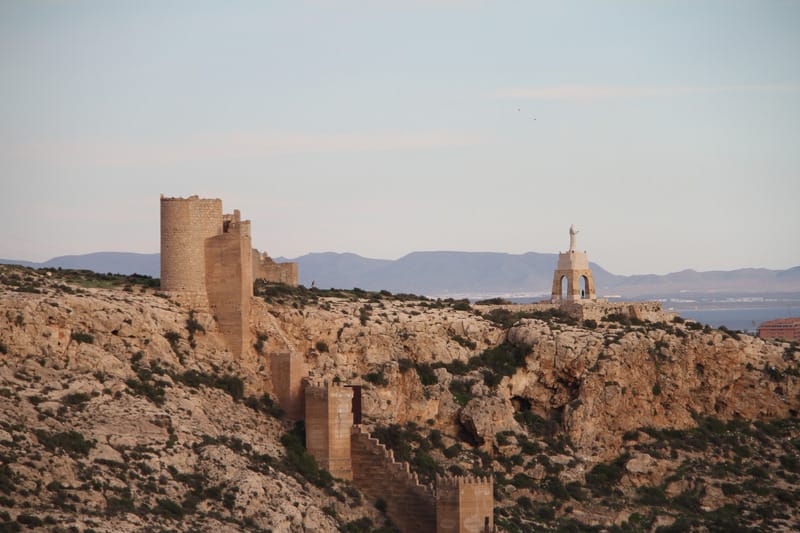
Located in the southeast of the Iberian peninsula, Almería is skipped by many Andalucia travelers. They don’t know what they are missing!
Indeed the landscapes of Almería are some of the most contrasting that you can find in entire Andalucia and it definitely worth it’s place on your ‘best things to do in Andalucia’ list.
On its limited size, the province of Almería boasts the most fertile agricultural area in entire Europe , the desert of Las Tabernas was used as a movie set for several Western – Cowboy movies whereas the 200 km of Mediterranean coastline is only at a stone’s throw away.
You shouldn’t miss the film studios of the Tabernas desert and the vibe of Almería capital, with its lively terraces, market, and museums.
My favorite part of Almería is the natural reserve of Cabo de Gata-Nijar, with its virgin beaches and off-the-beaten, alternative track vibe .
It has become a very popular destination for campers and travelers looking for the “unspoiled” things to see and do in Andalucia.
Read: Things to do in Almeria
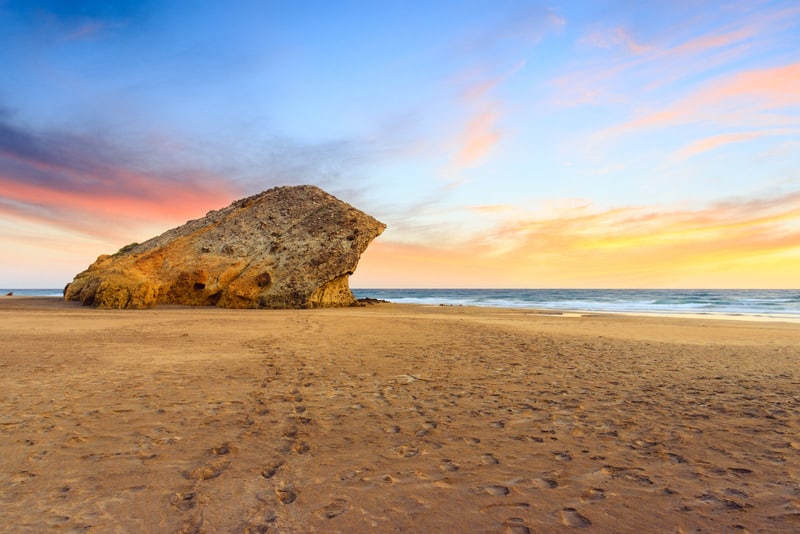
Things To Do in Andalucia – Almeria
Must Visit Places in Almeria:
Like a Local: Customized Private Tour Alcazaba Guided Tour
Experience Almeria in a different way:
Cabo de Gata: Boat Tour to 5 Coves Full-Day Western Theme Park Tour of Mini Hollywood (Oasys)
Best Day Trips from Almeria:
Full-day Tour of Sierra Nevada Mountains Day Trip to Cabo de Gata-Nijar Natural Park
Things to do in Almeria for Natur Lovers:
4×4 Tour of Cabo de Gata-Nijar Natural Park Cabo de Gata: Kayaking and Swimming Excursion Giant Geode and Pulpí Mine Guided Tour
Camel Ride and Visit Camel Farm
7. Things to do in Andalusia: Huelva
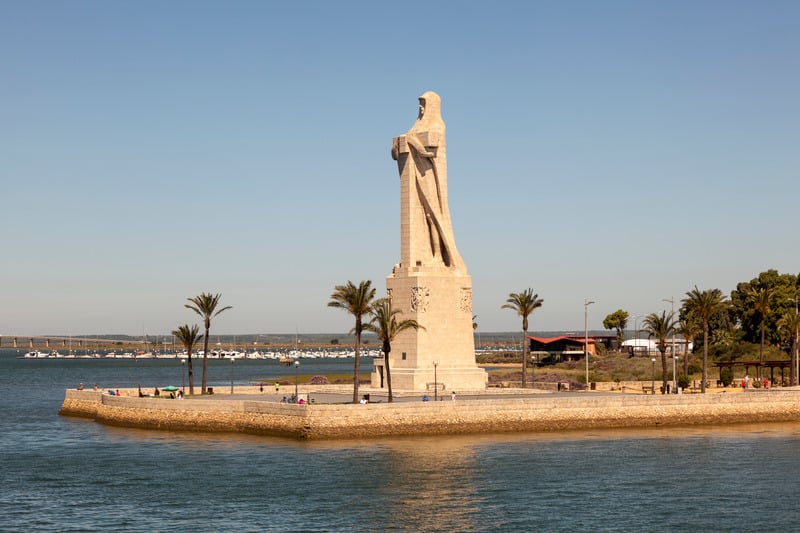
Huelva is probably not the most visited province in Andalusia, speaking in terms of international tourism, however, the province holds some of the most beautiful and virgin beaches of Andalucia .
On the shores of the Atlantic Ocean, also known as Costa de la Luz (Coast of Light), you’ll explore traditional fishermen villages, endless virgin beaches, and typical Mediterranean landscapes.
The province of Huelva is particularly known for its legacy to Christopher Columbus . In case you’d like to visit the sites of Columbus’ epic exploration, make sure to visit Palos de la Frontera from where Columbus departed to discover the Americas.
Still, nowadays you can still replicas of the 3 ships that crossed the Atlantic Ocean.
The famous Iberian Jabugo ham comes from the province of Huelva and might be a very interesting day trip to do or to the most important religious site in Andalucia: El Rocio.
Sharing borders with Portugal, you can easily opt for a day trip to Portugal or even enjoy the first cross-border zipline in the world. This is one of the things can only do in Andalucia.
Read: 3 Day Itinerary for Huelva
8. Things to do in Andalusia: Jaen
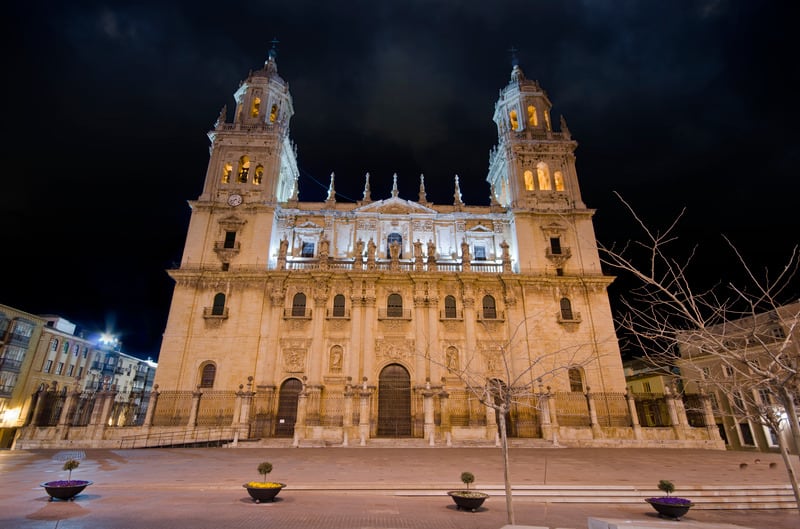
Jaen is probably the less-visited province in comparison to all the others. During summer, the town and the entire province can become incredibly hot, that’s why travelers often opt for the beaches of Costa del Sol.
Jaen is famous for being the home of the coveted Spanish virgin olive oil. Once you enter the province of Jaen, you’ll be surrounded only by olive groves for many kilometers.
The cultural attraction of the province are its capital Jaen with a gorgeous cathedral, the World Heritage site towns of Ubeda and Baeza and several castles.
Jaen is also a coveted destination for hiking and outdoor lovers as the province boasts 4 natural reserves and a mountain area with a rich fauna with some great things to do in Andalusia, Spain.
Related: Things to do in Jaen
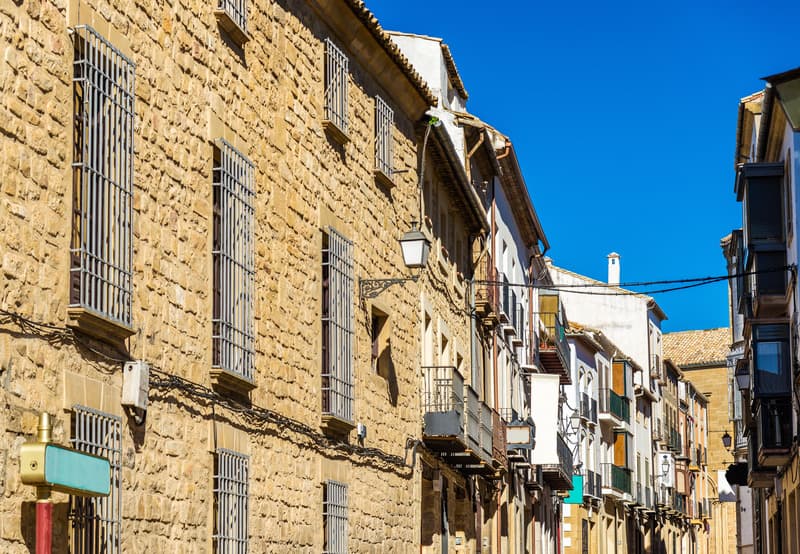
Things To Do in Andalusia – Jaen
Jaén 2.5-Hour Tour: Cathedral, Arabs Baths and Old City Úbeda and Baeza Tour Private Olive Grove walk and Oil tasting
See Jaén in a different way:
Jaen Prehistoric Rock Paintings Private Tour Jaen Tasty Tapas Tour
Jaen for Outdoor Lovers:
Veleta Peak hiking at 3398 meters altitude
Short FAQ about what to do in Andalusia
Why is andalusian cultural heritage unique.
The cross-cultural heritage is probably the ingredient that adds a lot to Andalusia’s attractiveness. The name “Andalucia” comes from the Arabic word “Al-Andalus”, who reigned Andalucia for almost a century.
The Moorish legacy is still visible and palpable in every Andalusian corner.
Besides the Arabs, Andalucia’s culture and history has been influenced by the Phoenicians, the Greeks, the Romans, the Vandals, Hews and North Iberians that settled in the area after the Reconquista .
What makes Andalusia different from the rest of Spain?
Compared to the rest of Spain, Andalucia is a traditionally agricultural region relying strongly on the tourism sector. The strong identity and the regional pride on Andalucia’s rich culture including flamenco, Moorish architecture, to some extent, bullfighting, wine production and gastronomy make Andalucia a vibrant destination to visit.
Many of the mentioned cultural phenomenons are often perceived as typically Spanish, their origins, however, are entirely Andalusian.
What’s the best time to visit Andalucia?
The best time to visit Andalucia, in my humble opinion, is probably in spring and autumn. The temperatures are still mildly warm and cities and beaches are less crowded.
If you plan to visit in the summer months (June, July, September), I recommend staying along the coast as the Andalusian back-country is one of the hottest regions in Europe.
Map of Things To Do in Andalucia
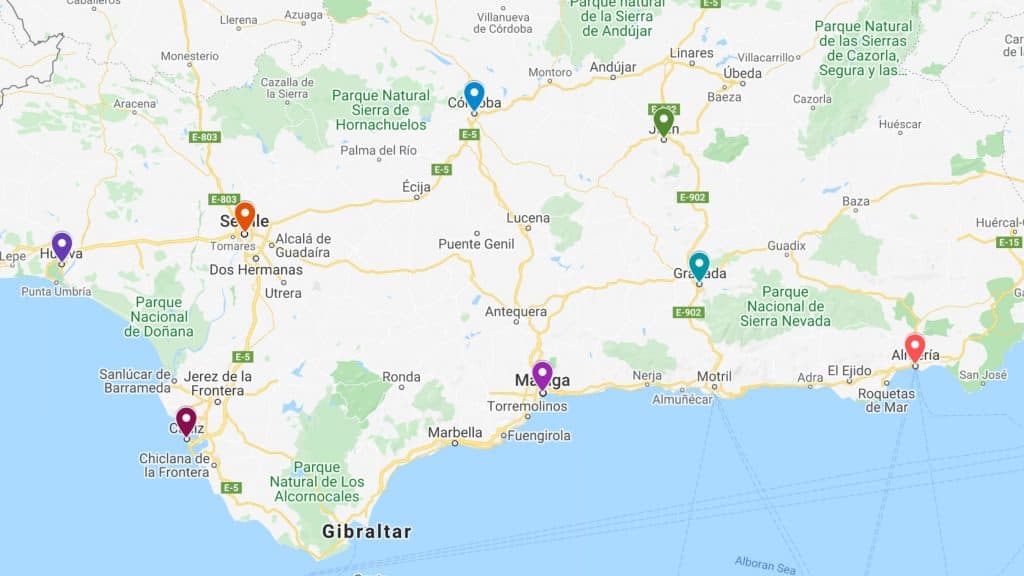
I hope this article helps to plan your perfect stay in beautiful Andalucia.
You still have doubts? Please do not hesitate to contact me , I am sure there is the perfect activity or day trip in Andalucia that perfectly meets your needs.
Have you already been in Andalucia? I would love to hear about your favorite things to do.
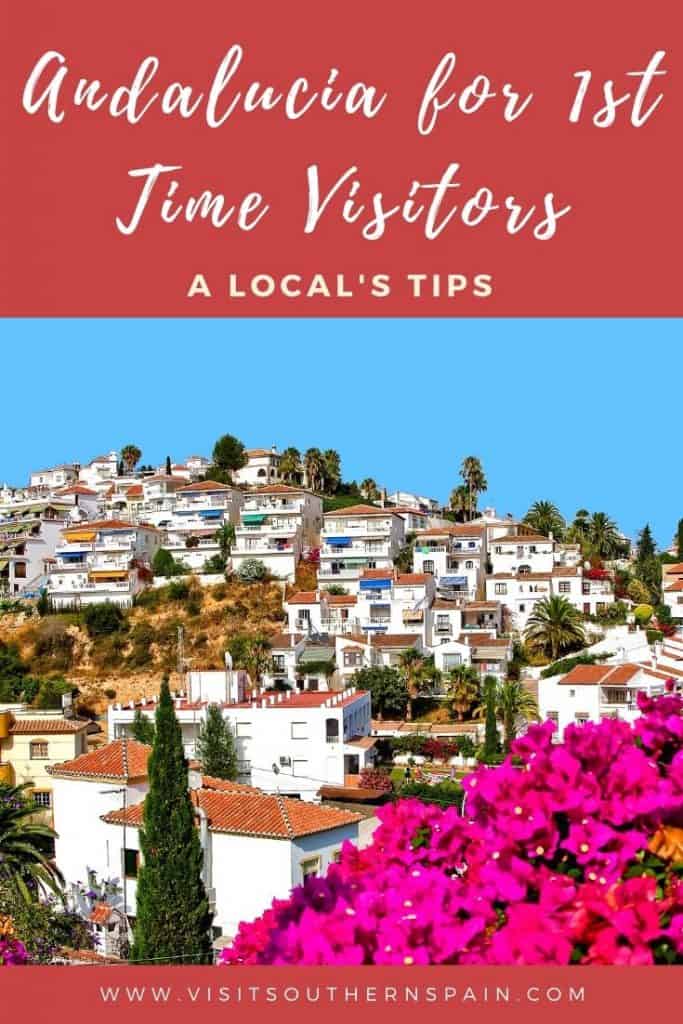
Hola, I’m Paulina! Together with my team, we are passionate about Southern Spain. Here we share all you need to know for great times in Southern Spain with the best places to visit, stay and, of course, the best food to eat.
Let’s dive in and explore Southern Spain’s outdoors, food and culture con pasión!
Andalusia Travel Guide
Book your individual trip , stress-free with local travel experts
Select Month
- roughguides.com
- Travel guide
- Itineraries
- Local Experts
- Travel Advice
- Accommodation
Plan your tailor-made trip with a local expert
Book securely with money-back guarantee
Travel stress-free with local assistance and 24/7 support
Maureen C, USA
The hotels were fabulous and we were greeted and treated with care. The itinerary proved outstanding. The drivers were wonderful. He was always on time, ma...
The popular image of Spain as a land of bullfights, flamenco, sherry and ruined castles derives from Andalucía (Andalusia), the southernmost territory and the most quintessentially Spanish part of the Iberian Peninsula. Above all, it’s the great Moorish monuments that compete for your attention here. The Moors, a mixed race of Berbers and Arabs who crossed into Spain from Morocco and North Africa, occupied al-Andalus for over seven centuries. Their first forces landed at Tarifa in 710 AD, and within four years they had conquered virtually the entire country; their last kingdom, Granada , fell to the Christian Reconquest in 1492. Between these dates, they developed the most sophisticated civilization of the Middle Ages, centred in turn on the three major cities of Córdoba , Seville and Granada .
Andalucia’s fiestas
Andalucía’s cuisine, garganta del chorro, antequera and around, parque natural de el torcal, the costa del sol resorts, towards cádiz and seville, the sierra morena, el puerto de santa maría, sanlúcar de barrameda, seville to córdoba, las alpujarras.
Book tickets and tours in Córdoba
Each one preserves extraordinarily brilliant and beautiful monuments, of which the most perfect is Granada’s Alhambra palace, arguably the most sensual building in all of Europe. Seville , not to be outdone, has a fabulously ornamented Alcázar and the grandest of all Gothic cathedrals. Today, Andalucía’s capital and seat of the region’s autonomous parliament is a vibrant contemporary metropolis that’s impossible to resist. Córdoba’s exquisite Mezquita, the grandest and most beautiful mosque constructed by the Moors, is a landmark building in world architecture and not to be missed.
Book things to do in Granada
These three cities have, of course, become major tourist destinations, but it’s also worth leaving the tourist trail and visiting some of the smaller inland towns of Andalucía. Renaissance towns such as Úbeda, Baeza and Osuna, Moorish Carmona and the stark white hill-towns around Ronda are all easily accessible by local buses. Travelling for some time here, you’ll get a feel for the landscape of Andalucía: occasionally spectacularly beautiful but more often impressive on a huge, unyielding scale.
The region also takes in mountains – including the Sierra Nevada , Spain’s highest range. You can often ski here in March, and then drive down to the coast to swim the same day. Perhaps more compelling, though, are the opportunities for walking in the lower slopes, Las Alpujarras. Alternatively, there’s good trekking among the gentler (and much less known) hills of the Sierra Morena, north of Seville .
Thinking about visiting Seville? Book tickets and tours
On the coast, it’s easy to despair. Extending to either side of Málaga is the Costa del Sol, Europe’s most heavily developed resort area, with its poor beaches hidden behind a remorseless density of concrete hotels and apartment complexes. However, the region offers two alternatives, much less developed and with some of the best beaches in all Spain. These are the villages between Tarifa and Cádiz on the Atlantic, and those around Almería on the southeast corner of the Mediterranean. The latter allow warm swimming in all but the winter months; those near Cádiz , more easily accessible, are fine from about June to September. Near Cádiz , too, is Parque Nacional Coto de Doñana, Spain’s largest and most important nature reserve, which is home to a spectacular range of flora and fauna.
Book tickets and tours in Cádiz
The realities of life in contemporary Andalucía can be stark. Unemployment in the region is the highest in Spain – over twenty percent in some areas – and a large proportion of the population still scrapes a living from seasonal agricultural work. The andaluz villages, bastions of anarchist and socialist groups before and during the Civil War, saw little economic aid or change during the Franco years, and although much government spending has been channelled into improving infrastructure such as hospitals and road and rail links, the lack of employment opportunities away from the coastal tourist zones persists. For all its poverty, however, Andalucía is also Spain at its most exuberant – those wild and extravagant clichés of the Spanish south really do exist and can be absorbed at one of the hundreds of annual fiestas, ferias and romerías.
Find things to do in Málaga
Travel ideas for Spain, created by local experts

Andalucía Explored
Discover the best of Andalucía's breathtaking palaces, churches, museums, vineyards, and more, as you travel through spectacular scenery dotted with pueblos blancos and bordered by rugged mountains and coast en route to Granada, Seville, Ronda and Jerez de la Frontera.

A culinary experience in Seville
Explore the cuisine and surroundings of Seville in Andalucia. From Iberian ham over sherry wines to the production and secrets of olive oil, this tour is an ideal weekend getaway. Decide yourself if you prefer a rental car or a chauffeur-driven car to explore the beauty of Andalucia.

Spanish Honeymoon
Discover Andalusia, starting with the cultural city of Seville, then on to Córdoba and Granada, home of the stunning Alhambra Palace. Next you'll visit Granada and the Albayzin Arab quarter, then enjoy a stunning hot-air balloon ride, before ending your trip with a luxury boat trip from Marbella!
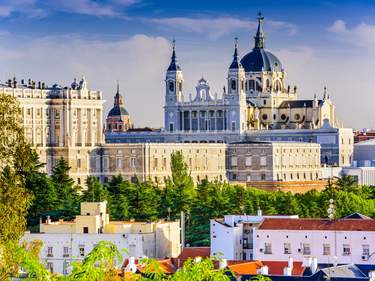
Made for Madrid
Take to the Spanish capital for art, culture and a taste of life in the city, Madrileño-style. Explore age-old churches and pretty plazas, stroll through the lovely Buen Retiro Park and visit captivating Toledo. Then, come sundown, discover the city's vibrant barrios and lively nightlife.
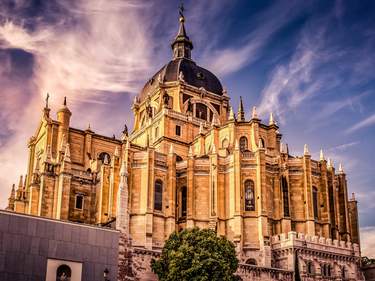
A Madrid getaway
Spend four days discovering the wonders of Spain's capital Madrid: from fascinating museums like El Prado and Reina Sofia over exploring unknown corners with your private guide to a day trip to the surroundings, this itinerary packs the best of Madrid.

Hidden Spain - From Barcelona to Basque Country
Do you want to explore highlights in Spain while staying in nature at the same time? Look no further. Start your Spanish adventure in Barcelona before heading off to the mountains - drive your rental car to Andorra and further on to Basque Country. Decide between driving yourself or guided tours.
1: San Cecilio Fiesta in Granada’s traditionally gypsy quarter of Sacromonte.
Week before Lent: Carnaval An extravagant week-long event in all the Andalucian cities. Cádiz , above all, celebrates, with uproarious street parades, fancy dress and satirical music competitions.
March/April
Easter: Semana Santa (Holy Week) You’ll find memorable processions of floats and penitents at Seville , Málaga , Granada and Córdoba , and to a lesser extent in smaller towns such as Jerez, Arcos, Baeza and Úbeda. All culminate with dramatic candlelight processions at dawn on Good Friday, with Easter Day itself more of a family occasion.
Last week of April: Feria de Abril Week-long fair at Seville : the largest fair in Spain.
First week: Cruces de Mayo Celebrated in Córdoba and includes a “prettiest patio” competition in a town full of prize examples.
Early May (week after Feria de Abril): Feria del Caballo A somewhat aristocratic horse fair is held at Jerez de la Frontera .
Pentecost: Romería del Rocío Horse-drawn carriages and processions converge from all over the south on El Rocío ( Huelva ).
Last week: Feria de la Manzanilla Prolonged binge in Sanlúcar de Barrameda to celebrate the town’s major product, with flamenco and sporting events on the river beach.
13: San Antonio Fiesta at Trevélez (Las Alpujarras) with mock battles between Moors and Christians.
Third week The Algeciras Feria Real is another major event of the south.
End June/early July: International Festival of Music and Dance Major dance/flamenco groups and chamber orchestras perform in Granada’s Alhambra palace, Generalife and Carlos V palace.
Early July: International Guitar Festival Brings together top international acts from classical, flamenco and Latin American music in Córdoba .
End of month: Virgen del Mar Almería’s major annual shindig, with parades, horseriding events, concerts and lots of drinking.
First week The first cycle of horse races along Sanlúcar de Barrameda’s beach, with heavy official and unofficial betting; the second tournament takes place two weeks later.
5: Trevélez observes a midnight romería to Mulhacén.
13–21: Feria de Málaga One of Andalucía’s most enjoyable fiestas for visitors, who are heartily welcomed by the ebullient malagueños.
15: Ascension of the Virgin Fair With casetas (dance tents) at Vejer and elsewhere.
Noche del Vino Riotous wine festival at Competa ( Málaga ).
23–25: Guadalquivir festival Bullfights and an important flamenco competition, at Sanlúcar de Barrameda.
September & October
First two weeks Sept: Feria de Ronda Ronda’s annual feria, with flamenco contests and Corrida Goyesca – bullfights in eighteenth-century dress.
First/second week Sept: Vendimia Celebrating the vintage at Jerez.
27–Oct 1: Feria de San Miguel In Órgiva (Las Alpujarras) featuring traditional dancing and a huge paella cook-up.
If you're planning a trip to Spain, don't miss our Spain itineraries and information on how to get there .
The most striking feature of Andalucía’s cuisine is its debt to the Moors. In their long period of hegemony over the region the North Africans introduced oranges and lemons as well as spices such as cumin and saffron and refined techniques for growing olives and almonds. Their chilled soups such as ajo blanco (made with ground almonds) and gazpacho are still a welcome refresher in high summer temperatures. Of course, gazpacho is today made with tomatoes and green peppers, both brought back from the Americas by Columbus, who sailed from Andalucía.
The region is also the birthplace of tapas, the classic tidbits that Spaniards love to tuck into as they drink. Between 6 and 9pm most evenings city bars are humming with conversations of tapeadores (as aficionados are termed). One of Andalucía’s favourite tapas is jamón serrano, mountain-cured ham from prime producing zones in the Sierra de Aracena and the Alpujarras. The most prized ham of all is jamón ibérico from black Iberian pigs, and in the curing village of Jabugo this is graded into five levels of quality with the very best accorded five jotas or “j’s” (for Jabugo). If you can afford it, the taste is mouthwateringly delicious and far superior to the standard white-pig jamón sold in supermarkets.
Andalucía is also known in Spain as the zona de los fritos (fried food zone) and fried fish is a regional speciality. Chanquetes (whitebait), sardines, calamares and boquerones (anchovies) are all andaluz favourites and the seafood chiringuitos (beach restaurants) of Málaga are famous for their fritura malagueña (assorted fried fish).
Inland, Andalucía is a mountainous region and the specialities here are carnes de caza (game). Jabalí (wild boar), venado (venison), cabrito (kid) and perdiz (partridge) all make memorable meals in the hands of a competent chef.
The wine par excellence of Andalucía – particularly to accompany tapas – is fino (dry sherry) from Jerez de la Frontera , although nearby Sanlúcar de Barrameda’s manzanilla and montilla (produced in Córdoba ) are similar and display their own prized characteristics.
Fifty kilometres northwest of Málaga lies the deep, rugged canyon of the Río Guadalhorce, known as the Garganta del Chorro. It’s an amazing place – an immense five-kilometre-long cleft in a vast limestone massif, which has become Andalucía’s major centre for rock-climbers. The gorge’s most stunning feature, however, is a concrete catwalk, El Camino del Rey, which threads the length of the gorge, hanging precipitously halfway up its side. Built in the 1920s as part of a hydroelectric scheme, it was one of the wonders of Spain, but it has fallen into disrepair, and access to the catwalk has finally been cut at each end of the gorge, making it impossible to reach without a guide and climbing gear. It’s still possible to explore the rest of the gorge, however, and get a view of the camino by doing the walk described in The walk from El Chorro. A glimpse of both gorge and camino can also be had from any of the trains going north from Málaga – the line, slipping in and out of tunnels, follows the river for a considerable distance along the gorge, before plunging into a last long tunnel just before its head.
Antequera, some 55km north of Málaga on the main rail line to Granada , is an undistinguished, modern town, but it does have peripheral attractions in a number of fine churches, a group of prehistoric dolmen caves among the most important on the Spanish peninsula, and a fine old Plaza de Toros.
Approaching Antequera along the old road from Málaga (MA424) via Almogía and Villenueva de la Concepción, you pass the entrance to the popular natural park famed for its haunting rock sculptures. Parque Natural de El Torcal, 13km south of Antequera, is one of the most geologically arresting of Spain’s natural parks. A massive high plateau of glaciated limestone tempered by a lush growth of hawthorn, ivy and wild rose, it can be painlessly explored using the three walking routes that radiate from the centre of the park, outlined in a leaflet available from the Centro de Visitantes.
The eastern section of the Costa del Sol ribbons east of the city of Málaga as far as Almería , and is generally uninspiring. Inland there are plenty of attractive sierras to explore but, though far less developed than its twin coastal strip to the west of Málaga , there’s little to tempt you to stop before you reach the twin resorts of Nerja and Almuñécar – which are its saving feature. First, some 40km out of Málaga , comes NERJA, nestling in the foothills of the Almijara range. This was a village before it was a resort, so it has some intrinsic character, and villa development has been shaped around it.
The focus of the whitewashed old quarter is the Bálcon de Europa, a striking palm-fringed belvedere overlooking the sea. The beaches flanking this are also reasonably attractive, with a series of quieter coves within walking distance. There are plenty of other great walks around Nerja, too, well documented in the turismo’s own leaflets; or, at Smiffs Bookshop, c/Almirante Ferrandiz 10, you can buy individual leaflets detailing walks in the area by local resident and hiker Elma Thompson.
Book a Nerja and Frigiliana Tour Day Tour
The lively resort of Almuñécar is marred by a number of towering holiday apartments, and the rocky grey-sand beaches are rather cramped, but the esplanade behind them, with palm-roofed bars (many serving free tapas with each drink) and restaurants, is fun, and the old quarter – clustered around a sixteenth-century castle – attractive. The two main beaches, the Playa San Cristóbal and the Playa Puerta del Mar are separated by the towering headland of the Peñon del Santo.
West of Málaga – or more correctly, west of Málaga airport – the real Costa del Sol gets going, and if you’ve never seen this level of tourist development, it’s quite a shock. These are certainly not the kind of resorts you could envisage anywhere else in Europe. The 1960s and 1970s hotel and apartment tower-blocks were followed by a second wave of property development in the 1980s and 1990s, this time villa homes and leisure complexes, funded by massive international investment. It’s estimated that 300,000 foreigners now live on and around the Costa del Sol, the majority of them British and other Northern Europeans, though marina developments such as Puerto Banús have also attracted Arab and Russian money.
Approached in the right kind of spirit, it is possible to have fun in resorts like Torremolinos, Fuengirola and, at a price, in Marbella. But if you’ve come to Spain to be in Spain, put on the shades and keep going at least until you reach Estepona.
Book tickets and tours in the Costa del Sol
Algeciras occupies the far side of the bay from Gibraltar , spewing out smoke and pollution in the direction of the Rock. The last town of the Spanish Mediterranean, it must once have been an elegant resort; today, it’s unabashedly a port and industrial centre, its suburbs extending on all sides. When Franco closed the border with Gibraltar at La Línea it was Algeciras that he decided to develop to absorb the Spanish workers formerly employed in the British naval dockyards, thus breaking the area’s dependence on the Rock.
Most travellers are scathing about the city’s ugliness, and unless you’re waiting for a bus or train, or heading for Morocco, there’s admittedly little reason to stop. Yet some touch of colour is added by the groups of Moroccans in transit, dressed in flowing jallabahs and slippers, and lugging unbelievable amounts of possessions. Algeciras has a real port atmosphere, and even passing through it’s hard to resist the urge to get on a boat south, if only for a couple of days in Tangier. Once you start to explore, you’ll also discover that the old town has some very attractive corners that seem barely to have changed in fifty years, especially around Plaza Alta.
Ronda has good transport connections in most directions. Almost any route to the north or west is rewarding, taking you past a whole series of White Towns, many of them fortified since the days of the Reconquest from the Moors – hence the mass of “de la Frontera” suffixes.
Perhaps the best of all the routes, though a roundabout one, and tricky without your own transport, is to Cádiz via Grazalema, Ubrique and Medina Sidonia. This passes through the spectacular Parque Natural Sierra de Grazalema before skirting the nature reserve of Cortes de la Frontera (which you can drive through by following the road beyond Benaoján) and, towards Alcalá de los Gazules, running through the northern fringe of Parque Natural de los Alcornocales, which derives its name from the forests of cork oaks, one of its main attractions and the largest of its kind in Europe.
The longest of Spain’s mountain ranges, the Sierra Morena extends almost the whole way across Andalucía – from Rosal on the Portuguese frontier to the dramatic pass of Despeñaperros, north of Linares. Its hill towns marked the northern boundary of the old Moorish Caliphate of Córdoba , and in many ways the region still signals a break, with a shift from the climate and mentality of the south to the bleak plains and villages of Extremadura and Castilla-La Mancha. The range is not widely known – with its highest point a mere 1110m, it’s not a dramatic sierra – and even Andalucians can have trouble placing it.
Aracena and around
Some 90km northwest of Seville , Aracena is the highest town in the Sierra Morena with sharp, clear air, all the more noticeable after the heat of the city. A substantial but pretty place, it rambles partly up the side of a hill topped by the Iglesia del Castillo, a Gothic-Mudéjar church built by the Knights Templar around the remains of a Moorish castle. The town is flanked to the south and west by a small offshoot of the Sierra Morena – the Sierra de Aracena – a wonderfully verdant corner of Andalucía with wooded hills and villages with cobbled streets.
Gruta de las Maravillas
Although the church is certainly worth the climb, Aracena’s principal attraction is the Gruta de las Maravillas, the largest and arguably the most impressive cave in Spain. Supposedly discovered by a local boy in search of a lost pig, the cave is now illuminated and there are guided tours as soon as a couple of dozen or so people have assembled; to protect the cave there’s now a strict limit of 35 persons per visit. At weekends and holiday periods, try to visit before noon – coach parties with advance bookings tend to fill up the afternoon allocation. On Sunday, there’s a constant procession, but usually plenty of time to gaze and wonder. The cave is astonishingly beautiful, and funny, too – the last chamber of the tour is known as the Sala de los Culos (Room of the Buttocks), its walls and ceiling an outrageous, naturally sculpted exhibition, tinged in a pinkish-orange light.
The king of hams
Surrounding Aracena is a scattering of attractive but economically depressed villages, most of them dependent on the jamón industry and its curing factory at Jabugo. Jamón serrano (mountain ham) is a tapa or bocadillo standard throughout Spain, and some of the best, jamón de bellota (acorn-fed ham), comes from the Sierra de Aracena, where herds of sleek black pigs grazing beneath oak trees are a constant feature. In October, the acorns drop and the pigs, waiting patiently below, gorge themselves, become fat and are promptly whisked off to be slaughtered then cured in the dry mountain air. The meat of these black pigs is exceptionally fatty when eaten as pork but the same fat that marbles the meat adds to the tenderness during the curing process. This entails first of all covering the hams in coarse rock or sea salt to “sweat”, after which they are removed to cool cellars to mature for up to two years. Jamón serrano from mass-produced white pigs is matured for only a few weeks, hence the incomparable difference in taste. At Jabugo the best of the best is then further graded from one to five jotas (the letter “J” for Jabugo) depending on its quality. A whole leg of cinco jotas jamón will set you back anything from €250 to €350. The turismo can provide details of where to sample and buy.
The Costa de la Luz
Stumbling on the villages along the Costa de la Luz, between Algeciras and Cádiz , is like entering a new land after the dreadfulness of the Costa del Sol. The journey west from Algeciras seems in itself a relief, the road climbing almost immediately into rolling green hills, offering fantastic views down to Gibraltar and across the Strait to the just-discernible white houses and tapering minarets of Moroccan villages.
Beyond, the Rif mountains hover mysteriously in the background, and on a clear day, as you approach Tarifa, you can distinguish Tangier on the edge of its crescent-shaped bay. Beyond Tarifa lies a string of excellent golden-sand beaches washed by Atlantic breakers and backed by a clutch of low-key resorts such as Conil. Inland, the haunting Moorish hill town of Vejer de la Frontera beckons, while set back from the sea at Bolonia is the ancient Roman settlement of Baelo Claudia.
Things to do in Costa de la Luz
As opposed to many other Costas in Spain, Costa de la Luz sees high-rise hotel buildings replaced with sand dunes and pine trees. The beaches are almost unspoiled with golden sands, hidden coves and clear waters. There is plenty to do in the area, whatever your desire.
National Parks
For nature lovers, head to Sierra de Grazalema, famed as the best national park in the Andalucia area for its limestone landscape and exceptional wildlife, including a variety of birds. Estrecho National Park and Bahia de Cadiz are just as impressive, with features such as natural monuments i.e. Tombolo de Trafalgar.
Costa de la Luz translates quite literally to "Coast of Light", so what better way to enjoy the sunshine than on the beach! The coast is divided into two sections from the mouth of the Guadalquivar River to Tarifa and the Southernmost point in Europe. On the South side, kite and windsurfing is major - something to bare in mind if you love watersports.
El Puerto de Santa Maria and Cadiz offer historic old towns to explore in between relaxing on the sands and Conil de la Frontera offers toned down tourism a beach stretching for several kilometres. Tarifa is in the east, along with Baelo Claudia and Atlanterra.
Spain in general is a haven for the retired wishing to live out their days in the sunshine, this, added with the area being a popular holiday destination, has seen the construction of more than 20 golf courses in the area. Alcaidesa Heathland, La Estancia and Villaneuva, to name a few, are any golfers dream.
Whale- and dolphin-watching trips
Tarifa is home to whale-and dolphin-watching excursions in the Strait of Gibraltar , which leave daily from the harbour.
Just 10 km across the bay, EL PUERTO DE SANTA MARÍA is the obvious choice for a day-trip from Cádiz, a traditional family resort for both gaditanos and sevillanos – many of whom have built villas and chalets along the fine Playa Puntillo. This strand is a little way out from town (10–15 minute walk or local bus ride), a pleasant place to while away an afternoon; there are friendly beach bars where for ridiculously little you can nurse a litre of sangría while munching mariscos.
Things to do in El Puerto de Santa Maria
Exploring the cobblestone streets of the old town, surronded by orange trees is a charming way to get to know El Puerto de Maria. The coastal town boasts glorious seafood, with the cuisine offered at almost all restaurants in the area. For a dose of Andaluz history, head to Castillo San Marcos, the famed castle built on the remains of a Moorish moque in 1264. Wine in this region of Spain is particularly tasty, thanks to the ideal climate. The wine route, or Ruta de los Sentidos as the Spainish call it, is exactly what you would expect - a walking route to several wineries that offer tastings and opportunities to learn about the wines as well as Flamenco music and dancing.
If you are seeking-fun as a means to entertain the family, head to Aqualand Bania de Cadiz nearby, the waterpark has rapids, whirlpools and a range of water rides along with a food court - making a great day out.
Beaches in El Puerto de Santa Maria
Playa de Valdelagrana sits between the Guadalete River and Levante Beach, so you can only imagine how beautiful of a destination it is. There is a promenade with restaurants, bars and hotels as well as watersport activities such as kitesurfing and windsurfing. Nearby is Los Torunos Natural Park, ideal for a little mid-afternoon stroll on the boardwalks taking in the wildlife. Nearby beaches include Fuentebravia and Santa Catalina.
Like its neighbour El Puerto, Sanlúcar de Barrameda, 15km to the northwest, also has its sherry connections. Nine kilometres east of Chipiona and set at the mouth of the Guadalquivir, it’s the main depot for manzanilla wine, a pale, dry variety much in evidence in the bars, which you can also sample during visits to the town’s bodegas. Sanlúcar is also the setting for some exciting horse races along the beach in the first and third weeks of August, a great time to be here.
Parque Nacional Coto de Doñana
One of the best things about Sanlúcar is its shell-encrusted river beach and warm waters, just a short walk from the town centre. This is flanked, on the opposite shore, by the beginnings of the Parque Nacional Coto de Doñana, whose vast marshy expanses (strictly regulated access) signal the end of the coast road to the west. The park boasts exceptional flora and fuana, known for its great ecological wealth and population of migrating birds.
Visiting Parque Nacional Coto de Doñana
Access to the park is limited to ensure the wildlife is protected, however, there are boardwalks nearby visitor centres that allow sufficient exploring. Centres with designated walking areas include El Acebuche, La Rocina, Palacio de Acebron and Jose Antonio Valverde.
Cruises at Parque Nacional Coto de Doñana
Visits to the park from Sanlúcar are possible with a boat cruise, which, while it doesn’t allow for serious exploration, is nevertheless a wonderful introduction to this remarkable area. The trip lasts approximately four hours and allows two short, guided walks inside the park to spot wildlife. The Real Fernando – which has a cafetería on board – leaves daily from the Bajo de Guía quay (Mon–Sat June–Sept 10am & 5pm; March, April, May & Oct daily 10am & 4pm; Nov–Feb daily 10am; €16.35, under-12s half-price; booking essential on t956 363 813, w www.visitasdonana.com ).Tickets should be collected (at least 30min before sailing) from the Fábrica de Hielo, Bajo de Guía s/n, the national park’s exhibition centre (daily 9am–8pm) opposite the Real Fernando’s jetty. Also note that binoculars are pretty essential, and, while they can be hired on board, having your own is a distinct advantage.
The direct route from Seville to Córdoba , 135km along the valley of Guadalquivir, followed by the train and some of the buses, is a flat and rather unexciting journey. There’s far more to see following the route just to the south of this, via Carmona and Écija, both interesting towns, and more still if you detour further south to take in Osuna as well. There are plenty of buses along these roads, making travel between the villages easy. Overnighting, too, is possible, with plenty of places to stay – although Carmona is an easy day-trip from Seville .
Osuna (like Carmona and Écija) is one of those small Andalucian towns that are great to explore in the early evening: slow in pace and quietly enjoyable, with elegant streets of tiled, whitewashed houses interspersed with fine Renaissance mansions. The best of these are off the main street, c/Carrera, which runs down from the central Plaza Mayor, and in particular on c/San Pedro, which intersects it; at no.16, the Cilla del Cabildo has a superb geometric relief round a carving of the Giralda, and, farther along, the eighteenth-century Palacio de El Marqués de la Gomera – now a hotel and restaurant – is a stunning Baroque extravaganza. There’s also a marvellous casino on Plaza Mayor, with 1920s Mudéjar-style decor and a grandly bizarre ceiling, which is open to all visitors and makes an ideal place for a cool drink.
Set on a low hill overlooking a fertile plain, CARMONA is a small, picturesque town made recognizable by the fifteenth-century tower of the Iglesia de San Pedro, built in imitation of the Giralda. The tower is the first thing you catch sight of and it sets the tone for the place – an appropriate one, since the town shares a similar history to Seville , less than 30km distant. It was an important Roman city (from which era it preserves a fascinating subterranean necropolis), and under the Moors was often governed by a brother of the Sevillan ruler. Later, Pedro the Cruel built a palace within its castle, which he used as a “provincial” royal residence.
Beyond the mountains, farther south from Granada , lie the great valleys of the Alpujarras, first settled in the twelfth century by Berber refugees from Seville , and later the Moors’ last stronghold in Spain.
The valleys are bounded to the north by the Sierra Nevada , and to the south by the lesser sierras of Lujar, La Contraviesa and Gador. The eternal snows of the high sierras keep the valleys and their seventy or so villages well watered all summer long. Rivers have cut deep gorges in the soft mica and shale of the upper mountains, and over the centuries have deposited silt and fertile soil on the lower hills and in the valleys; here the villages have grown, for the soil is rich and easily worked. The intricate terracing that today preserves these deposits was begun as long as two thousand years ago by Visigoths or Ibero-Celts, whose remains have been found at Capileira.
The Moors and after
When they came to occupy the Alpujarras, the Moors set about improving agricultural techniques and modified the terracing and irrigation in their inimitable way. They transformed the Alpujarras into an earthly paradise, and here they retired to bewail the loss of their beloved lands in al-Andalus, resisting a series of royal edicts demanding their forced conversion to Christianity. In 1568, they rose up in a final, short-lived revolt, which led to the expulsion of all Spanish Moors. Even then, however, two Moorish families were required to stay in each village to show the new Christian peasants, who had been marched down from Galicia and Asturias to repopulate the valleys, how to operate the intricate irrigation systems.
Through the following centuries, the land fell into the hands of a few wealthy families, and the general population became impoverished labourers. The Civil War passed lightly over the Alpujarras: the occasional truckload of Nationalist youth trundled in from Granada , rounded up a few bewildered locals and shot them for “crimes” of which they were wholly ignorant; Republican youths came up in their trucks from Almería and did the same thing. Under Franco, the stranglehold of the landlords increased and there was real hardship and suffering. Today, the population has one of the lowest per capita incomes in Andalucía, with – as a recent report put it – “a level of literacy bordering on that of the Third World, alarming problems of desertification, poor communications and a high degree of underemployment”.
Ironically, the land itself is still very fertile – oranges, chestnuts, bananas, apples and avocados grow here – while the recent influx of tourism is bringing limited wealth to the region. The so-called “High” Alpujarras have become popular with Spanish tourists and also with migrants from northern Europe who have purchased property here; Pampaneira, Bubión and Capileira, all within half an hour’s drive from Lanjarón, have been scrubbed and whitewashed. Though a little over-prettified, they’re far from spoilt, and have acquired shops, lively bars, good, unpretentious restaurants and small, family-run pensiones. Other villages, less picturesque or less accessible, have little employment, and are sustained only by farming.
Top image © Takashi Images/Shutterstock
Discover more places in Spain
- Almería province
- Huelva province
- Jaén province
- Jerez de la Frontera
- Parque Nacional Sierra Nevada
The Rough Guides to Spain and related travel guides
In-depth, easy-to-use travel guides filled with expert advice.

Find even more inspiration here

Planning your own trip? Prepare for your trip
Use Rough Guides' trusted partners for great rates
- Castellar de la Frontera
- Vejer de la Frontera
- Alhama de Granada
- Cazalla de la Sierra
- Arcos de la Frontera
- Rodalquilar
written by Rough Guides Editors
updated 05.06.2024
Ready to travel and discover Spain?
Get support from our local experts for stress-free planning & worry-free travels.
- Where to stay
- Travel advice
Travelling to and Touring in Andalucia
Andalucia has been a favourite destination for sun-seeking travellers for decades and there is no wonder why. Most days are sunny, your luck will need to be out to have planned a stay here and not have seen the sun.
However, there is much more to do in Andalucia than just sit on the beach, even though that is not a bad way to pass a holiday if you want. Below are links to pages on Andalucia.com that you will find very useful when planning to travel in Andalucia.
To see info about general motoring maps of Spain or the Costa del Sol click on the links.
There are 9 international airports which serve as regional gateways. Five are located within Andalucia; Malaga, Seville, Almeria, Granada and Jerez, and four located just outside Andalucia;… More →
Accommodation
If you and your friends or family want to get right back to nature, you'll find a variety of simple, rustic accommodation around rural Andalucia. Usually the cabins are traditionally built from… More →
The number of people who wish to participate in an educational courses while enjoying a holiday break is increasing. Andalucia is an ideal venue for such courses.
Travel transfers offer 24 hour transportation in a rental car with driver. You can book your travel transfers in Andalucia by Internet, even for public holidays. Your driver can meet you as soon… More →
Practicalities
Telephoning from Spain is not difficult. The international direct dial access code is 00. Dial 00 plus the country code plus the area code and phone number. (Don't forget you may need to drop an '… More →

Professional car hire services at Malaga airport. All-inclusive prices, book your car online and pay on arrival - without cancellation fees!
Spain's top holiday destinations for 2024
From city weekends to island escapes, here's where to go in Spain

The country is home to various island groups, too. The Balearics, consisting of Mallorca , Menorca, Ibiza and lesser-visited Formentera, are perfect holiday choices. Ibiza may have a rowdy reputation, but in reality the island has a much more serene side and Dalt Vila, its hilltop old town, is beautiful.
And Mallorca may be a more popular choice, but Menorca is just as captivating, with its charming port towns and rural retreats – we love Villa Le Blanc Gran Meliá on the Santo Tomàs seafront.
Over in the volcanic Canary Islands , there are more sunny Spanish holiday destinations to choose from, including old favourites Lanzarote and Tenerife , the latter of which has a dream hotel for foodies in the form of the Ritz-Carlton Abama .
And in the heart of Andalucia, Hacienda de San Rafael is the perfect base if you're hoping to explore Seville and its imposing Gothic cathedral.
Read on for the best destinations in Spain for a summer holiday.

For a holiday in Spain with a more dramatic than average landscape, try Lanzarote, with its volcanoes, lava fields, black and red earth, and intriguing rock formations. It also has whitewashed houses, palm groves and, of course, beautiful beaches. Away from the coast, don’t miss the charming villages inland.
The island has been designated a Biosphere Reserve by UNESCO – to really appreciate the Mars-like scenery, head into the Timanfaya National Park, or book a trip to the Montañas del Fuego (which means Mountains of Fire) to see the volcanic cones, curious geology and lava fields.
Where to stay: In the smart Playa del Cable area of the island’s capital Arrecife, Hotel Villa Vik is an adults-only boutique retreat where you’ll feel like part of the family.
TUI HOLIDAYS FROM £288
BA HOLIDAYS FROM £291

It’s not hard to see why Mallorca is such a classic Spanish holiday destination for Brits. The island has it all, from a vibrant capital and gorgeous beach resorts, to the spectacular Serra de Tramuntana mountain range, lively port towns such as Sóller and inland villages favoured by artists such as Deià.
Palma has a charming old town, an imposing Gothic cathedral and lots of excellent restaurants. From there, you can catch an old-fashioned tram all the way to Sóller for lunch at one of the restaurants lining the harbour.
Where to stay: A Belmond outpost in Deià in the island’s north-west, La Residencia is one of the most luxurious hotels on Mallorca, with peaceful gardens, a superb spa and several hundred works by local painters.
READ OUR REVIEW AND BOOK
TUI HOLIDAYS FROM £273
BA HOLIDAYS FROM £249

Another island within the Canary archipelago, Tenerife has a landscape that’s as mesmerising and unusual as its counterpart Lanzarote. It’s the biggest of the Canary Islands, which are off the coast of West Africa, and home to the looming Mount Teide, a dormant volcano and the loftiest peak in Spain.
As it’s a volcanic island, some of the beaches have black sand, but there are regular golden shores, too.
Where to stay: The Ritz-Carlton Abama is the ultimate place for fine-dining on Tenerife, since it’s the proud owner of several Michelin stars, spread across its many restaurants, which include Basque and Japanese options.
TUI HOLIDAYS FROM £234
BA HOLIDAYS FROM £329

A cultural city with its own beach, Barcelona is a Spanish holiday destination that lets you combine a city and seaside break. High-brow highlights include the Picasso museum, the art nouveau La Sagrada Familia and Gaudi’s other great Barcelona work, Park Güell.
After winding your way through the Gothic Quarter’s narrow medieval lanes (and its restaurants and bars), you can put your feet up at the beach.
Where to stay: Close to the Passeig de Grácia, Almanac is a perfectly positioned design hotel, with a rooftop pool, bathrooms made with Ibizan marble and free minibars in the guest rooms.
BA CITY BREAKS FROM £149

Another Balearic beauty, Menorca gets slightly less footfall than its neighbours Mallorca and Ibiza, but it shouldn’t be overlooked. Stay at a rustic finca on a farm and enjoy the bucolic backdrop; or check in to one of its many renovated historic hideaways and boutique guesthouses. Menorca’s retty port towns include Mahón and Ciutadella.
This wild, rugged island has a serene, sleepy pace. Enjoy the peaceful pine-lined coast with its sandy beaches and rocky coves, and the island’s towns set above ancient harbours.
Where to stay: Villa Le Blanc Gran Meliá is a five-star resort steps from the sand on the south coast, with white-washed architecture, an infinity pool surrounded by bars and restaurants, and a spa where you can book in for Anne Semonin treatments.
TUI HOLIDAYS FROM £264
BA HOLIDAYS FROM £282

On the mainland, Marbella is one of the major holiday destinations within the southern province of Andalusia. The Costa del Sol resort has a backdrop of the Sierra Blanca mountains and a vast 27-kilometre stretch of shoreline. As well as its beautiful beaches, the area is known for its golf courses.
The coast is also home to the aptly named Golden Mile (a stretch of some serious real estate), which leads down to Puerto Banús marina, with its staggering super-yachts and fancy restaurants.
Where to stay: If you’re aiming to eat well while you’re in town, booking a stay at the Nobu outpost will be a sensible move, especially if you want to enjoy the brand’s famous black cod miso.
TUI HOLIDAYS FROM £400
EXPEDIA HOLIDAYS FROM £372

It may have a somewhat rowdy reputation (which isn’t totally unjustified), but there’s another side to Ibiza, away from the super-clubs (of which there are indeed many) on the San Antonio strip. The island has long-attracted spiritual sorts, here for the magnetism and the sunsets, which are a ritual every evening.
In the hillside Dalt Vila (or Old Town), stroll the cobbled streets, or head to quieter villages, such as Santa Gertrudis, which has brilliant boutiques, traditional bars and excellent restaurants such as Bottega Il Buco.
Where to stay: If you’re here for hedonism in the form of food, book a stay at Oku , which has a superb Japanese restaurant where the chef is known to wander over to your seat to cook tableside. It has a robata grill and a raw bar, as well as a sake selection, for added authenticity.
TUI HOLIDAYS FROM £360
BA HOLIDAYS FROM £353

Often overlooked by tourists for Barcelona, Spain’s capital may not have beaches but it has plenty of landmarks, from its wide boulevards and pristine parks to its incredible culture. At the Prado Museum, visitors can admire works by Spanish masters including Velázquez and Goya.
Another highlight of Madrid is the Plaza Mayor, the city’s main square, which dates back to the 15th century. The grand Royal Palace is also worth a visit – in between tapas pit-stops, of course.
Where to stay: Rosewood Villa Magna is on the Paseo de la Castellana, a major thoroughfare that runs through the city, so you’ll be perfectly placed to explore the main sights.
Gran Canaria

Another holiday destination in Spain that’s part of the far-flung Canary Islands, Gran Canaria has a similar landscape to its neighbours, with black-lava beaches (as well as white-sand ones), a colourful capital, Las Palmas, and a mountainous interior.
For buzzy nightlife, head to Playa del Inglés on the southern coast; or marvel at the scenery of the Maspalomas Dunes overlooking the Atlantic Ocean.
Where to stay: Salobre Hotel Resort & Serenity is a five-star resort that has two 18-hole golf courses – and there are buggies ready for you at reception. The peaceful Maspalomas retreat also has an excellent wellness centre, a shuttle service to whisk you to the beach and cabanas around the pool.
TUI HOLIDAYS FROM £300
BA HOLIDAYS FROM £252

There are lots of lovely places to visit in Andalucia, but Seville is one of the most popular and with good reason. For a start, warm weather is all but guaranteed – the Spaniards don’t call it the ‘Frying Pan’ for nothing.
The city’s old town and former Jewish quarter, Barrio de Santa Cruz, is home to the huge Gothic cathedral, the Alcázar Palace and the La Giralda bell tower. For a lively night out, visit one of Seville’s famous flamenco shows or a hole-in-the-wall bar. And if you’re hoping to stockpile ceramics, stop by the Tirana neighbourhood, which has lots of pottery studios.
Where to stay: An hour or so’s drive south of the city (but worth it for the peace and quiet), Hacienda de San Rafael is an 18th-century hideaway on an olive estate in the Andalusian countryside. It’s roughly halfway between Seville and Jerez, so you’ll be able to visit both cities during your stay.
BA CITY BREAKS FROM £172

@media(max-width: 64rem){.css-o9j0dn:before{margin-bottom:0.5rem;margin-right:0.625rem;color:#ffffff;width:1.25rem;bottom:-0.2rem;height:1.25rem;content:'_';display:inline-block;position:relative;line-height:1;background-repeat:no-repeat;}.loaded .css-o9j0dn:before{background-image:url(/_assets/design-tokens/goodhousekeeping/static/images/Clover.5c7a1a0.svg);}}@media(min-width: 48rem){.loaded .css-o9j0dn:before{background-image:url(/_assets/design-tokens/goodhousekeeping/static/images/Clover.5c7a1a0.svg);}} Travel

This humble Puglian town is Italy's prettiest

The best luxury hotel offers

14 of the most stylish weekend bags

The best Lake Como hotels

18 best Christmas hotels in the UK

Best solo travel destinations
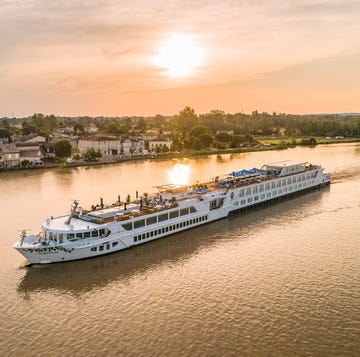
An ultimate guide to Bordeaux river cruises
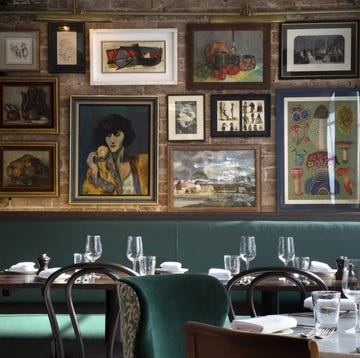
19 restaurants with rooms for gourmet getaways

The best luxury train holidays

The best hotels in Rhodes
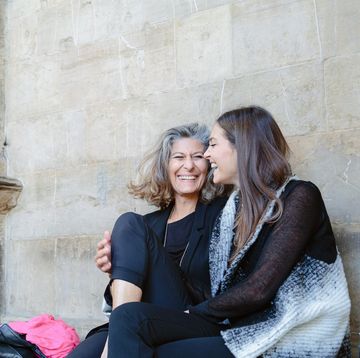
11 of the best mother-daughter holidays for 2024

What is San Juan night in Spain? All you need to know ahead of the fiery celebrations tomorrow

SPAIN’S beaches will be full of bonfires on Sunday night to celebrate El Dia de San Juan.
The feast of San Juan, celebrating St. John the Baptist falls on June 24 but it’s the night before that people let their hair down.
The Bible states that John was born six months before Jesus, so this is why his feast day is exactly six months before Christmas Eve and coincides with the summer solstice.
- Andalusian San Juan: Espetos & Fire Night
- La Noche de San Juan: What is Spain’s midsummer celebration all about?

Fire and water, purification and rejuvenation, turning away from the past and looking forward to the future is what San Juan night is all about, with its roots in pagan commemorations of the solstice.
People celebrate with drink, food and friends while dancing and jumping over roaring bonfires on the beach.
Bonfires are also lit in inland towns and cities- especially in eastern Spain.
The night is epitomised through two elements – fire and water, which are used to cleanse the body and soul.
Tradition has it that if you jump over a bonfire three times on the evening, you will be purified and your problems burned away.
Jumping into the sea at midnight will supposedly wash away evil spirits.
People also wash their faces and feet three times in order to be granted three wishes and for a happy twelve months thereafter.
Some participants write down the things they want to leave behind as well as their wishes for the year ahead, with those pieces then burned in the fire.
The burning of the effigies, or of the jua , is also highly symbolic on San Juan night.
Originally, statues of Judas would be burned, but over time this tradition has broadened to statues of evil things that the world wants rid of.

- Beach parties
- National News
- Start of summer solstice
- The Olive Press
Related Articles

Stunning find in Spain has archeologists excited: 2,400 year old tablet could provide glimpse into the secrets of an ancient lost civilisation

How much do nuns earn in Spain? Woman of God and TikTok star Sister Marta explains
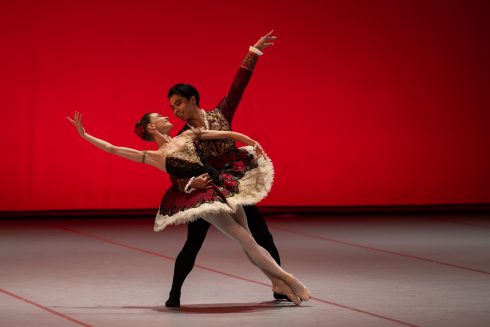
Stars Gala 2024: A Night of Unforgettable Ballet in Alicante

Alex Trelinski
Alex worked for 30 years for the BBC as a presenter, producer and manager. He covered a variety of areas specialising in sport, news and politics. After moving to the Costa Blanca over a decade ago, he edited a newspaper for 5 years and worked on local radio.
Leave a Reply Cancel reply
You must be logged in to post a comment.
This site uses Akismet to reduce spam. Learn how your comment data is processed .

Must-read: Thousands of British homeowners in Spain could be owed €40,000-plus compensation over ‘floor clause’ mortgage scandal – this is how to claim

Talk about vintage! World’s oldest wine is found in Spain’s Andalucia after being preserved for 2,000 years in a Roman sarcophagus
Latest from la cultura.

Caravaggio masterpiece goes on display in Madrid after it was going to be auctioned off for a pittance

British expats and locals demand Marbella bullfight be cancelled: Petition by animal activists gathers 25,000 signatures in just four days
More from the olive press.

Jay Slater latest: Mother of missing British teenager reveals alleged second sighting in Tenerife – as sniffer dogs scour 2,000ft-deep ravine

3 bedroom Apartment for sale in Sa Coma with pool garage – € 499,000

Popular tourist hotspots among Spain’s worst ‘black flag’ beaches
Posted: June 22, 2024 | Last updated: June 22, 2024
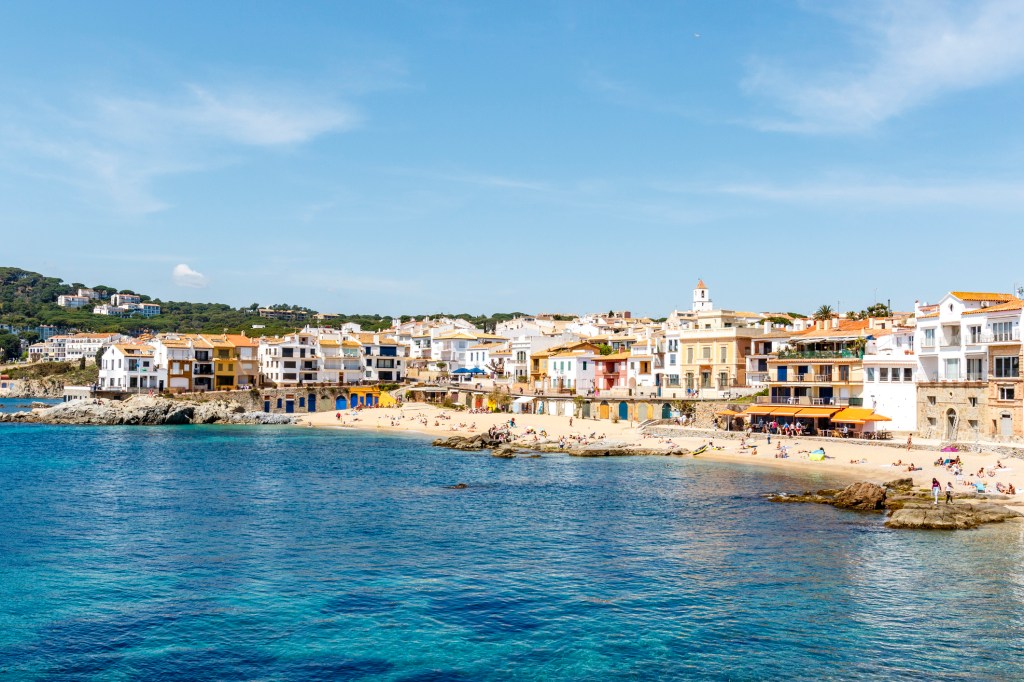
Spain's 48 'black flag' beaches
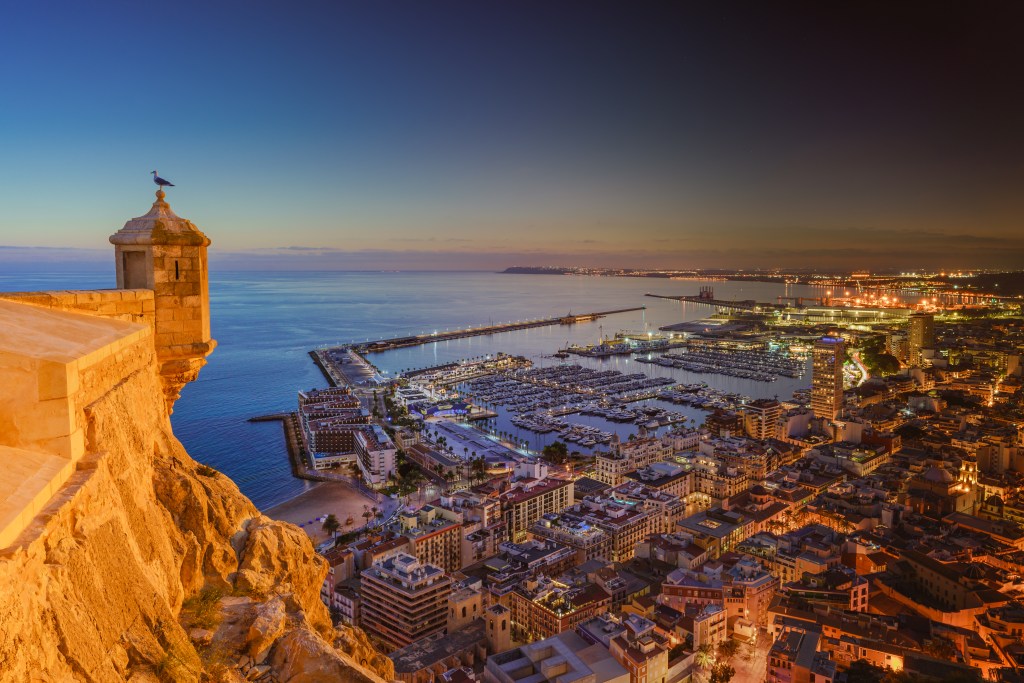
More for You
Proposed extraordinary immigration powers and religious protections face uncertain future
Incredible scenes as coach in tears after embattled Super Netball side scores heroic win
Roosters scrambling for backs as Pauga ponders long ban
The 12 biggest alcohol myths you thought were true
Australians won't see nuclear reactors 'for a decade' when they need energy bill relief 'now'
Vegan Diet Can Improve Heart Health in Just 8 Weeks, Study Reveals
20 popular movies that critics didn’t like
The most unexpected cars ever to be made
‘Rank thuggery’ – England lock slammed after history making red card that rules him out of All Blacks series
Titans massacre woeful Warriors in landmark win
The 15 rarest McDonald’s menu items in the world
PM spent ‘$6.5 billion’ trying to make ‘$275 reduction’ in power bills: David Littleproud
Broccoli's Anti-Cancer Compound Could Have a Whole Other Health Benefit
ACT could ban Canberrans from buying new gas appliances
Greatest supercars that never made it to production
Fix Piriformis Hip Pain And Sciatica - No More Buttock Pain!
I've been applying for jobs for 3 years. I'm only 60 but know my age is to blame
Optician explains why your glasses are affecting your hearing
America's mega shake-up of Olympic tradition
Graham headlines list of Rabbitohs unlikely to return
More From Forbes
Why your best hiking or biking trip might be self-guided active travel.
- Share to Facebook
- Share to Twitter
- Share to Linkedin
You don't always need a guide to appreciate the beauty of the great outdoors and the thrill of ... [+] active travel in top spots such as Icleand.
Sometimes when we travel, having the best guide can make all the difference. Sometimes the best guide is you.
Self-guided active travel has been booming in popularity, and not just because it’s cheaper—and it is much more affordable, even at the luxury level. There are a number of other reasons besides price why if you enjoy hiking or biking trips, you might want to consider going self-guided.
But first a definition: Self-guided is not the same as DIY (Do It Yourself) and in this case does not mean just going it alone like a backpacking or bikepacking or camping trip. These are the same kinds of supported, itinerary-based active trips with hotels and great food that have boomed in popularity in recent years through companies like Backroads, Butterfield & Robinson, Vermont Bicycle Tours (VBT), DuVine, REI Adventures, Sojourn and many others. They include detailed daily directions, hotels, meals and special attractions along the way (winery visits, museums, etc.) and perhaps most importantly, baggage transfers from one hotel to the next so you don’t have to carry more than a day pack (if the itinerary involves moving, which most do).
With well marked trails connecting charming towns in one of the most beautiful landscapes on earth, ... [+] the Dolomites are a top spot for self-guided hiking and biking.
In short, these self-guided trips are just like fully guided trips except for three things: no guide, no other guests besides the ones you choose to travel with, and no obligation to choose pre-set departure dates to join a group. They are ideal for both couples and groups of friends or families who want to spend more time together. And did I mention they cost less?
Self-guided travel has been more popular in Europe for decades, and one of the biggest and best-established companies in the space is UK-based Macs Adventure , whose motto is “Active Travel Led By You.” Unlike other companies that offer self-guided as an option, it is all they do, for the past 20 years, with a broad array of walking and biking trips all around the globe, hundreds of them. Addressing the growing U.S. market, Macs opened an office in Denver that ramped up from 11 to more than 40 employees in less than 12 months, and last year, 2023 trips by Americans jumped 70% over the previous year. Last September was their busiest month ever in terms of travelers. Walking and hiking trips have always been more popular, but cycling grew 90% last year over the previous year and is closing the gap, and Macs now also offers e-bikes which are proving popular.
Samsung Makes Surprise Free Offer For Galaxy S24 Ultra Buyers
In photos: full ‘strawberry moon’ rise marks once-in-18-years event, wwe smackdown results, winners and grades as drew mcintyre destroys cm punk.
Tourissimo is an active travel expert in in all things Italy, and can set up a dream self-guided ... [+] trip through their favorite spots.
“Traditionally, adventure tour travel involved integrating with a group of strangers. As Americans seek to travel for personal discovery (which include celebrating major milestones, personal and spiritual growth), it’s much more meaningful and adaptable when you’re traveling on your own, and not with a group of strangers who are unlikely to share your priorities or values,” said Campbell Levy, spokesperson for Macs, in an email. “Personalized, authentic and immersive experiences are desired today, and self-led perfectly delivers this. And yes, price. Self-guided trips are definitely less expensive, making them more accessible to a broader range of travelers.”
Price is important in travel, but it’s hardly the only appeal of self-guided. I love cycling and you might love cycling, but we probably don’t share the same passions for culture, food, museums, or history. Self-guided allows travelers to be more independent with their time off the bike or hiking trail, to do more of what they enjoy and further customize the experience. Also, some people don’t want to travel with strangers, and self-guided is great for groups of friends or families.
Sometimes a day pack and good instructions are all you need for a memorable hikng trip
It also caters to people who are like minded about fitness, like a group of people who all hike roughly the same pace and mileage. Every guided active trip I have gone on has been very clear and honest about the physical expectations, but almost every time, paying guests ignore this. When I did the Tour du Mont Blanc, an iconic but strenuous long-distance hike through three countries in the Alps, there were people signed up who simply could not manage the physical effort required, forcing the guides to split up, disadvantaging everyone on the trip. Unlike a van supported bike ride, many hiking trips don’t cross roads often and offer no way to cut the trek short once you’ve started.
“Self-guided tours are cheaper than fully-supported tours, but price is not the main motivation for all guests, especially the ones who come to us,” said Heather Dowd, co-founder of Tourissimo , an active travel company based in Turin with a U.S. office, specializing in hiking and cycling trips in Italy, a favorite destination of American travelers. “They tend to be a bit more independent and want to have that time on their own during the day for discovery and adventure while still having the harder logistics (route planning and luggage, etc.) taken care of. They also like that there is someone they can call to assist them in the event of an emergency.”
Macs Adventure is the leading self-guided active travel specialist, and offers several itineraries ... [+] for the Tour du Mont Blanc, one of the world's most iconic hikes.
Macs Adventure has several different trip categories from more budget-oriented to In Comfort and In Style, the most upscale, but as a whole, their trips are quite affordable. For instance, the 8-day Best of the Bernese Oberland in Style through the Swiss Alps has one of their highest accommodations levels and at $3,585 per person is very reasonable in this sector, but quite pricey for the company, which has weeklong trips starting at under a thousand dollars. Cycle the Loire Valley in Style is a 6-day trip with their highest level of luxury accommodations, using 4-star Châteaux hotels, and runs just $2,965. Other categories include Discovery Trips that cover more ground using trains and/or ferries and Pilgrimage Trips for more spiritual journeys.
They also have a focus on “Classic Routes” around the world which are offered in sections or as a whole, with some much longer trips than most active travel companies offer, such as the entire Camino de Santiago pilgrimage route in Spain, 40-days, along with more than a dozen different sections or variations of the Camino in Spain and Portugal. One of the most popular categories is the Tour du Mont Blanc, often considered the best multi-day hike on earth—I’ve done it and it is absolutely fantastic, a Bucket List for avid hikers. The 12-day Complete Tour du Mont Blanc in Comfort, the highest level of accommodations they offer on this route (some sections have no luxury hotels no matter who you go with) is $3,960, while the Complete Tour du Mont Blanc in mountain huts is $3,145 for almost two weeks of travel.
Self-guided can still be luxurious: Butterfield & Robinson uses luxury hotels like the legendary ... [+] Palazzo Avino in Ravello on Italy's Amalfi Coast
Campbell mentioned celebrating major milestones, and that’s exactly what my wife and I did when we booked a self-guided cycling trip in Burgundy with Butterfield & Robinson for our 20 th wedding anniversary. B&R is known as the inventor of luxury guided active travel way back in 1966 and is atop the category in terms of white glove service, posh hotels, VIP experiences and amazing food. They are a fantastic company with a very high repeat rate and loyal customers, but all of that comes at a price, and in my case, the affordability of self-guided was important. B&R is the only company in the top luxury tier of active travel offering a self-guided option , and besides price it appealed to us for several reasons. Burgundy is a classic cycling dream destination, but our anniversary did not coincide well with the scheduled group dates. Also, while it is enjoyable to meet new people and I’ve had a lot of fun on active group trips, for this we wanted a more romantic experience. But we got the same great luxury lodging, food and special experiences along the way.
As an example, the B&R Self-Guided Burgundy trip includes an expert-led wine tasting at the luxury hotel the first night, a meet up with a local guide for a guided tour of medieval Beaune the second day, another private expert-led tasting in a wine cellar the third day, and a farewell dinner at a fancy hotel restaurant off the regular a la carte menu, all included. The only thing missing was someone actually riding with us, and other guests. The first day we were met at our hotel by a local B&R guide who delivered the bikes, did the fitting and gave us an orientation. Today, with GPS loaded routes in bike computers doing self-guided is easier than ever. They pick up and move your luggage every time you change hotels and have 24/7 emergency support available.
Many self-guided active trips are in wine regions like my anniversary ride in Burgundy, and there's ... [+] no skimping on wine tasting
Butterfield focuses their offerings on the places best suited to self-guided travel, with two dozen hiking and cycling trips in Slovenia, Switzerland, Tuscany, Vietnam, Provence, Spain, Croatia, the Dolomites and several others regions of Italy. Perhaps the most iconic trip in cycling is a week in Tuscany, and in this case, B&R’s self-guided version is a thousand dollars per person less ($5,695 vs. $6,695). It’s still pricy, it’s still luxury, but that’s two grand a couple you can use to splurge on anything from daily massages to jewelry while having the same quality active experience.
Among U.S. companies self-guided is still a bit of an obscure niche with some smaller players in it, mainly at the budget end. One exception is Vermont-based Country Walkers , another large well-known active travel company that offers a self-guided option to its “regular” guided trips. It’s all walking and generally a little less physically challenging, and as their website explains, “When you hit the trail on a Self-Guided adventure, you’re armed with route notes written by insiders who know the area. Without a large group of traveling companions, you’ll be able to blend in with locals, make new friends, and discover the highlights that guidebooks miss. Want to know the best local spot for dinner? Check your route notes…” They offer 10 self-guided trips in Scotland, Portugal, Maine, Switzerland, Canada, Ireland, Italy, France and England, with 6-7 day itineraries from $2,345 to $5,195 with most in the $3-4,000 range, and in general these are about $1,000 less than their similar guided trips.
A couple on their own trip with Macs Adventure, riding E-bikes through the olive groves of Tuscany.
Country Walkers’ sister company, Vermont-based VBT Biking Vacations , also offers elf-guided trips across Europe and the U.S., with E-bikes available. A 6-day Italy trip in the Dolomites is $3,795 while the guided option is $4,695.
“We've been getting more and more requests for self-guided tours. It’s not our main product, and a typical self-guided tour isn't really our style. So, what we offer is what we called “Co-pilot Tours,” said Tourissimo’s Dowd. “These are private, unsupported tours, but you're not completely on your own. You get the same attentive customer service before the trip, and at the start you are met by a Tourissimo guide who introduces you to the program and assists with bike fitting. You’re on your own for the rides, but we can arrange meals and activities. Some people have taken one of our fully-supported itineraries and asked for it to be run as self-guided. So, they get all of the services of the fully-supported tour, but without a 24/7 guide and support van. Our Co-pilot tours are cheaper than fully supported tours, but they are not as cheap as other self-guided programs.”
I’ve done both hiking and biking trips with Tourissimo , and highly recommend the company, whose focus is on showing their Italy to visitors, with a deep dive into local food wine, usually including cooking class, and curated family-owned small hotels (in castles and wineries and such) that would be very hard to find on your own.
“Why go self-guided on a Co-Pilot tour?” asked Dowd. “For the independence and adventure, with the harder details taken care of so you can focus on the riding and the fun.”
“Why not go self-guided? Many of our guests choose our full-service tours to enjoy being fully letting go while on vacation. They know the guides are looking out for them and they don't have to make any decisions. Several of the people on our last hiking tour mentioned that they loved the fact that for the week they didn't have to make any decisions. It's freeing and relaxing.”
Either way, active travel makes for a fantastic vacation.
- Editorial Standards
- Reprints & Permissions
Join The Conversation
One Community. Many Voices. Create a free account to share your thoughts.
Forbes Community Guidelines
Our community is about connecting people through open and thoughtful conversations. We want our readers to share their views and exchange ideas and facts in a safe space.
In order to do so, please follow the posting rules in our site's Terms of Service. We've summarized some of those key rules below. Simply put, keep it civil.
Your post will be rejected if we notice that it seems to contain:
- False or intentionally out-of-context or misleading information
- Insults, profanity, incoherent, obscene or inflammatory language or threats of any kind
- Attacks on the identity of other commenters or the article's author
- Content that otherwise violates our site's terms.
User accounts will be blocked if we notice or believe that users are engaged in:
- Continuous attempts to re-post comments that have been previously moderated/rejected
- Racist, sexist, homophobic or other discriminatory comments
- Attempts or tactics that put the site security at risk
- Actions that otherwise violate our site's terms.
So, how can you be a power user?
- Stay on topic and share your insights
- Feel free to be clear and thoughtful to get your point across
- ‘Like’ or ‘Dislike’ to show your point of view.
- Protect your community.
- Use the report tool to alert us when someone breaks the rules.
Thanks for reading our community guidelines. Please read the full list of posting rules found in our site's Terms of Service.

IMAGES
VIDEO
COMMENTS
Experience the real Spain. Let a local expert craft your dream trip. Get started. Articles Latest stories from Andalucía. Read more articles. Filter by interest: All Interests. ... The spirit of southern Spain: reasons to visit Andalucia. Sep 27, 2019 • 6 min read. Architecture. My Andalucia road trip: sights, sounds and tastes of Spain. Sep ...
ESSENTIALS. More than 800 kilometers of coastline, three National Parks and cities such as Seville, Cordoba or Granada, are the letter of presentation of Andalucía, but this land is much more. Discover the essential places you should not miss if you come to Andalucía and enjoy the trip!
Cordoba (1 night) Granada (2 nights) Malaga (1 night) 10 days in Andalucia will allow you to take some more time to explore the region a little more slowly. Rather than add in additional destinations, I've instead expanded on the 7 day itinerary to allow you a better immersion in those places I feel warrant more time.
This southern Spain itinerary is specifically designed as a road trip, and we do strongly believe that driving is the best way to visit Andalucia! From offbeat villages to charming hikes to out-of-the-way beaches, your trip to Andalucia will absolutely be enhanced by having your own set of wheels.
One way to discover the culture of Andalusia is by exploring the sites which have been awarded the UNESCO World Heritage designation. In Granada, you'll see the Alhambra palace, the Generalife gardens and the mediaeval Albaicín neighbourhood; in Cordoba, its historic centre with the great Mosque; in Seville, the cathedral, the Alcázar ...
Andalucia, Spain. Distinctive architecture, sun-drenched resorts and eclectic small towns dot Andalusia, a dry, mountainous region of southern Spain that maintains echoes of its Moorish occupation. Spring and fall bring balmy temperatures, ideal for visiting Seville's cathedral, the world's largest Gothic structure, and the 1,200-year-old ...
Casares is one of the beautiful, white villages in Andalucia blessed with places to visit nearby like the Corominas Dolmens and the ancient Roman baths of Hedionda. It is said that the thermal waters in Hedionda cured Julius Cesar of a skin disease. Whether it's true or not, it's a really cool place to go for a dip.
To give you an idea of the approximate cost of a week in Andalucia, here is what I spent: Accommodation for 2 for one week: 350€. Transportation for 2 (flight from Geneva + train Seville - Cordoba + car rental): 385€. Visits for 2: 85€. Food for 2: 240€. Total for 1 week in Andalusia for 2 people: 1060€.
Andalusia: a beautiful region of Spain, home to mountains and beaches. Discover the best places with this 2-week Andalusia road trip! Andalusia Road Trip: The Ultimate 2-Week Itinerary ... Costs of Traveling in Andalusia. Travel on a budget in Andalusia, from $180 − $380 USD weekly per person, mid-range $460 − $1590 USD, and high-end from ...
Get information on Andalusia Travel Guide - Expert Picks for your Vacation hotels, restaurants, entertainment, shopping, sightseeing, and activities. Read the Fodor's reviews, or post your own.
Day 8: Granada: The Alhambra and Barrio Sacramonte. On day 8 of your 10 day southern Spain itienrary, you land in the beautiful city of Granada. 1. Alhambra. Start your day in Granada at one of the most famous landmarks in Spain, the mighty Alhambra. The Alhambra is the world's last and greatest Moorish fortress.
5. The White Villages. Among all the things to do in Andalucia, you really should do a road trip on the White villages Route. The most famous road of Andalucia will take you to the most beautiful villages and countryside spots. Most of the White Villages, or "Pueblos Blancos", are located uphill.
Updated February 2024. This 7-day Andalucía itinerary without a car is the best destinations to explore in southern Spain. I found myself loving the culture even more than last time, discovering a few new places. Southern Spain is rich in culture — it feels a world away from Northern Spain. With influences from the Moorish times, the ...
23. Historic center of Frigiliana - the charming whitewashed flower village! Frigiliana is considered one of the most beautiful whitewashed villages in Andalusia, Spain. With narrow cobblestone streets, houses, and stairs decorated with flowerpots and plants, this is a charming destination in the South of Spain.
Beautiful Andalucia is an exceptional place in Europe with breath-taking scenery, wonderful history and distinctive culture. It is a place of legends, ancient civilizations, amazing monuments and great food. ... Tel. Spain +34 699 328359 UK +44 7928 495328 Quick Links Home About Us Andalucía Tours Accommodation Prices Contact Booking. Follow ...
Andalusia is unlike anywhere else in Spain, and it's one of my favorite regions. The second-largest autonomous province in Spain boasts sandy beaches, snowy mountain peaks, Europe's only true desert, as well as enormous, vibrant cities, and quaint whitewashed towns perched atop cliffs. ... Lauren Juliff is a published author and travel ...
Andalusia Spain is also well known for its many festivals and fiestas including the Seville April Fair, the El Rocio pilgrimage and the Easter Holy celebrations of Malaga and Seville. ... The Costa del Sol is a beautiful travel destination located within the Andalucia region. The area is known for its stunning beaches and its Mediterranean ...
The Andalusia region is the southernmost region of Spain. Its west side borders Portugal and the east side with Murcia, and the northern part borders the regions of Extremadura and Castilla-La Mancha. Andalusia's coastline is bathed by both the Mediterranean Sea and the Atlantic Ocean. This Spanish region is divided into 17 provinces.
Andalucía. Just as the American image of Germany is Bavaria, the Yankee dream of Spain is Andalucía. This is the home of bullfights, flamenco, gazpacho, pristine whitewashed hill towns, glamorous Mediterranean resorts, three exciting cities (Granada, Sevilla, and Córdoba), and the south coast (Costa del Sol).
1. Things to do in Andalusia: Seville. Seville, the capital of Andalusia, is a must when visiting the South of Spain. Set on the emblematic Guadalquivir river, Sevilla boasts one of the most impressive Morrish and cultural heritage in entire Andalucia. It also used to be one of the richest towns in Spain, as its port was a commercial hub for ...
This site is owned by Apa Digital AG, Bahnhofplatz 6, 8854 Siebnen, Switzerland. Rough Guides® is a trademark owned by Apa Group with its headquarters at 7 Bell Yard London WC2A 2JR, United Kingdom. Plan your visit to Andalusia, Spain with Rough Guides. Read about travel essentials and get inspiration from the best guide to Andalusia.
Traveling to the rhythm of strutting horses and flirtatious flamenco, this tour captures the passion and pride of Spain's Andalucía. Starting with the Moorish roots of Córdoba, you'll be immersed in the culture and history of this remarkable region. We'll ponder millennia-old mysteries at Menga, marvel at Sevilla's flamboyant cathedral, and time-travel through Granada's Alhambra palace. We ...
Travelling to and Touring in Andalucia. Andalucia has been a favourite destination for sun-seeking travellers for decades and there is no wonder why. Most days are sunny, your luck will need to be out to have planned a stay here and not have seen the sun. However, there is much more to do in Andalucia than just sit on the beach, even though ...
And in the heart of Andalucia, Hacienda de San Rafael is the perfect base if you're hoping to explore Seville and its imposing Gothic cathedral. Read on for the best destinations in Spain for a ...
The Olive Press is the English language newspaper for Spain. Local news, in particular, from the Costa del Sol, Andalucia, Alicante, Murcia and Mallorca, plus national news from around Spain.
If you're planning a getaway to Spain this year, you might want to rethink your beach trip. 48 beaches in the popular summer destination have been branded with a 'black flag' by ...
Butterfield focuses their offerings on the places best suited to self-guided travel, with two dozen hiking and cycling trips in Slovenia, Switzerland, Tuscany, Vietnam, Provence, Spain, Croatia ...